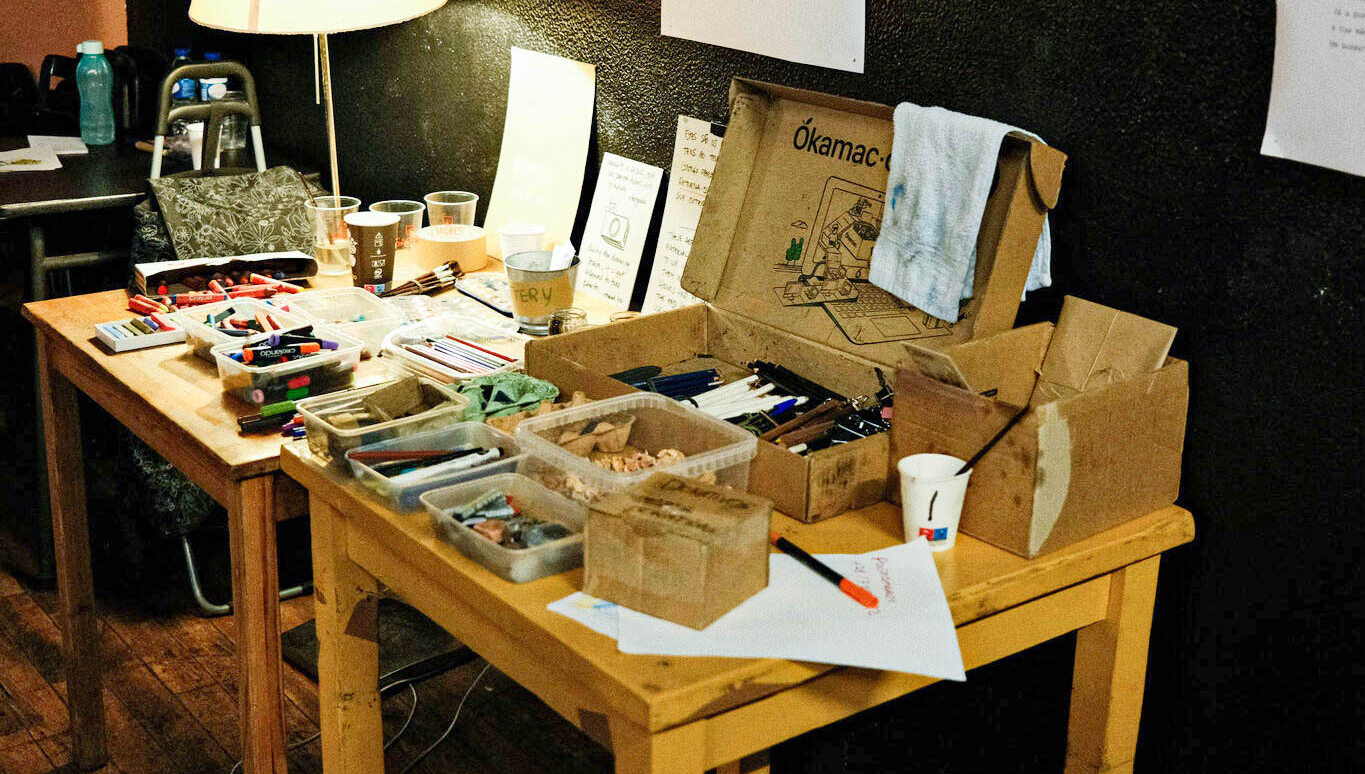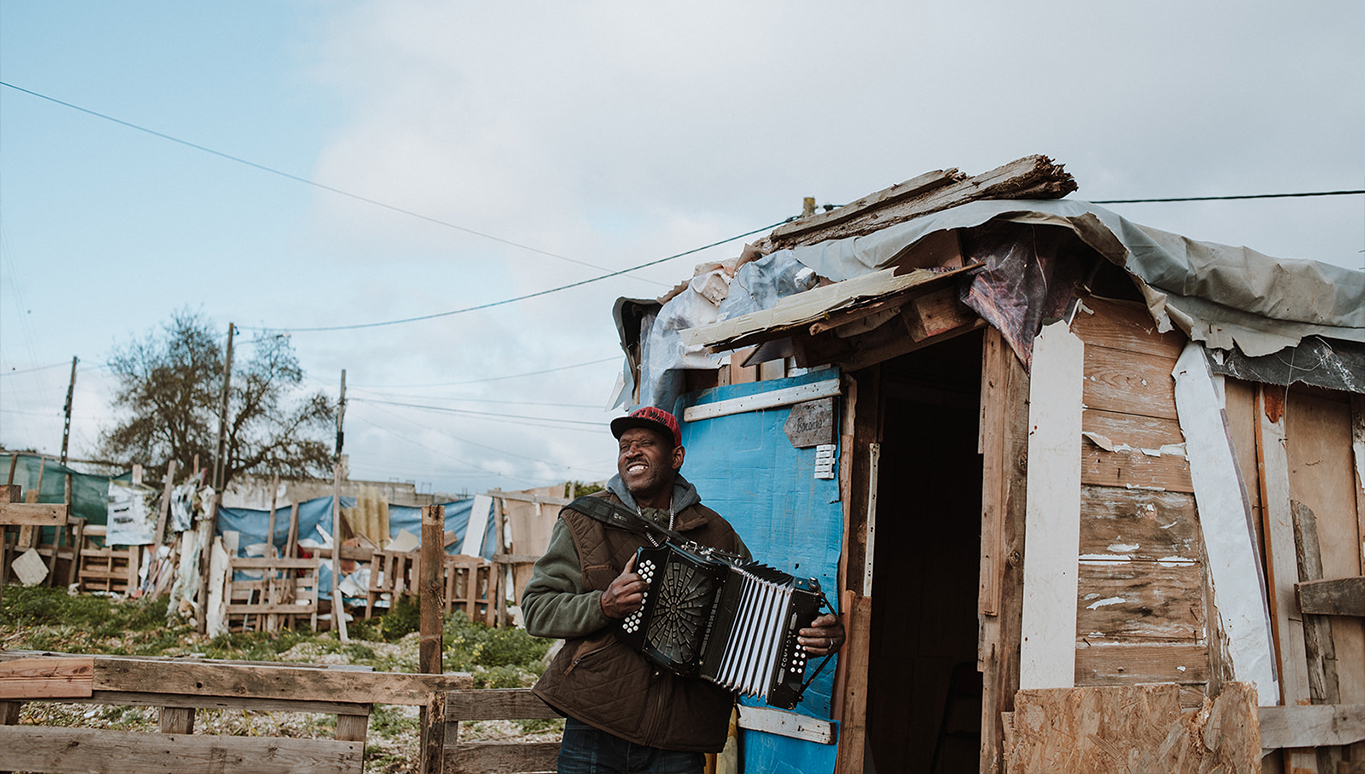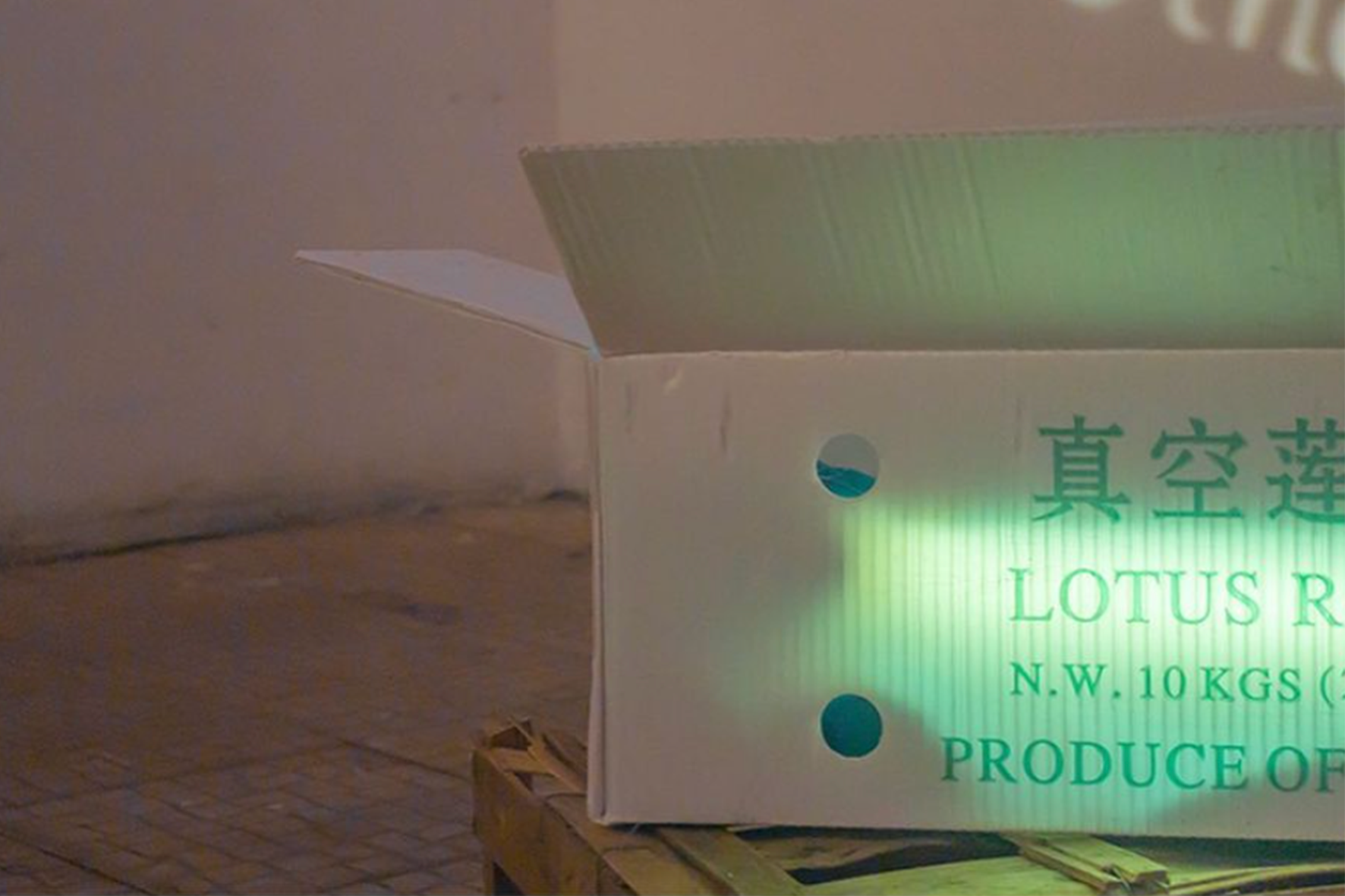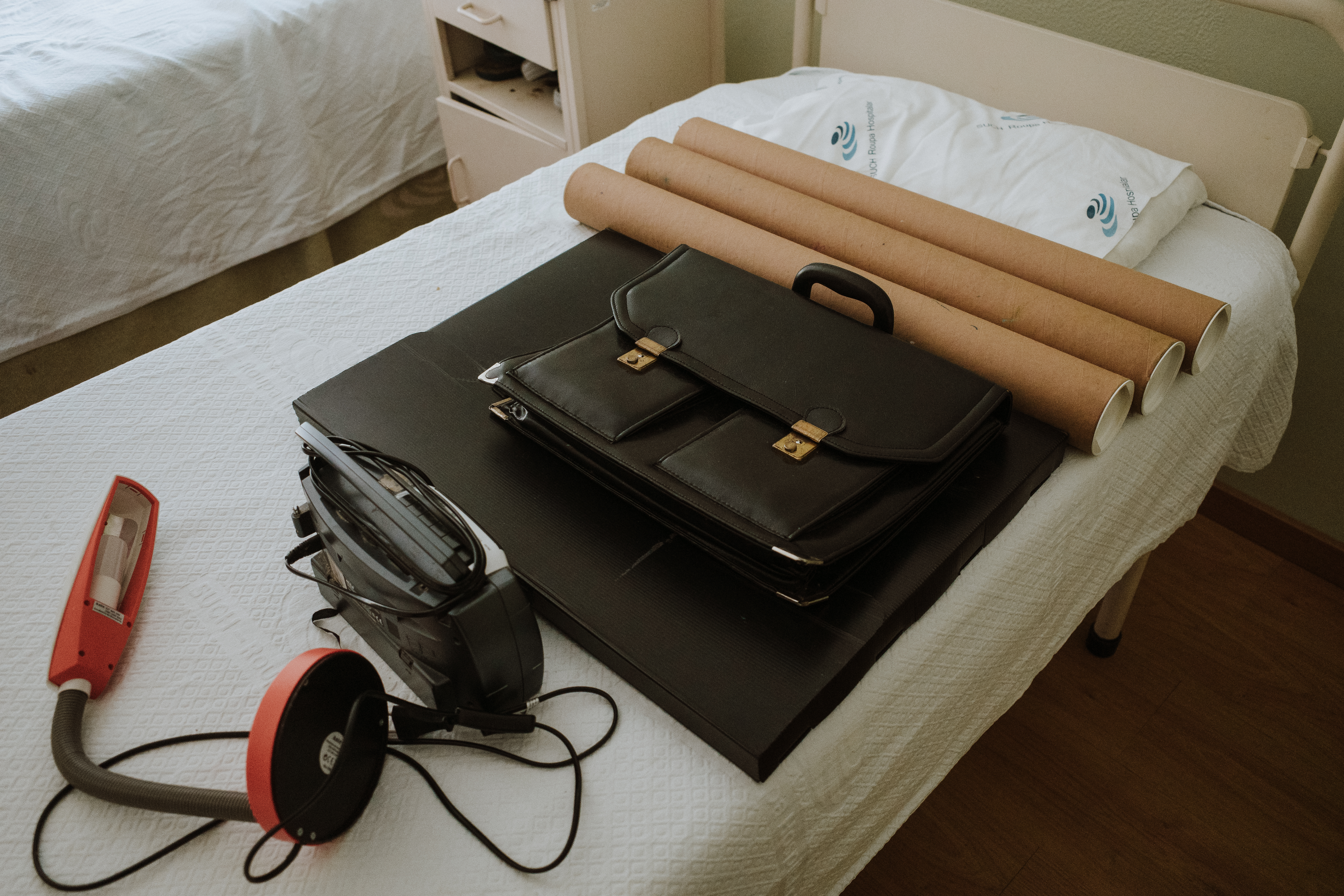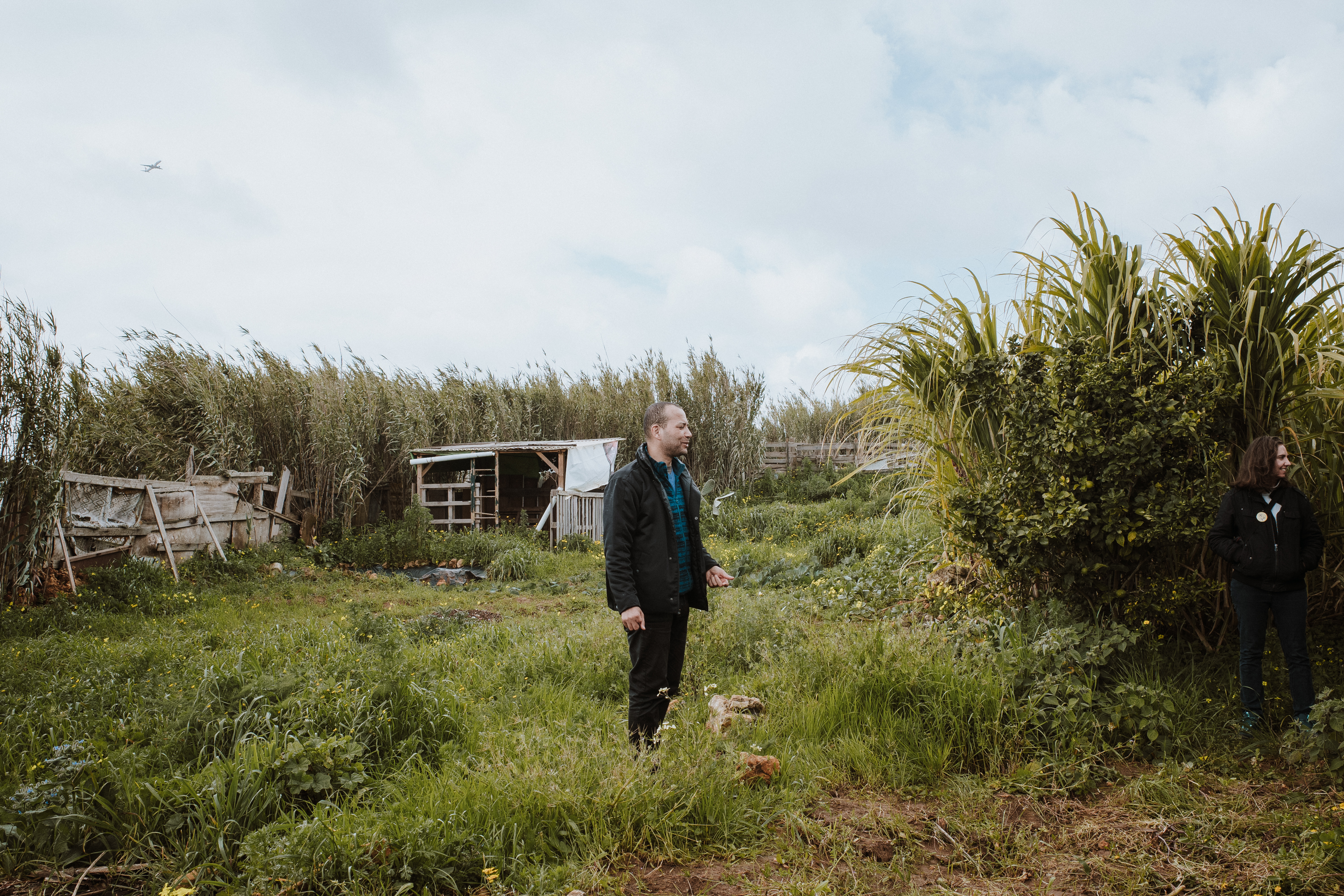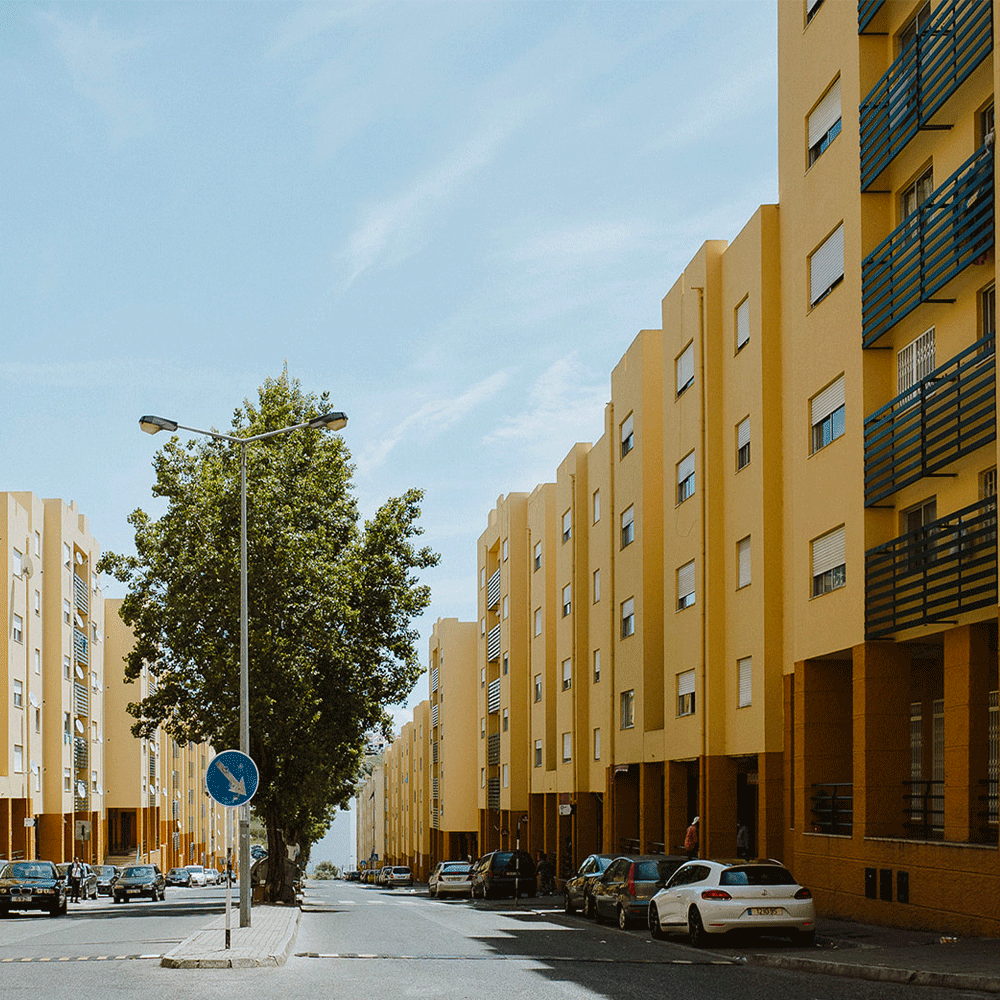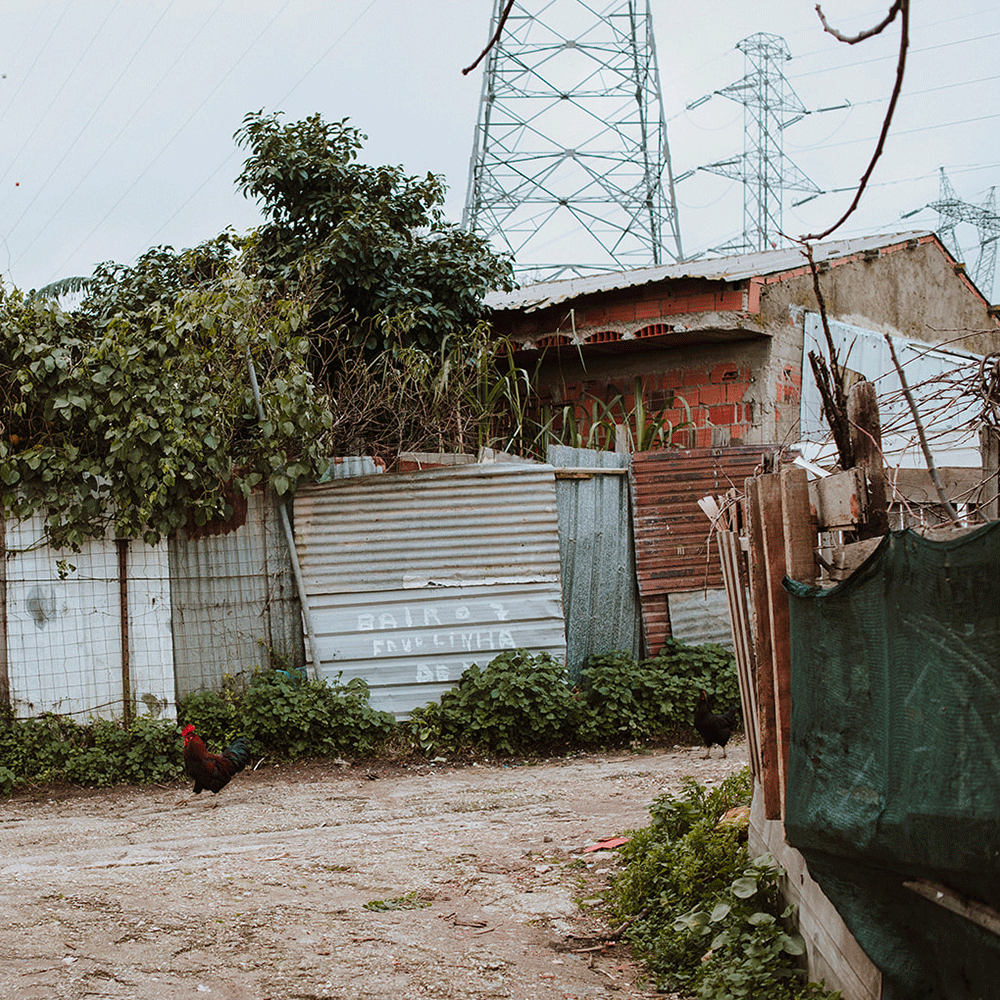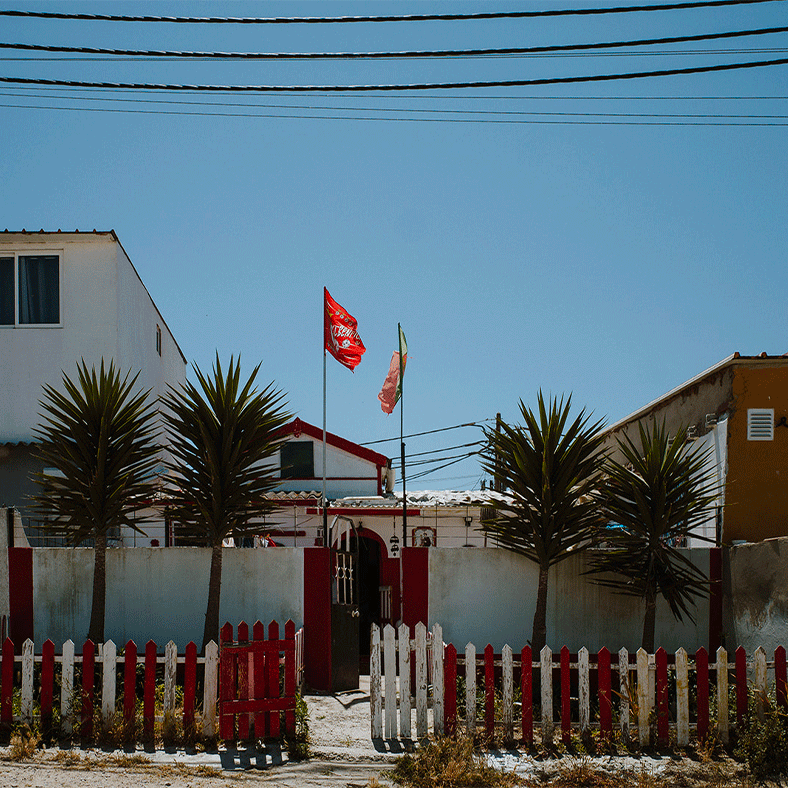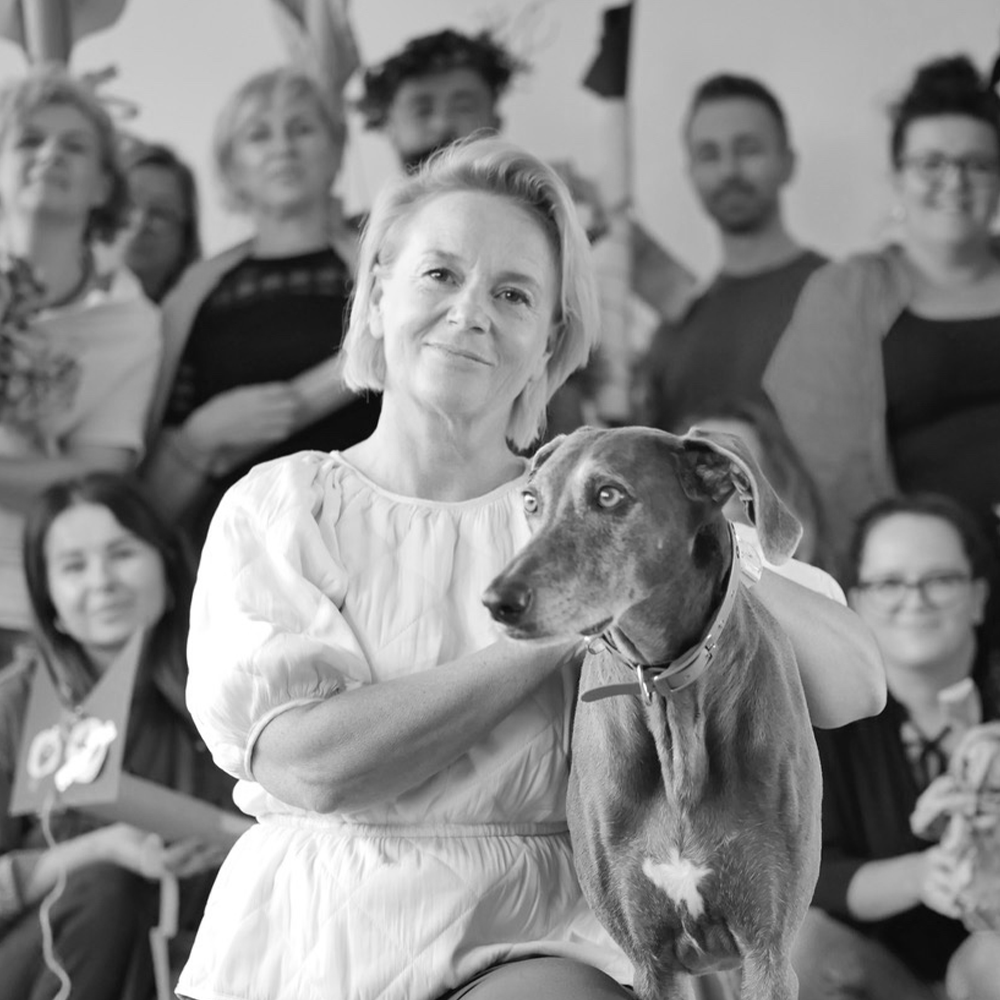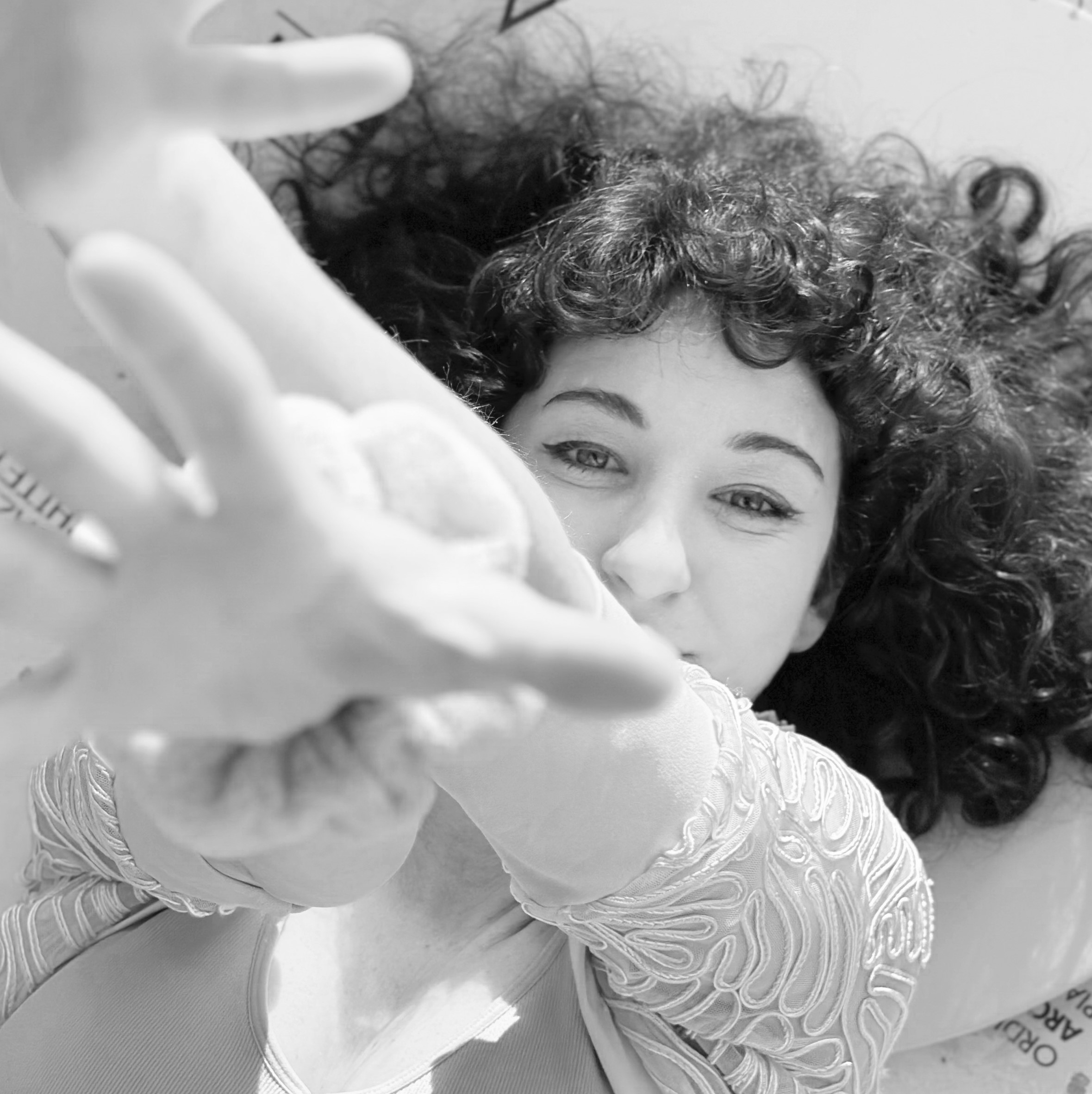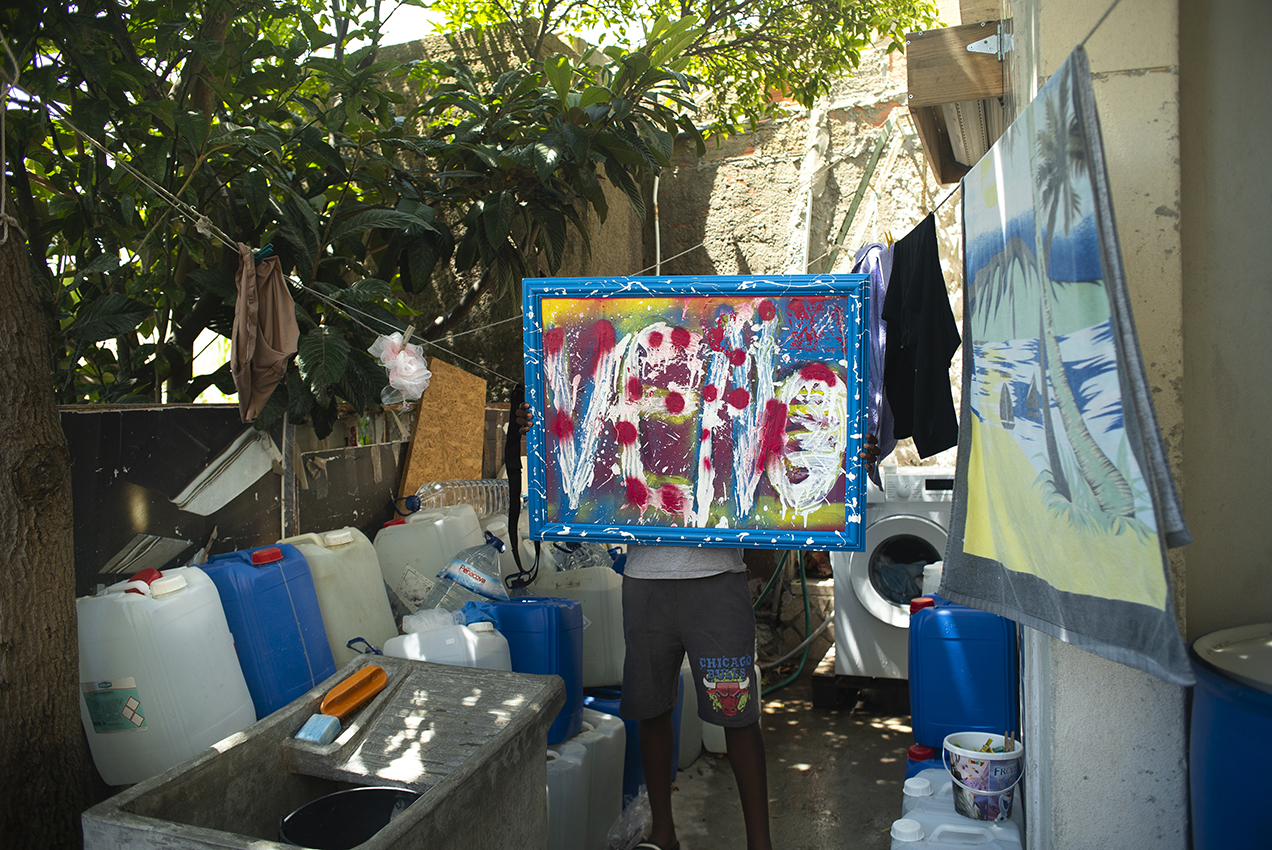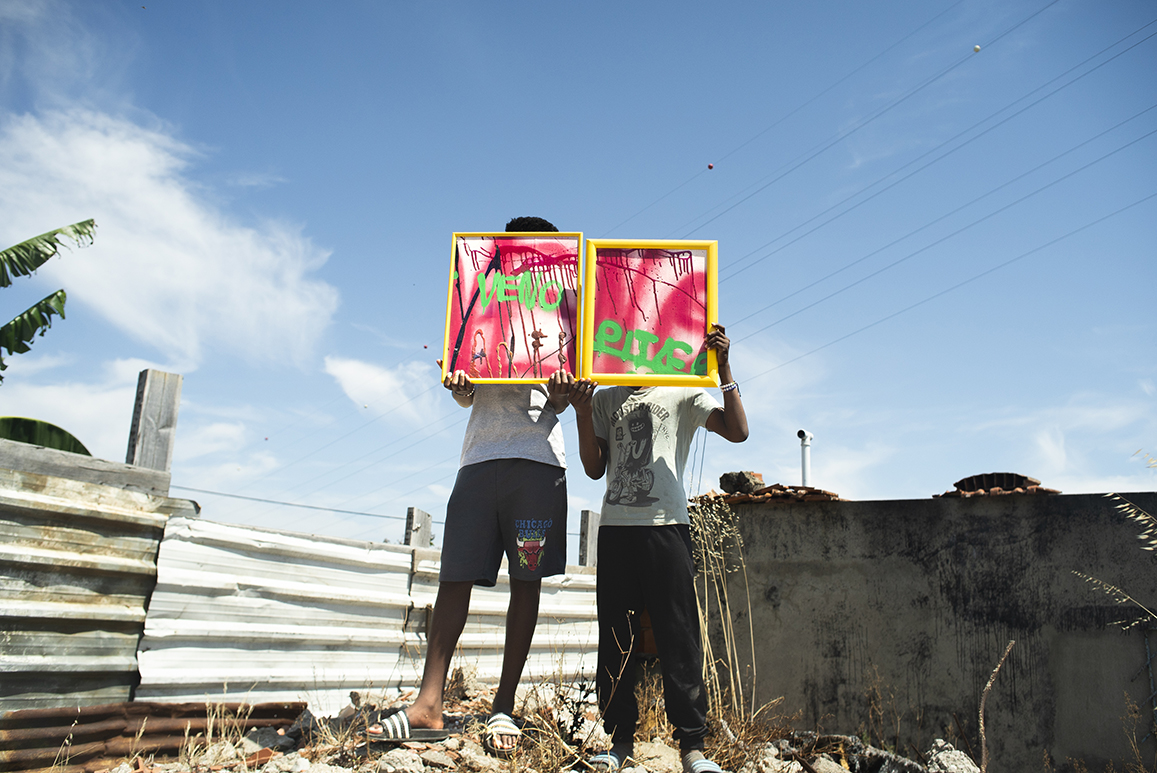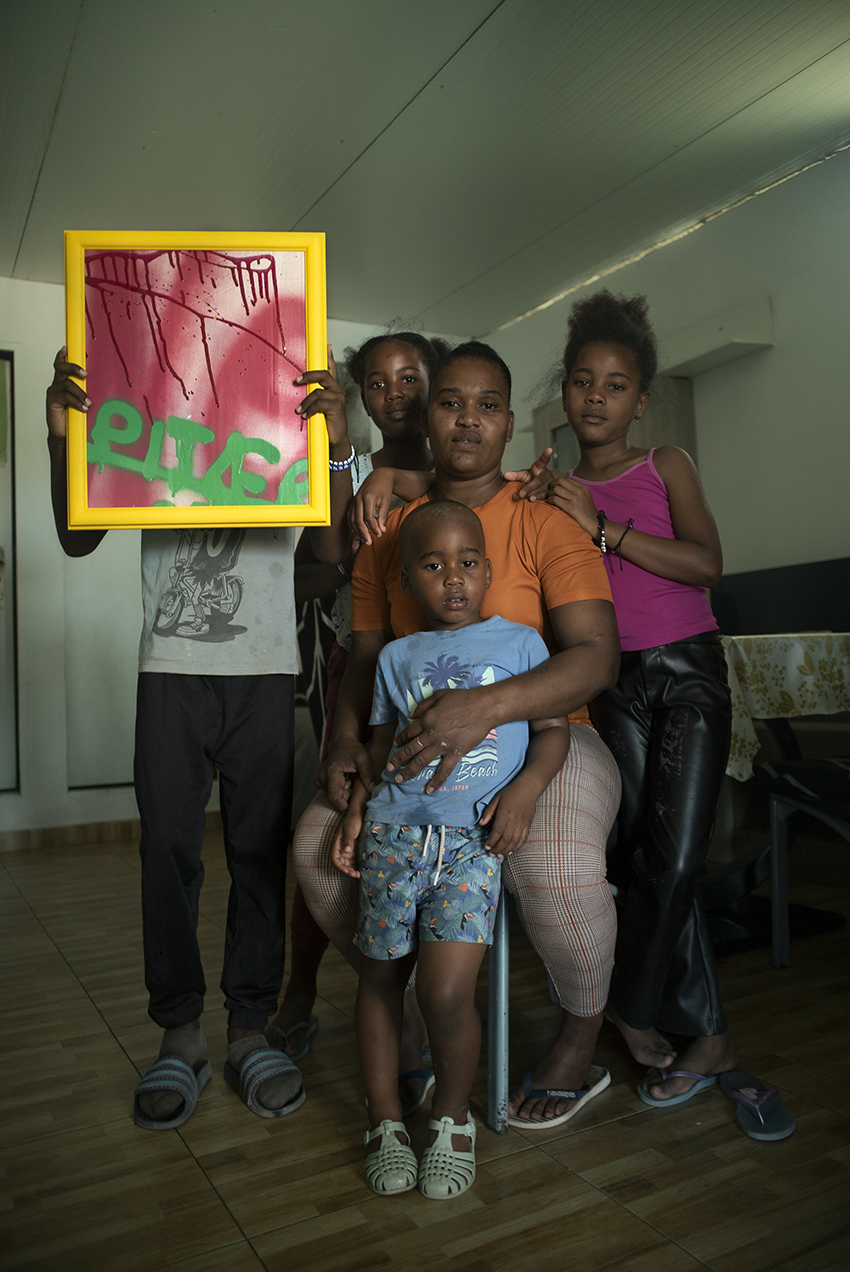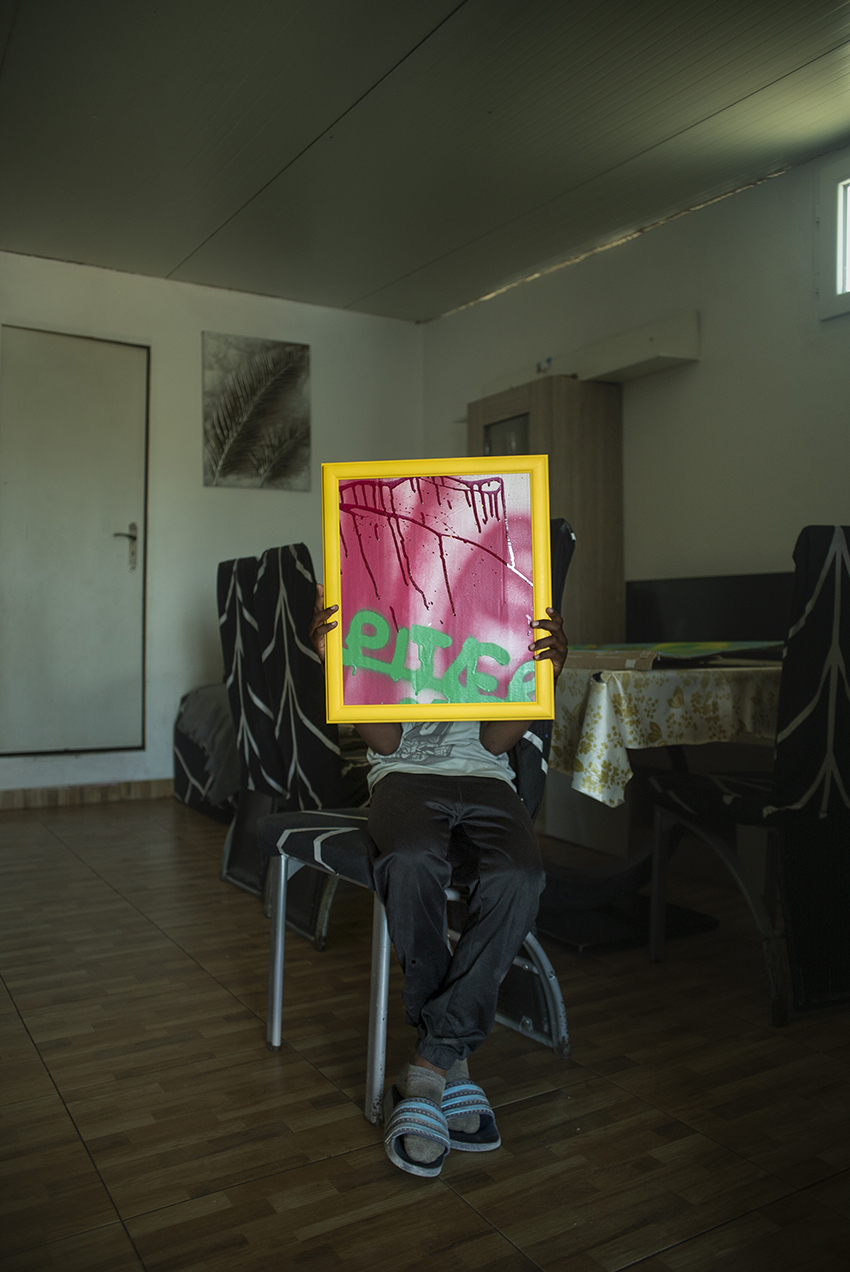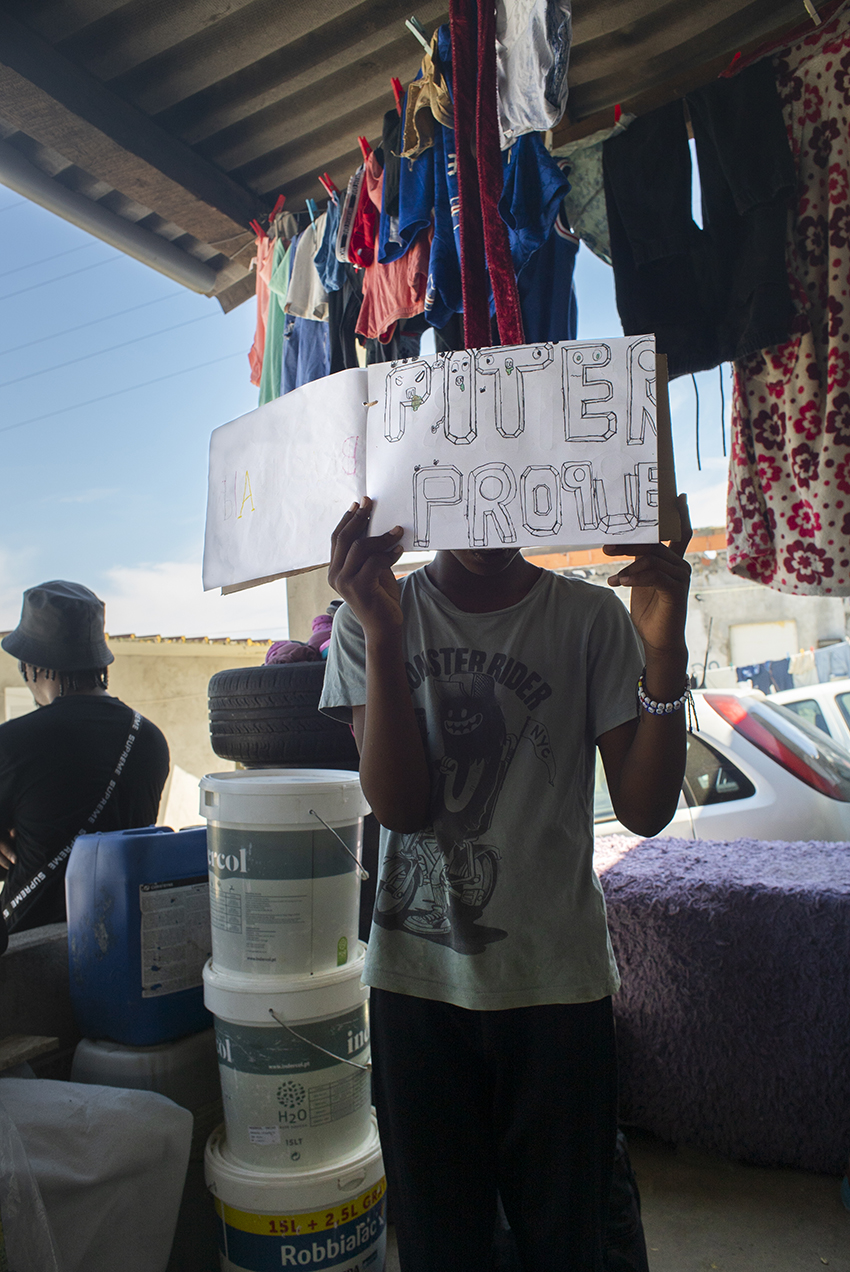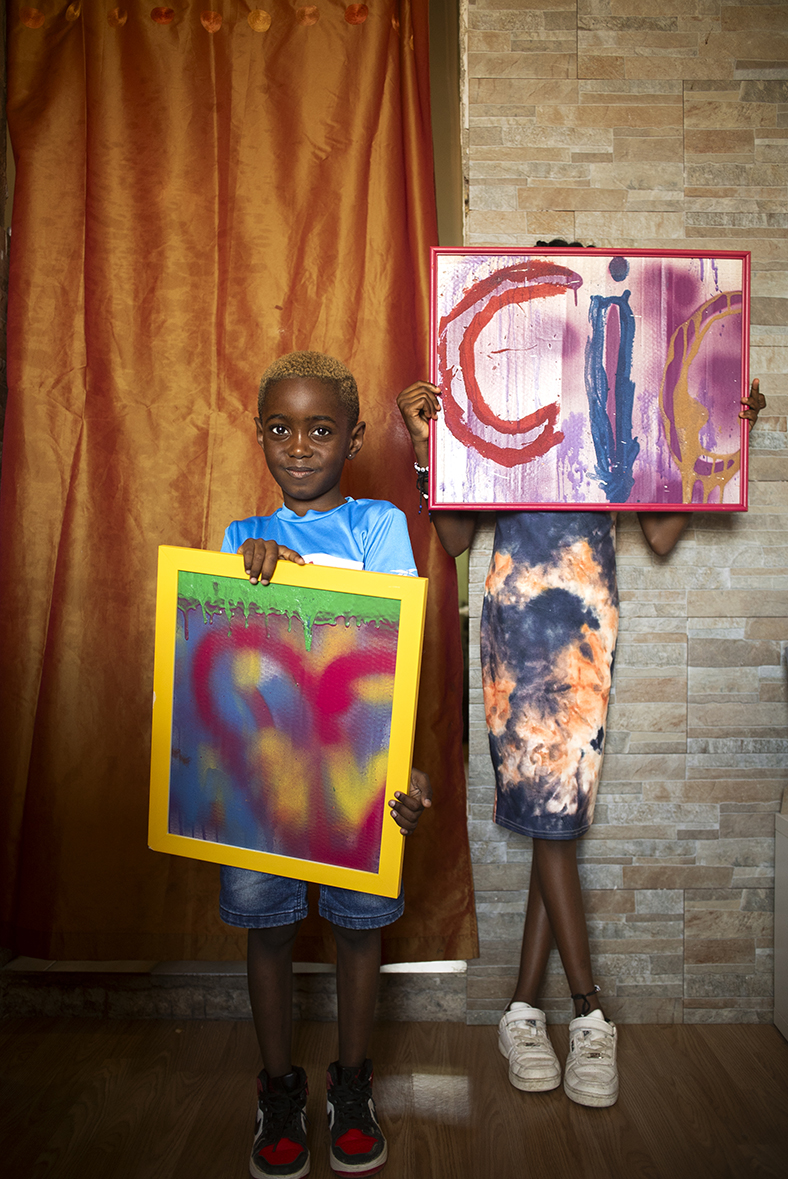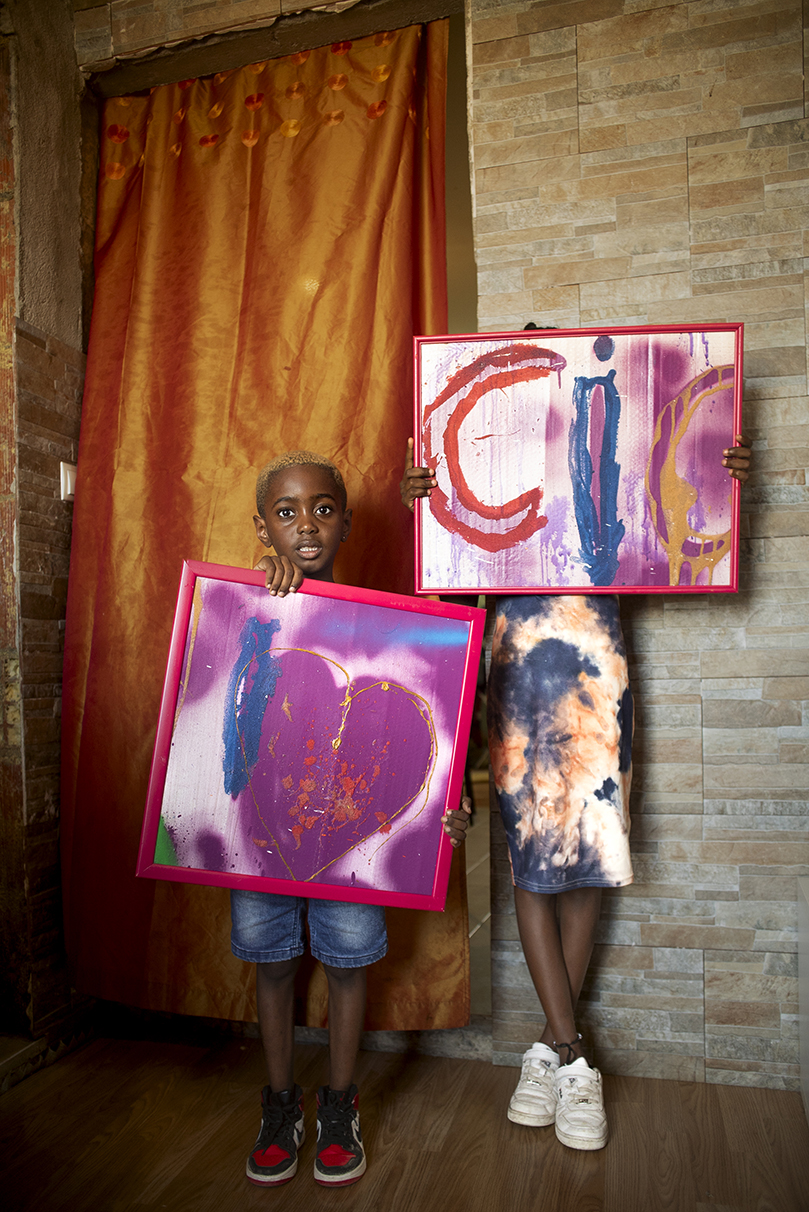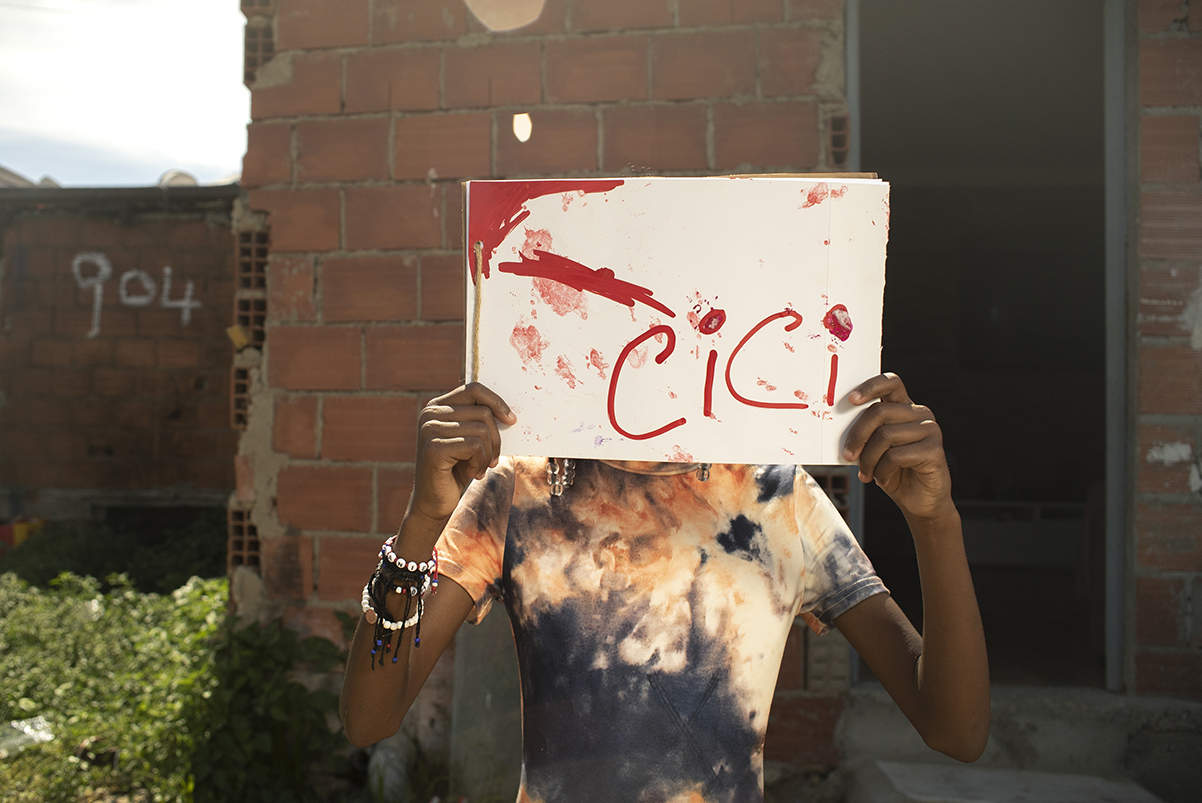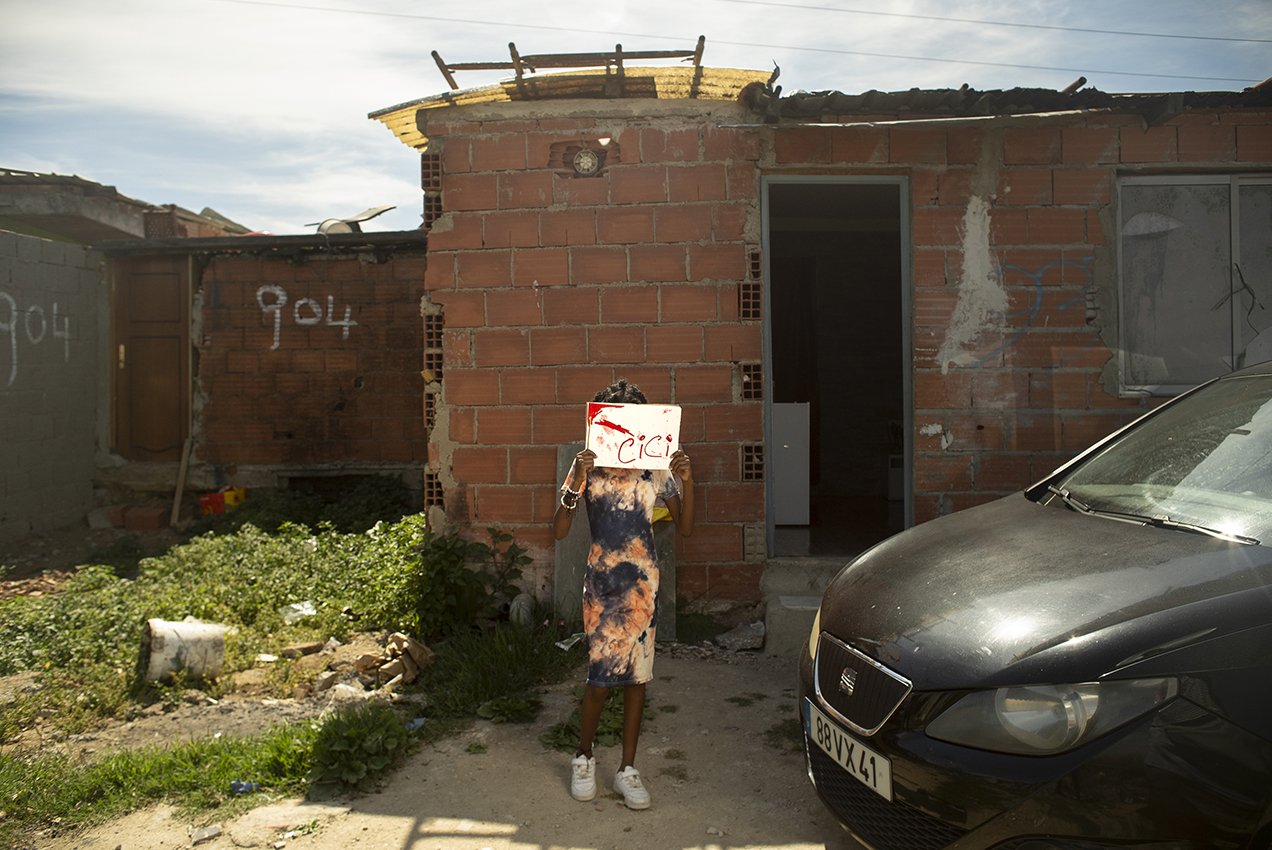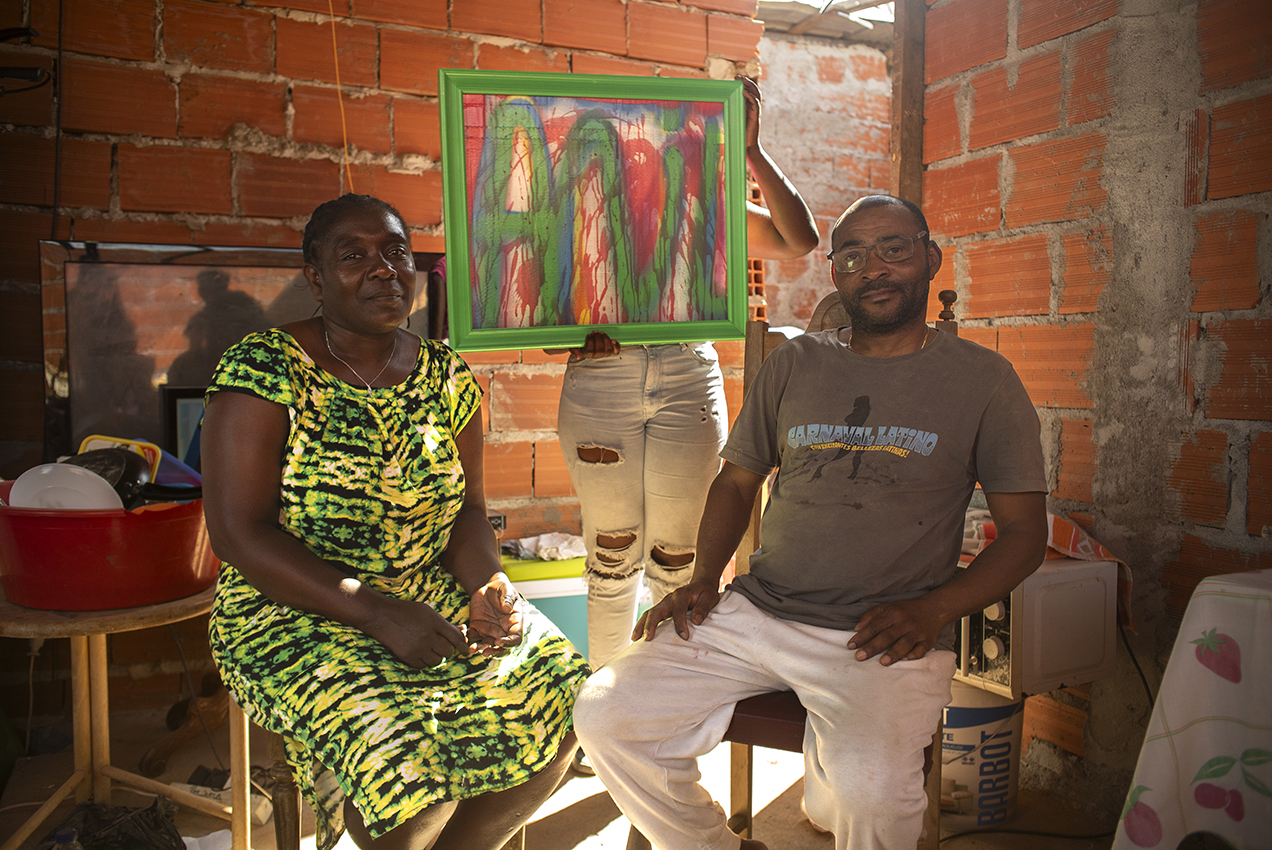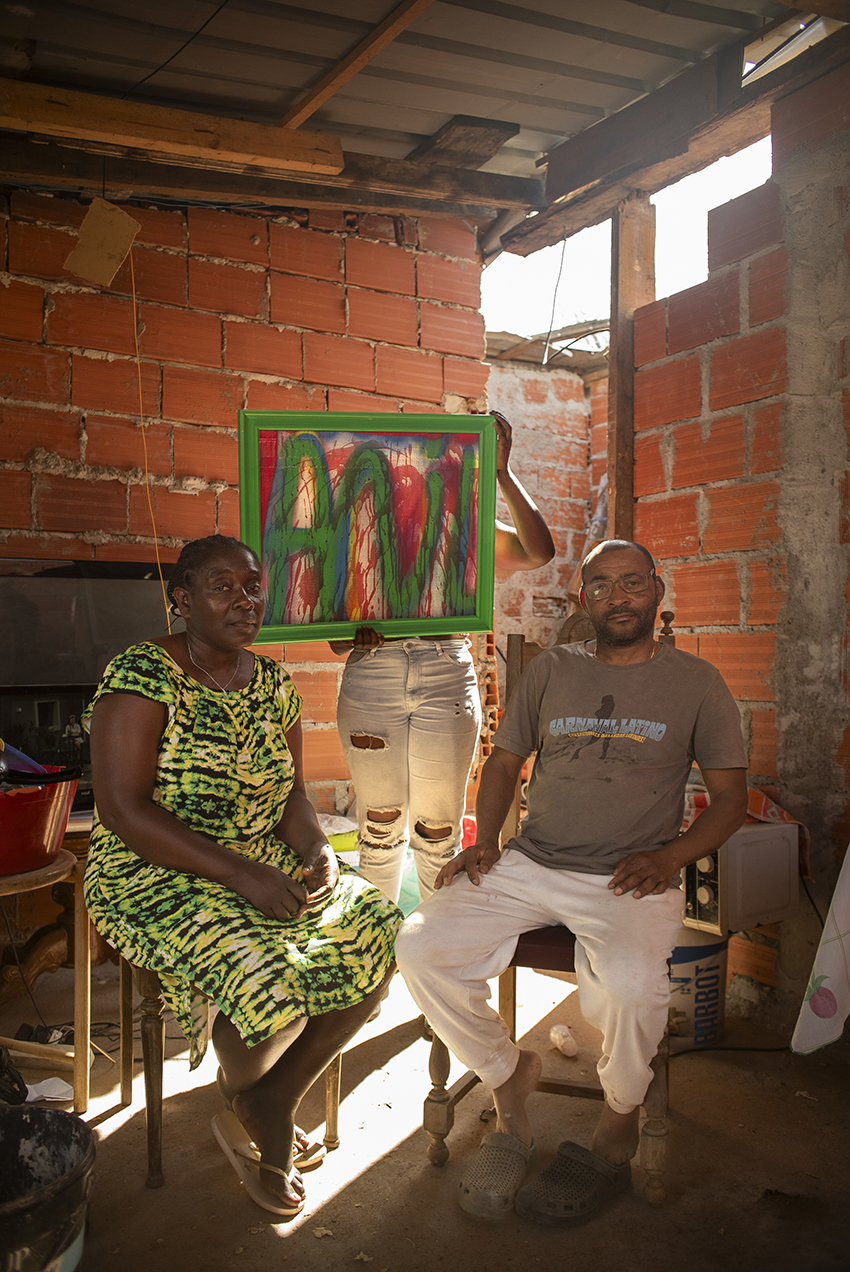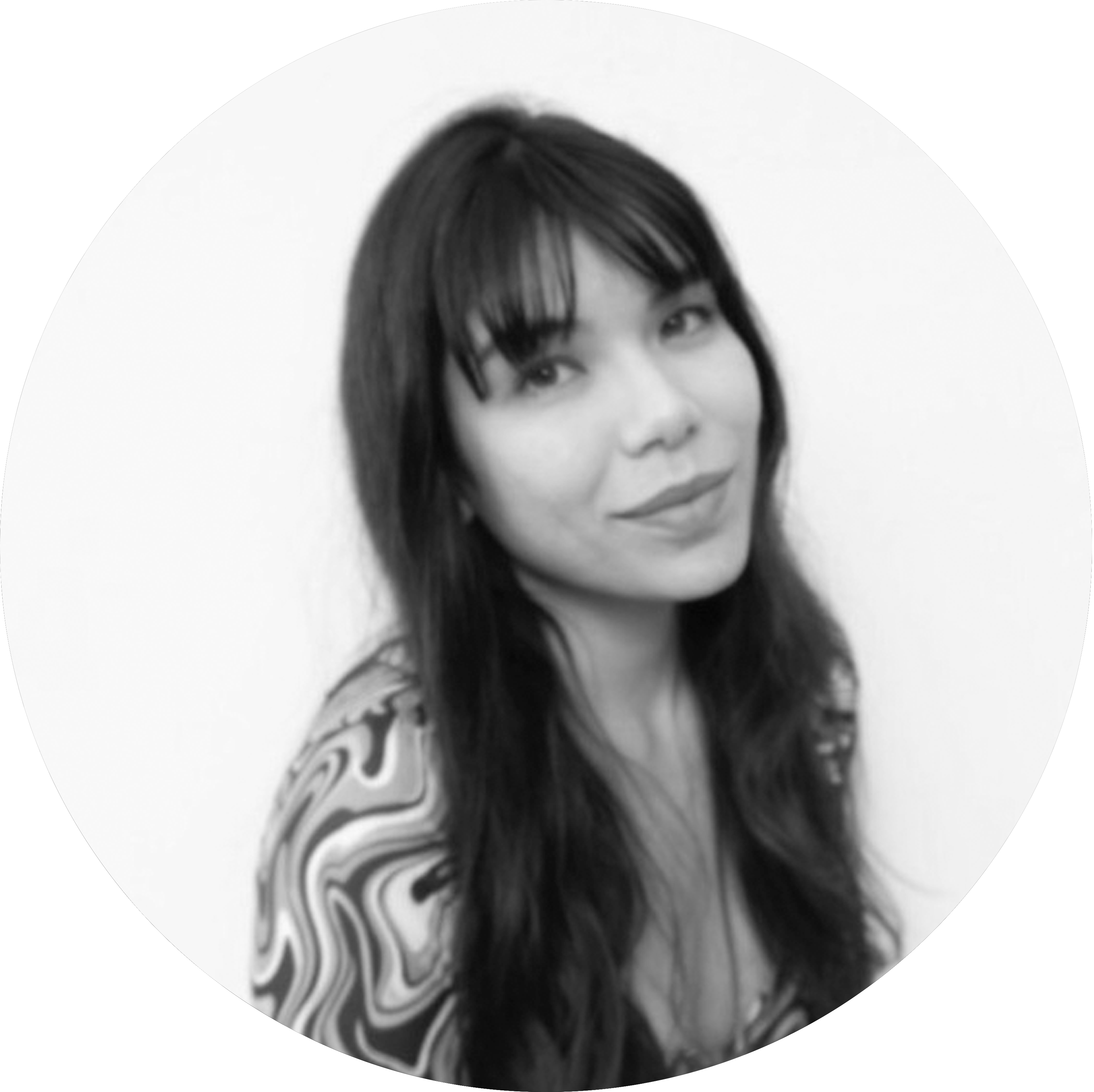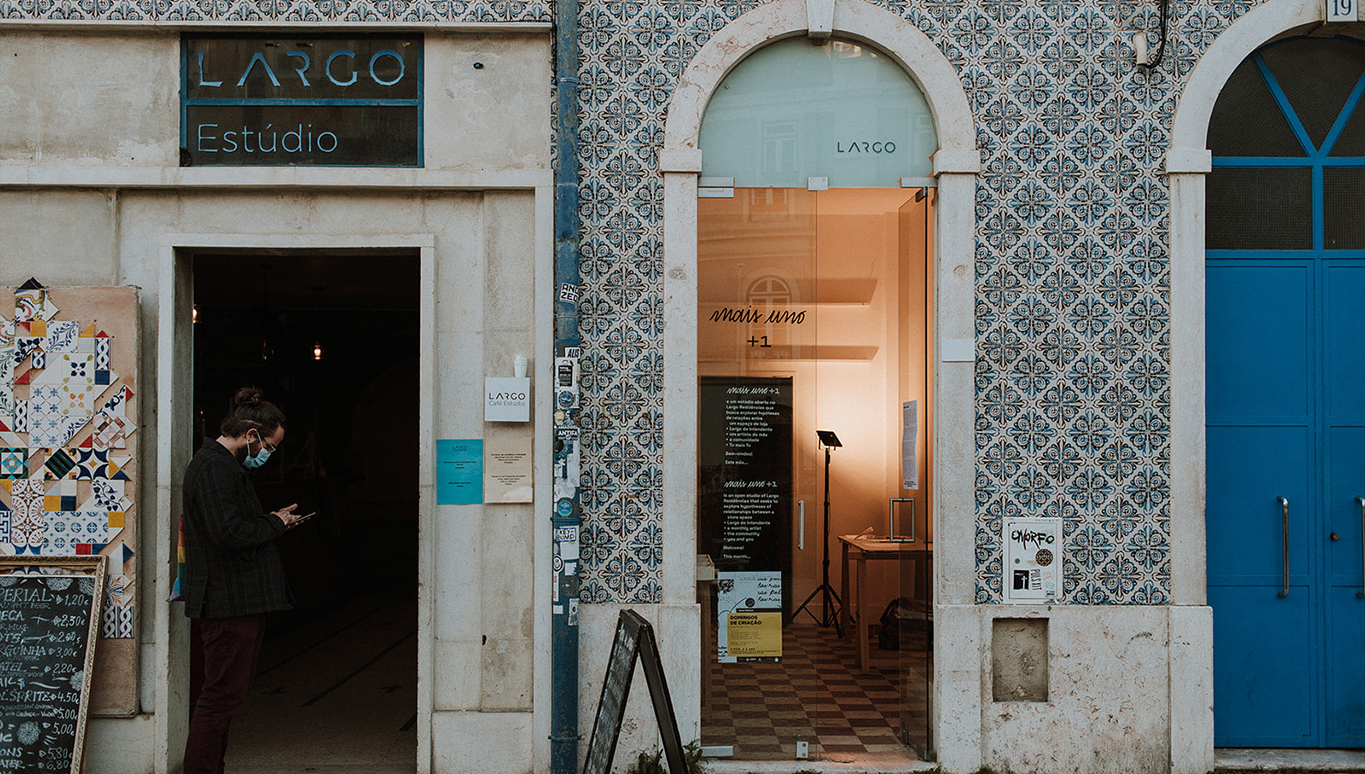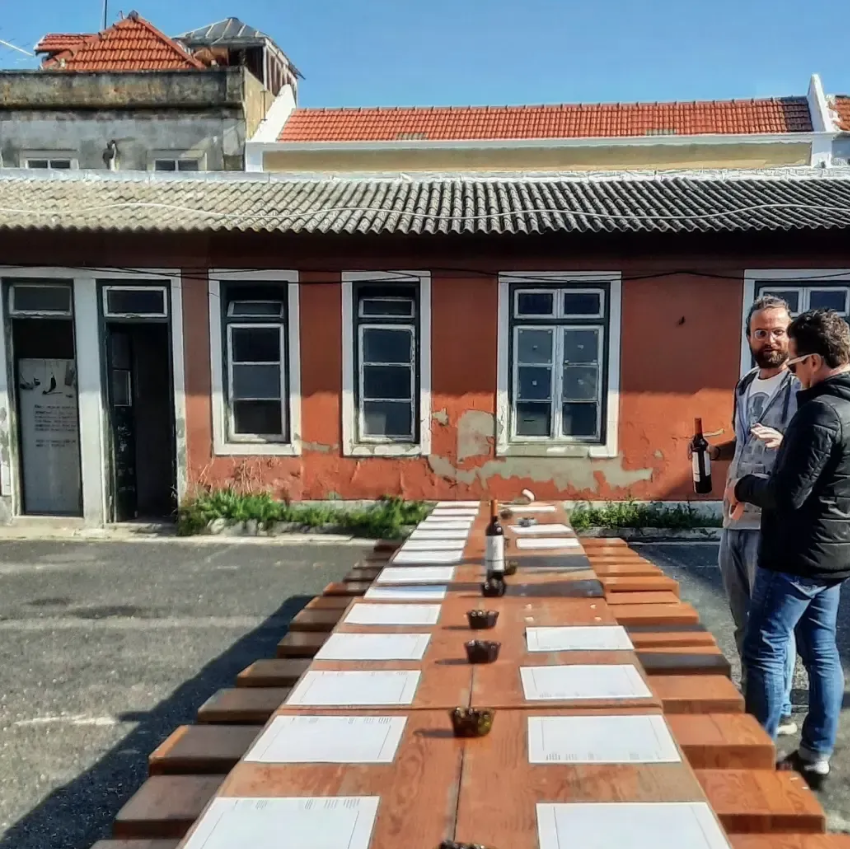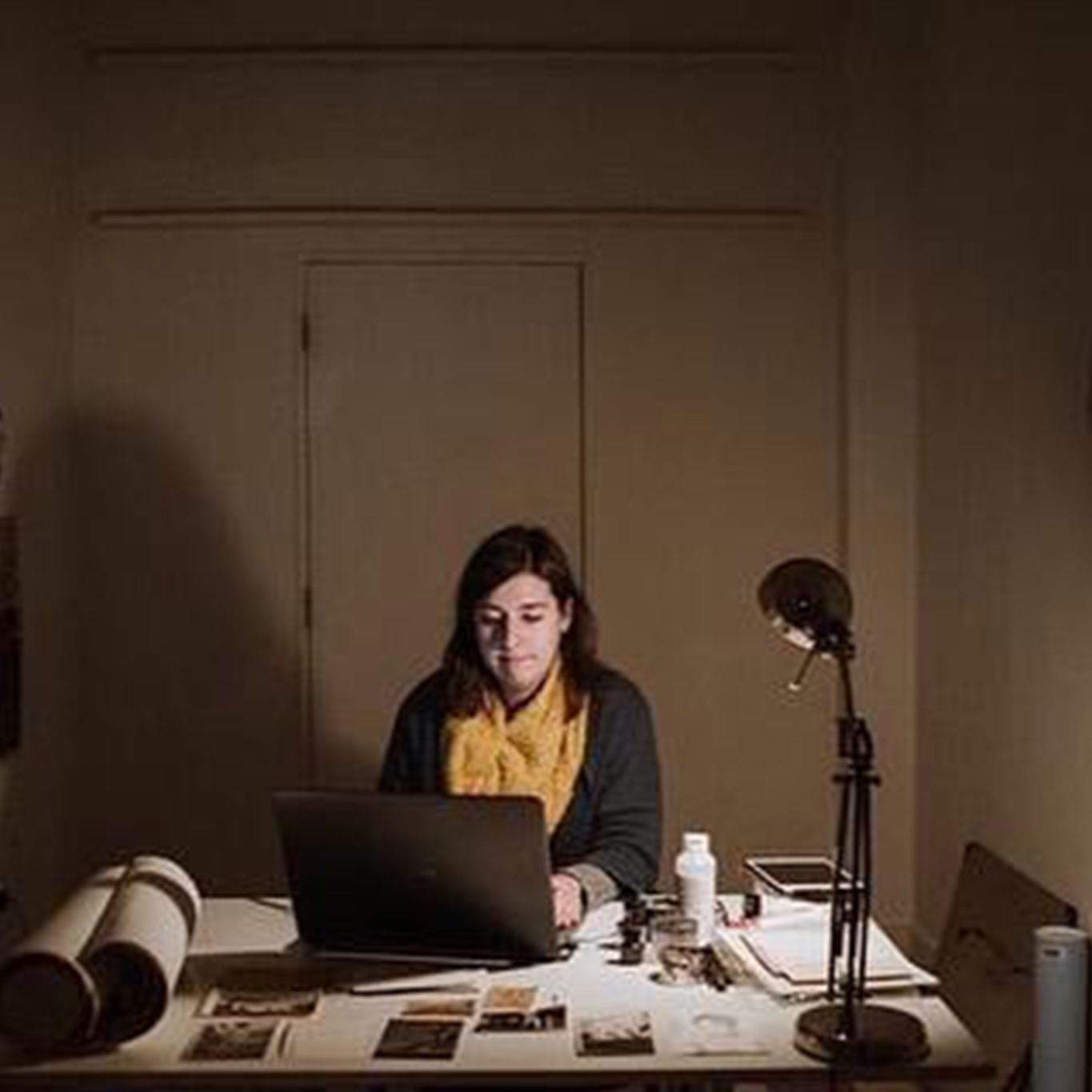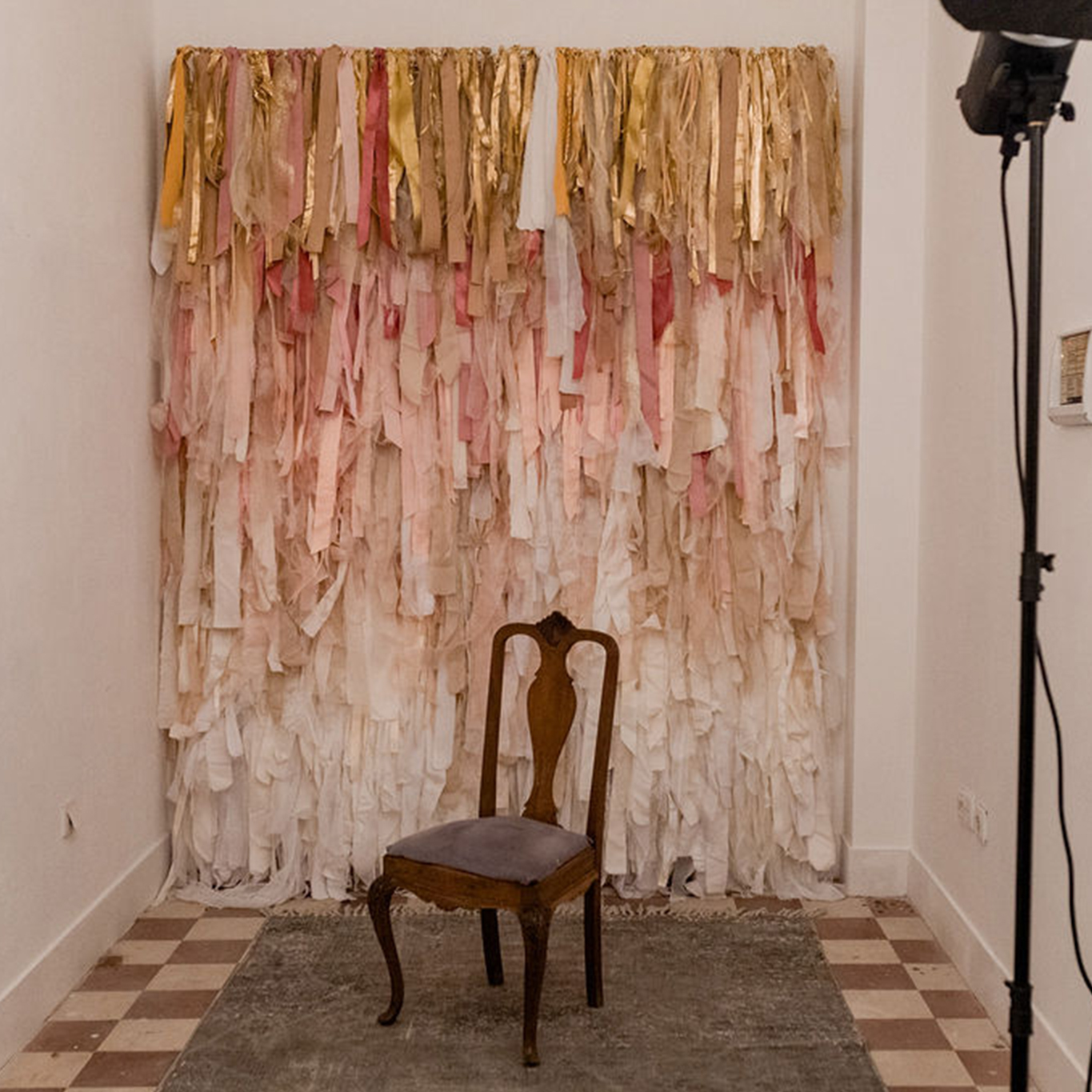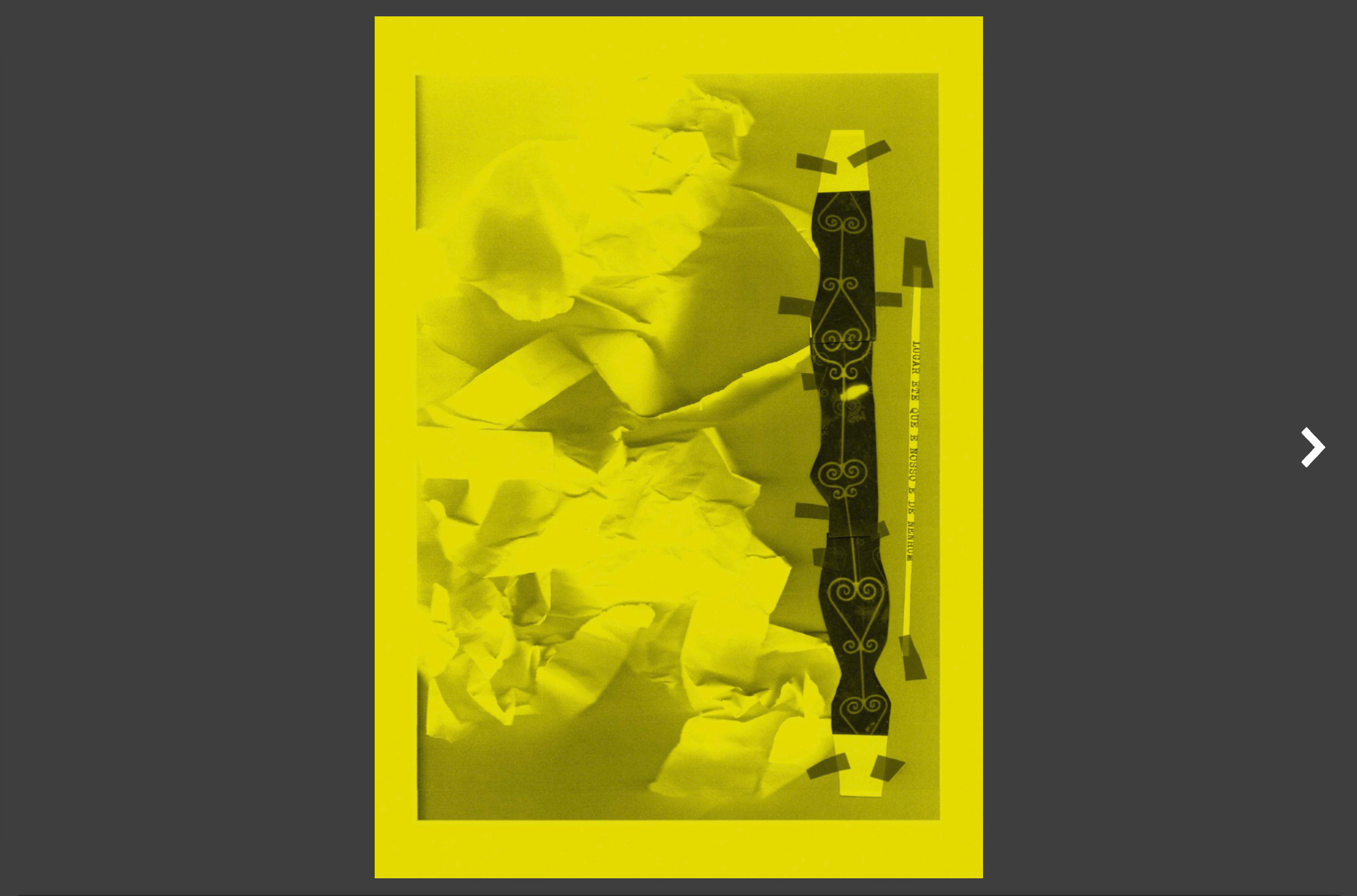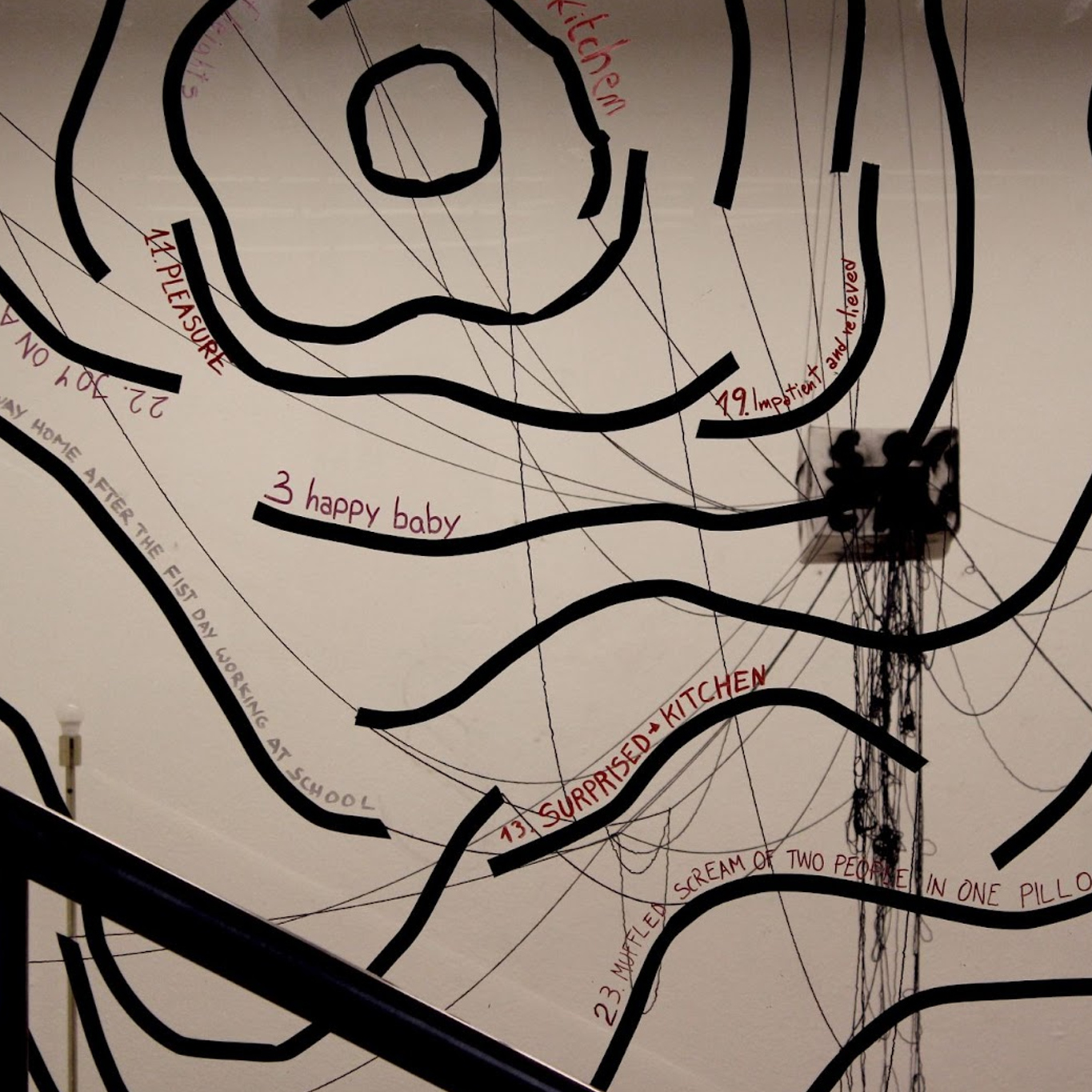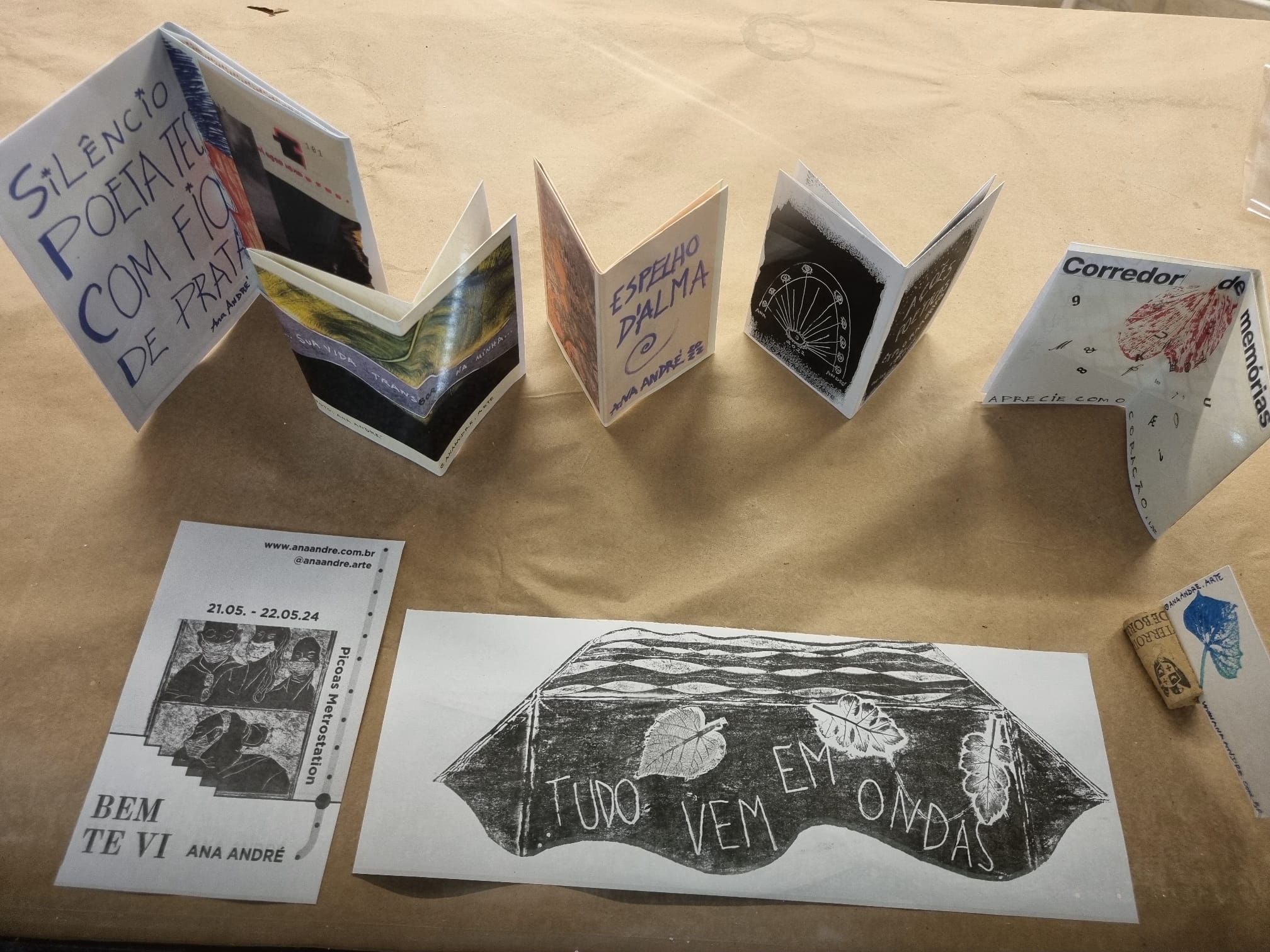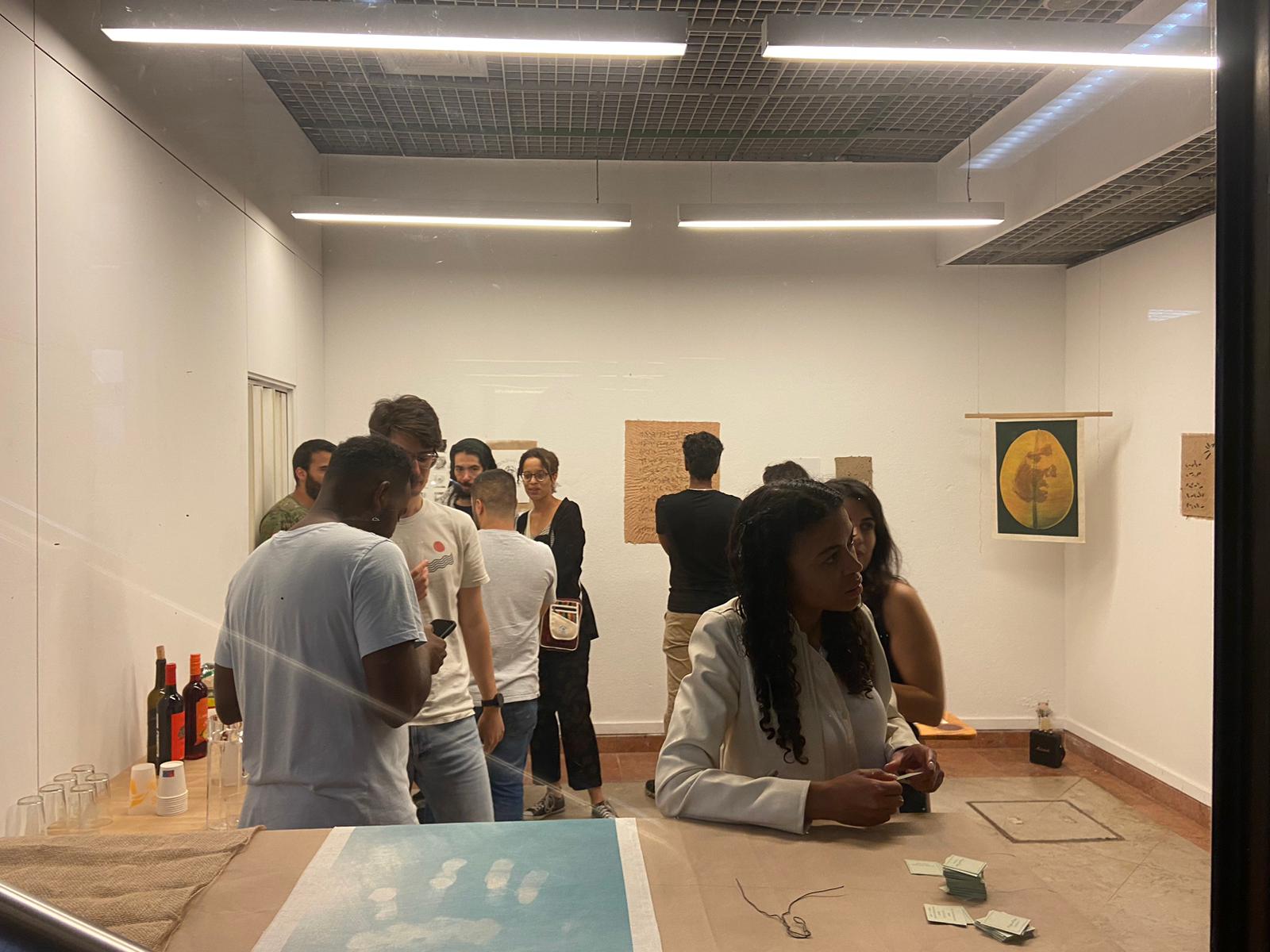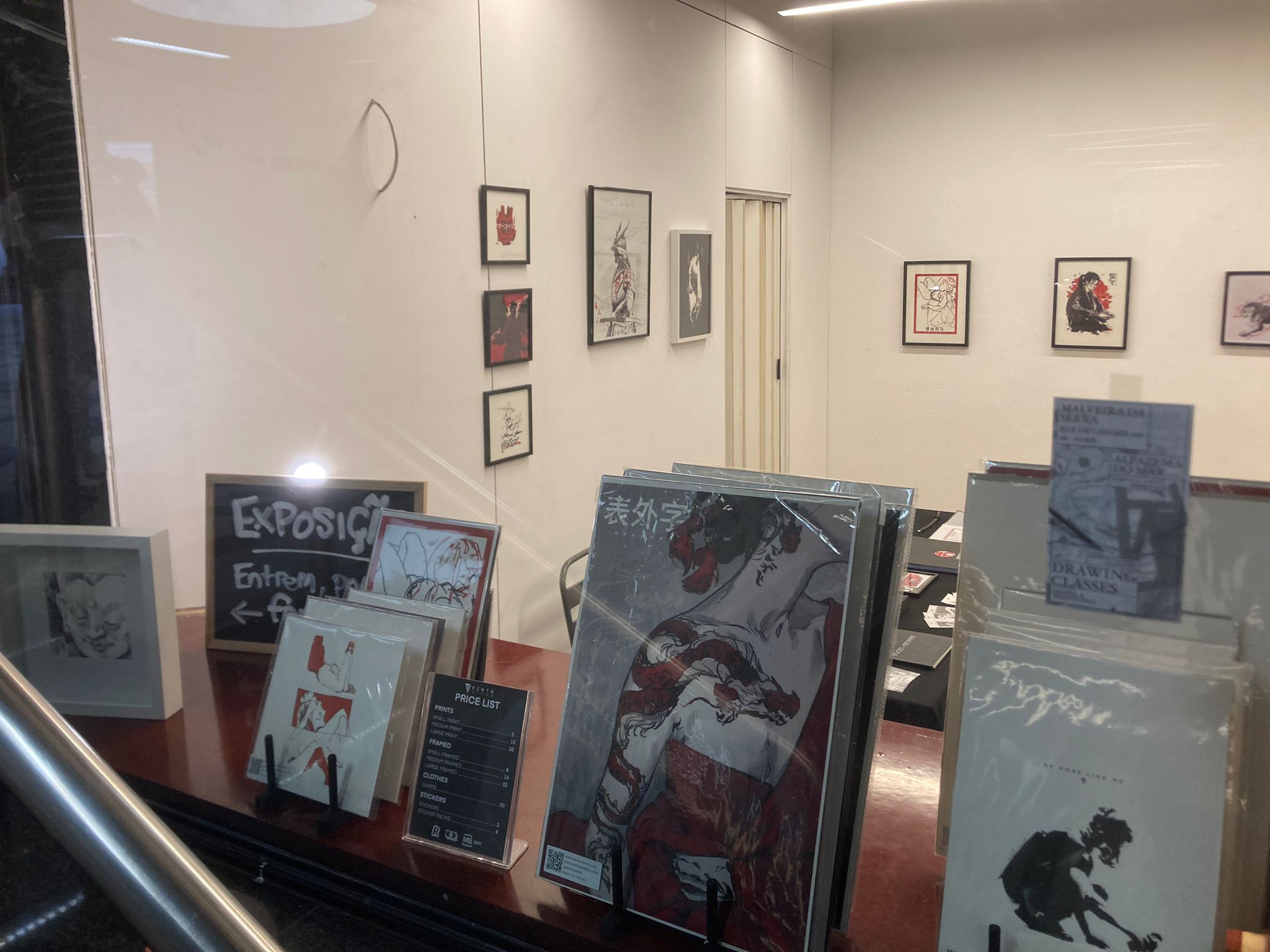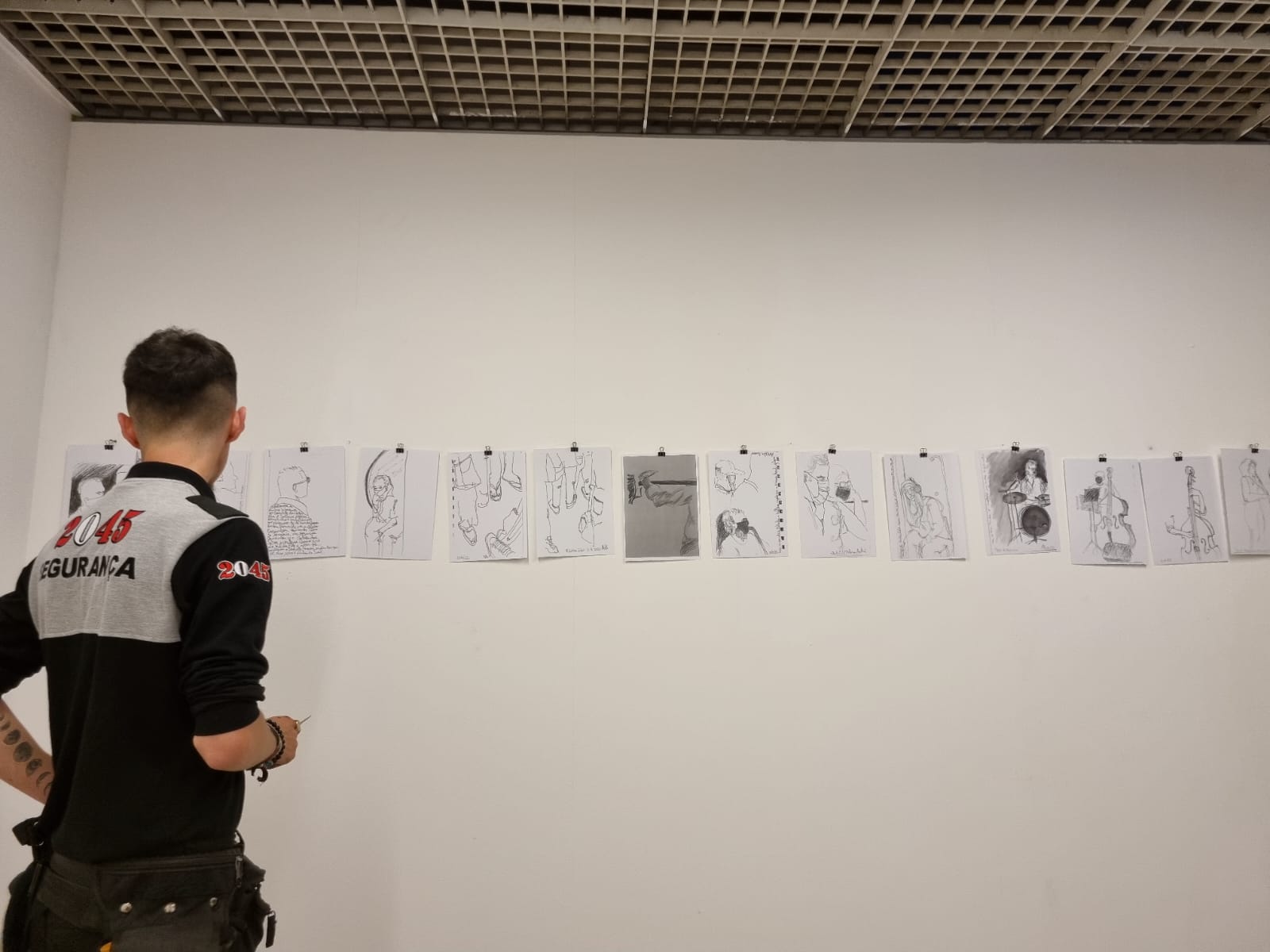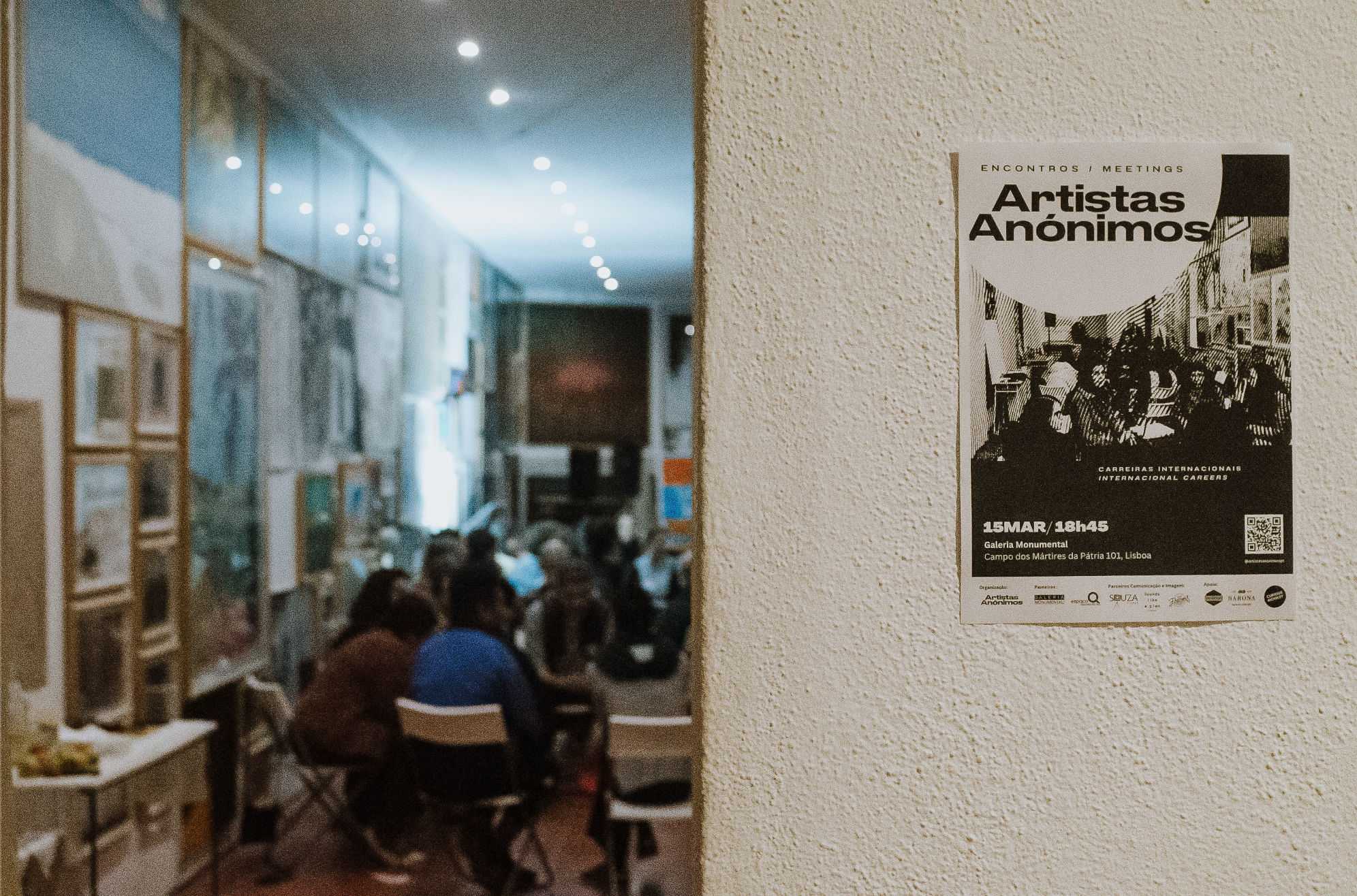Since day one we’ve been working hard to provide opportunities where creativity meets community. We turned the Picoas metro station into a launchpad for creativity—welcoming artists into our project space for exhibitions, workshops and all kinds of unexpected magic.
We dive into socially engaged residencies, spark conversations that matter and host a podcast where bold ideas and brilliant minds meet.
Curious? Come see what we’re up to—and maybe find your next adventure with us.
Take a peek at our projects.
We dive into socially engaged residencies, spark conversations that matter and host a podcast where bold ideas and brilliant minds meet.
Curious? Come see what we’re up to—and maybe find your next adventure with us.
Take a peek at our projects.

[IN]COUNTER Collective exhibition
“(…) “One of the destructive consequences of our fluid, modern world are processes like gentrification, exposing violence towards ourselves and our habitat. The accelerating fluctuations in neighborhoods caused by the arrival of wealthier residents bring about an atmosphere of distrust and competition, an omnipresent topic in the city of Lisbon. The potential displacement and loss of community fuels to an uncertain future. Can we find a way to erase or limit the fear of the future, embedded in an uncertain present?
Focusing on Lisbon’s neighbourhood Martim Moniz, a densely populated area and vibrant mix of cultures and identities, we intend to reflect on intercultural coexistence.
Focusing on Lisbon’s neighbourhood Martim Moniz, a densely populated area and vibrant mix of cultures and identities, we intend to reflect on intercultural coexistence.
— project duration
21.04.2023 - 22.04.2023
21.04.2023 - 22.04.2023
— curators
Alexia Alexandropolou
Dela Christin Mieße Inês Nêves
Alexia Alexandropolou
Dela Christin Mieße Inês Nêves
— curatorial and production assistan Margot Demey
— artistic action Carmen Bioqu Alina Shpakova
Elžbieta Upė Rozanovaitė
Marta Dorin
Elžbieta Upė Rozanovaitė
Marta Dorin
— project location
Prisma Studio (Lisbon)
Prisma Studio (Lisbon)
The collective exhibition project [IN]COUNTER displayed the outcomes of our residency at Prisma Studio.
‘’More than any other place, Martim Moniz and its surroundings embody the conflicted nature of Lisbon’s urban imaginaries... What is hegemonic and what is alternative there? What is the form taken by the dreams of those who live, walk, and play through these places?
‘’More than any other place, Martim Moniz and its surroundings embody the conflicted nature of Lisbon’s urban imaginaries... What is hegemonic and what is alternative there? What is the form taken by the dreams of those who live, walk, and play through these places?

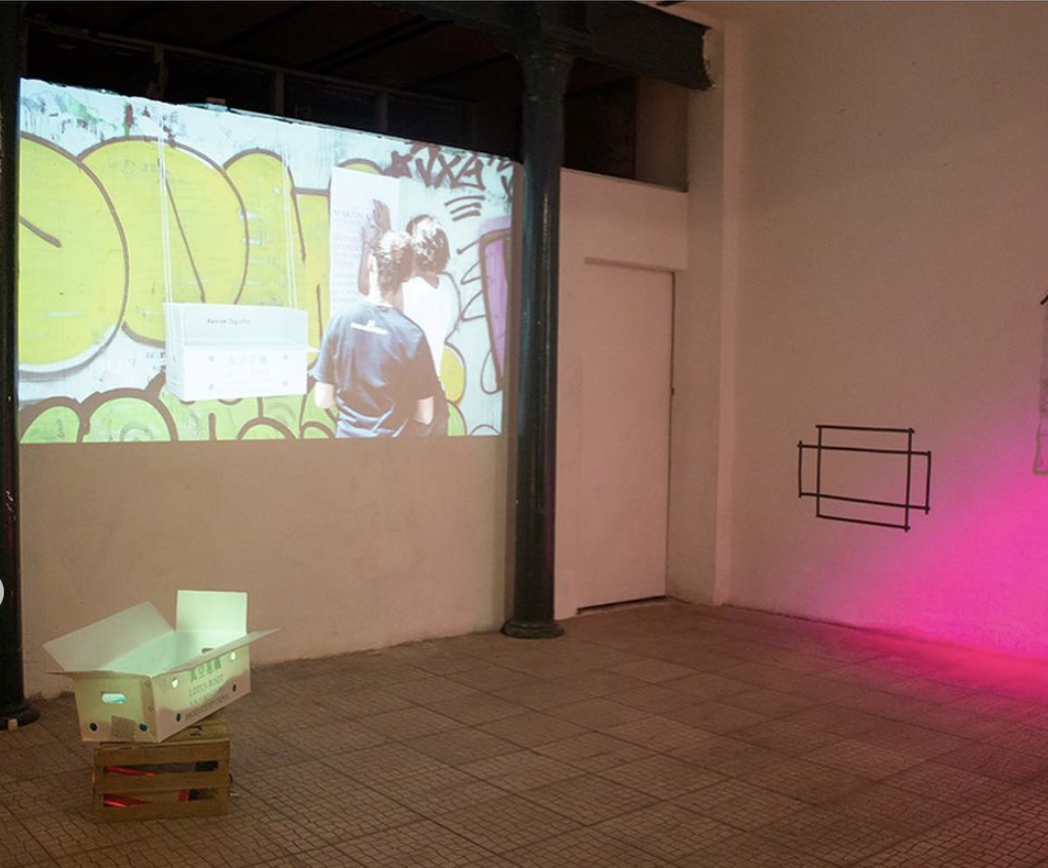


Through artistic actions open to participation, displayed in Prisma and the surrounding public space, Carmen Bioque, Dela Christin Mießen, and Mais Uno +1 collectively question and open a conversation on the social and political dynamics of this neighborhood.




Lay it on the table
FIRST DAY
The exchange processes that take place in a white cube create many restrictions in the way we see, experience and feel art. Through the framework of a shared meal, with this project we wanted to explore alternative conceptions and definitions of what makes an exhibition space or a stage. So we asked ourselves: what happens when the work of art is not shown on four walls, but in the space above and around a table?
— project duration
9th October 2023
9th October 2023
— curators
Alexia Alexandropolous
Inês Nêves
Lígia Fernandes
Nicole Sánchez
Alexia Alexandropolous
Inês Nêves
Lígia Fernandes
Nicole Sánchez
— project location
Manja (Lisbon)
Manja (Lisbon)
— co-production
Manja (Lisbon)
Manja (Lisbon)
— partner entities
Maria Rita Arnaut
Maria Rita Arnaut
Eduardo Freitas' gastronomic performance "Preto no Branco" approaches the table as a biographical space where the artist brings up both physical and emotional issues. Cooking traditional dishes from Brazil, presented in two acts, the artist - who has both black and white origins - explores the dynamics surrounding his identity and cultural heritage. During the performance, Eduardo shares stories of his ancestors and their political implications: a brave act of vulnerability, as he allows us to absorb his identity by eating food in the form of his body and listening to his intimate stories. Although it can be difficult to fully understand someone else's experience, Eduardo makes it accessible by activating our senses and inviting us to share the table, making us an integral part of the performance.





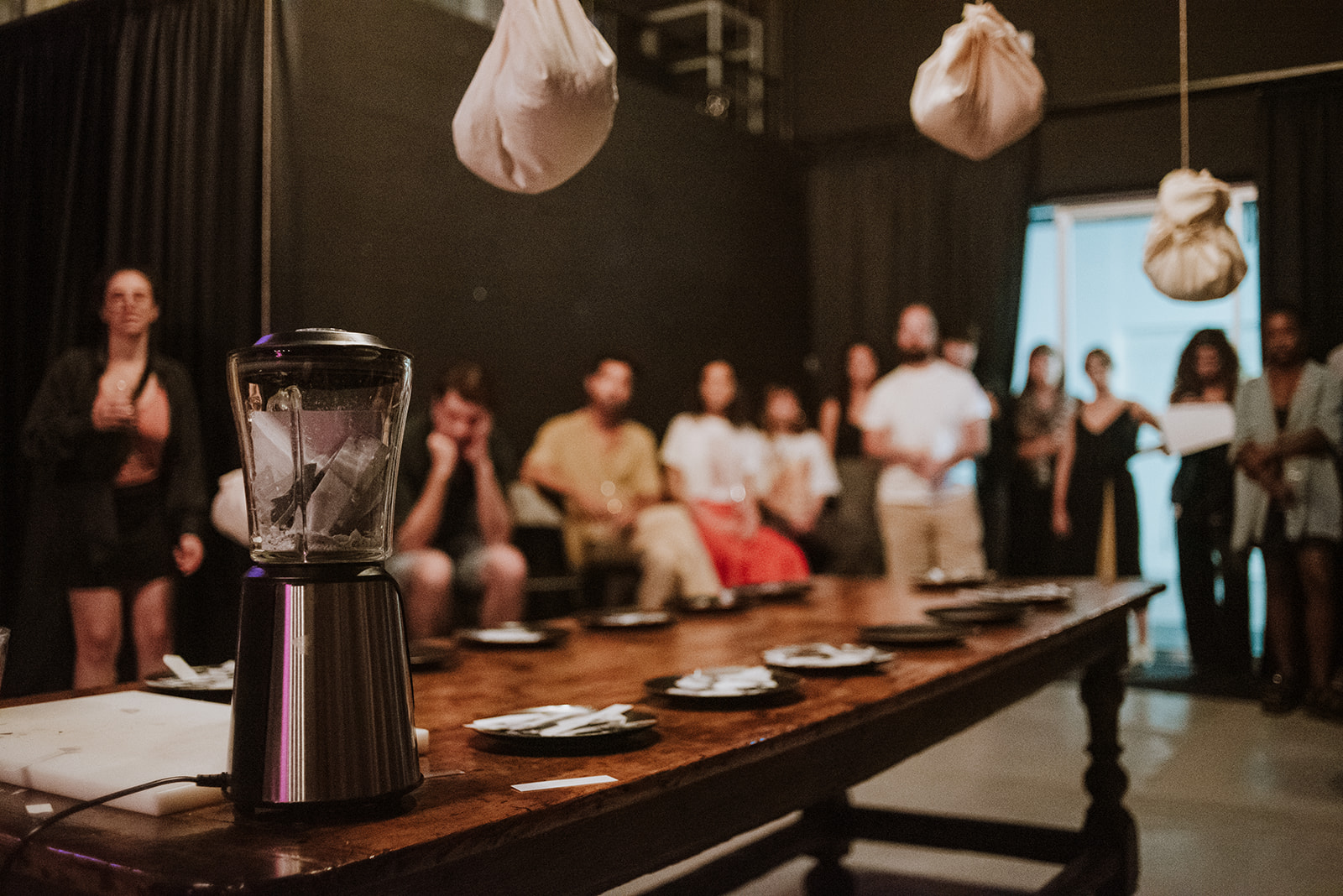





Eduardo Freitas was born in Ponta Grossa - PR, Brazil (1990). In 2017 he decided to move to another country, hoping to find new stimuli for his artistic production. He has lived in Portugal ever since. The artist, who in his childhood and youth, alongside his artistic studies, lived and worked in the restaurant industry, brings commensality into his creative work and presents the act of eating and cooking as artistic actions. She also investigates the concepts of matter, hybrid languages, the body and tradition, in a strategy that crosses her personal experience with the memories, stories and places of the "other".
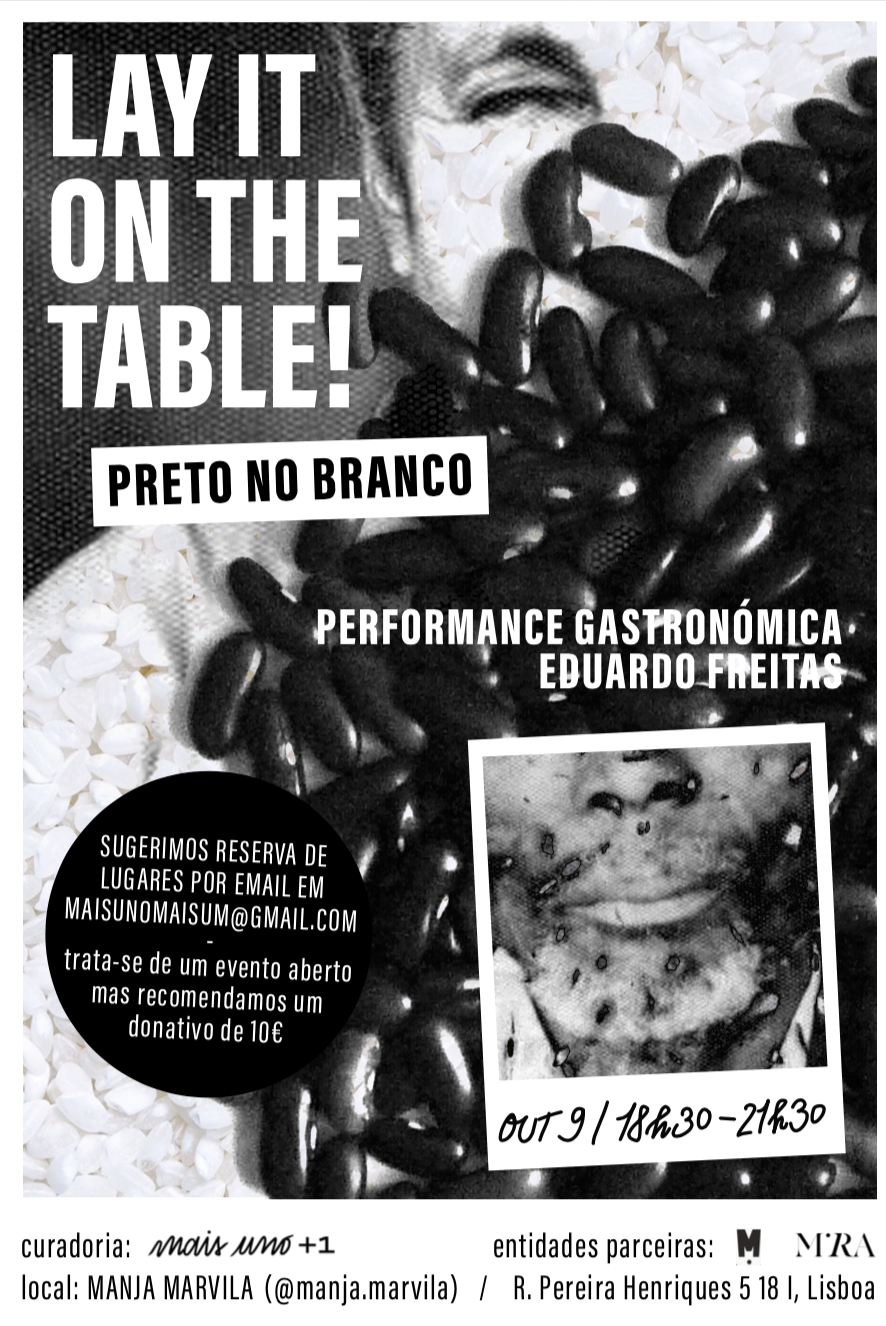
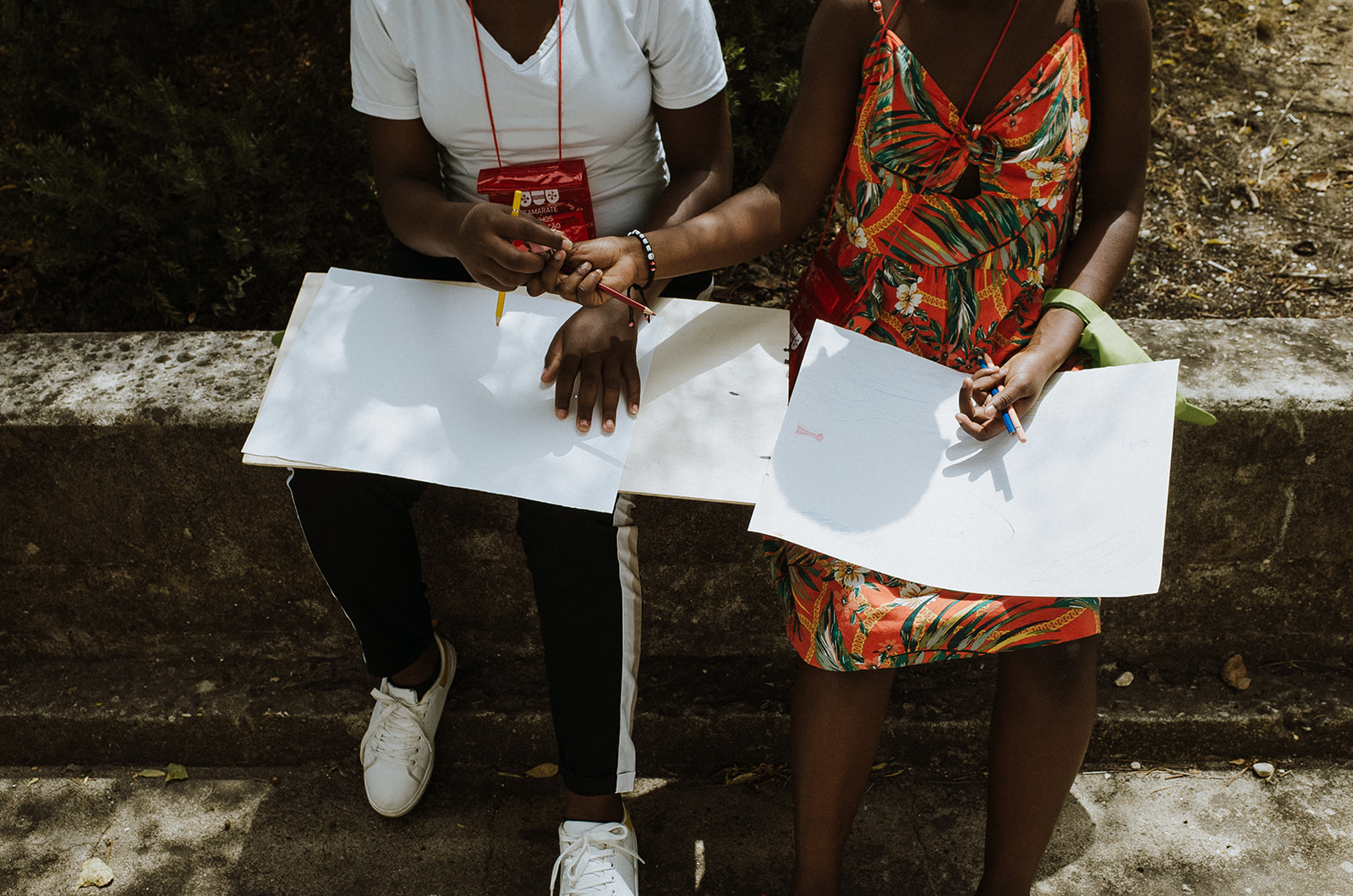
stories lived and to be lived
Activities for children.
— project duration
July 2022
July 2022
— curators
Manu Romeiro
Lígia Fernandes
Inês Nêves
Manu Romeiro
Lígia Fernandes
Inês Nêves
— project site
Agrupamento de Escolas do Catujal (Unhos, Lisboa)
Agrupamento de Escolas do Catujal (Unhos, Lisboa)
— partners
Parish Council of Camarate, Unhos e Apelaçã AMRT Transcultural
Parish Council of Camarate, Unhos e Apelaçã AMRT Transcultural
This project stems from a partnership with the Parish Council of Camarate, Unhos and Apelação and AMRT Transcultural. This partnership seeks to create and explore continuous relationships between the Quinta da Fonte neighbourhood and a community of artists working with social, situated and participatory art. Quinta da Fonte: warm neighbourhood embroidered in yellow and bathed in yellow. Warm neighbourhood with much life surely, but sometimes unseen. This is how they painted Quinta da Fonte and this is how we saw it, when we visited. And so they asked, and we consented, to nurture that wamth.
The partner entities, throughout a long work with the territory, identified in Quinta da Fonte a weak social cohesion and connection between the different local associations, manifesting a need to rethink the current relocation, community and identity models. It was based on this analysis of the territory, and on the will to create opportunities for artists to develop work with the local community that we initiated this partnership, aiming, through the organisation of artistic creation projects, to develop and share tools for the community to continue developing continuously the work catalyzed by us. We seek to explore artistically and, hopefully, strengthen the connection between those stepping on the warm soil of Quinta da Fonte: their inhabitants, the local entities, the artists, and the territory itself.
The children activities “Stories lived and to be lived”, was the first initiative rising from this collaboration: a first contact to help us learn the real or imagined stories, the dreams and lives of the children that inhabit the warm neighbourhood of Quinta da Fonte.
The partner entities, throughout a long work with the territory, identified in Quinta da Fonte a weak social cohesion and connection between the different local associations, manifesting a need to rethink the current relocation, community and identity models. It was based on this analysis of the territory, and on the will to create opportunities for artists to develop work with the local community that we initiated this partnership, aiming, through the organisation of artistic creation projects, to develop and share tools for the community to continue developing continuously the work catalyzed by us. We seek to explore artistically and, hopefully, strengthen the connection between those stepping on the warm soil of Quinta da Fonte: their inhabitants, the local entities, the artists, and the territory itself.
The children activities “Stories lived and to be lived”, was the first initiative rising from this collaboration: a first contact to help us learn the real or imagined stories, the dreams and lives of the children that inhabit the warm neighbourhood of Quinta da Fonte.



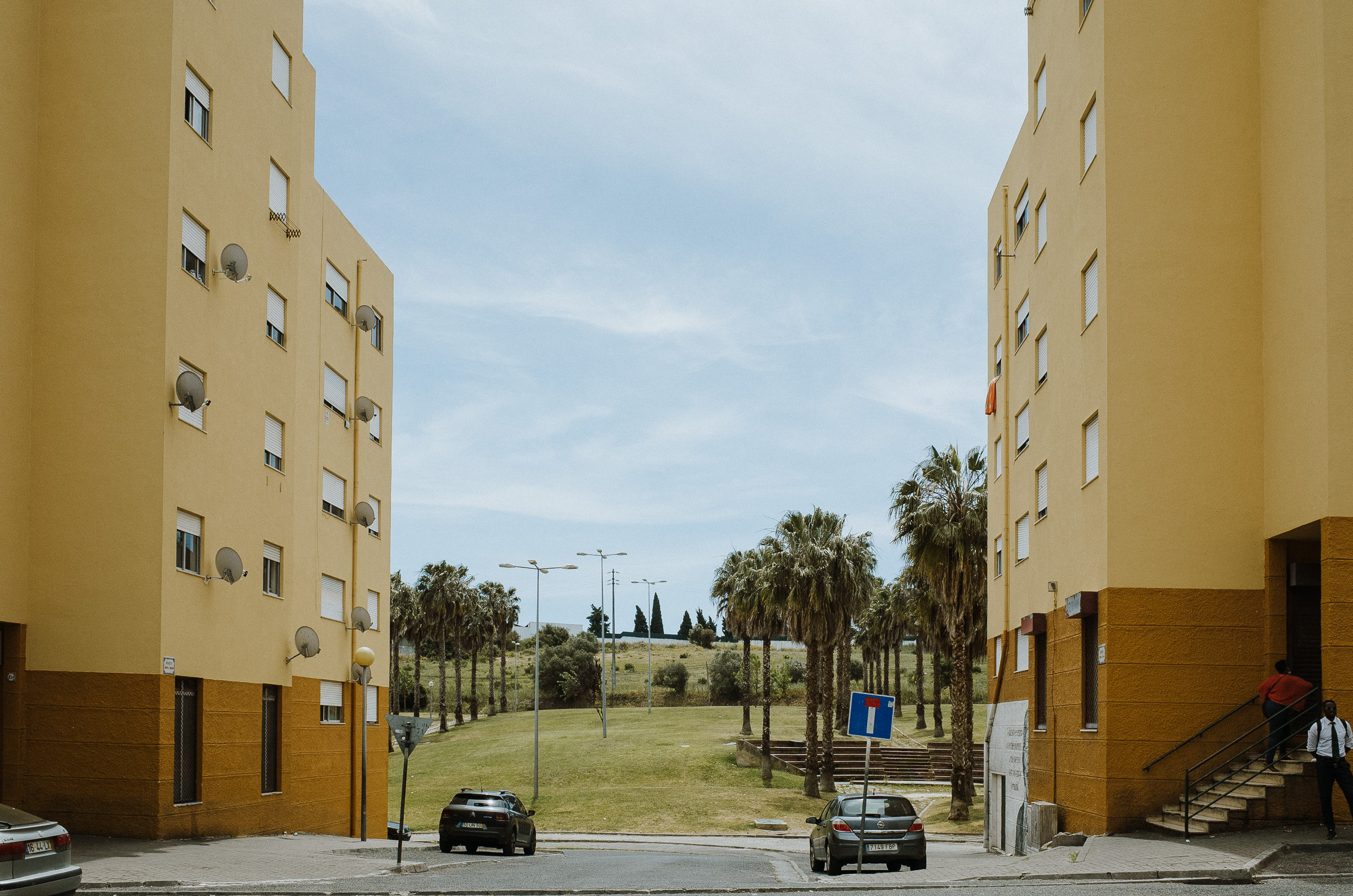



Photos: Nicole Sánchez
— “stories lived and to be lived”
“When I was seven, or eight, I can’t remember, I went to Marrocco. And in a city whose name I can’t remember anymore, we went to a hotel that looked like a castle. And there was a piano. I was playing notes randomly because I didn’t know how to play yet. So I feel like going back there now. Because now I know how to play.”
The past is recent (if not present), and the memories — so alive — make us shiver just for thinking of them… They generate laughter, desires. By going and returning with no difficulties, we imagine a near and glorious future, with no fear. Unlike adults who, through stories (once lived, now told), nostalgically touch and re-live the past, children experience their stories as a process of understanding, learning and playing. By remembering and imagining, they navigate the many directions of what is possible and impossible. Everything fits within the imagination!
This program of activities for children between the ages of 6 and 12 gathered different multidisciplinary proposals related with childhood stories: stories that shape and mark us as adults, and that are the present of the children of today.
“And then, when I was exiting to the balcony, there was no backyard, it was a balcony. Uhm… we always messed with the plant vases to place them somewhere else and clean them… so one day we lifted a vase and it was full of ssssluuuuuuggggggsssssssss… since that day I began to be afraid of slugs, because… one of them climbed to my arm… hmmmm… eesssshhhh…”
— Activities
Manu Ribeiro
"Here a story was told"
A drawing and spoken narrative activity. This activity was organized in pairs. Each 2 children executed two activities: at a turn, one told a story as the other drew what they were hearing. We selected a group with older kids for this workshop, as it potentiated the sharing of feelings, psoposing the challenge to become emotionally vulnerable before their friends and peers. “Here a story was told” was an activity for leaning not only how to draw, create, imagine and communicate, but also a challenge to look inside oneself and
open up to others.






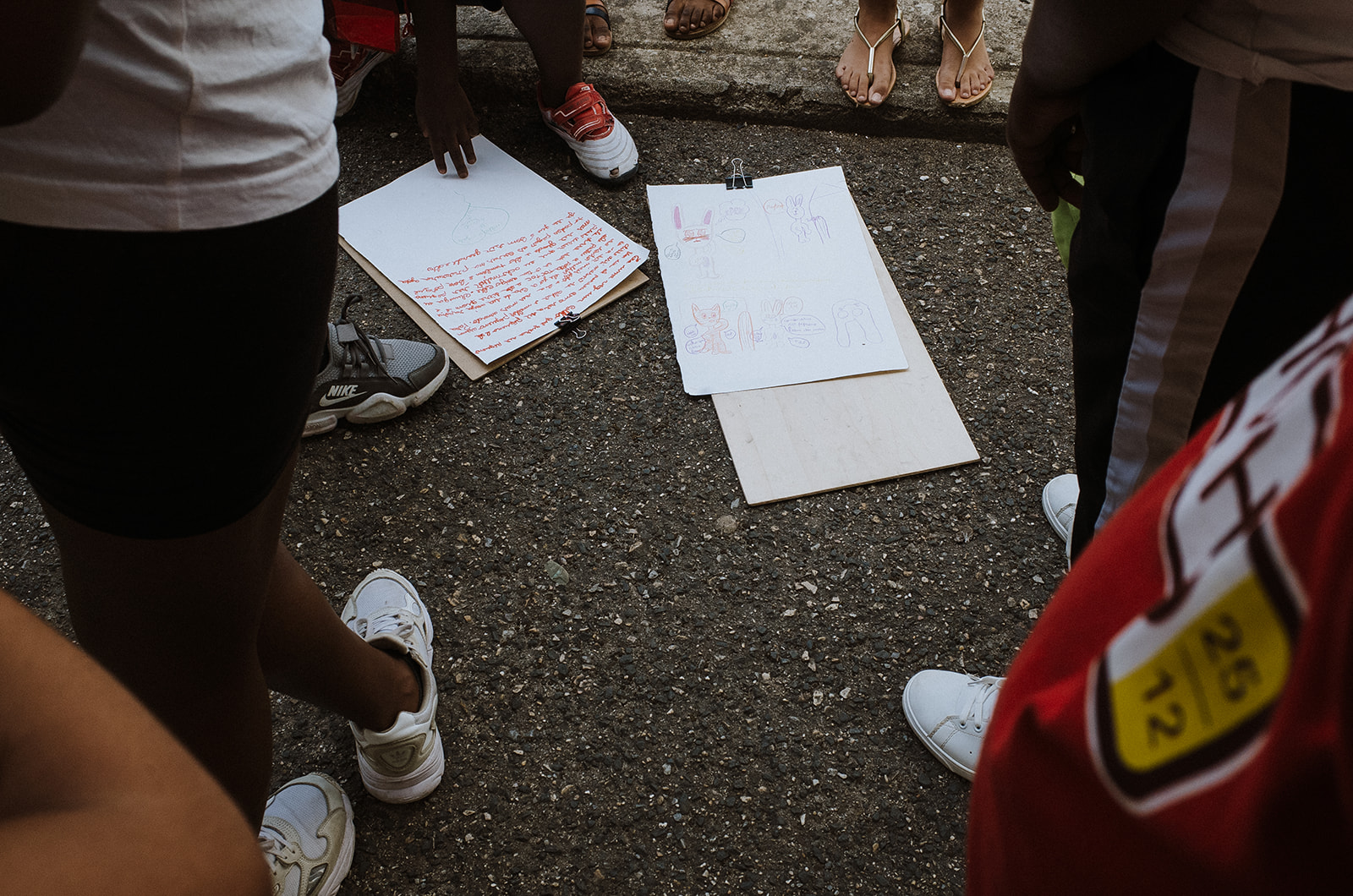

Alessandra Vilela
"Watercolour painting on fabric workshop"
This workshop focused on painting with watercolours on fabric. Alessandra focused the session on teaching the watercolour technique and explaining basic notions on the colour scheme. By providing a new technical skill, Alessandra sought to stimulate the children’s creativity, and explore freedom of expression, allowing them to find their own voice.
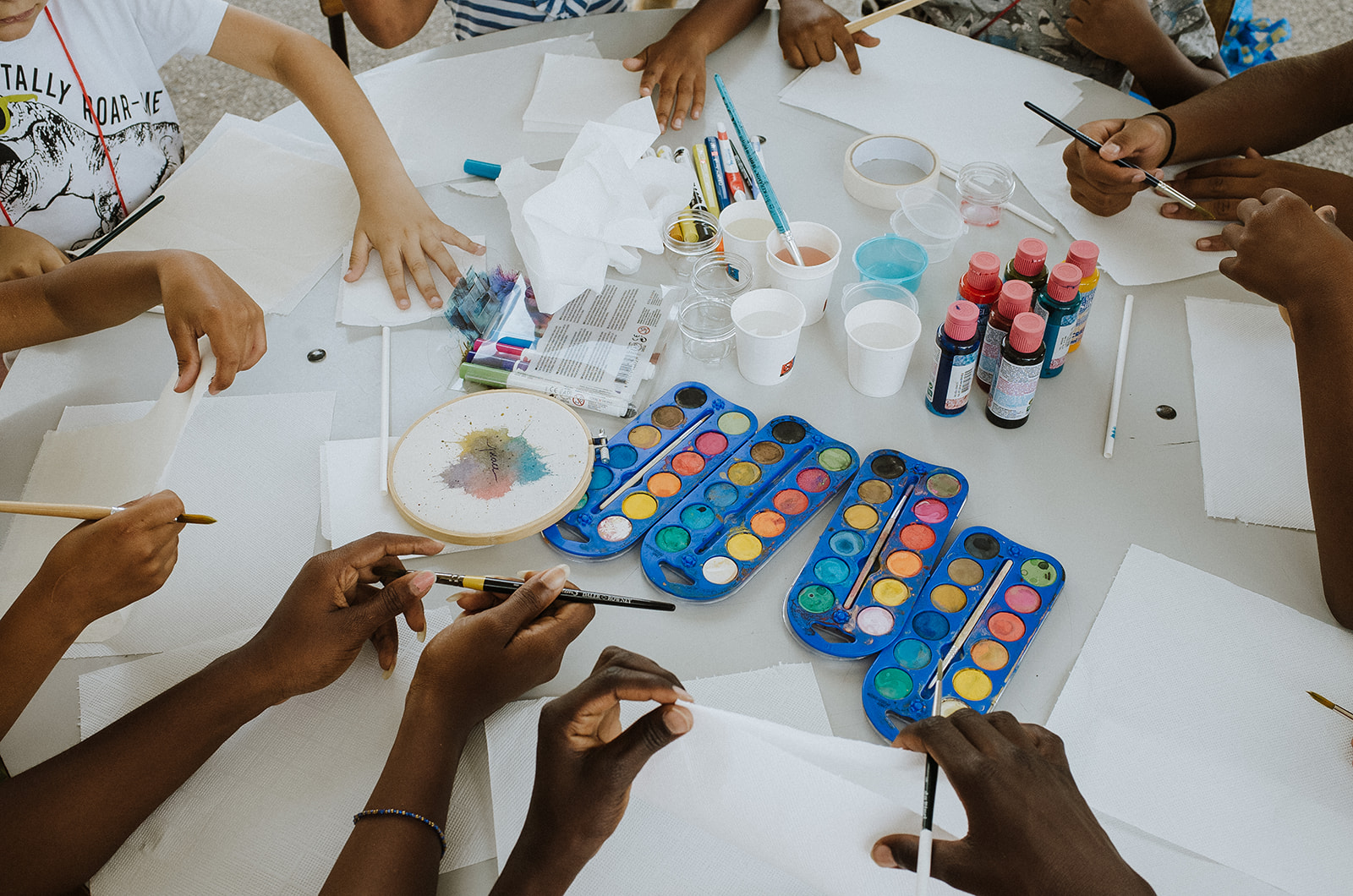






Liz Melchor
"Let's Make a Monkey Story!"
Let's Make a Robot Monkey Story: an afternoon where the children each colored, adjusted, and added to a monkey outline that was plotted by the pen plotter (drawing robot). The goal was to make a very short stop motion animation. They each held part of the collective story. It aimed to integrate the childhood fun of cartoons, offer an interaction with technological tools, and to show them that together they each will have responsibility and autonomy to make one part of a unified story.
Ana André
"Stories and paper dolls"
In the activity “Stories and paper dolls” two stories were told, and for each story the children were taught how to make a paper doll through folding and cutting, and make a shirt for that figure. By shaping the figure, children personalised their toy: in some cases they created a replica of themselves, in others, a replica of a tutelary or heroic figure.





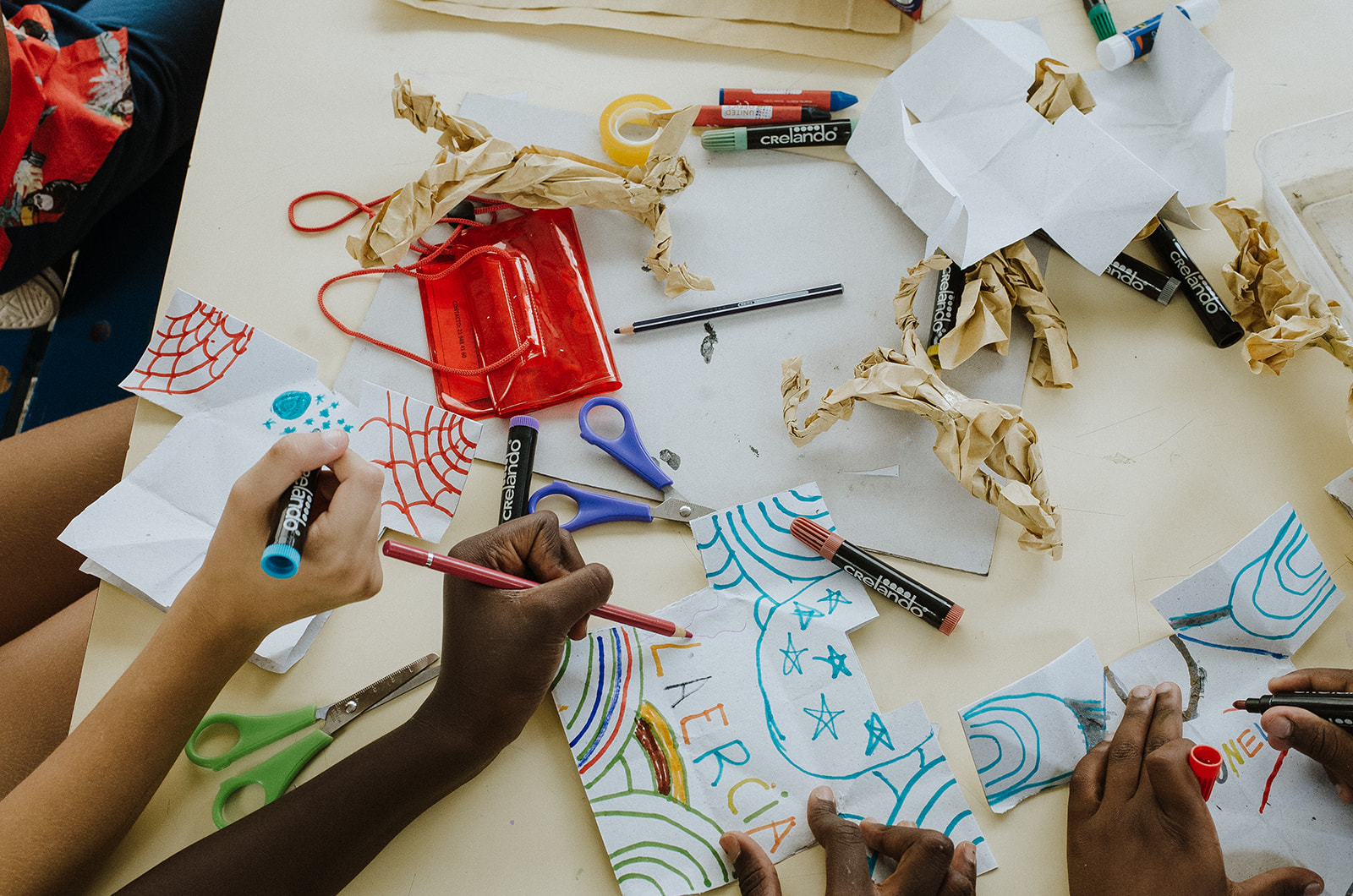
Carla Luís “Human Rights: what are they and should they be?”
In this activity called “Human Rights:what are they and should they be?”, we talked about Human Rights: the Rights that we have and the ones we should have. The children were invited to talk about these aspects and produce visual materials (by drawing and writing) related with the topic. The materials were then hung on the wall in an exhibition format, giving a voice to the children’s participation.
Photography: Nicole Sánchez and Inês Nêves

Grasping Time: Drawing in the Here and Now
The exhibition comprises drawings produced during the live-drawing sessions organized weekly by Lisbon Drawing Club; as a retrospective on the hands, bodies, and minds that have passed through these meetings during 2022.
— project duration
25th - 27th November
25th - 27th November
— curators
Alexia Alexandropoulou
Inês Nêves
Alina Shpakova
Dorottya Ács
Elžbieta Upė Rozanovaitė
Alexia Alexandropoulou
Inês Nêves
Alina Shpakova
Dorottya Ács
Elžbieta Upė Rozanovaitė
— project location/logistic partners
Fabrica Braço de Prata (Lisbon)
Fabrica Braço de Prata (Lisbon)
— partners
Lisbon Drawing Club
Lisbon Drawing Club
Drawing, as a primary visual language, is essential for communication and expression and many times just as important as written and verbal skills. The need to understand the world through visual lenses seems more urgent than ever: images transcend the barriers of language and enhance communications in an increasingly fluid society, in a world that changes rapidly and where nothing remains the same.
Considering this rapid change to be inevitable, we proposed the theme Here And Now, which can contain multiple meanings. First, it creates urgency. It causes the act of stopping for a moment and understanding the present before it is too late. Secondly, it represents the literal action of the Lisbon Drawing Club: People being together in a space, focusing on the present, and drawing. This togetherness allows them to experience a very unique moment of creation, reflection, and representation.
The human body has been a central preoccupation of artists since the first known forms of human expression, gaining more relevance within the Drawing field since the Renaissance. But how can the body be drawn? The drawings in this exhibition are not accomplished only in an illustrative sense, there is not just interest in portraiture or in conveying accurate details, but the tension is to give emphasis to the subject of the life within.
The artists’ inner desire is to register the human condition and to communicate it to the world, by creating a storytelling emotional effect. Through quiet contemplation, the viewers can see the body’s different sensations and forms, as well as the images evocatively suggested by these works. While they may look small in scale, they open up a wide space to rethink the actual notion of the body and the human condition.
By collecting drawings from the Here and Now, this exhibition also grasped the mutation of time. Moments are ever-evolving, time continuously transforms the (now-past) present into a new (more-current) present. Each of the selected drawings testifies to the liveliness of both the drawer and those being drawn; for life means movement, action, and transformation. Therefore, this exhibition acts as an archive of moments in time, an archive of people and connections. Here and Now might seem difficult or uncertain, but it can also be a great time to live — unquestionably, a time worth grasping.
Considering this rapid change to be inevitable, we proposed the theme Here And Now, which can contain multiple meanings. First, it creates urgency. It causes the act of stopping for a moment and understanding the present before it is too late. Secondly, it represents the literal action of the Lisbon Drawing Club: People being together in a space, focusing on the present, and drawing. This togetherness allows them to experience a very unique moment of creation, reflection, and representation.
The human body has been a central preoccupation of artists since the first known forms of human expression, gaining more relevance within the Drawing field since the Renaissance. But how can the body be drawn? The drawings in this exhibition are not accomplished only in an illustrative sense, there is not just interest in portraiture or in conveying accurate details, but the tension is to give emphasis to the subject of the life within.
The artists’ inner desire is to register the human condition and to communicate it to the world, by creating a storytelling emotional effect. Through quiet contemplation, the viewers can see the body’s different sensations and forms, as well as the images evocatively suggested by these works. While they may look small in scale, they open up a wide space to rethink the actual notion of the body and the human condition.
By collecting drawings from the Here and Now, this exhibition also grasped the mutation of time. Moments are ever-evolving, time continuously transforms the (now-past) present into a new (more-current) present. Each of the selected drawings testifies to the liveliness of both the drawer and those being drawn; for life means movement, action, and transformation. Therefore, this exhibition acts as an archive of moments in time, an archive of people and connections. Here and Now might seem difficult or uncertain, but it can also be a great time to live — unquestionably, a time worth grasping.
Texto curatorial: Alexia Alexandropoulou e Inês Nêves
— team
Alexia Alexandropoulou
curator /
art producer
Alina Shpakova
visual artist
Dorottya Ács
painter
Inês Nêves (PT)
multidisciplinary artist
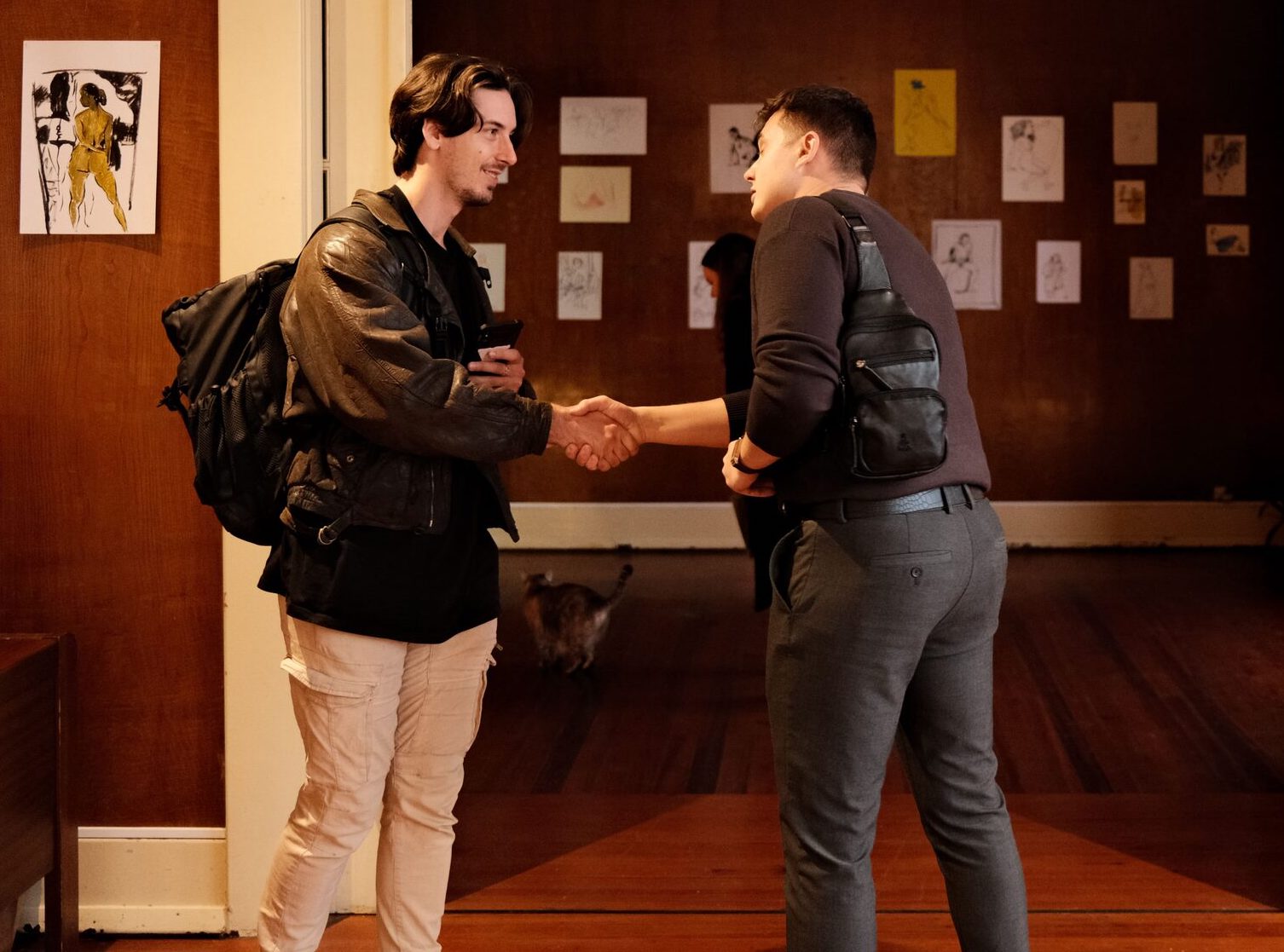

Photography: Nicole Sánchez
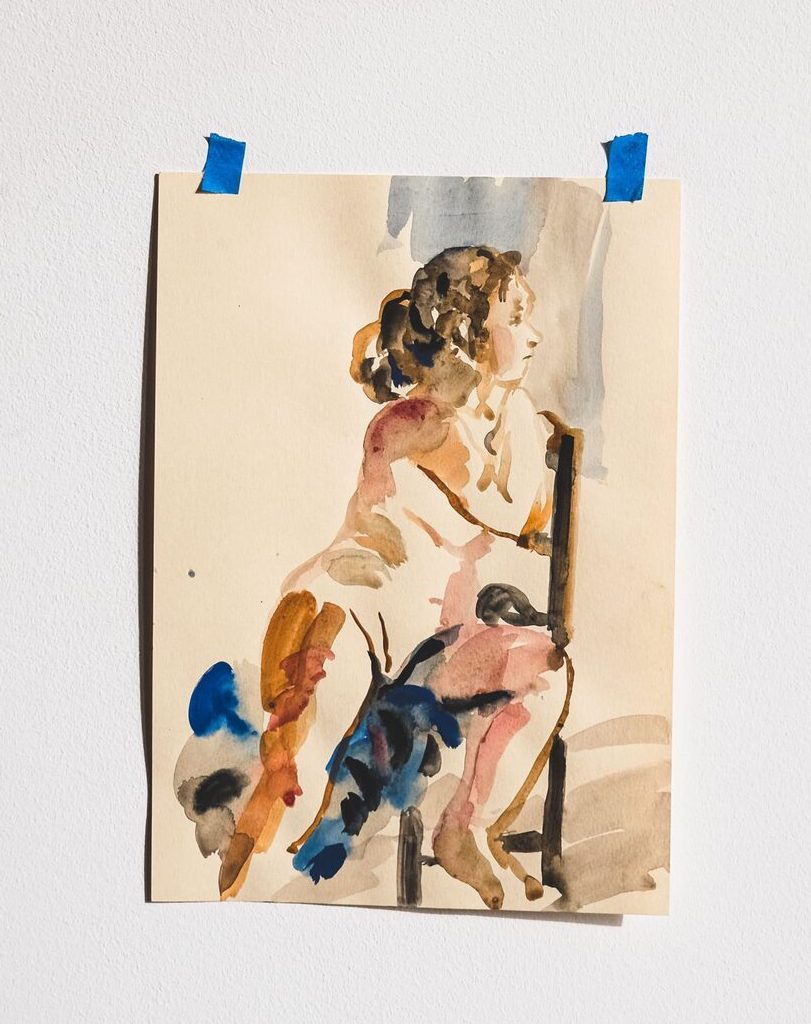

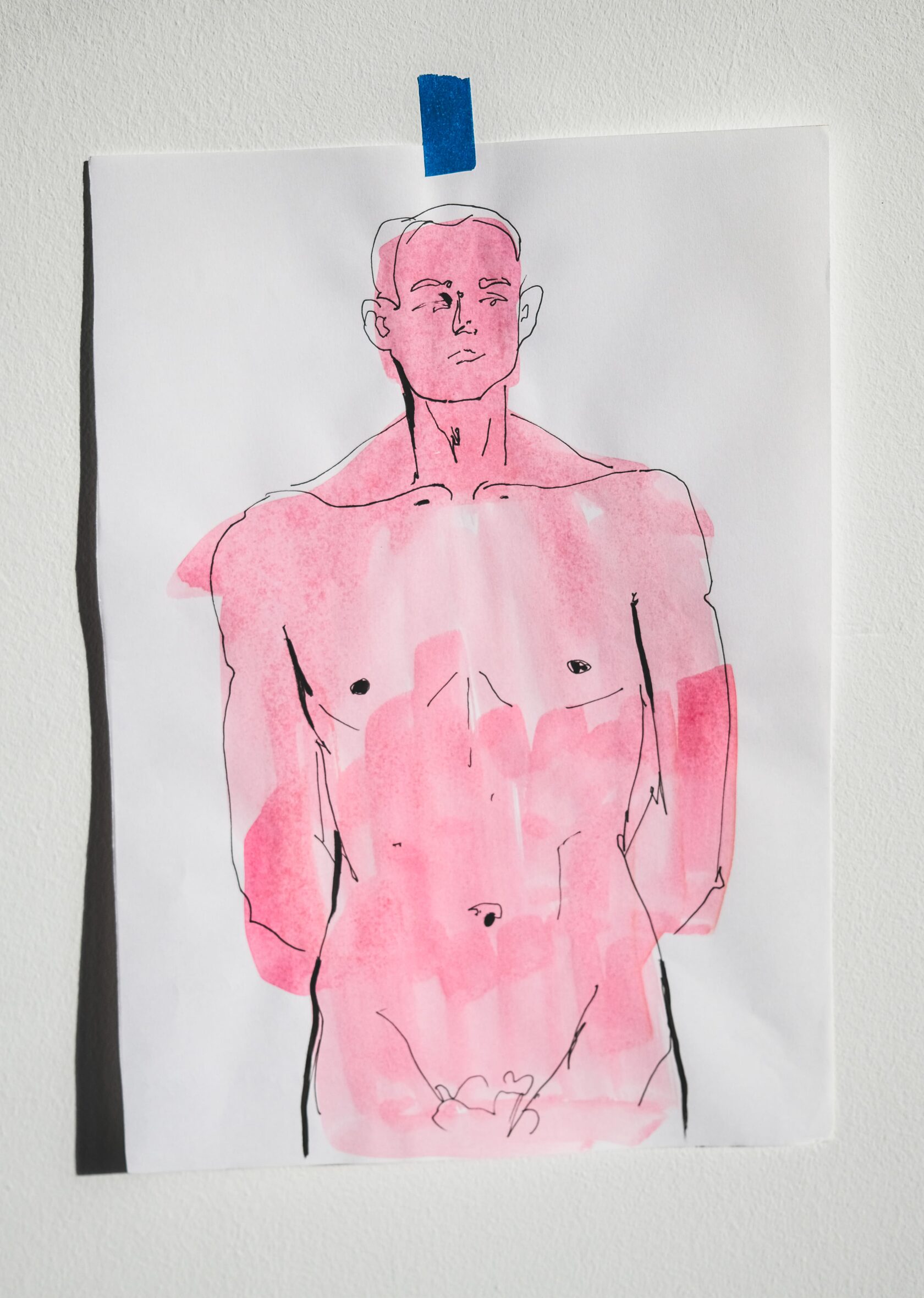
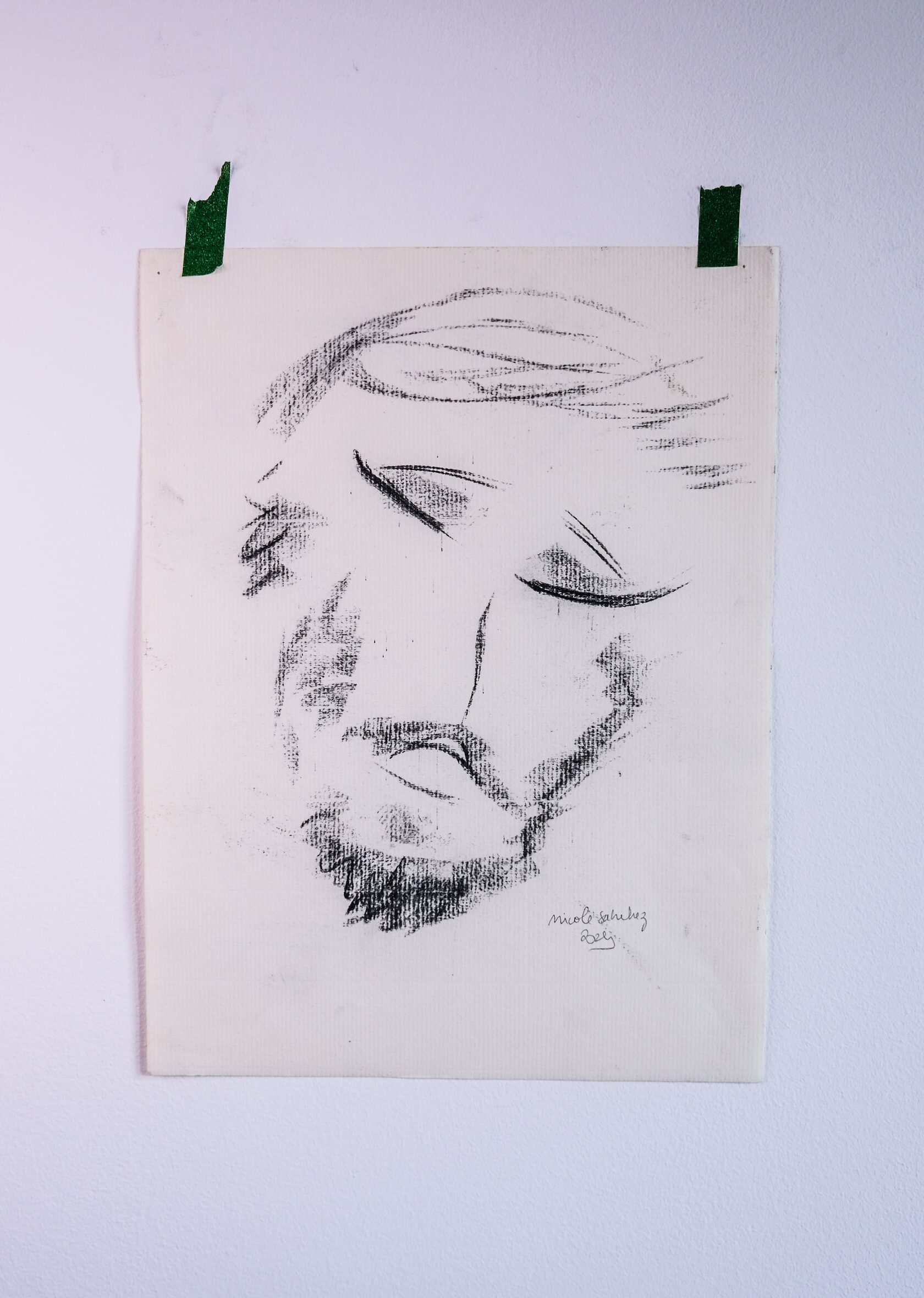
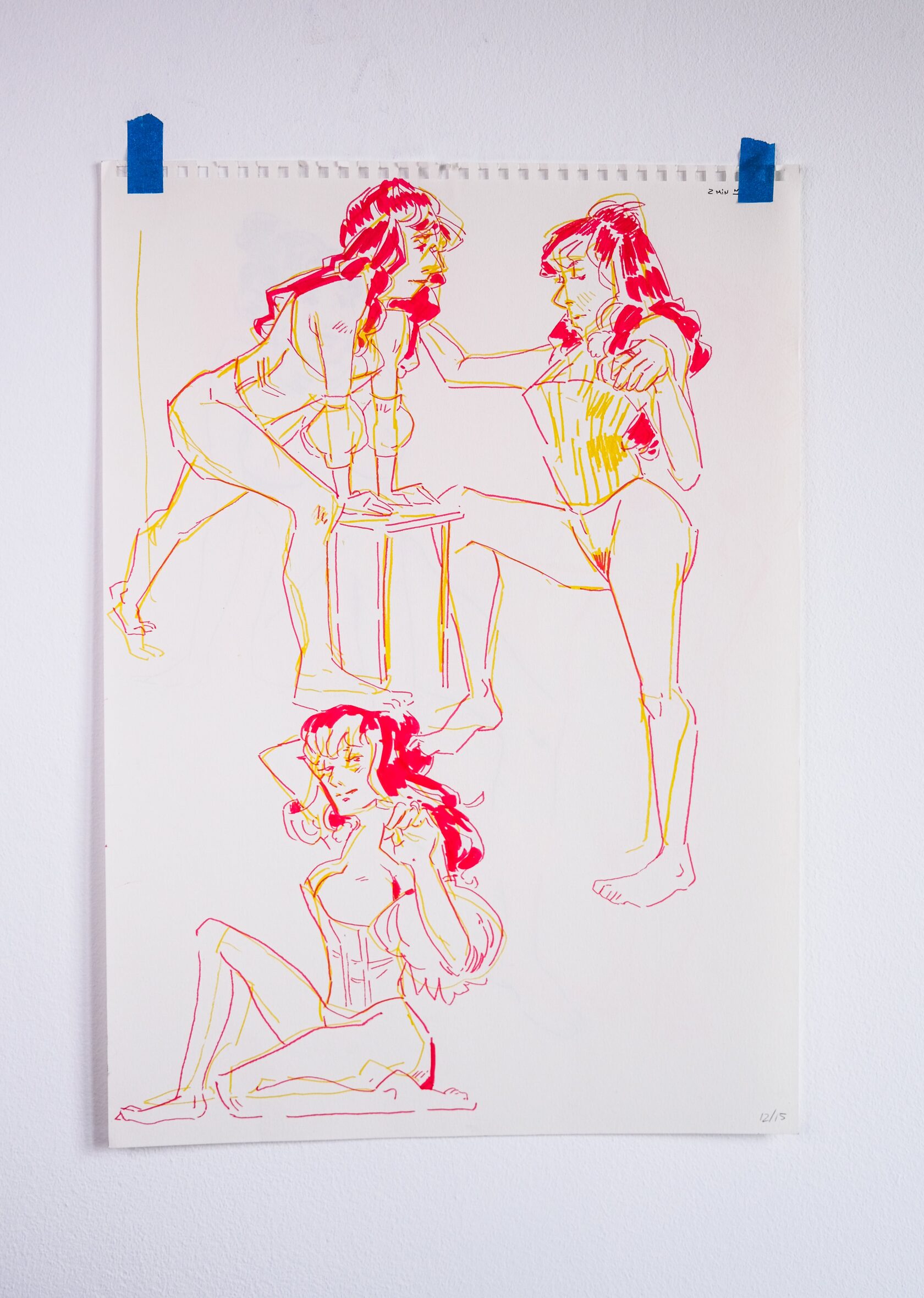
Photography: LDC
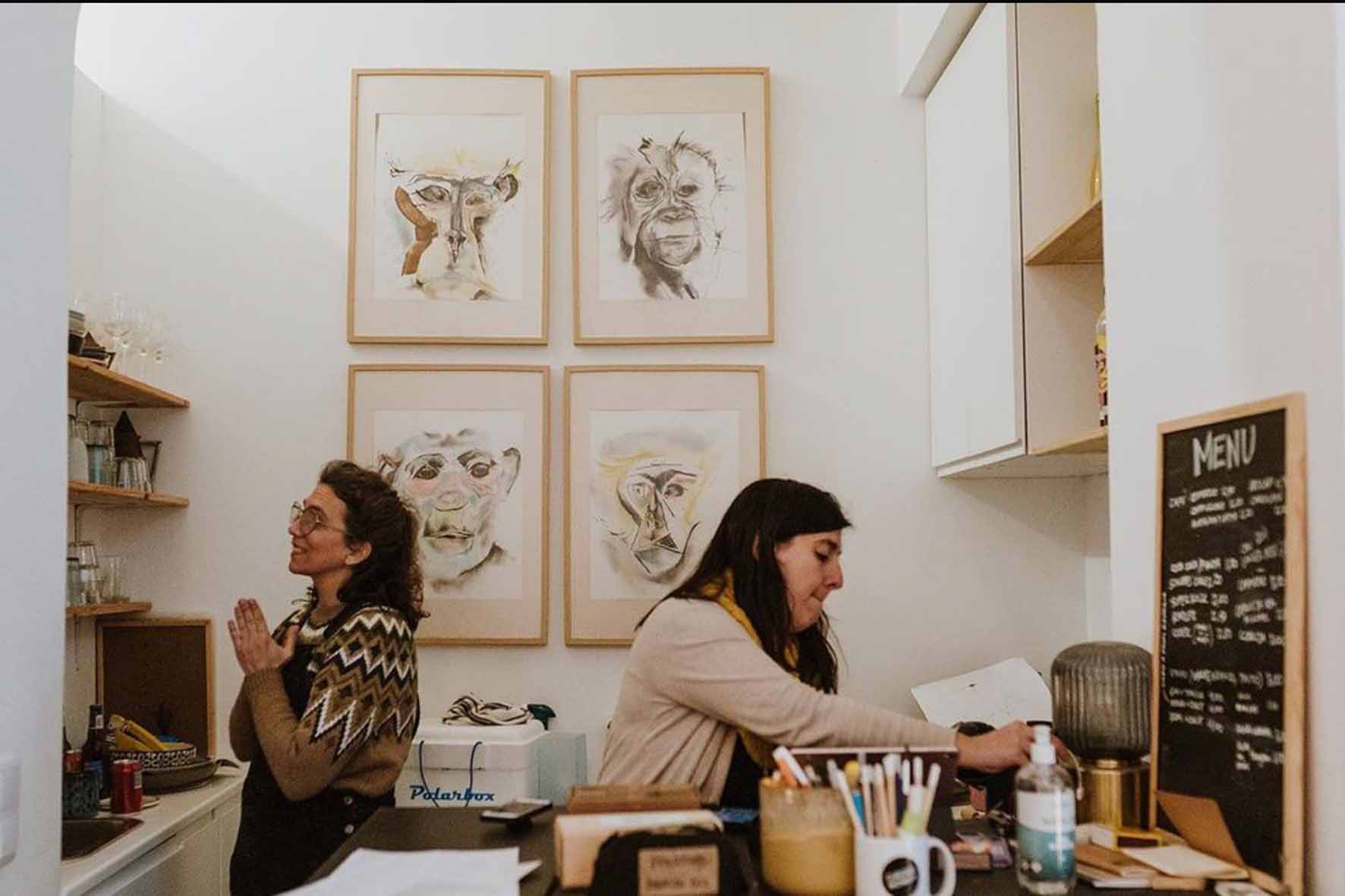
THE BREAKFAST CLUB
“Breakfast is everything.
The beginning, the first thing.
It is the mouthful that is the commitment to a new day, a continuing life.”
– A.A. Gill
The beginning, the first thing.
It is the mouthful that is the commitment to a new day, a continuing life.”
– A.A. Gill
— project duration
January 2023
— participating collectives
Lisbon Drawing Club
Artistas Anonimos
Mais Uno +1
— project location
Curious Monkey (Lisboa)
THE BREAKFAST CLUB brought together collectives, partners, artists, colleagues around what we love most, food.
Artistas Anonimos, Lisbond Drawing Club and Mais Uno +1 got together to share the most comforting meal, made by Las Cholas who supplied the delicious alfajores, cornucopias and empanadas.
What a start to the new year!
Artistas Anonimos, Lisbond Drawing Club and Mais Uno +1 got together to share the most comforting meal, made by Las Cholas who supplied the delicious alfajores, cornucopias and empanadas.
What a start to the new year!

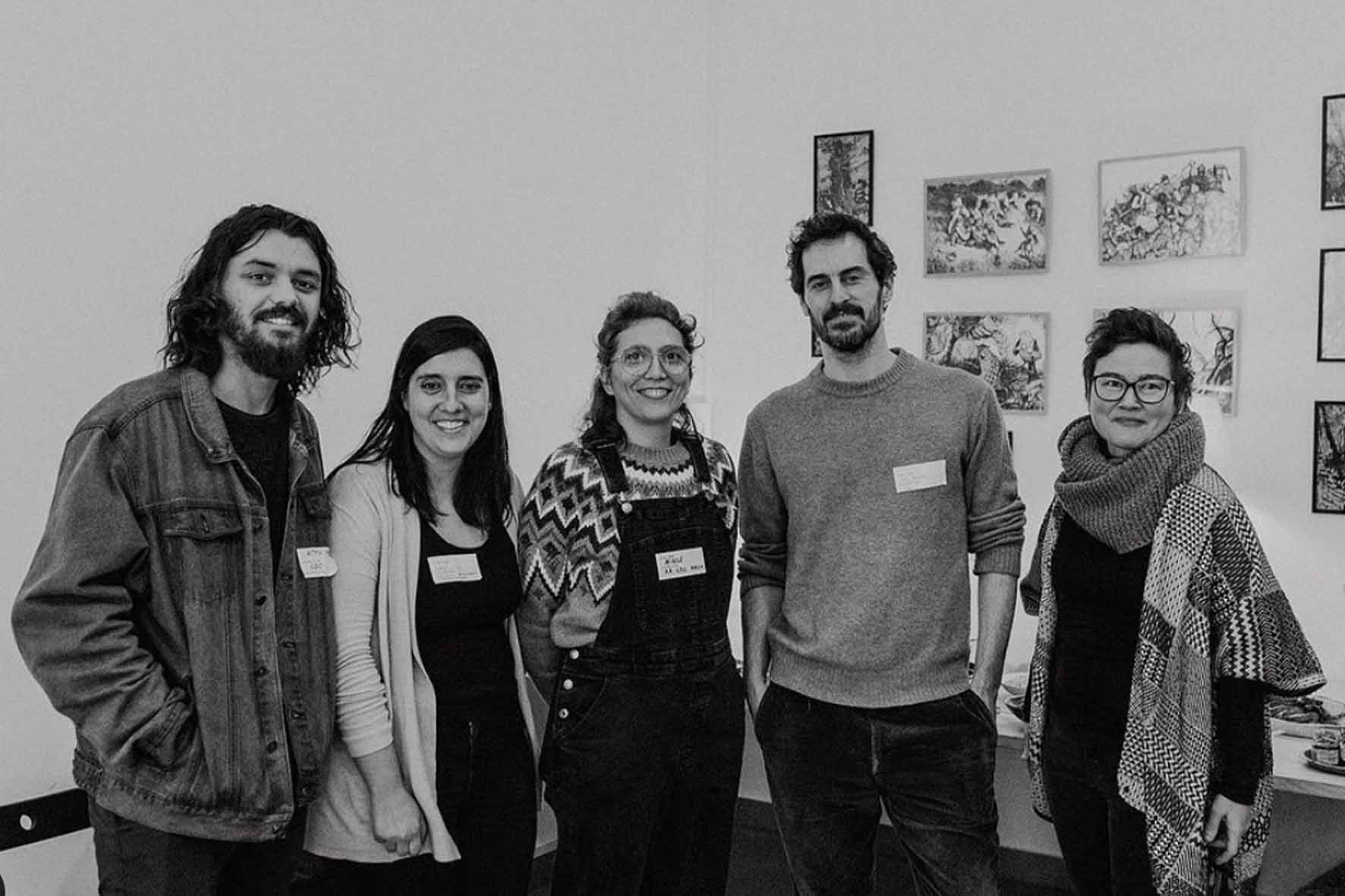
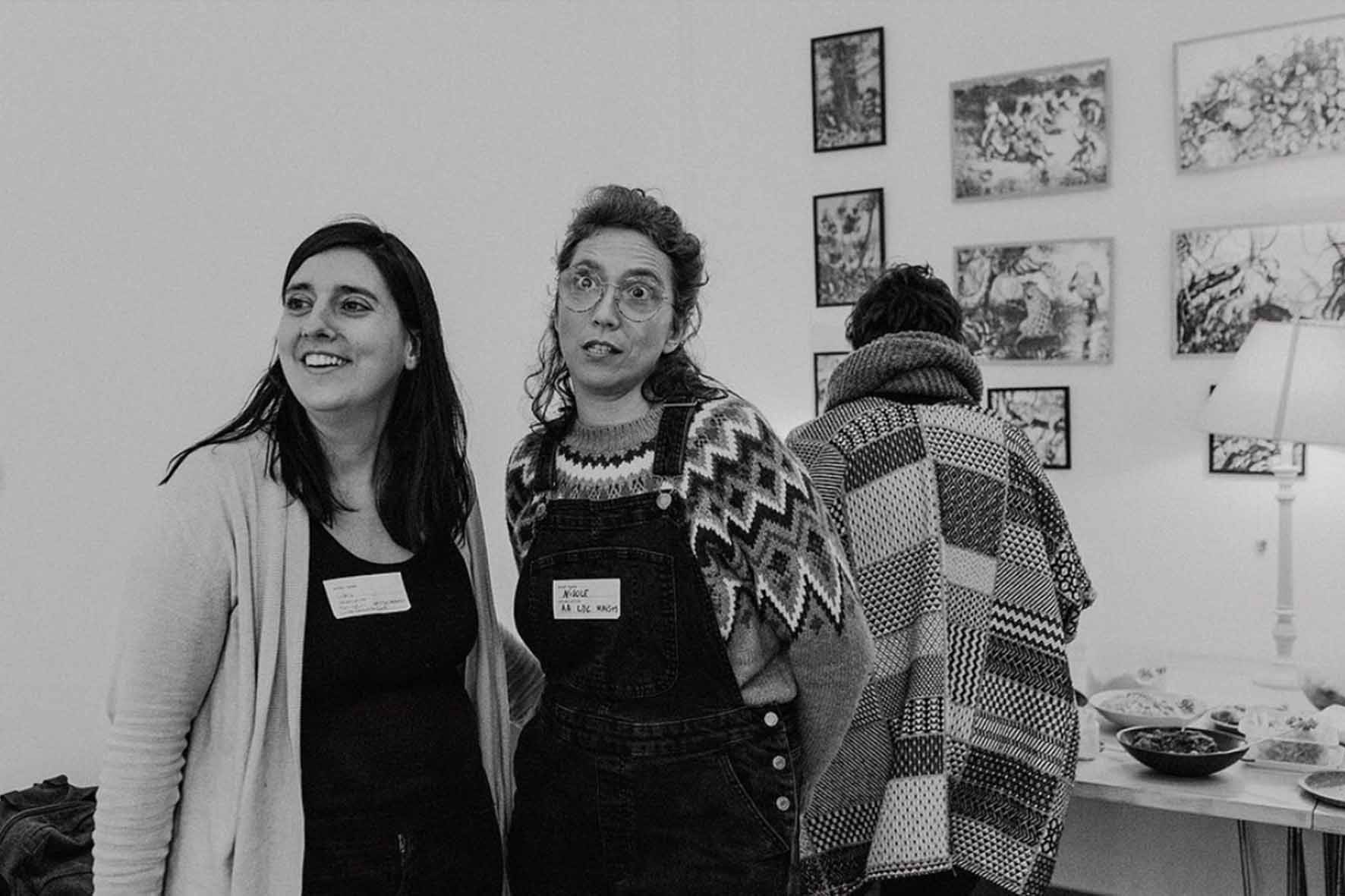
Photos by Inês Silva

PLAY(THE)GROUND:
(In)visible territories
SPRING RESIDENCIES IN CENTRO DE DIA NOSSA SENHORA DOS ANJOS AND CENTRO HOSPITALAR PSIQUIÁTRICO DE LISBOA
— project duration
February 18th 2025 - May 20th 2025
February 18th 2025 - May 20th 2025
— curatorial team
Lígia Fernandes
Ludmila Nawrotzki
Nicole Sánchez
Ricarda Oldekop
Sophia Niederkofler
Zoë Nowraty
Lígia Fernandes
Ludmila Nawrotzki
Nicole Sánchez
Ricarda Oldekop
Sophia Niederkofler
Zoë Nowraty
— contacts
Natalia Bošković
Anika Borko
Mihaela Rašica
Lyuba Hrisimova
Natalia Bošković
Anika Borko
Mihaela Rašica
Lyuba Hrisimova
— partner organization
CENTRO HOSPITALAR PSIQUIÁTRICO DE LISBOA
CENTRO DE DIA NOSSA SENHORA DOS ANJOS - SANTA CASA
CENTRO HOSPITALAR PSIQUIÁTRICO DE LISBOA
CENTRO DE DIA NOSSA SENHORA DOS ANJOS - SANTA CASA
— support
DGARTES
ARTISTAS ANONIMOS
HORTAS LX
LISBON DRAWING CLUB
MOURARIA CREATIVE HUB - CML
UNIVERSIDADE LUSÓFONA
RÁDIO AURORA
DGARTES
ARTISTAS ANONIMOS
HORTAS LX
LISBON DRAWING CLUB
MOURARIA CREATIVE HUB - CML
UNIVERSIDADE LUSÓFONA
RÁDIO AURORA
— support communication
GERADOR
GERADOR
"A city - (...) - is a complex organism that lives and reflects the lives of tens or hundreds of thousands of people. It reflects the nature of their activities, interests, culture and habits.
It appears harmoniously ordered in all its buildings if the inhabitants have been and are disciplined, aware of the benefits of mutual respect and cooperation. It benefits from the presence of imposing buildings if the economy is unburdened and the views of the citizens are wide; and if culture and artistic taste have deep roots among the population, it is only natural that this should be reflected in the buildings and urban ensembles..."
Francisco Keil do Amaral in 'Lisbon, a city in transformation' 1969
It appears harmoniously ordered in all its buildings if the inhabitants have been and are disciplined, aware of the benefits of mutual respect and cooperation. It benefits from the presence of imposing buildings if the economy is unburdened and the views of the citizens are wide; and if culture and artistic taste have deep roots among the population, it is only natural that this should be reflected in the buildings and urban ensembles..."
Francisco Keil do Amaral in 'Lisbon, a city in transformation' 1969
When we talk about contemporary cities, do we see them as cohesive territory, a mesh that brings people together, or further apart? How does the growth, the modernization, the exponentially frenetic rhythm in which we live by, affect territories in the city, to the extent of invisibility? How come we all know what these facilities are for, or even where they are, but fail to be curious about them, until we are exposed to some sort of necessity of them? How do they exist in the heart of the city, are public, and yet are to some extend invisible to the public? Can we bring them to surface as part of everyone in society, becoming a common ground for art and culture, bringing the invisibility to the visible transgressing physical boundaries and architectural borders?
In the spring of 2025 we invite you to two spaces that while placed in the very center of Lisbon, have remained largely unnoticed by those who pass by. These two communities, the daycare center and the psychiatric hospital, hold in them a full ecosystem that strives to live a normal life within the complexities of mental health and ageing. On the mystery of being just 'facilities' these territories host in them more than just basic survival care. They are open territories to bring in the everyday life of the city to make them visible and normalize their purpose, as not just for those in need or when needed. They are demanding and constantly seeking a sense of 'normality' to ease their presence, transforming the lives of those who use them in a more visible way. As passers-by do we ever feel curious about them, and by entering we feel a sense of trespassing or are we passively engaging and be part of their 'transparency'? This transparency is not by location or architecture but rather by a thin layer of societal labels that slowly exclude these spaces from the lives of many.
We hope that you will return with a new perspective, a reflection or a lesson, and above all, obligations which may last, long after this experience.
The PLAY(THE)GROUND program is a multidisciplinary residency aimed at people who are looking for space, focused time, and stimulating conversations that can help kick off or further develop a project that will engage with one of the two facilities in the center of Lisbon . Applicants can decide where to work, and for how long, during spring 2025.
<< Read the FAQ here >>
The studios are available from 18TH February 2025 to 20th May 2025. In the application process, candidates can indicate their time periods of occupation of the studios. In this way, we hope to meet the needs of potential residents as flexibly as possible.
Applicants can decide to work in different locations:
In the spring of 2025 we invite you to two spaces that while placed in the very center of Lisbon, have remained largely unnoticed by those who pass by. These two communities, the daycare center and the psychiatric hospital, hold in them a full ecosystem that strives to live a normal life within the complexities of mental health and ageing. On the mystery of being just 'facilities' these territories host in them more than just basic survival care. They are open territories to bring in the everyday life of the city to make them visible and normalize their purpose, as not just for those in need or when needed. They are demanding and constantly seeking a sense of 'normality' to ease their presence, transforming the lives of those who use them in a more visible way. As passers-by do we ever feel curious about them, and by entering we feel a sense of trespassing or are we passively engaging and be part of their 'transparency'? This transparency is not by location or architecture but rather by a thin layer of societal labels that slowly exclude these spaces from the lives of many.
We hope that you will return with a new perspective, a reflection or a lesson, and above all, obligations which may last, long after this experience.
The PLAY(THE)GROUND program is a multidisciplinary residency aimed at people who are looking for space, focused time, and stimulating conversations that can help kick off or further develop a project that will engage with one of the two facilities in the center of Lisbon . Applicants can decide where to work, and for how long, during spring 2025.
<< Read the FAQ here >>
The studios are available from 18TH February 2025 to 20th May 2025. In the application process, candidates can indicate their time periods of occupation of the studios. In this way, we hope to meet the needs of potential residents as flexibly as possible.
Applicants can decide to work in different locations:

Centro Hospitalar Psiquiátrico de Lisboa
(CHPL)

Centro de Dia Nossa Senhora dos Anjos
(Santa Casa)
— DISCOVER PLAY(THE)GROUND
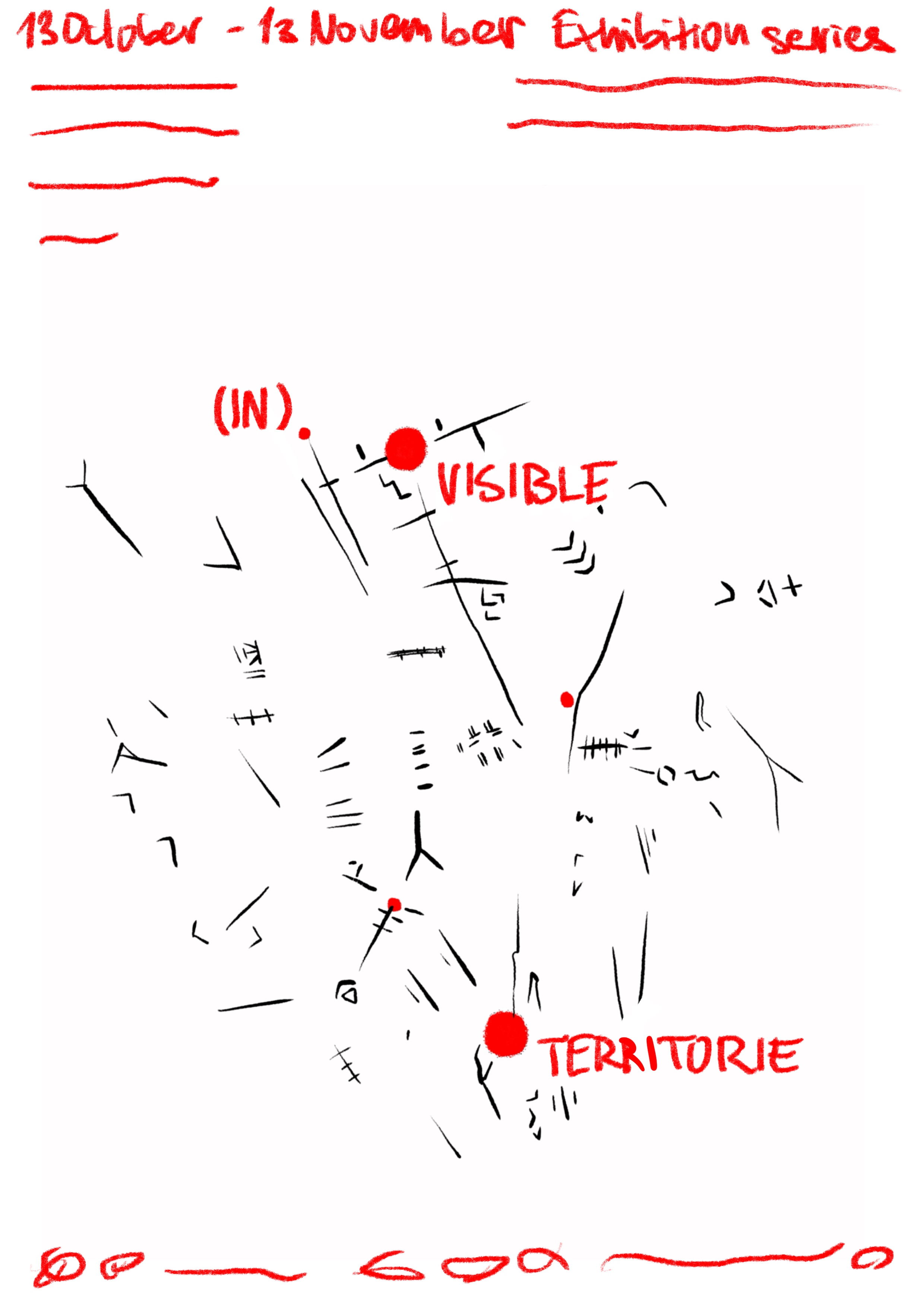
PLAY(THE)GROUND:
(In)visible territories
EXHIBITION
Centro de Dia Nossa Senhora dos Anjos
Centro Hospitalar Psiquiátrico de Lisboa
— exhibition duration
OCTOBER 13th - NOVEMBER 13th 2025
Where? Centro Hospitalar Psiquiátrico de Lisboa, pavilion 29
Address Av. do Brasil 53, 1700-063 Lisboa, Portugal
Monday to Sunday 2:00 pm - 6:00 pm
Where? Centro de Dia da N Sra dos Anjos
Address R. Andrade, n.º 13G, Lisboa, Portugal
Monday to Friday 9:00 am - 6:00 pm
OCTOBER 13th - NOVEMBER 13th 2025
Where? Centro Hospitalar Psiquiátrico de Lisboa, pavilion 29
Address Av. do Brasil 53, 1700-063 Lisboa, Portugal
Monday to Sunday 2:00 pm - 6:00 pm
Where? Centro de Dia da N Sra dos Anjos
Address R. Andrade, n.º 13G, Lisboa, Portugal
Monday to Friday 9:00 am - 6:00 pm
— curatorial team
Ellen Heppner
Frederike Antonia Ohnewald
Lea Sofie Scholl
Lígia Fernandes
Ludmila Nawrotzki
Lyuba Hrisimova
Natalia Bošković
Nicole Sánchez
Ricarda Oldekop
Ellen Heppner
Frederike Antonia Ohnewald
Lea Sofie Scholl
Lígia Fernandes
Ludmila Nawrotzki
Lyuba Hrisimova
Natalia Bošković
Nicole Sánchez
Ricarda Oldekop
— exhibiting artists
Catarina Neves (PT), Sofia Kamergorodski (NL), João Malato Correia (PT), Filipa Batista (PT), Gwendolyn van der Velden (NL), Sara Lourenço (PT), Leíze de Sá (BR), José Taborda (PT), Adriana Santos Lopes (PT), Julee Pinto (PT), Henrique Andrade (PT), Joana Nunes (PT), Berfin Alyeşil (TR), Carina Espadanal (PT), Graça Santos (PT), Laura Liventaal (EST), Joana Tomás (FR/PT), Vincent Rault (FR), Vardit Goldner
Catarina Neves (PT), Sofia Kamergorodski (NL), João Malato Correia (PT), Filipa Batista (PT), Gwendolyn van der Velden (NL), Sara Lourenço (PT), Leíze de Sá (BR), José Taborda (PT), Adriana Santos Lopes (PT), Julee Pinto (PT), Henrique Andrade (PT), Joana Nunes (PT), Berfin Alyeşil (TR), Carina Espadanal (PT), Graça Santos (PT), Laura Liventaal (EST), Joana Tomás (FR/PT), Vincent Rault (FR), Vardit Goldner
After a three month residency on the topic on Invisibility/Visibility, we featured the results of twenty artists, their processes, their conclusions, and a collective reflection on the stay at the day care centre for adults and the psychiatric hospital in lisbon. This exhibition will be on display throughout four weeks, making it a unique oportunity to meet the works, the participants, the artists and the territories.
We will reflect upon the topics around a place in a city that is both unwanted, invisible, but required and necesserary, therefore visible but only to a few. Bringing this inside outside and vice versa, aiming at a more free discussion on topics such as mental health and ageing.
Showcasing at unconvencional exhibiting places like a public hospital and a day care centre for adults, made us push boundaries around to whom are we exbithing for, our audience’s schedules and routines, obliging to them before us, and making sure all was in tune with their experience in artists practices ranging from video/photography, to collage, dance, ceramics, mapping, walks and tours, sound exploration.
More info on the residency programme in this link.
PUBLIC PROGRAM OF ACTIVITIES
Align with the exhibition (In)visible Territories at the Centro de Dia Nossa Senhora dos Anjos & Centro Hospitalar Psiquiátrico de Lisboa from the 13th October - 13th of November we invite you to a diverse public program (seminar, workshops, roundtable & film screenings). All activities are free and spots are limited to the capacity of each place.
Make sure to book it in your calendar in advance and show up slightly earlier than the starting time to guarantee your spot.
— partner organization
CENTRO HOSPITALAR PSIQUIÁTRICO DE LISBOA CENTRO DE DIA NOSSA SENHORA DOS ANJOS - SANTA CASA
UNIVERSIDADE LUSÓFONA
CENTRO HOSPITALAR PSIQUIÁTRICO DE LISBOA CENTRO DE DIA NOSSA SENHORA DOS ANJOS - SANTA CASA
UNIVERSIDADE LUSÓFONA
— support
DGARTES
ARTISTAS ANONIMOS
LISBON DRAWING CLUB
DGARTES
ARTISTAS ANONIMOS
LISBON DRAWING CLUB
— support communication
GERADOR
RÁDIO AURORA
GERADOR
RÁDIO AURORA
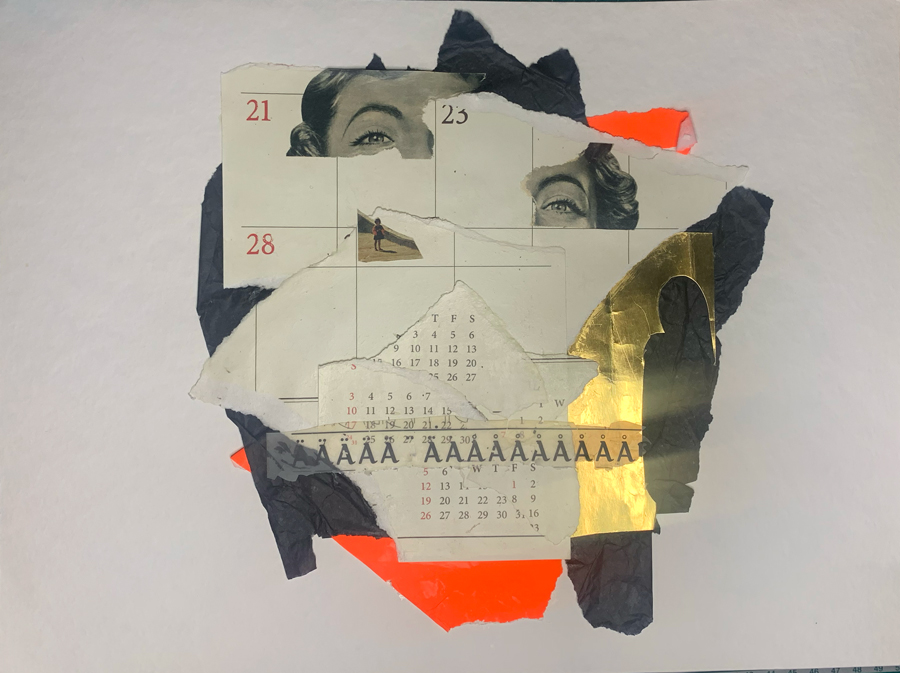
PLAY(THE)GROUND:
(In)visible territories
ACTIVITIESSpring Residency | Centro de Dia Nossa Senhora dos Anjos, Centro Hospitalar Psiquiátrico de Lisboa
— exhibition duration
OCTOBER 13th - NOVEMBER 13th 2025
Where? Centro Hospitalar Psiquiátrico de Lisboa, pavilion 29
Address Av. do Brasil 53, 1700-063 Lisboa, Portugal
Monday to Sunday 2:00 pm - 5:00 pm
Where? Centro de Dia da N Sra dos Anjos
Address R. Andrade, n.º 13G, Lisboa, Portugal
Monday to Friday 9:00 am - 6:00 pm
OCTOBER 13th - NOVEMBER 13th 2025
Where? Centro Hospitalar Psiquiátrico de Lisboa, pavilion 29
Address Av. do Brasil 53, 1700-063 Lisboa, Portugal
Monday to Sunday 2:00 pm - 5:00 pm
Where? Centro de Dia da N Sra dos Anjos
Address R. Andrade, n.º 13G, Lisboa, Portugal
Monday to Friday 9:00 am - 6:00 pm
— curatorial team
Lígia Fernandes
Nicole Sánchez
Ricarda Oldekop
Frederike Antonia Ohnewald
Lyuba Hrisimova
Natalia Bošković
Ludmila Nawrotzki
Lígia Fernandes
Nicole Sánchez
Ricarda Oldekop
Frederike Antonia Ohnewald
Lyuba Hrisimova
Natalia Bošković
Ludmila Nawrotzki
— exhibiting artists
Catarina Neves (PT), Sofia Kamergorodski (NL), João Malato Correia (PT), Filipa Batista (PT), Gwendolyn van der Velden (NL), Sara Lourenço (PT), Leíze de Sá (BR), José Taborda (PT), Adriana Santos Lopes (PT), Julee Pinto (PT), Henrique Andrade (PT), Joana Nunes (PT), Berfin Alyeşil (TR), Carina Espadanal (PT), Graça Santos (PT), Laura Liventaal (EST), Joana Tomás (FR/PT), Vincent Rault (FR), Vardit Goldner
Catarina Neves (PT), Sofia Kamergorodski (NL), João Malato Correia (PT), Filipa Batista (PT), Gwendolyn van der Velden (NL), Sara Lourenço (PT), Leíze de Sá (BR), José Taborda (PT), Adriana Santos Lopes (PT), Julee Pinto (PT), Henrique Andrade (PT), Joana Nunes (PT), Berfin Alyeşil (TR), Carina Espadanal (PT), Graça Santos (PT), Laura Liventaal (EST), Joana Tomás (FR/PT), Vincent Rault (FR), Vardit Goldner
PUBLIC PROGRAM OF ACTIVITIES
Align with the exhibition (In)visible Territories at the Centro de Dia Anjos & Centro Hospitalar Psiquiátrico de Lisboa from the 13th October - 13th of November we invite you to a diverse public program (seminar, workshops, roundtable & film screenings).
→ TO SOME OF THE ACTIVITIES REGISTRATION IS REQUIRED (SEE BELOW)
---
OCTOBER 16
5.30 PM - 6.30 PM
ReWorkshop
Centro Hospitalar Psiquiátrico de Lisboa, pavilion 29, Av. do Brasil 53, 1700-063 Lisboa, Portugal
→ no registration needed
This workshop offers alternative methods of creating a piece of art from natural materials. The artist Julee Pinto will guide you through the one hour exploration on decay and composting and how these materials can be the highlight of your artistic process.
---
OCTOBER 18
10.30 AM - 1.00 PM
Drawing session
Centro de dia - Centro de Dia da N Sra dos Anjos, R. Andrade, n.º 13G, Lisboa, Portugal
→ register here
We invite you to a drawing session in collaboration with Lisbon Drawing Club, where residents of Centro de Dia Nossa Senhora dos Anjos will be our models. All levels of experience are welcome! Join us for a warm morning with a creative drawing community. We will also meet Catarina Neves one of the PLAY(THE)GROUND resident artists with her project from the residency programme.
---
OCTOBER 19
10.30 AM - 1.00 PM
Drawing session
the Hospital - Centro Hospitalar Psiquiátrico de Lisboa, pavilion 29, Av. do Brasil 53, 1700-063 Lisboa, Portugal
→ register here
We invite you to a drawing session in collaboration with Lisbon Drawing Club, where the residents of Centro Hospitalar Psiquiátrico de Lisboa - Pavilhão 29 will be our models for the session. All levels of experience are welcome! Join us for a warm morning with a creative drawing community. We will also meet Julee Pinto one of the PLAY(THE)GROUND artists and hear about their project during her residency.
---
OCTOBER 20 - 21 (9.00 AM - 6.00PM)
PLAY(THE)GROUND SEMINAR
Universidade Lusófona - Campo Grande 376, 1749-024 Lisboa, Portugal
→ register here
PLAY(THE)GROUND seminar includes two full day of activities which you can join fully or partially, including presentations, conversations, performances, around the topics of art, ageing and mental health with the residents artists, university and partners involved in this year's PLAY(THE)GROUND edition (IN)VISIBLE TERRITORIES.
---
OCTOBER 22
5.30 PM - 6.30 PM
Watercolor Painting Workshop
Centro de Dia da N Sra dos Anjos, R. Andrade, n.º 13G, Lisboa, Portugal
→ no registration needed
Gwendolyn van der Velden, an artist in residency at the Centro de Dia and invites you to an Aquarel workshop under the title I see, I see, What you don't see. All levels of experience are welcome!
---
OCTOBER 23
5.30 PM - 6.30 PM
Video Screening/Performance
Centro Hospitalar Psiquiátrico de Lisboa, pavilion 29, Av. do Brasil 53, 1700-063 Lisboa, Portugal
→ no registration needed
A performance act with the video installation Amor Fati by the artist Berfin Alyeşil created during the artist’s residency, exploring the visual and spatial echoes between Lisbon and Istanbul. The two seven-hilled cities, divided by water, are bound by memory, myth, and longing.
---
OCTOBER 30
5.30 PM - 6.30 PM
Handmade Collage Workshop
Centro Hospitalar Psiquiátrico de Lisboa, pavilion 29, Av. do Brasil 53, 1700-063 Lisboa, Portugal
→ no registration needed
I’m still here is an artistic creation workshop in handmade collage, by the artist Graça Santos. Participants are invited to start a “Self-Recognition Notebook,” which will function as a graphic diary, using the manual collage technique from elements taken from the materials they will have available.
---
November 6
3.00 PM - 4.00 PM
Arejado football club second match
4.30 PM - 5.30 PM
Guided tour to the exhibition
Centro Hospitalar Psiquiátrico de Lisboa, pavilion 29, Av. do Brasil 53, 1700-063 Lisboa, Portugal
→ no registration needed
All activities are free of charge and materials are included.
ReWorkshop
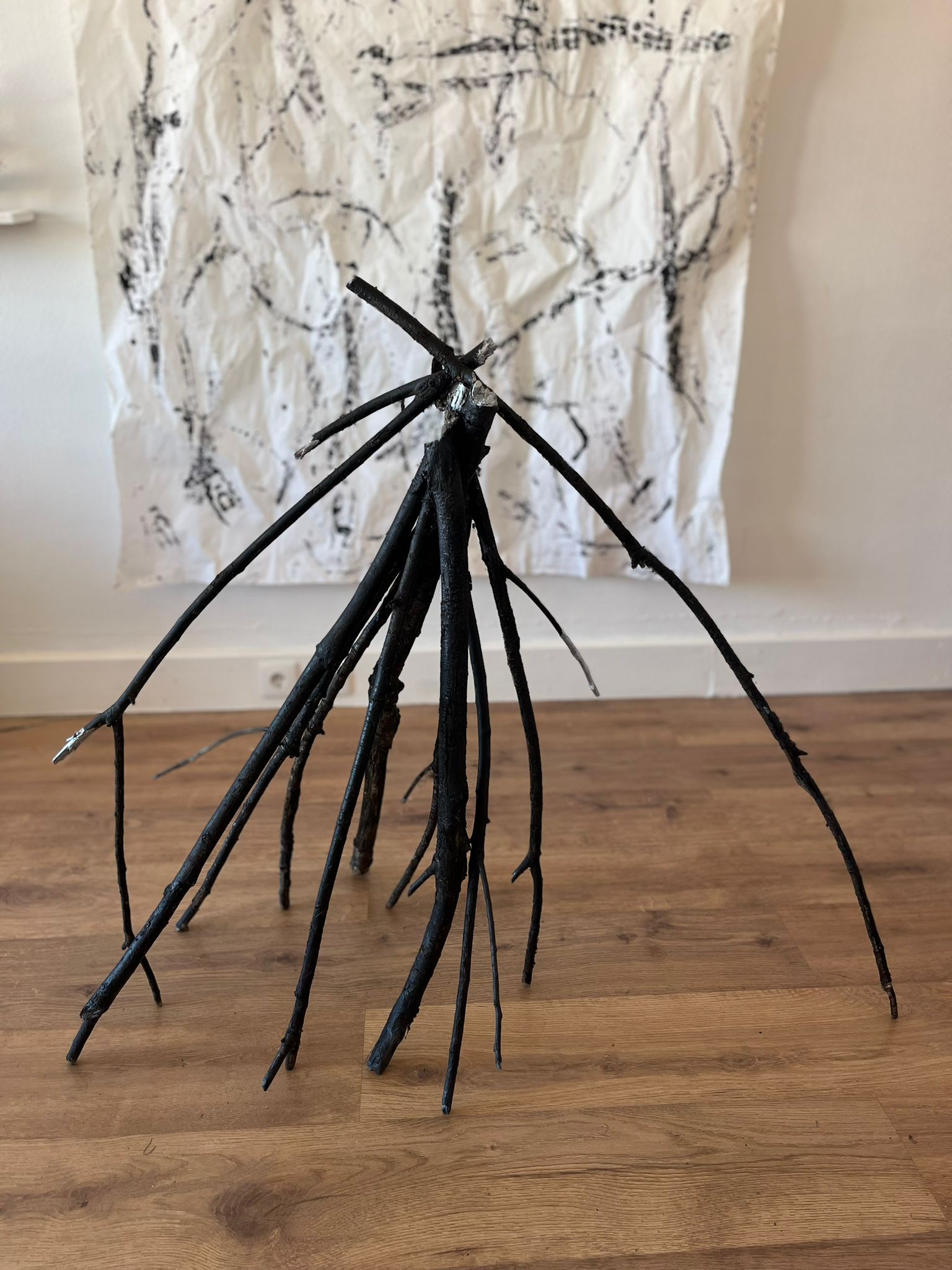
Drawing session
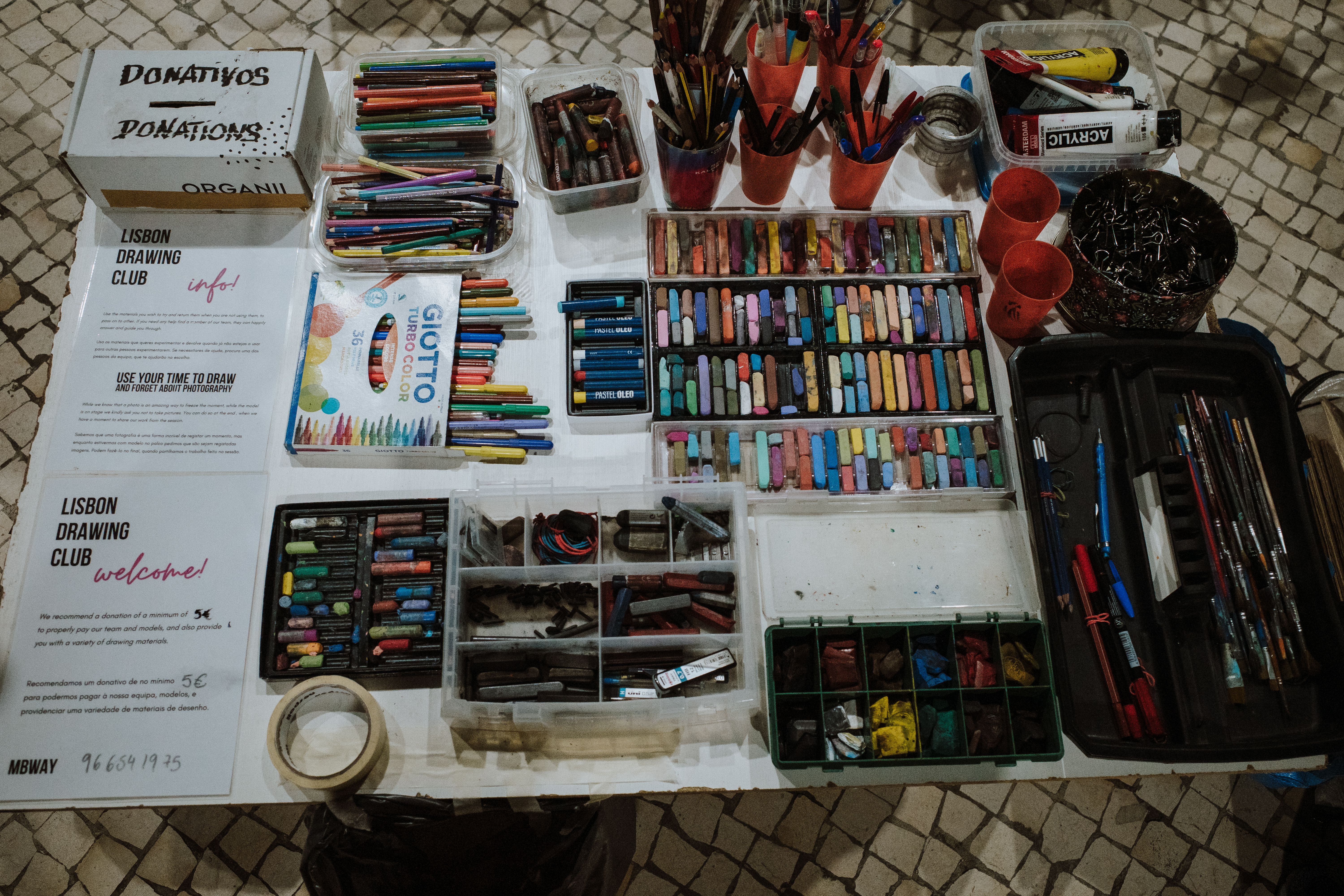
Drawing session
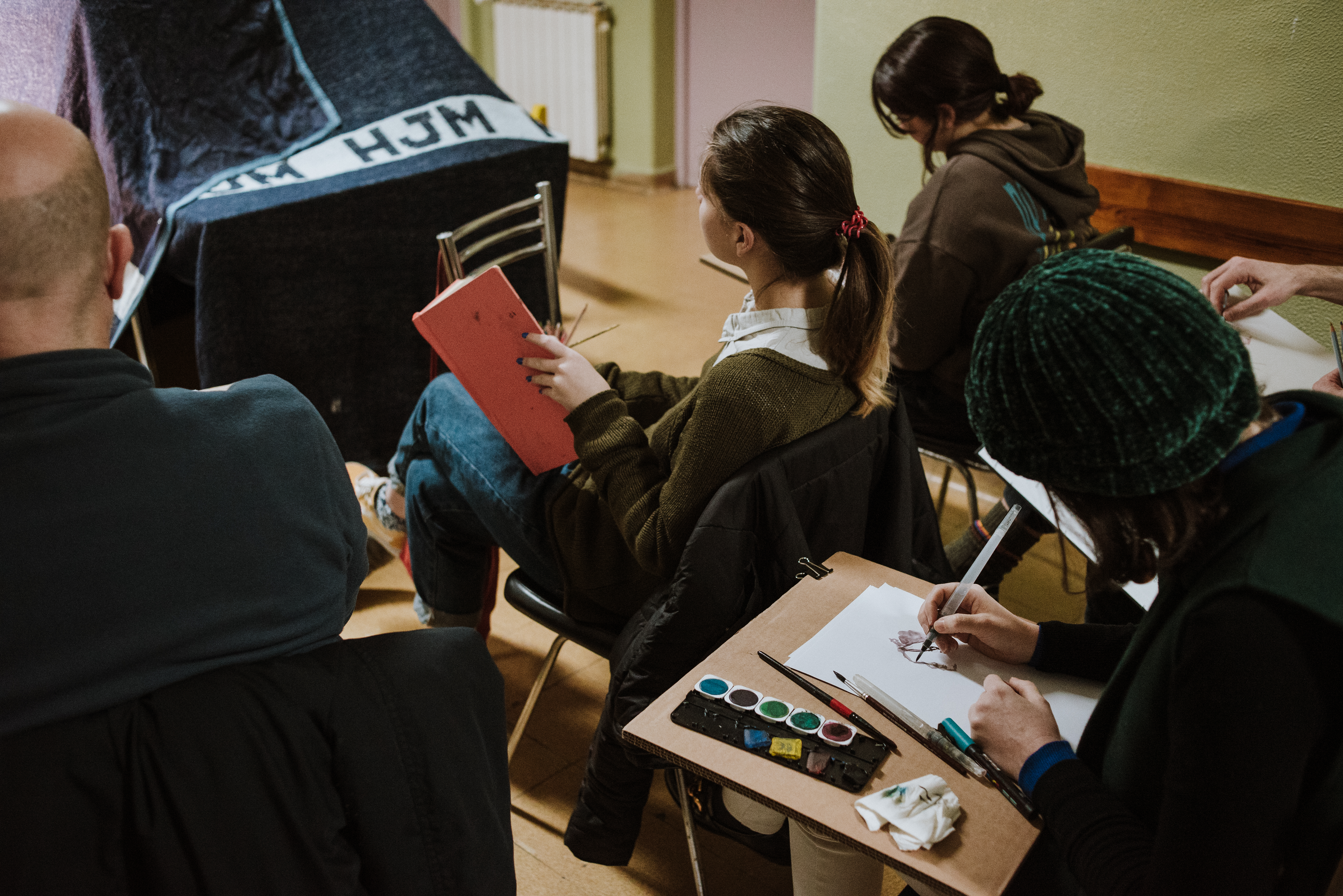
PLAY(THE)GROUND SEMINAR

Watercolor Painting Workshop
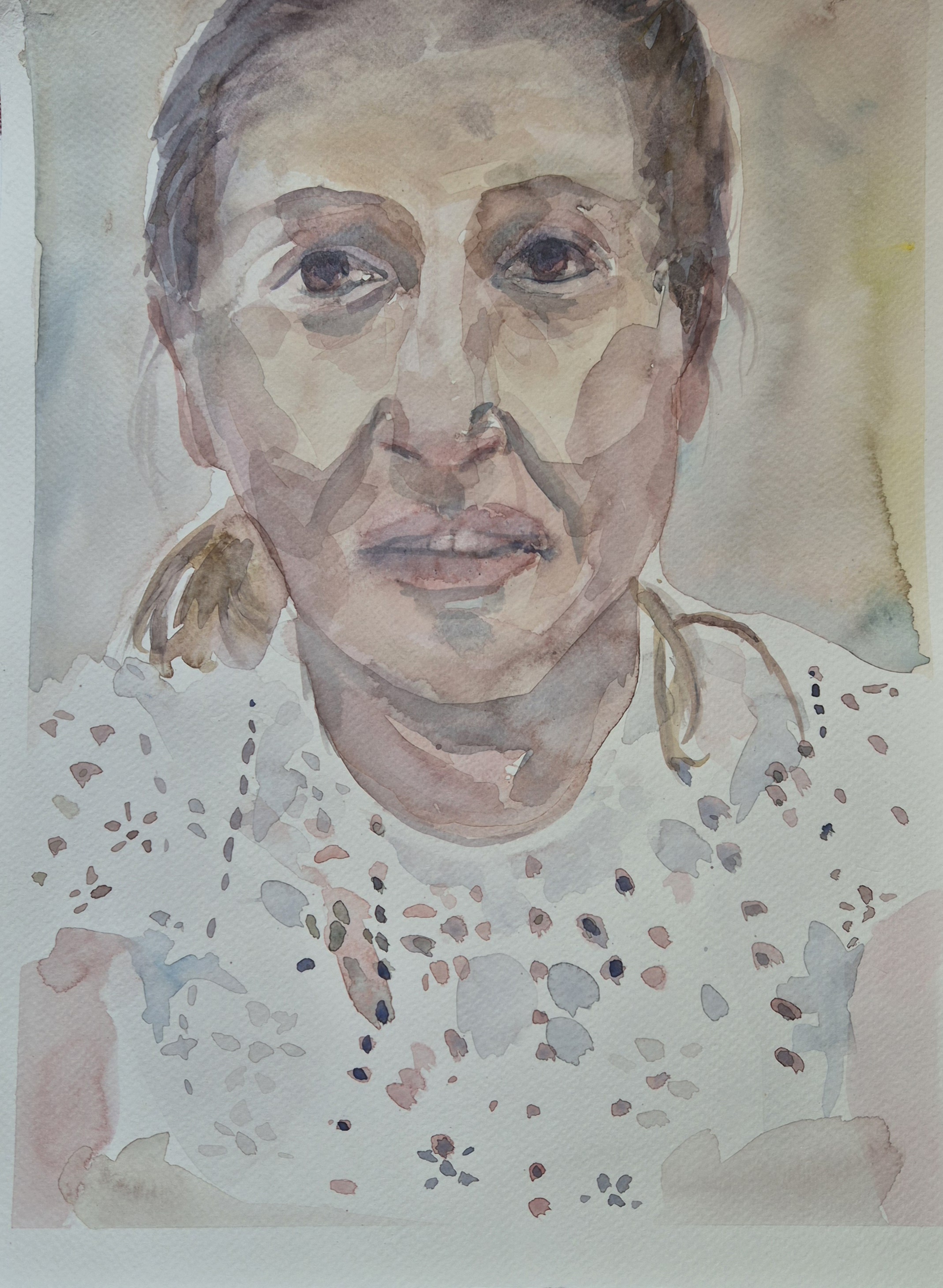
Video Screening/Performance

Handmade Collage Workshop

Video Screening
— partner organization
CENTRO HOSPITALAR PSIQUIÁTRICO DE LISBOA CENTRO DE DIA NOSSA SENHORA DOS ANJOS - SANTA CASA
UNIVERSIDADE LUSÓFONA
CENTRO HOSPITALAR PSIQUIÁTRICO DE LISBOA CENTRO DE DIA NOSSA SENHORA DOS ANJOS - SANTA CASA
UNIVERSIDADE LUSÓFONA
— support
DGARTES
ARTISTAS ANONIMOS
LISBON DRAWING CLUB
DGARTES
ARTISTAS ANONIMOS
LISBON DRAWING CLUB
— support
communication
GERADOR
RÁDIO AURORA
communication
GERADOR
RÁDIO AURORA
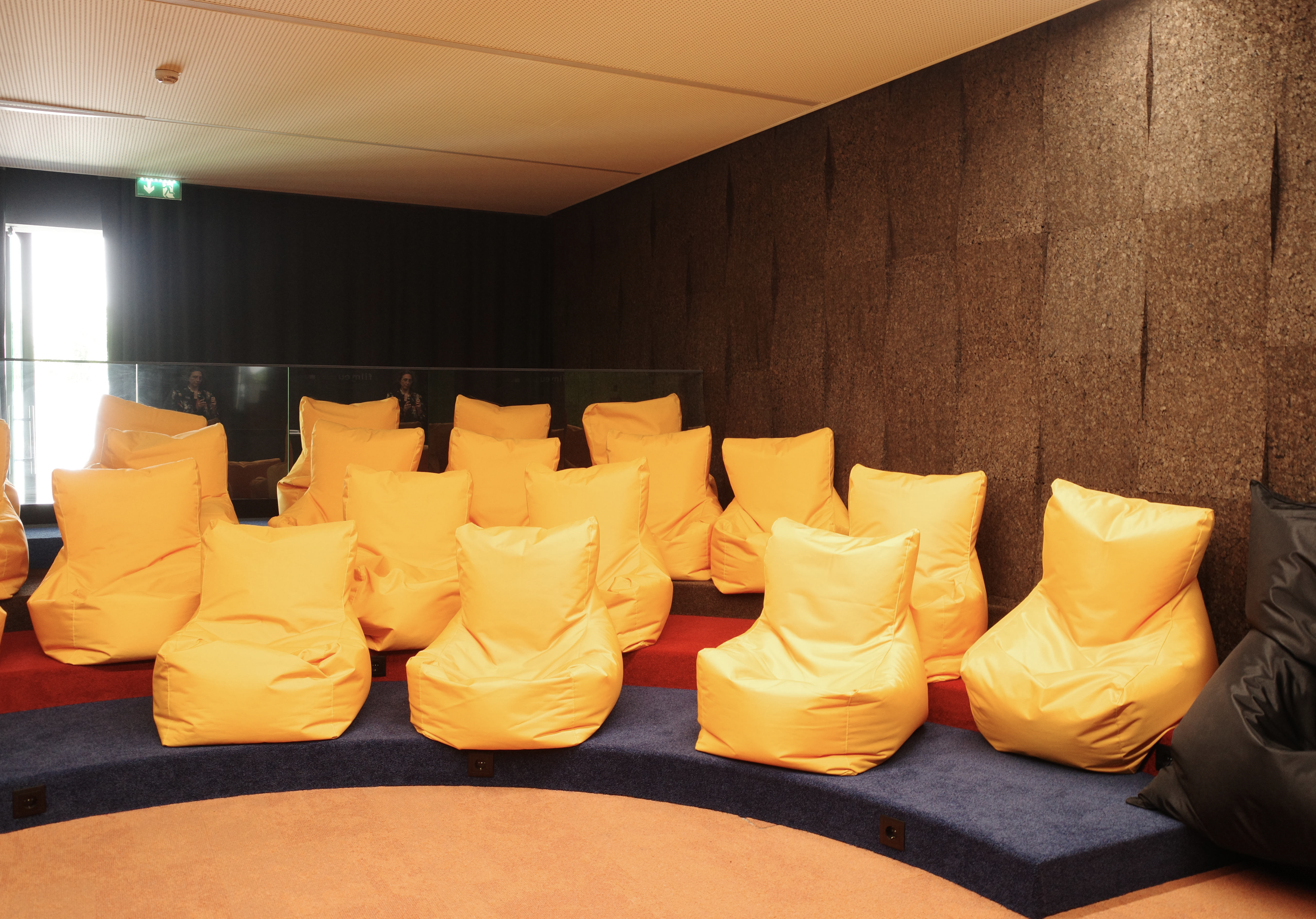
PLAY(THE)GROUND:
(In)visible territories
SEMINARUNIVERSIDADE LUSÓFONA
— seminar duration
OCTOBER 20th & 21ST 2025
Universidade Lusófona
Campo Grande 376, 1749-024 Lisboa, Portugal
OCTOBER 20th & 21ST 2025
Universidade Lusófona
Campo Grande 376, 1749-024 Lisboa, Portugal
DETAIL PROGRAMME
AUDITÓRIO ESPAÇO KUADROS 20th OCTOBER
| 9h00-9h30 | Welcoming in to the two day seminar - overview agenda - housekeeping |
| 9h30-10h00 | mais uno +1 presentation on the collective's work and practices |
| 10h00-10h30 | mais uno +1 PLAY(THE)GROUND multidisciplinary residency programme overview |
| 10h30 - 10h45 | coffee break |
| 10h45-11h30 | mais uno +1 PLAY(THE)GROUND residency programme at the daycare centre for adults and the spychiatric hospital |
| 11h30-12h15 | Open discussion with Isilda Geraldo, Susana Anjos from Centro de Dia Nossa Senhora dos Anjos, and Alexandre Costa head nurse at pavillion 29 from CHPL, moderated by mais uno +1 and radio aurora |
| 12h30-14h00 | lunch break |
| 14h00-14h15 | gathering for afternoon activities |
| 14h15-16h00 | An invitation for an artistic activity around the concept of waiting in mental institution with Adriana Lopes. |
| 16H00-16H30 | coffee break |
| 16h30-17h30 | Screening of Laura Liventaal short film On Being Human, created during her residency programme, open discussion around the film and the topic it depicts. |
| 17H30-18H00 | Wrapping up - networking coffee. |
Auditório (sala S 0.10) 21st OCTOBER
| 9h00-9h30 | Welcoming in to the two day seminar - overview agenda - housekeeping |
| 9h30-10h00 | Seminar introduction within the context of the master's in social gereontology by Pedro Machado dos Santos. |
| 10h00-10h30 | mais uno +1 short presentation on the collective work and PLAY(THE)GROUND residency programme within communities of elderly people. Social engaged art practices. |
| 10h30 - 10h45 | coffee break |
| 10h45-11h30 | Presentation of works by artists in residency at Centro de Dia Nossa Senhora dos Anjos - Sara Lourenço & Leize de Sá |
| 11h30-12h15 | Discussion about mental health and ageing with Centro de Dia staff and some people from the day care centre that participated in the resdiency art projects with residents. |
| 12h30-14h00 | lunch break |
| AUDITÓRIO ESPAÇO KUADROS |
| 14h00-14h15 | gathering for afternoon activities |
| 14h15-16h00 | Presentation of artists works from the residency programme at the psychiatric hospital - Henrique Andrade + Joana Nunes |
| 16H00-16H30 | coffee break |
| 16h30-17h30 | Presentation of artist work from the residency programme at the day care centre for adults by Filipa Batista |
| 17H30-18H00 | Wrapping up - networking coffee. |
BIOS
mais uno +1
mais uno +1 is a curatorial, project, and research collective that acts in search of the transformative power of art through the creation of incremental relationships/ecosystems between artists, communities, and territories. Based in lisbon, the collective has been hosting a residency programme PLAY(THE)GROUND that brings contemporary art practices in to play with communities and territories excluded from these cultural offeres in the city of lisbon and its surrounding outskirts.
Pedro Machado Dos Santos
Pedro Santos has a Degree in Psychology and is part of the Faculty of Psychology and Education Sciences, University of Lisbon. Master in Social Gerontology: Quality of Gerontological Services, Psychology Faculty of the Autonomous University of Madrid. Doctorate in Biomedical Sciences, Institute of Biomedical Sciences Abel Salazar of the University of Porto (ICBAS-UP). Specialist in Clinical Psychology with advanced specialties in Psychogerontology, Neuropsychology, and Community Psychology. Researcher at CISIS and CINTESIS – Center for Health Technology and Services Research. Professor at the Lusófona University.
Centro de Dia Nossa Senhora do Anjos
This is a social facility that provides daycare to the adults and elderly living in Lisbon. Very close to downtown area, the center hosts a large community that travels a few kilometers to spend a meal or a morning or an afternoon in company, playing games, crocheting, enjoying walks and going out. It is by definition a place to entertain, but this in particular turns the engagement with the inside community and the outside community rather more fluid, and constantly creating innumerable artistic and cultural activities that defy paradigms, preconceptions and stereotypes. While in some places they are referred to as places where you go to die, here people relive, are active and stimulated while respected for their limitations and backgrounds.
Centro Hospitalar Psiquiátrico de Lisboa - Pavilhão 29
The psychiatric hospital of Lisbon is a fertile ground, placed on the border of the center of Lisbon, 2 feet away from the airport. Desired for decades, this plot of land hosts several pavilions dedicated and focused on bringing better strength for those suffering from metal health conditions. Pavilion 29 is the last place where people are still within hospital care but are also free to perform their everyday lives, with open doors, counselors for their integration in society, and vice versa. As well. as the Pavilion, this team is responsible for those who live inside the hospital at the houses of Tilias, and Platanos, which host a small community of mainly elderly people whose state provides for lifetime support due to mental health conditions.
ARTISTS BIOS
| Adriana Lopes |
Laura Liventaal
Laura Liventaal is a multidisciplinary artist and documentary film director from Estonia whose work centers on the complexities of the human experience. Driven by a deep curiosity about the individual, her practice explores themes of trauma, intimacy, authenticity, and love. Her preferred mediums are sculpture, photography, video, painting, performance, and film. Liventaal has participated in exhibitions and film festivals across Europe. With a background in philosophy, filmmaking, and contemporary art, she weaves intellectual inquiry with visual storytelling, creating emotionally resonant works that open up new perspectives and invite deeper self-reflection. Her artistic process is both a means of exploration and a personal pursuit of growth.
Henrique Andrade & Joana Nunes
Henrique and Joana are architects and visual artists working respectively in the fields of drawing and photography. They have collaborated on projects that intersect visual arts, urban space, and experimental pedagogical processes. They are both researchers at DINÂMIA’CET-Iscte, where they are part of creative labs focused on artistic experimentation in visual arts education and spatial literacy. Their interests lie in collaborative forms of spatial representation and in mediating relationships between marginal spaces and communities. They approach artistic research as a gesture of connection between the city’s non-dominant narratives. The project 29.5 brings this vision to life through the anonymous exchange of letters between users of a psychiatric hospital and the city, opening a sensitive channel of communication between often isolated realities.
Filipa Batista
Filipa is a multidisciplinary artist with a master's degree in Sculpture from the Faculty of Fine Arts of the University of Lisbon. She develops multidisciplinary research in various areas of sculpture, installation, medals, and participatory art. In her participatory art projects, she uses community mediation as a central tool to generate dialogue and collective reflection, where she investigates the transdisciplinary potential of artistic processes as a form of intervention and transformation.
Leize de Sá
Leíze de Sá is a visual artist who works with mixed techniques, ranging from photography to embroidery, to talk about her perception of time, memory, and how space can mediate our experience of the world.
Sara Lourenço
Sara Lourenço was born and raised in Almada, Portugal. She holds a degree in Audiovisual and Multimedia and a postgraduate degree in Storytelling from the School of Social Communication in Lisbon. With a background in media art, Sara has mainly been focusing on making ceramics since 2017 and works with clay since 2019 on a daily basis. After living in Amsterdam for some years, she returned to Portugal, where she founded a small ceramics club that met weekly, aiming to create a community where participants could explore clay as a material and experiment with shaping it through their hands and bodies. Her current interests within ceramics lie in the chemistry process and geology, with the goal of using natural elements to develop glazes and pastes. She is also eager to study the practices of Portuguese artisans and to explore natural and ancestral processes of creation. Since February, Sara has been learning weaving, adapting her body to this new material and set of techniques – an experience she likens to analog programming languages.
— partner organization
UNIVERSIDADE LUSÓFONA
CENTRO HOSPITALAR PSIQUIÁTRICO DE LISBOA
CENTRO DE DIA NOSSA SENHORA DOS ANJOS - SANTA CASA
UNIVERSIDADE LUSÓFONA
CENTRO HOSPITALAR PSIQUIÁTRICO DE LISBOA
CENTRO DE DIA NOSSA SENHORA DOS ANJOS - SANTA CASA
— support
DGARTES
ARTISTAS ANONIMOS
LISBON DRAWING CLUB
DGARTES
ARTISTAS ANONIMOS
LISBON DRAWING CLUB
— support communication
GERADOR
RADIO AURORA
GERADOR
RADIO AURORA
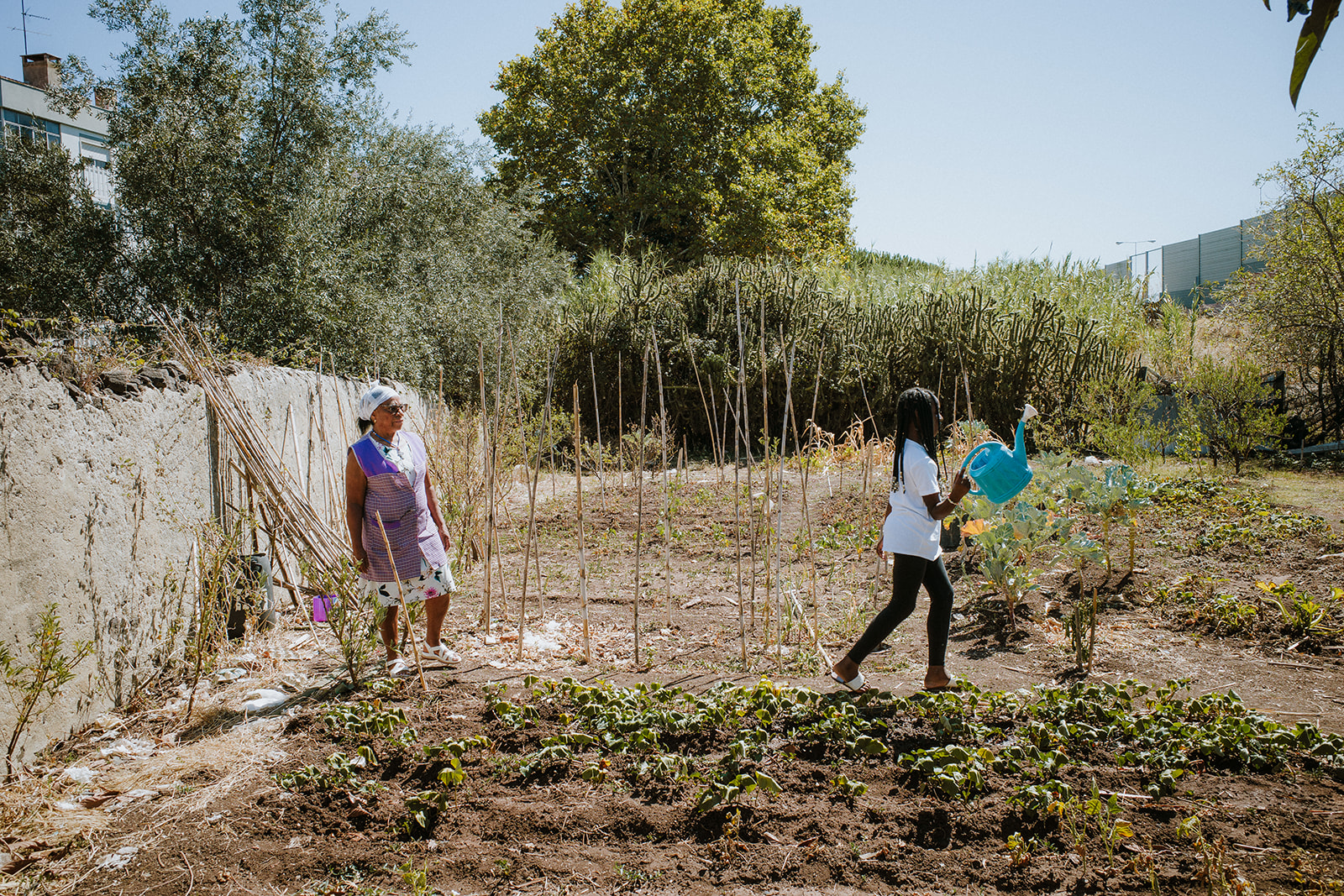
PLAY(THE)GROUND:
Friendship and Collaboration
SPRING RESIDENCIES IN CENTRO DE DIA NOSSA SENHORA DOS ANJOS AND CENTRO HOSPITALAR PSIQUIÁTRICO DE LISBOA
<< FUND AN ARTIST >>
— project duration
February 18th 2025 - May 20th 2025
February 18th 2025 - May 20th 2025
— curatorial team
Lígia Fernandes
Ludmila Nawrotzki
Nicole Sánchez
Ricarda Oldekop
Sophia Niederkofler
Zoë Nowraty
Lígia Fernandes
Ludmila Nawrotzki
Nicole Sánchez
Ricarda Oldekop
Sophia Niederkofler
Zoë Nowraty
— contacts
Natalia Bošković
Anika Borko
Mihaela Rašica
Lyuba Hrisimova
Natalia Bošković
Anika Borko
Mihaela Rašica
Lyuba Hrisimova
— partner organization
CENTRO HOSPITALAR PSIQUIÁTRICO DE LISBOA
CENTRO DE DIA NOSSA SENHORA DOS ANJOS - SANTA CASA
CENTRO HOSPITALAR PSIQUIÁTRICO DE LISBOA
CENTRO DE DIA NOSSA SENHORA DOS ANJOS - SANTA CASA
— support
DGARTES
ARTISTAS ANONIMOS
HORTAS LX
LISBON DRAWING CLUB
MOURARIA CREATIVE HUB - CML
UNIVERSIDADE LUSÓFONA
RÁDIO AURORA
DGARTES
ARTISTAS ANONIMOS
HORTAS LX
LISBON DRAWING CLUB
MOURARIA CREATIVE HUB - CML
UNIVERSIDADE LUSÓFONA
RÁDIO AURORA
— support
communication
GERADOR
communication
GERADOR
"A city - (...) - is a complex organism that lives and reflects the lives of tens or hundreds of thousands of people. It reflects the nature of their activities, interests, culture and habits.
It appears harmoniously ordered in all its buildings if the inhabitants have been and are disciplined, aware of the benefits of mutual respect and cooperation. It benefits from the presence of imposing buildings if the economy is unburdened and the views of the citizens are wide; and if culture and artistic taste have deep roots among the population, it is only natural that this should be reflected in the buildings and urban ensembles..."
Francisco Keil do Amaral in 'Lisbon, a city in transformation' 1969
It appears harmoniously ordered in all its buildings if the inhabitants have been and are disciplined, aware of the benefits of mutual respect and cooperation. It benefits from the presence of imposing buildings if the economy is unburdened and the views of the citizens are wide; and if culture and artistic taste have deep roots among the population, it is only natural that this should be reflected in the buildings and urban ensembles..."
Francisco Keil do Amaral in 'Lisbon, a city in transformation' 1969
When we talk about contemporary cities, do we see them as cohesive territory, a mesh that brings people together, or further apart? How does the growth, the modernization, the exponentially frenetic rhythm in which we live by, affect territories in the city, to the extent of invisibility? How come we all know what these facilities are for, or even where they are, but fail to be curious about them, until we are exposed to some sort of necessity of them? How do they exist in the heart of the city, are public, and yet are to some extend invisible to the public? Can we bring them to surface as part of everyone in society, becoming a common ground for art and culture, bringing the invisibility to the visible transgressing physical boundaries and architectural borders?
In the spring of 2025 we invite you to two spaces that while placed in the very center of Lisbon, have remained largely unnoticed by those who pass by. These two communities, the daycare center and the psychiatric hospital, hold in them a full ecosystem that strives to live a normal life within the complexities of mental health and ageing. On the mystery of being just 'facilities' these territories host in them more than just basic survival care. They are open territories to bring in the everyday life of the city to make them visible and normalize their purpose, as not just for those in need or when needed. They are demanding and constantly seeking a sense of 'normality' to ease their presence, transforming the lives of those who use them in a more visible way. As passers-by do we ever feel curious about them, and by entering we feel a sense of trespassing or are we passively engaging and be part of their 'transparency'? This transparency is not by location or architecture but rather by a thin layer of societal labels that slowly exclude these spaces from the lives of many.
We hope that you will return with a new perspective, a reflection or a lesson, and above all, obligations which may last, long after this experience.
The PLAY(THE)GROUND program is a multidisciplinary residency aimed at people who are looking for space, focused time, and stimulating conversations that can help kick off or further develop a project that will engage with one of the two facilities in the center of Lisbon . Applicants can decide where to work, and for how long, during spring 2025.
<< Read the FAQ here >>
The studios are available from 18TH February 2025 to 20th May 2025. In the application process, candidates can indicate their time periods of occupation of the studios. In this way, we hope to meet the needs of potential residents as flexibly as possible.
Applicants can decide to work in different locations:
In the spring of 2025 we invite you to two spaces that while placed in the very center of Lisbon, have remained largely unnoticed by those who pass by. These two communities, the daycare center and the psychiatric hospital, hold in them a full ecosystem that strives to live a normal life within the complexities of mental health and ageing. On the mystery of being just 'facilities' these territories host in them more than just basic survival care. They are open territories to bring in the everyday life of the city to make them visible and normalize their purpose, as not just for those in need or when needed. They are demanding and constantly seeking a sense of 'normality' to ease their presence, transforming the lives of those who use them in a more visible way. As passers-by do we ever feel curious about them, and by entering we feel a sense of trespassing or are we passively engaging and be part of their 'transparency'? This transparency is not by location or architecture but rather by a thin layer of societal labels that slowly exclude these spaces from the lives of many.
We hope that you will return with a new perspective, a reflection or a lesson, and above all, obligations which may last, long after this experience.
The PLAY(THE)GROUND program is a multidisciplinary residency aimed at people who are looking for space, focused time, and stimulating conversations that can help kick off or further develop a project that will engage with one of the two facilities in the center of Lisbon . Applicants can decide where to work, and for how long, during spring 2025.
<< Read the FAQ here >>
The studios are available from 18TH February 2025 to 20th May 2025. In the application process, candidates can indicate their time periods of occupation of the studios. In this way, we hope to meet the needs of potential residents as flexibly as possible.
Applicants can decide to work in different locations:

Centro Hospitalar Psiquiátrico de Lisboa
(CHPL)

Centro de Dia Nossa Senhora dos Anjos
(Santa Casa)
— DISCOVER PLAY(THE)GROUND
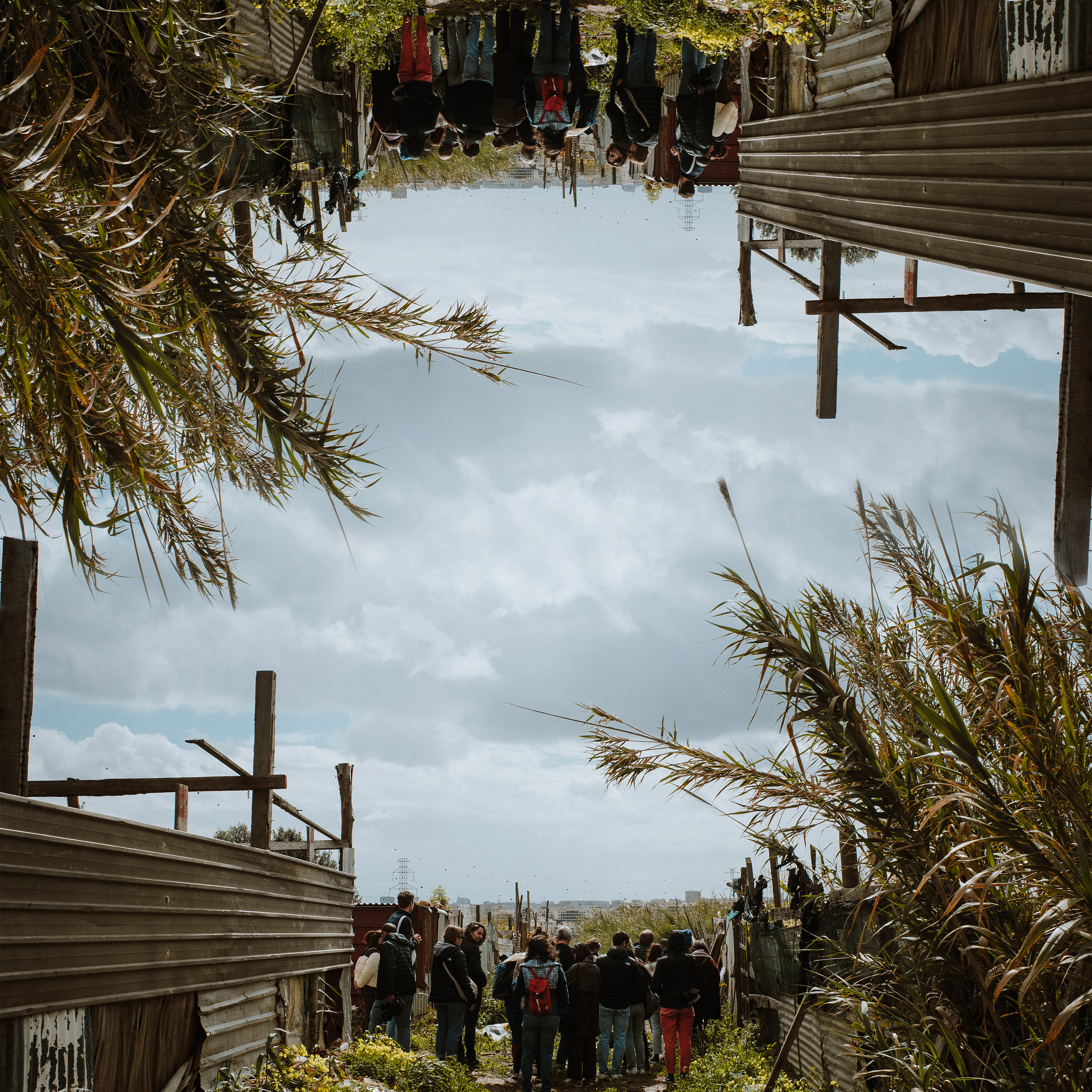
PLAY(THE)GROUND:
Informality as resistance
SUMMER RESIDENCIES IN TALUDE, QUINTA DA FONTE, BAIRRO DO ZAMBUJAL, TRAFARIA
<< FUND AN ARTIST >>
— project duration
June 2024 - September 2024
June 2024 - September 2024
— curatorial team
Aino Garcia Vainio
Eugenia Bianchessi
Ioanna Kaloudioti
Joyce Ward
Julia Dżbik
Kalle Hübel
Lígia Fernandes
Léa Heudes
Nicole Sánchez
Ricarda Oldekop
Sophia Niederkofler
Aino Garcia Vainio
Eugenia Bianchessi
Ioanna Kaloudioti
Joyce Ward
Julia Dżbik
Kalle Hübel
Lígia Fernandes
Léa Heudes
Nicole Sánchez
Ricarda Oldekop
Sophia Niederkofler
— contacts
Aino Garcia Vainio
Lígia Fernandes
Joyce War
Sophia Niederkofler
Aino Garcia Vainio
Lígia Fernandes
Joyce War
Sophia Niederkofler
— partner organization
AMRT - Associação para a Mudança e Representação Transcultural
COOPERACTIVA ALFRAGIDE
AFROLINK
ASSOCIAÇÃO DE MORADORES A PARTILHA
NOVA - FCSH
AMRT - Associação para a Mudança e Representação Transcultural
COOPERACTIVA ALFRAGIDE
AFROLINK
ASSOCIAÇÃO DE MORADORES A PARTILHA
NOVA - FCSH
— support
DGARTES
ARTISTAS ANONIMOS
HORTAS LX
LISBON DRAWING CLUB
MURO ATELIER
DGARTES
ARTISTAS ANONIMOS
HORTAS LX
LISBON DRAWING CLUB
MURO ATELIER
"We speak that more Portuguese romani, where they introduce that “Ai, mãe...(Oh, mother...)”, but we also have what we call “galego”, which is more like Spanish. For example, if you're saying something and there's someone around and you don't want him to understand, you have another form of romani language, which we call ‘romanó’. There are words that if I say them in romani, you'll understand, ‘batatas’, we say the same, ‘ojos’ (eyes), you can understand, because it's more or less like Spanish. If I don't want you to understand, we have ‘sacais’, which has nothing to do with eyes, and it means eyes.
Even in the romani community, not everyone knows this kind of speech, ‘romanó’. There are words that even I don't know. Because nowadays it's not used as much with this generation, and the next one is leaving it even more.
The romani culture is gradually disappearing, it's not what it used to be. There are things that are good, but there are things that...well, anyway. It's changing a lot, more and more."
Even in the romani community, not everyone knows this kind of speech, ‘romanó’. There are words that even I don't know. Because nowadays it's not used as much with this generation, and the next one is leaving it even more.
The romani culture is gradually disappearing, it's not what it used to be. There are things that are good, but there are things that...well, anyway. It's changing a lot, more and more."
Manuel Monteiro dos Santos - Speaks about romani language (2021) A Música Cigana a Gostar Dela Própria
Adolfo Coelho - Os ciganos de Portugal - Um estudo Sobre o Calão (Dictionary)
Adolfo Coelho - Os ciganos de Portugal - Um estudo Sobre o Calão (Dictionary)
What is the form of the informal? Does resistance exclude or preserve, is it survival or emancipation? What is the knowledge of informality? How does it differ from the formal and why? What are the emotions of (in)formality, what places does it inhabit in our bodies? What is the power of the informal and what risks does it face? What worlds can we create from the encounter between the formal and the informal?
The PLAY(THE)GROUND program takes the form of a multidisciplinary residency aimed for people who are looking for space, focused time, and stimulating conversations that can help kick off or further develop a project that will engage with one of the different locations on the outskirts of Lisbon.
You can apply if you are an artist, curator, researcher, collective or anyone from a different background (you don't have to be from the art field) who is interested in working collaboratively, developing socially engaged practices, researching specific urban/cultural themes or developing experimental practices, with curatorial support and a public presentation. This residency offers a studio space in a specific urban environment, allowing participants the independence and freedom needed to develop a bottom-up project.
For the summer residency, we are looking for applicants who want to collaborate with the neighbourhood's younger population, although other situated practices are also welcome. We encourage applications from diverse cultural backgrounds: immigrants, people of African descent, Portuguese romani, and also from the territories, to respond to this call.
<< Read the FAQ here >>
The studios are available from 1st June 2024 to 15th September 2024. In the application process, candidates can indicate their time periods of occupation of the studios. In this way, we hope to meet the needs of potential residents as flexibly as possible.
Applicants can decide to work in different locations:
The PLAY(THE)GROUND program takes the form of a multidisciplinary residency aimed for people who are looking for space, focused time, and stimulating conversations that can help kick off or further develop a project that will engage with one of the different locations on the outskirts of Lisbon.
You can apply if you are an artist, curator, researcher, collective or anyone from a different background (you don't have to be from the art field) who is interested in working collaboratively, developing socially engaged practices, researching specific urban/cultural themes or developing experimental practices, with curatorial support and a public presentation. This residency offers a studio space in a specific urban environment, allowing participants the independence and freedom needed to develop a bottom-up project.
For the summer residency, we are looking for applicants who want to collaborate with the neighbourhood's younger population, although other situated practices are also welcome. We encourage applications from diverse cultural backgrounds: immigrants, people of African descent, Portuguese romani, and also from the territories, to respond to this call.
<< Read the FAQ here >>
The studios are available from 1st June 2024 to 15th September 2024. In the application process, candidates can indicate their time periods of occupation of the studios. In this way, we hope to meet the needs of potential residents as flexibly as possible.
Applicants can decide to work in different locations:
— DISCOVER PLAY(THE)GROUND
Trafaria
Trafaria consists of three territories with different characteristics: Trafaria (a former bathing area and industrial town), 2º Torrão (a self-built neighbourhood on the south bank of Tejo river, with a culturally diverse population) and Cova do Vapor (a self-built neighbourhood, made up mainly of Portuguese people linked to fishing).










Photos: Nicole Sánchez
Artists in Trafaria

SARA E TRALHA (PT)
Sara e Tralha wants to expand her vision of the "archaeology of the imagery". With this collection of multimediatic artworks she wishes to explore the poetic values of symbols in human life. During her residency she wants to focus on the objects of everyday life.
website

DIANA FERRO (IT)
Diana seeks to be a curious observer as she examines time and the processes of change and growth. She wants to learn about the processes and knowledge of the communities to create a web of connections based on it.
website

SARAH KILGALLON (US)
Sarah’s aim during her residency is to produce a creative historical document. It consists of a photo documentary, a construct of individual stories and heritage of the cultures within the neighborhoods.
website

LUCIANO B (AR)
Luciano will develop a series of objects-planets-research with the topic of informality as resistance.
He reflects on how do we take action to become present in a word in which always more objects lose their materiality in favour of a digital echo of them.
website

VERONICA IACOMI (IT)
Veronica will develop a photographic series, correlated to a short documentary that can help present to a wider audience the different realities populating the territory as they face the threat of being swept away by real estate speculation, progressive legalisation of the settlements, and gentrification in all its forms.
website
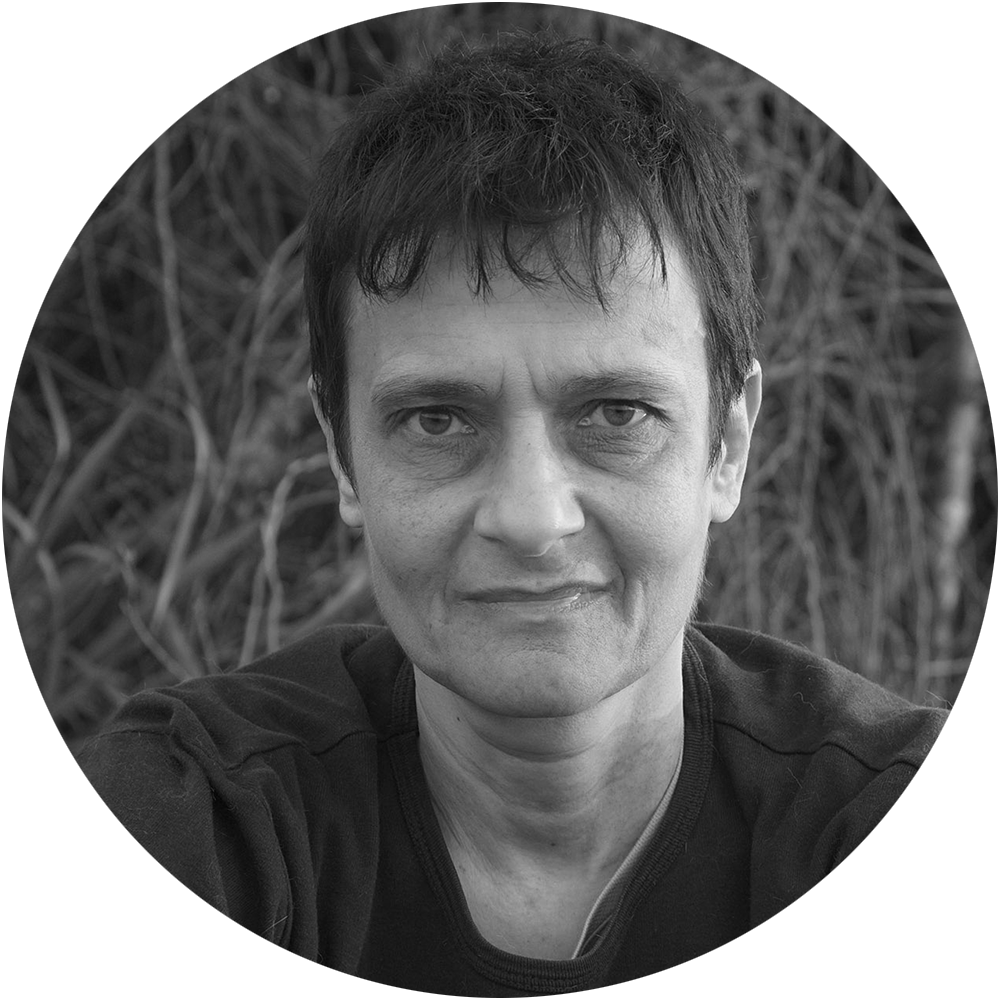
VARDIT GOLDNER (IL)
Vardit will develop her project “Supper in 2. Torrão” during her residency. She wants to film the everyday supper of different communities and units in the neighbourhood to create a reflection of their reality through this necessary ritual.
website

ALICE F. MARTINS (PT)
Alice is interested in subjects related to villages and places that exist near the sea dealing with environmental issues and sustainability. During her residency she wants to look for traces of how people deal with the changes in the sea-level and protection of endangered areas.
website
Fund an artist!
To give more people the possibility to join the residency with funding, we launched a campaign to support the artists!
Your donation would cover basic costs, art supplies and materials, accomodation, food, transportation and personal needs.
You can support through a donation to an individual artist Or to the collective pot that will distribute the money to the project, artists, exhibition, etc
* WARNING! In the field "your full name" write, next to your name , the name of the artist you want to fund, write "artists” to fund artists in general and “Play(the)ground" to fund the project. *
Malgorzata Minchberg
I look for new associations for forms found in nature, not through primary rituals and artefacts, but through a community of experience.The project
"Empathic mindfulness", as I call it, is the form from nature that I interfere with that triggers the need to be sensitive to it. I want to develop the “empathic mindfulness” in Quinta da Fonte during my residency and look for the traces of its culture.
Fund here
* In the field "your full name" write, next to your name, the name of the artist you want to fund.

Veronica Iacomi
I'd like to go through the stories of the very diverse communities living there, from the fishermen to the people in the 2° Torrão, and even the (to my knowledge) expanding circle of self-declared “expats”.The project
Trafaria offers a great chance of exploring how social groups define themselves with relation to other groups and the surrounding environment, and of exposing the informality of self-perception vs the formality of common imagery. I envision a photographic series, correlated to a short documentary that can help present to a wider audience the different realities populating the territory, before they are swept away by real estate speculation, progressive legalisation of the settlements, and gentrification in all its forms.
Fund here
* In the field "your full name" write, next to your name, the name of the artist you want to fund.

Sarah Kilgallon
All neighborhoods are vulnerable not only to financial instability but also to urban construction and planning. This project’s aim is to produce a creative historical document. So even if the neighborhood’s suffer gentrification the people, the residents stories and spirit will remain.The project
Together we will create a photo documentary, a construct of their individual stories and the heritage of their cultures within the neighborhoods. Through images and text, we will build a project that gives them a platform of expression of their reality, their hopes, and fears of the future.
Fund here
* In the field "your full name" write, next to your name, the name of the artist you want to fund.

Fiodor
As in wild life quiet places are always filled with life forms. I'd like to fill with playful art inconspicuous places of the bedroom community.The project
Fedor plans to divide his residency in three parts. First, he wants to connect with the communities and share stories. Then he plans to convert the stories into sculptures, on of their artistic media. At the end he wishes to build within the neighbourhoods AR installations, for the communities to use.
Fund here
* In the field "your full name" write, next to your name, the name of the artist you want to fund.

Aleksandra Naydenova
Aleksandra’s project would take place in the self-built neighbourhood Bairro do Talude, inhabited by families from Cape Verde, where diversity and adjustment to the new context result in yet unfinished "new cultural elaborations," in a constant process of (de) and (re)construction.The project
In her project, Aleksandra seeks to empower members of the community to share their stories and perspectives through visual artefacts derived from common elements of their environment, that convey and preserve their cultural identity in a digitally accessible format and truly correspond with their vision for capturing it on their own “terms and conditions”. By doing so, her goal is to provide them with the space and tools for collectively re(envisioning) the artefacts as encounters between the formal and the informal in their communities.
Fund here
* In the field "your full name" write, next to your name, the name of the artist you want to fund.

Diana Ferro
Diana is an antidisciplinary artist born in Italy and based in Groningen, The Netherlands. She spends a lot of time interacting with discarded words, books, materials, people, places and reflects on being (late).The project
I have a fascination for time, spaces and processes of change and growth, ranging from the smallest scale of nature, to the one of the body, to landscapes, starting from the ground. I have a complete admiration for these powerful places as they are, and no need to add my part in the form of an authorial project, but rather learn from them. I want to learn how people go on during their single days in this ever changing scenario and how they, too, learn from it. I will be there as a curious observer, and then engage in activities with the web of connections that this observation will create, to take something with me in the end, as a seed to plant in other contexts: a way of living.
Fund here
* In the field "your full name" write, next to your name, the name of the artist you want to fund.

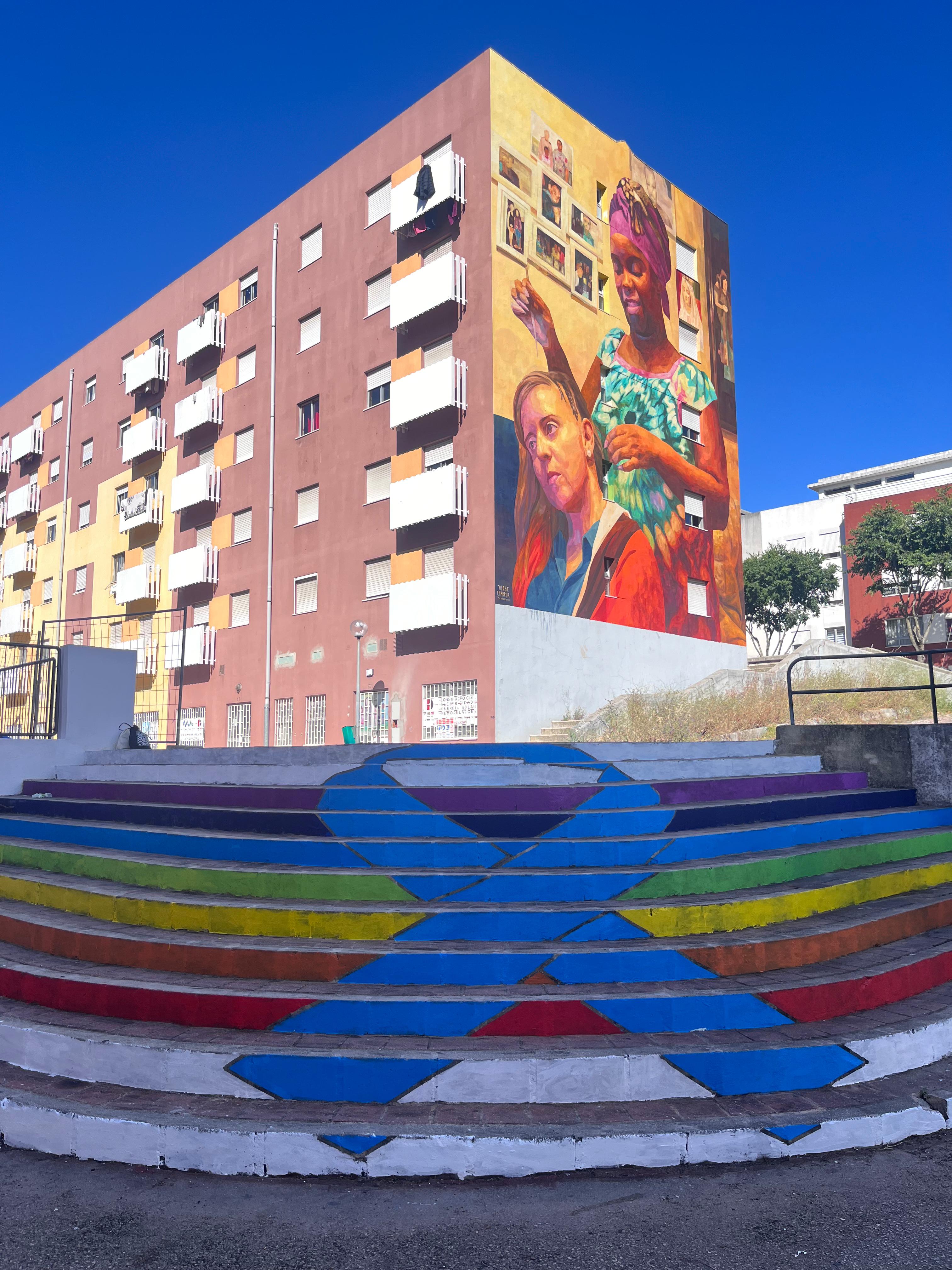
Photo: Eugenia Bianchessi
Bairro do Zambujal
Bairro do Zambujal is one of Lisbon's largest social housing estates, located in Alfragide. It has a diverse population including Portuguese, romani communities and various African and Afro-descendant populations.
Artists in Bairro do Zambujal
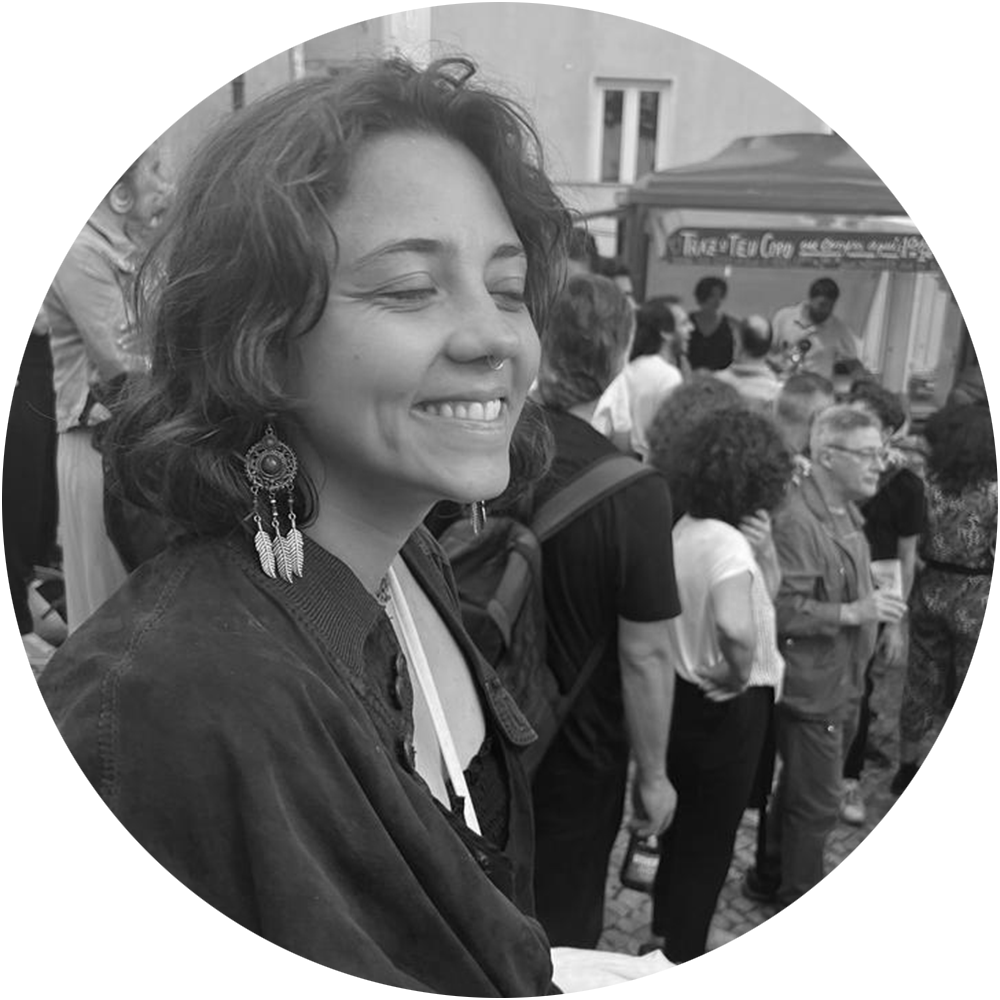
Rita Bourbon (PT)
During her residency Rita aims to create a sounding mosaic that captures the necessities of the local communities. In addition to that she wishes to create a neighbourhood library based on the interests and needs of the people.
website

Michele Turbanti (IT)
Michele wants to explore, interact and document the environment. By doing so he wants to challenge different dynamics that come into play in designing space, exploring the forms of resistance in the practice of occupation and of making public privatized spaces.
website

Fiodor (RU)
Fiodor plans to divide his residency in three parts. First, he wants to connect with the communities and share stories. Then he plans to convert the stories into sculptures, on of their artistic media. At the end he wishes to build within the neighbourhoods AR installations, for the communities to use.
website

Sofia Seidi (PT)
Sofia considers paintings as an expression of resistance and affection, and therefore she will make portraits of the residents of Zambujal, after conducting conversations and interviews, in order to get to know them.
website
Quinta da fonte
Quinta da Fonte is a social neighborhood aggregating people who were moved from other neighborhoods in the city, from different origins, such as Portuguese, romani communities, and several African and afro-descendant populations.




Photos: Nicole Sánchez
Artists in Quinta da Fonte
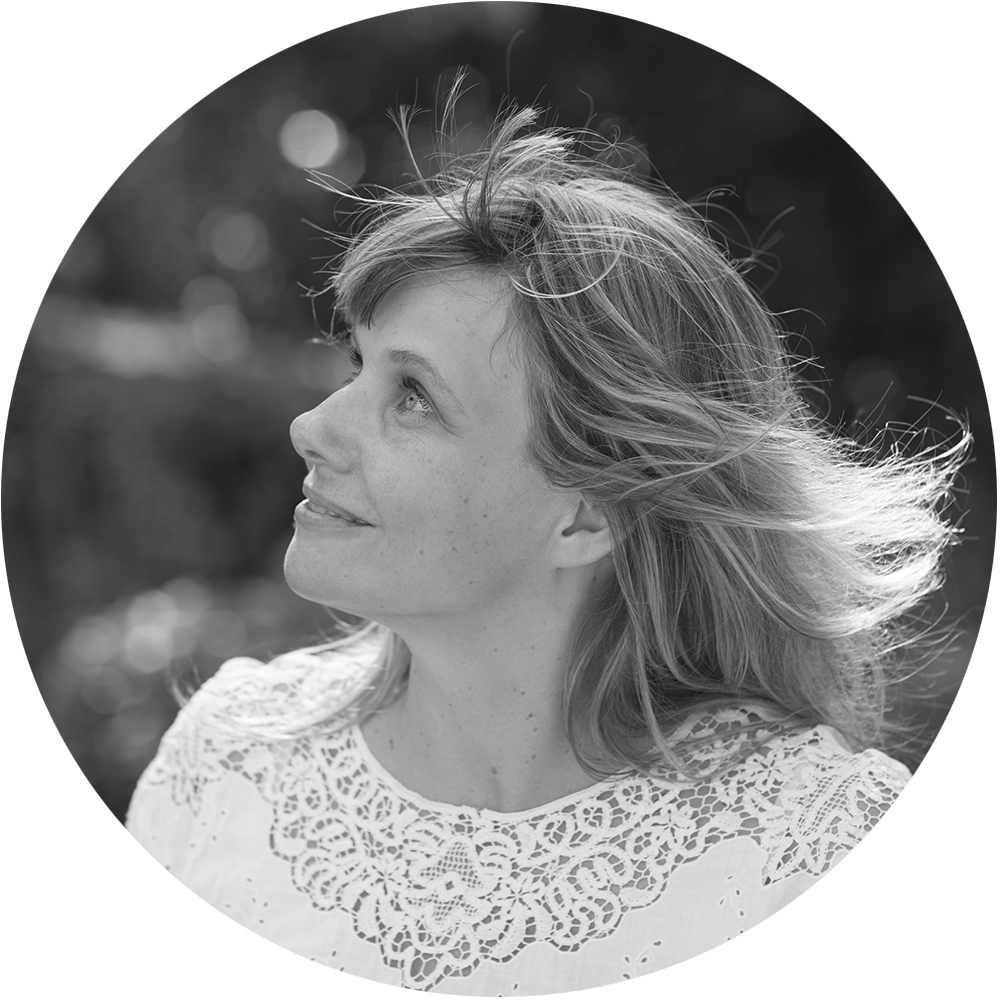
Riikka Vainio (FI)
Riikka wants to empower the children and youth of Quinta da Fonte to become artists themselves without even noticing. She will develop a storytelling project in which she proposes to them the storytelling as a medium to express themselves, which stories will then grow into other forms of art.
website
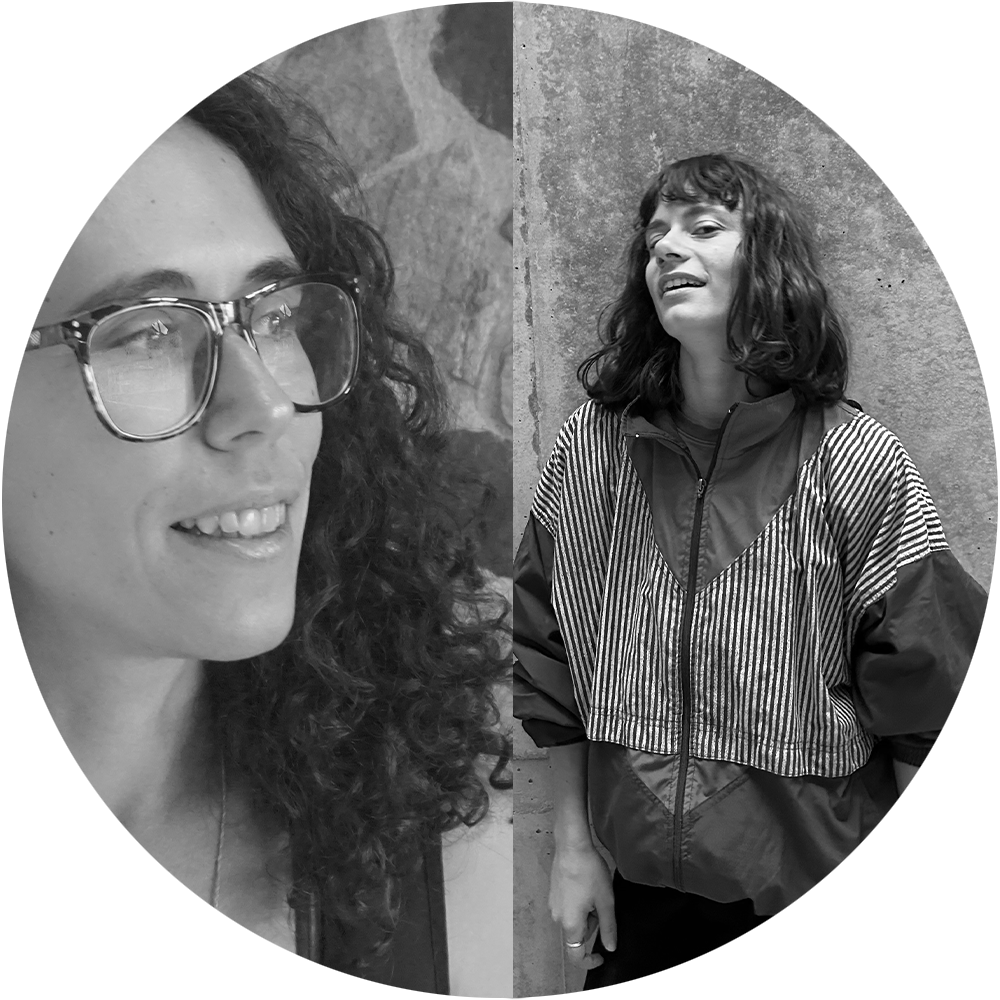
Urban Pulse collective (GR)
The Urban Pulse Collective wants explore the potential of the group as a dynamic and the ever-changing structure that develops through conflicting forces and informal settings. It will use improvisation, instant composition and work in partners practices coupled with narrative and community consensus processes in order to address informality as antifragility.
website

Jéssica Lopes (PT)
Jessica aims to create a community theatre project by offering a safe zone in Quinta da Fonte for people to share and learn about their opinions and thoughts on socio-political issues. At the end of her residency she hopes that these stories will be shown to a wider audience in form of a theatrical scene, to bring awareness and visibility to the communities.
website
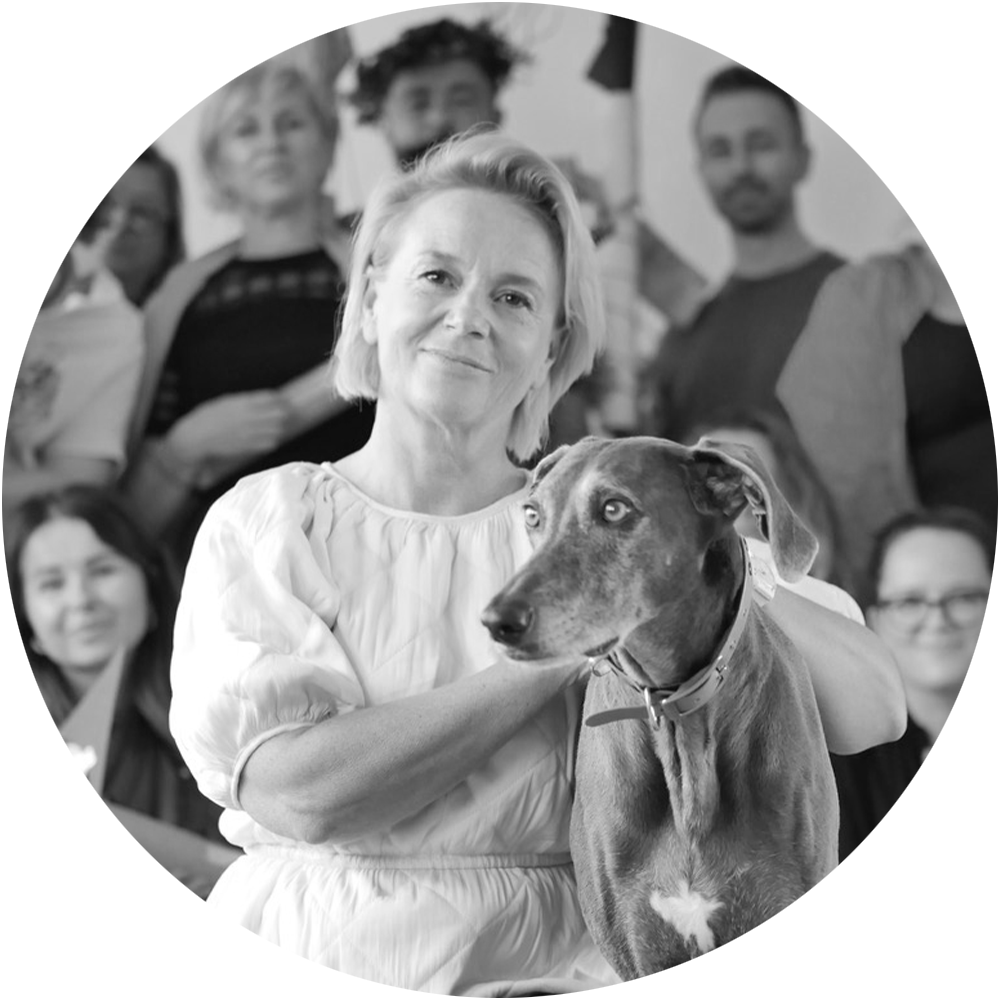
Małgorzata Minchberg (PL)
Małgorzata wants to develop the “empathic mindfulness”, as she calls it, which is the form of nature that she interferes with, that triggers the need to be sensitive to it. In Quinta da Fonte she intends to look for the traces of its culture and its "empathetic mindfulness".
website

Suzy Willekens (NL)
Suzy aims to create an installation by involving the local communities. Through a collaborative dialogue between different cultures she wants to develop a collective art piece for Quinta da Fonte.
website
Ephímero: A tag to exist. (Talude)
a project by Marie Jiménez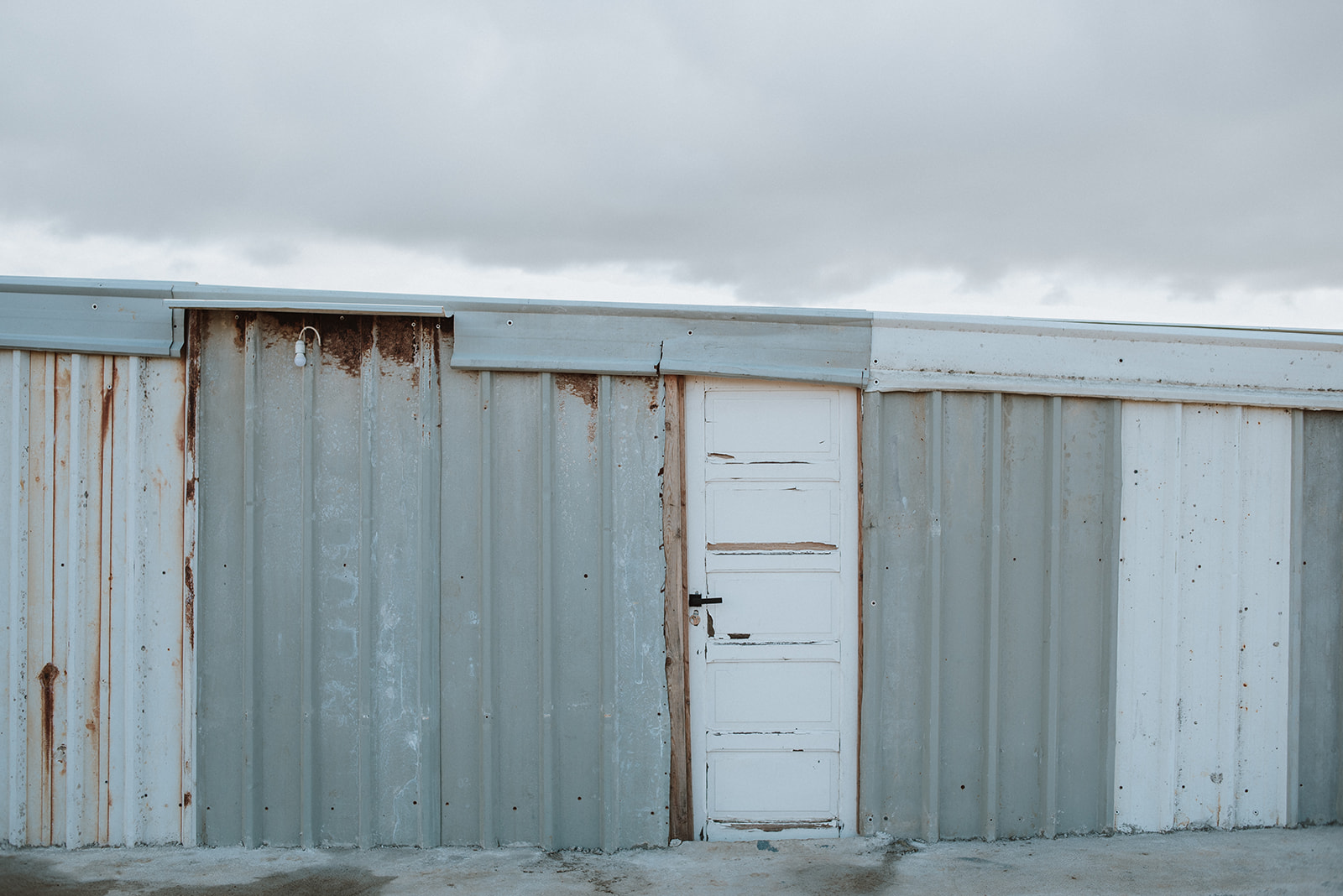
PLAY(THE)GROUND:
Places of Impermanence
Places of Impermanence
Summer Residency/Studios in Talude and Quinta da Fonte.
— project duration
July 2023 - September 2023
July 2023 - September 2023
— curatorial team
Lígia Fernandes
Karina Zelonka
Nicole Sánchez
Ricarda Oldekop
Lígia Fernandes
Karina Zelonka
Nicole Sánchez
Ricarda Oldekop
— contact persons
Lígia Fernandes
Ricarda Oldekop
Lígia Fernandes
Ricarda Oldekop
— partner organization
AMRT - Associação para a Mudança
e Representação Transcultural
AMRT - Associação para a Mudança
e Representação Transcultural
— support
NOVA-School of Business and Economics
NOVA-School of Business and Economics
On the top of the hill there is no more juniper
It has dried up
(...)
To go to Lisbon he sold his land
For half the price
There, working in the rain, in the wind
In the cold
At CUF, Lisnave or J. Pimenta
Exploited
Cheap labor no matter how hard he works
He’s nothing more than a servant
Cheap labor, shack without light
Eating on the run
Even more cheated by the white brother
Exploited
But the day I return to my land
Many colors of chilli
Will give me water
And strength in my arms
Consciousness that I've worked
The power of my land is in me
With juniper on the hill
My children on the ground
My boat in the harbor
Our land, oh, our land.
It has dried up
(...)
To go to Lisbon he sold his land
For half the price
There, working in the rain, in the wind
In the cold
At CUF, Lisnave or J. Pimenta
Exploited
Cheap labor no matter how hard he works
He’s nothing more than a servant
Cheap labor, shack without light
Eating on the run
Even more cheated by the white brother
Exploited
But the day I return to my land
Many colors of chilli
Will give me water
And strength in my arms
Consciousness that I've worked
The power of my land is in me
With juniper on the hill
My children on the ground
My boat in the harbor
Our land, oh, our land.
“Altu Kutelu”/”Top of the hill” Renato Cardoso (Cape Verdean song)
Which forces lead us move away from our land? To what extent can we do something about them? Is leaving an act of courage? What do we learn along the way, what do we create, and what do we bring with us? How faris this journey? Which land do we call ours? Where is the home to return to? When does impermanence become permanence?
This summer we invite artists, curators, collectives, and researchers to spend some time in places of impermanence. These places tell stories: some were created by those who arrived, like mirrors from the land of departure, some are imposed, shaped by urban progress, forcing transitions along the way. Some welcome people from a single origin, others aggregate people from many origins. They act as places of reflection about our own stories, about what we feel in our bodies, the tiredness, the longing and the hope. For the next generations, they are also places of re-imagination, for which you are invited to enter.
Mais uno+1 invites you to apply for two residencies this summer. The program is for people who are looking for space, focused time, and stimulating conversations that can help to kick off or further develop a project that will engage with two different locations on the outskirts of Lisbon. Applicants can decide to work in one or two locations:
This summer we invite artists, curators, collectives, and researchers to spend some time in places of impermanence. These places tell stories: some were created by those who arrived, like mirrors from the land of departure, some are imposed, shaped by urban progress, forcing transitions along the way. Some welcome people from a single origin, others aggregate people from many origins. They act as places of reflection about our own stories, about what we feel in our bodies, the tiredness, the longing and the hope. For the next generations, they are also places of re-imagination, for which you are invited to enter.
Mais uno+1 invites you to apply for two residencies this summer. The program is for people who are looking for space, focused time, and stimulating conversations that can help to kick off or further develop a project that will engage with two different locations on the outskirts of Lisbon. Applicants can decide to work in one or two locations:
- Place one: Quinta da Fonte - This is a social neighborhood aggregating people who were moved from other neighborhoods in the city, from different origins, such as Portuguese, romani communities, and several African and afro-descendant populations.




Photography: Nicole Sánchez
- Place two: Bairro do Talude - This is a self-built neighborhood mostly composed of families originally from Cape Verde. It has very few businesses, a restaurant, a bar, a “distillery”, and many farms created by the inhabitants. This is an impermanent territory, which is planned to be demolished in the future for urban re-planning.





Photography: Nicole Sánchez
— resident artists

Alberto Maria Gatti (IT)
Alberto Maria Gatti (1992) is a composer, sound designer and computer music designer. He attended electronic music courses at the Conservatory of Florence and the Master AReMus at the Conservatory of Rome concerning the practice of artistic research in music. Afterwards he followed workshops and seminars of composition and sound direction. As composer, he participated in several festivals and events of contemporary music including: Ircam, Tempo Reale, Museo del Novecento, Fabbrica Europa, Inner Spaces, Palazzo Vecchio, Salone del Mobile di Milano, SIMC, Pontino Festival, Italian Institute of Culture in Brussels, Teatro del Giglio, Teatro Cantiere Florida, Spam/Aldes, Museo Pecci, Chaufuonna Festival and others.
Alberto Maria Gatti (1992) is a composer, sound designer and computer music designer. He attended electronic music courses at the Conservatory of Florence and the Master AReMus at the Conservatory of Rome concerning the practice of artistic research in music. Afterwards he followed workshops and seminars of composition and sound direction. As composer, he participated in several festivals and events of contemporary music including: Ircam, Tempo Reale, Museo del Novecento, Fabbrica Europa, Inner Spaces, Palazzo Vecchio, Salone del Mobile di Milano, SIMC, Pontino Festival, Italian Institute of Culture in Brussels, Teatro del Giglio, Teatro Cantiere Florida, Spam/Aldes, Museo Pecci, Chaufuonna Festival and others.
Elena Aya Bundurakis (GR/JPN)
Elena Aya Bundurakis is a Greek-Japanese photographer born in Crete island. She uses her camera as a tactile device, rather than a technological tool. Her work focuses on how it feels to be a living organism in this era that lies between the primal, the modern & the post natural-world. She uses herself as a specimen of the human experience. Images collide and divide according to the situation. Drawings, video and haikus are incorporated. Bundurakis currently works between Crete and Corfu, where she co-founded REON (a space for clay). She graduated summa cum laude from the Royal Academy of Fine Arts Antwerp with an MA in Visual Arts & Photography, and holds a BA in Graphic Arts Technology from the Technological Educational Institute of Athens. Her work has been nominated for several prestigious photography awards and has been exhibited in various locations like Metronom gallery (IT), Fotomuseum Antwerp (BE), Marres Maastricht (NL), Fotomuseum Winterthur (CH), Noorderlicht Festival (NL), the Athens Photo Festival (GR) a.o.
Elena Aya Bundurakis is a Greek-Japanese photographer born in Crete island. She uses her camera as a tactile device, rather than a technological tool. Her work focuses on how it feels to be a living organism in this era that lies between the primal, the modern & the post natural-world. She uses herself as a specimen of the human experience. Images collide and divide according to the situation. Drawings, video and haikus are incorporated. Bundurakis currently works between Crete and Corfu, where she co-founded REON (a space for clay). She graduated summa cum laude from the Royal Academy of Fine Arts Antwerp with an MA in Visual Arts & Photography, and holds a BA in Graphic Arts Technology from the Technological Educational Institute of Athens. Her work has been nominated for several prestigious photography awards and has been exhibited in various locations like Metronom gallery (IT), Fotomuseum Antwerp (BE), Marres Maastricht (NL), Fotomuseum Winterthur (CH), Noorderlicht Festival (NL), the Athens Photo Festival (GR) a.o.

Emma Gonsales Moro (RU)
My name is Emma Gonsales Moro, I am 22 years old and I’m from Moscow. I graduated from Moscow Film College, faculty of art and animation. I moved to Lisbon and started life from scratch shortly after the war started. There are several themes that attract my interest more than others when it comes to drawing. Tiny details mean the world to me, I can start drawing the whole city landscape only because of some small but very attractive lantern on the background. Windows, mirrors, screens, holes, reflections, everything that can look like a portal to somewhere inside of the drawing magnetise me. Variety of textures and shapes. Focused faces, strange body positions, hands. Usually I draw from life but I don’t have a goal to repeat the reality as it is, it always turns out to be more colourful and simple, but I like it. I would say that the closest style to my art is primitivism. It’s an aesthetic idealisation and simplification of reality. In fact, sometimes people say to me that my works look a little bit childish but I accept it as a compliment because It’s partly my intention: to remember and express how the world felt to me when I was just a child, without knowledge about perspective, composition rules and all these laws of universe, when my perception was pure. Of course it doesn’t mean that I don’t use this knowledge in my drawings, I’m trying to unite my drawing skills and this childish way to see the world and make something beautiful out of it.
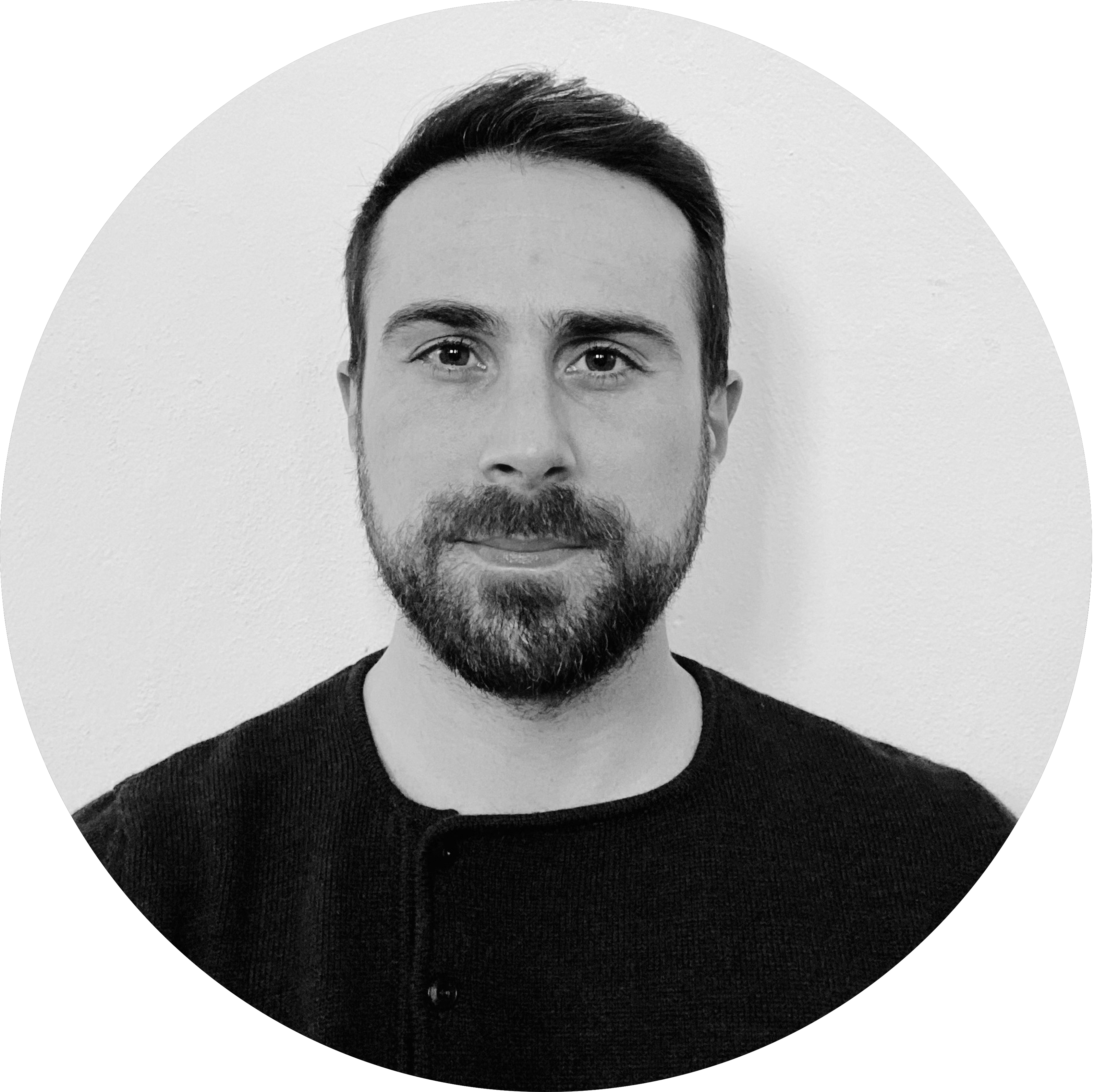
Lorenzo Ballerini (IT)
Composer, sound and new media artist, mainly focused in live electronics and multimedia installations. Born in Florence in 1990. Graduated in Music and New Technologies at the Conservatory Luigi Cherubini in Florence and in second-level master’s degree AReMus (Artistich Research in Music) at the Conservatory Santa Cecilia in Rome. His aesthetics focus in the exploration of the the political and social meaning of human beings related to the artwork and in today’s society. He has participated as composer and performer in festivals such as Berlin Biennale, Bright Festival, Diffrazioni Festival, Fabbrica Europa, MEFF, SMC2018, SMC2019, Tempo Reale Festival. He has collaborated with artists including Alvise Vidolin, Christine Meisner, Michele Marasco, Nicola Sani, Paolo Parisi, Roberto Fabbriciani, Tiziano Manca.
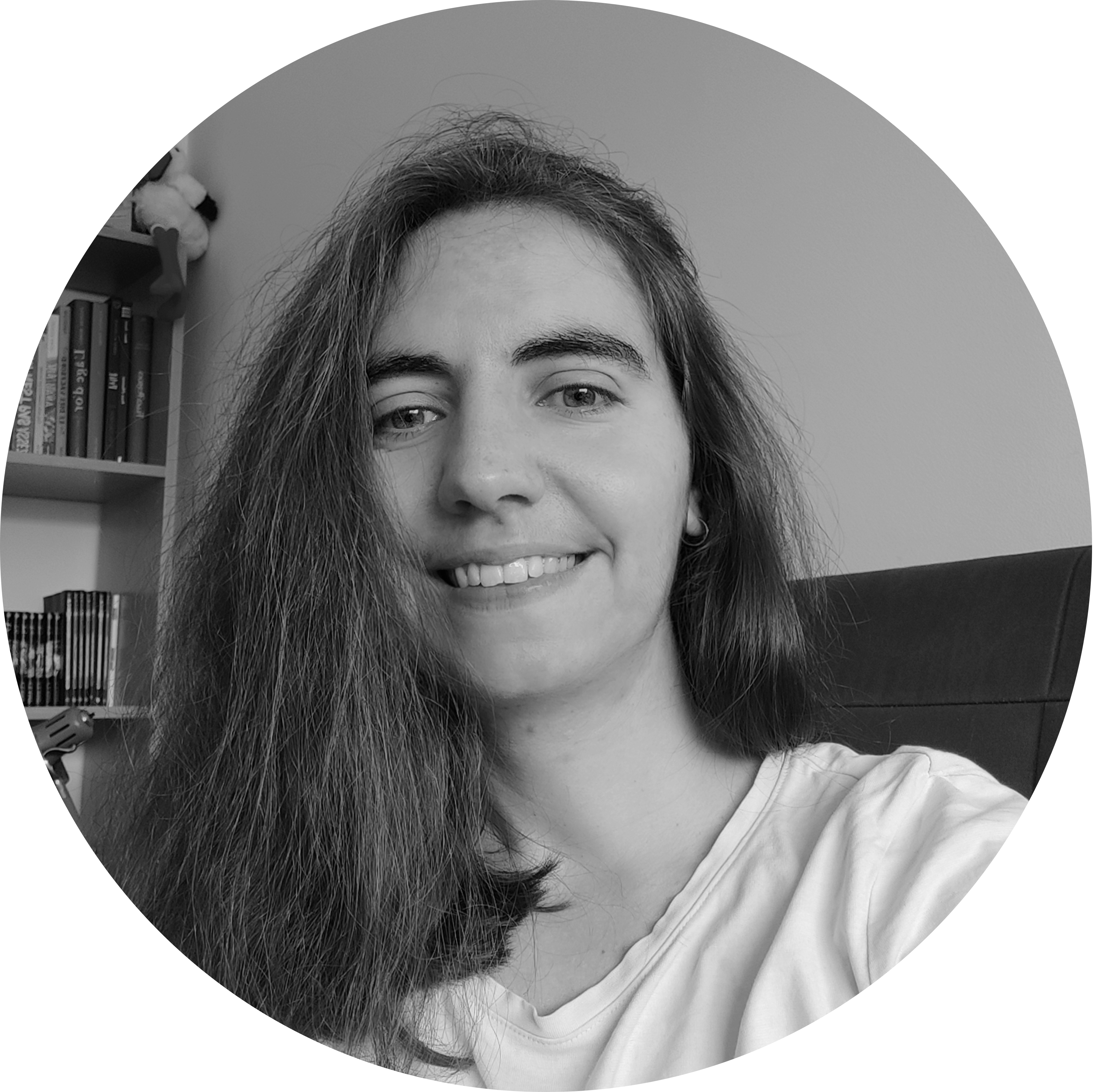
Marianne Delaforge (FR)
I am a self-taught visual artist and comic book author. I studied cultural journalism in Belgium and turned to the fine arts when I took a course in Budapest in 2014 but didn't continue down that path afterwards. It was only in 2019 that I returned to drawing, inspired above all by nature and the animality that interconnects with humanity. Since then, I participated in several collective exhibitions, such as 12x12 and "Small formats" and in various comic competitions such as the 24 hours of comics in Lisbon or the annual contests of Odemira or Kus editions. I also started to be musically active in 2018 when I joined the female choir Fio á meada, a project that continues to perform in Lisbon and elsewhere in Portugal to this day. I co-founded the Lisbon Drawing Club in 2021 and participated in the development of Queer Art Lab sessions, which promote the Trans and non-binary body in art. I like collective and groups in art and the way it feed my own practice, thanks to all those projects, art became a very social adventure for me.

Marie Jiménez (DOM)
Marie works with their immediate context. Their work is defined by the intersection of painting, cinema, sound and installation. In this interdisciplinary context, and with interest in initiating a dialogue urging social change, they work with themes related to identity and its perception outside of the norm. It is in this manner, sharing their personal experience, that the intimate becomes a tool for the political. Marie is currently enrolled in the Graduate program of film development in ESTC in Lisbon. They have participated in numerous collective art shows in NYC where they obtained their bachelor's degree in Parsons The New School. Also, they have participated in collective shows in museums and other cultural institutions in their home country, the Dominican Republic, and other institutions around America and Europe.
Find out more about the project

Muro Atelier (PT): Joana Tomas / Vincent Rault
Collective created by architects, Muro Atelier endeavors to challenge the concept of ephemerality through a participatory practice centered around material reuse and revitalization of unoccupied or public spaces.Through their research and installations, this initiative aims to reshape our perception of the city's dynamics, moving towards a more circular and sustainable system, while empowering urban participants to understand and harness the potential resources available to them. The term "Muro," meaning "Wall" in Portuguese, encapsulates architecture's fundamental essence, exploring notions of materiality, boundary, and scale. The wall embodies numerous metaphors in the collective imagination: an impassable barrier, yet also a gateway to freedom. Rooted in its physical, cultural, and historical context, the installations envisioned by the collective narrate and unveil the spaces they inhabit, placing visitors at the heart of their experiences.
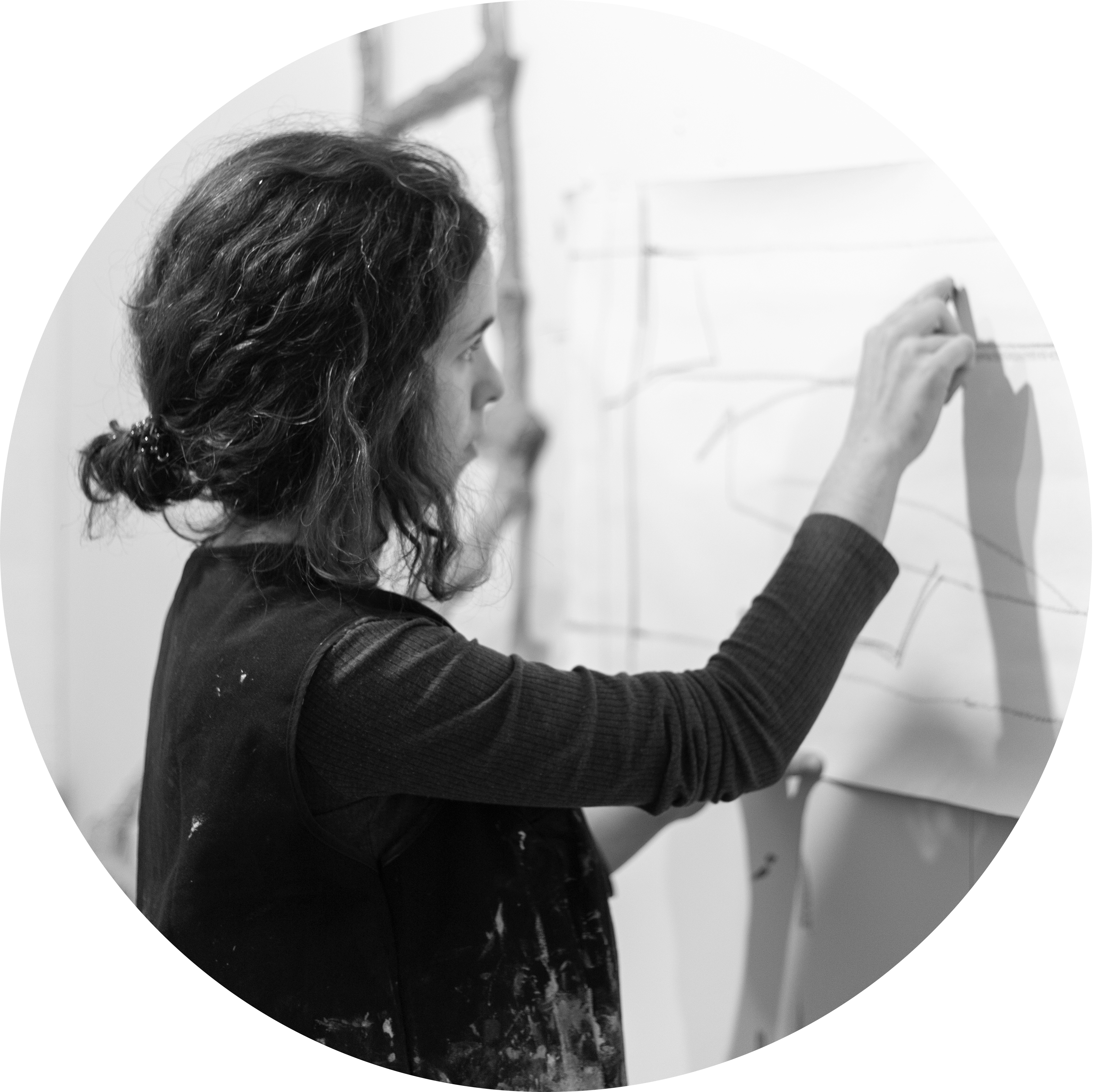
Rita Leitão (PT)
Rita Leitão was born in Lisbon in 1998. She graduated from the Faculty of Fine Arts, University of Lisbon in Painting marking her journey through Bilbao. Since then, she participated in several group exhibitions, highlighting “Elogio da Matéria”, SNBA Lisbon (January 2019); “Family Dinner”, Ceramics Museum, Sacavém (November 2020) and “Coletivo Casa Rosário”, Cascais (May 2021). In August 2021, she opened her first solo exhibition, “Bem-Vindo a Casa”, at CAT, in Tavira, and in October 2021 she was a resident artist at the Bordalo Pinheiro Museum. Rita is currently establishing her practice at the Beliche collective atelier, in Xabregas. Trainer, market enthusiast, illustrator, performer and plastic artist, Rita develops her practice in a deep relationship between Art and Life.
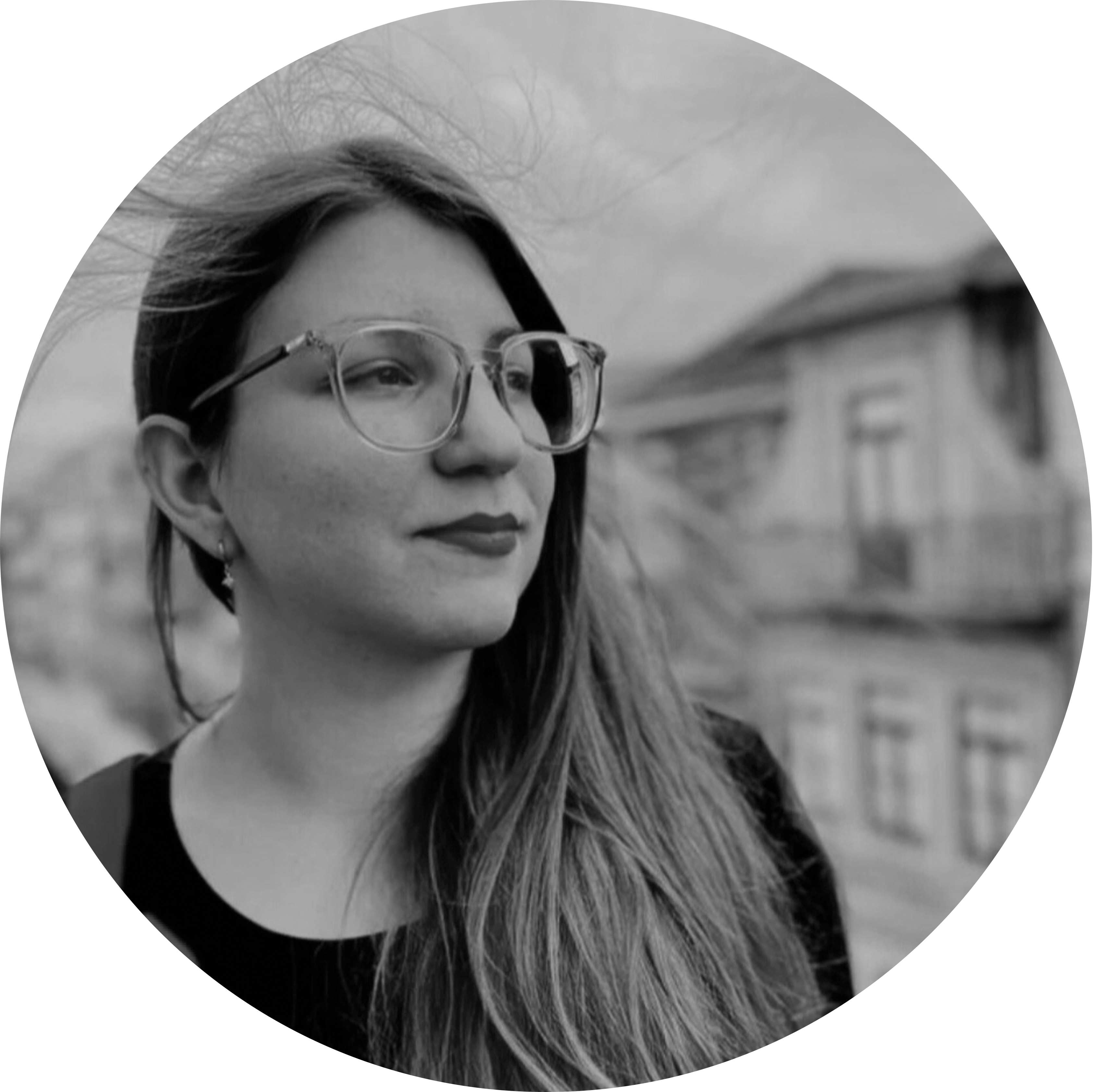
Zala Pori (SI)
Zala Pori is a visual artist from Slovenia, living in Cascais, Lisbon. After she finished her bachelors at the Academy of Fine Arts and Design Ljubljana in the painting department, she decided to take a leap abroad with the same department in her Masters. In 2016/17 she spent 2 semesters at the Faculdade de Belas Artes in Porto, Portugal. After completing her degree back at home she decided to take a break from the arts and embarked on collecting different life experiences, performing different professional roles. In 2021, she returned to Portugal, and her desire to return into the art field got rekindled. In her search for finding freedom in expression, she is exploring the play between figurative and nonrepresentational elements throughout the creative process. Contrasts, finding the balance between the complementary colors, the light and the dark, organic vs geometric, are also kept in mind during the process. The abstraction of artistic language creates images that open the door to imagination and fantasy.
— discover PLAY(THE)GROUND



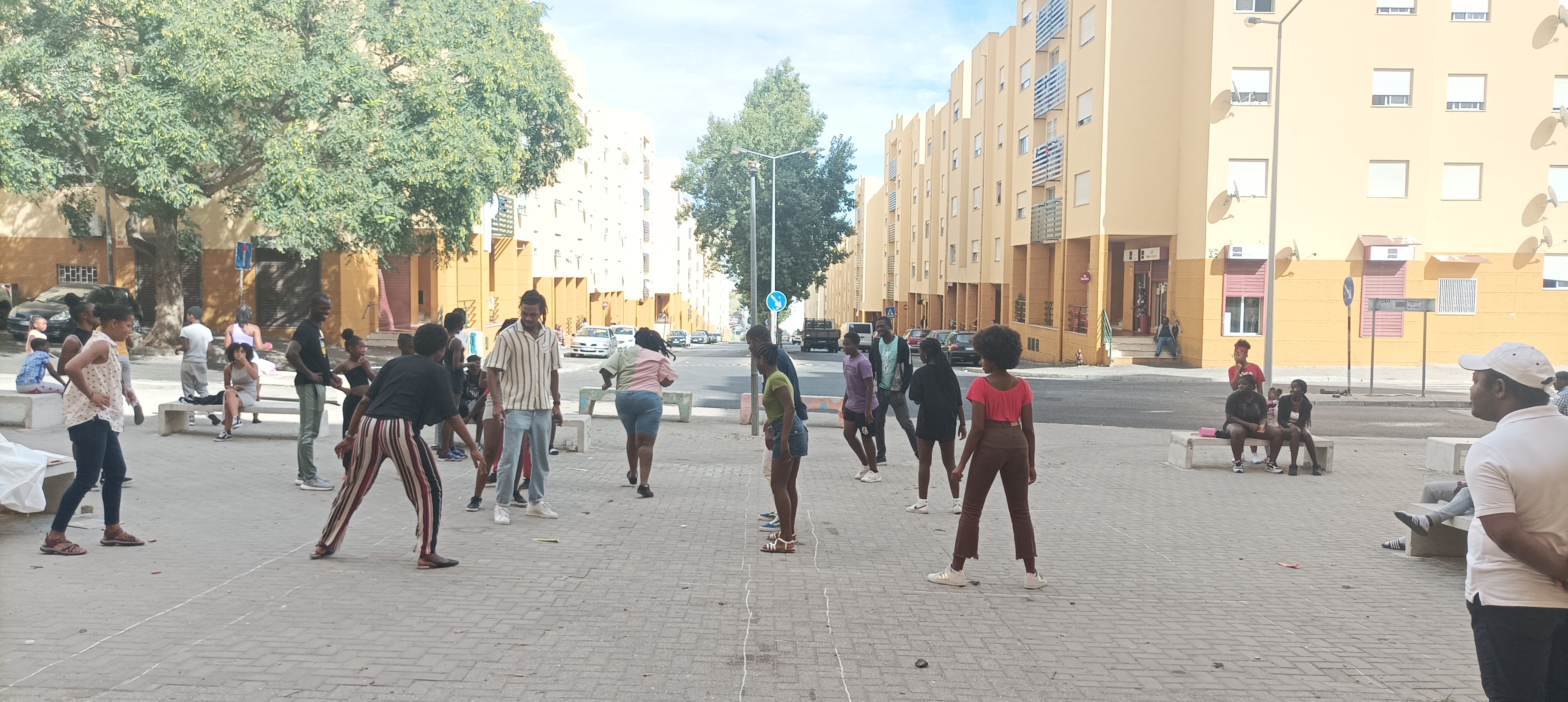

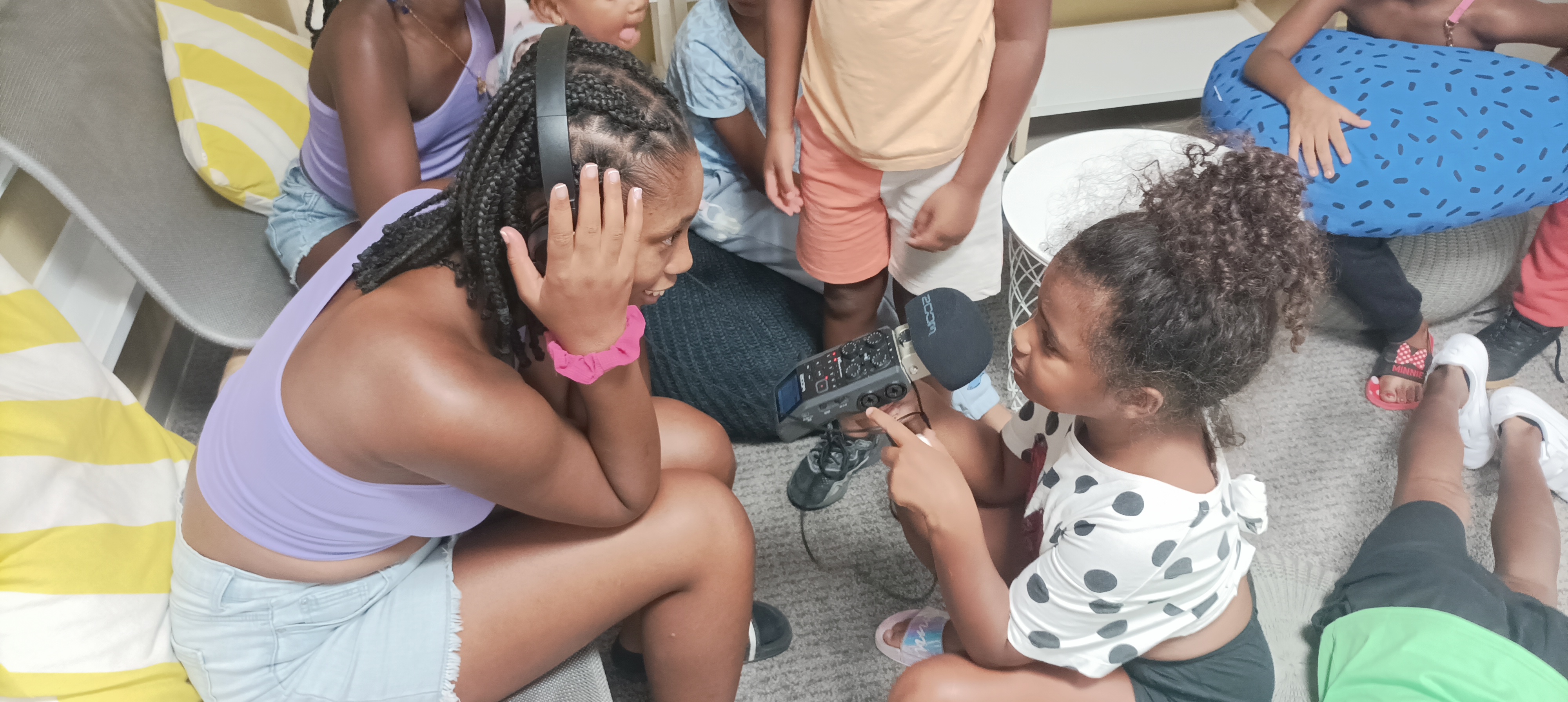


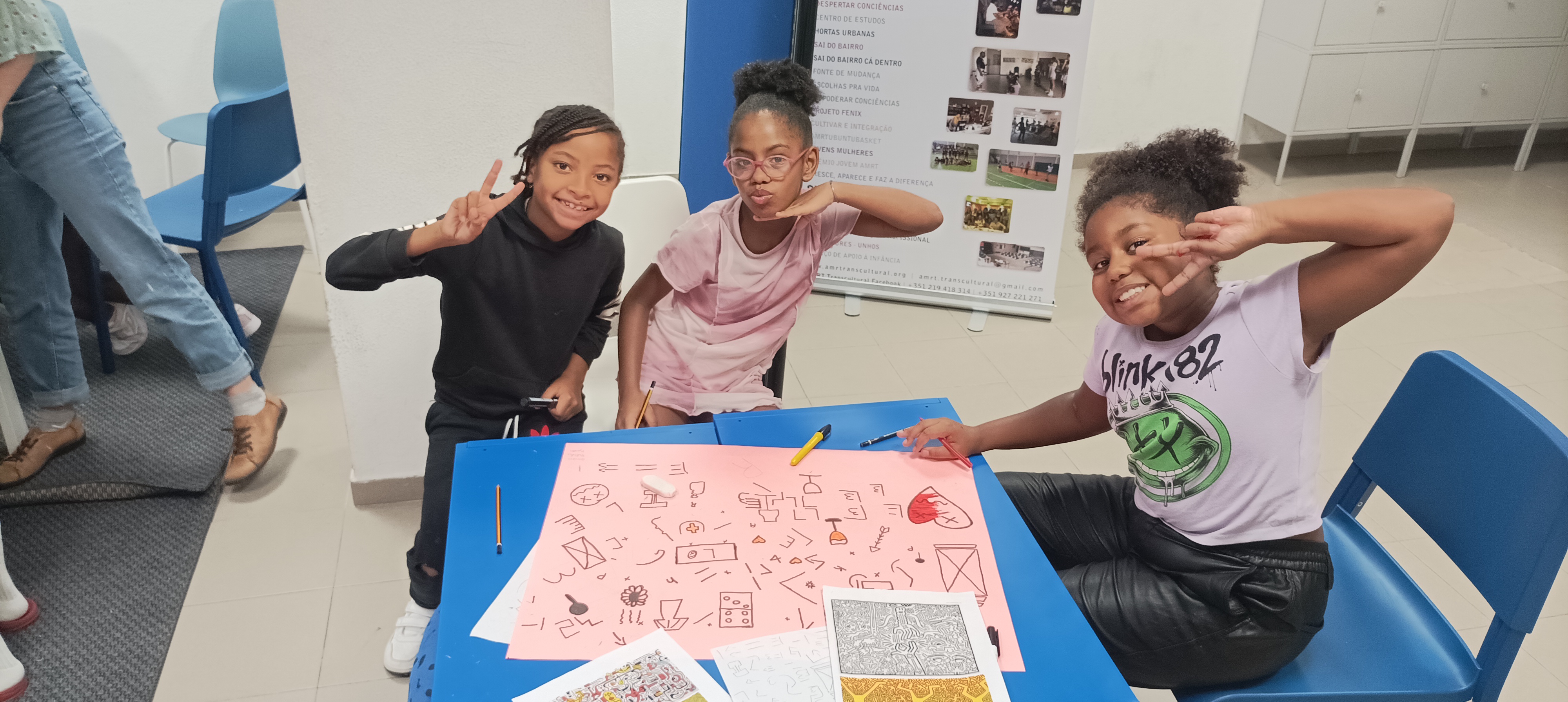
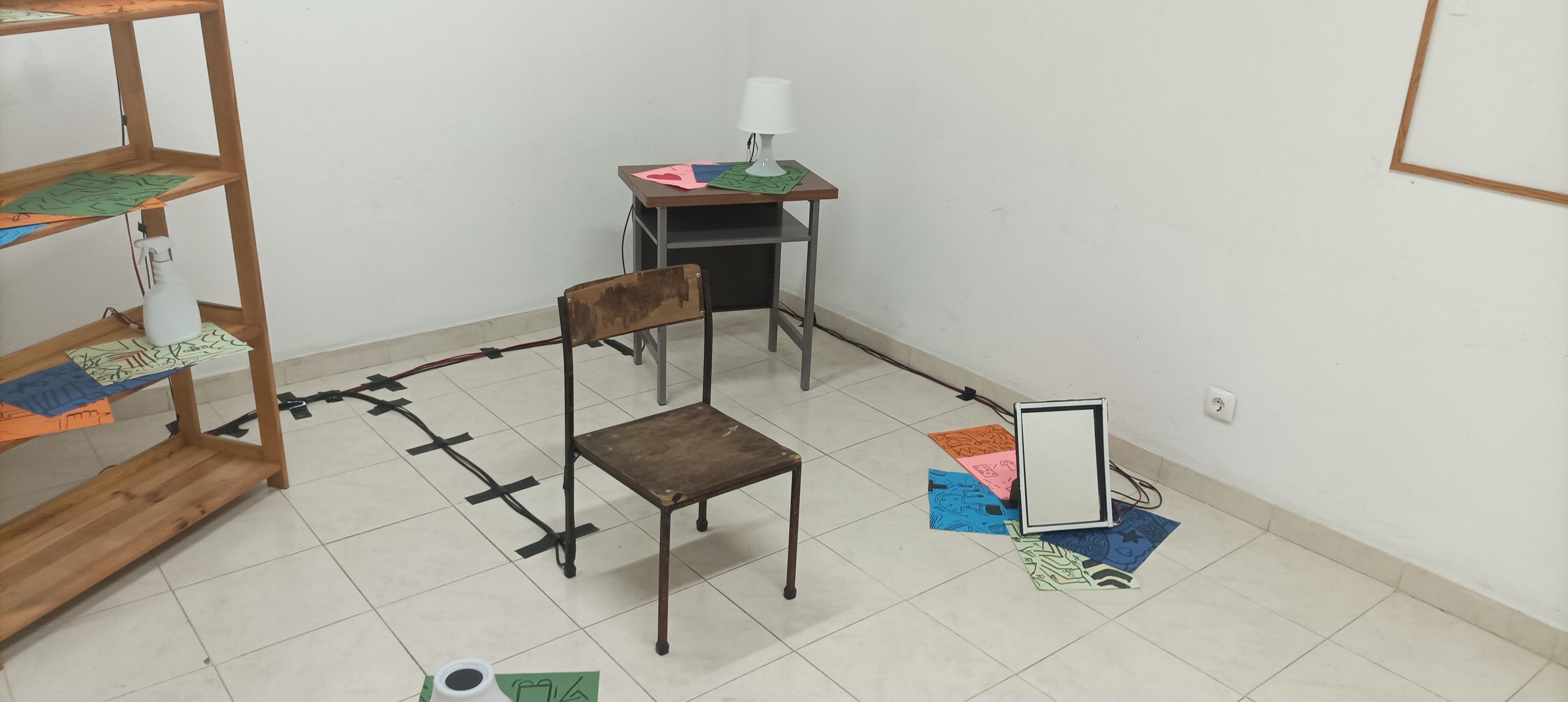

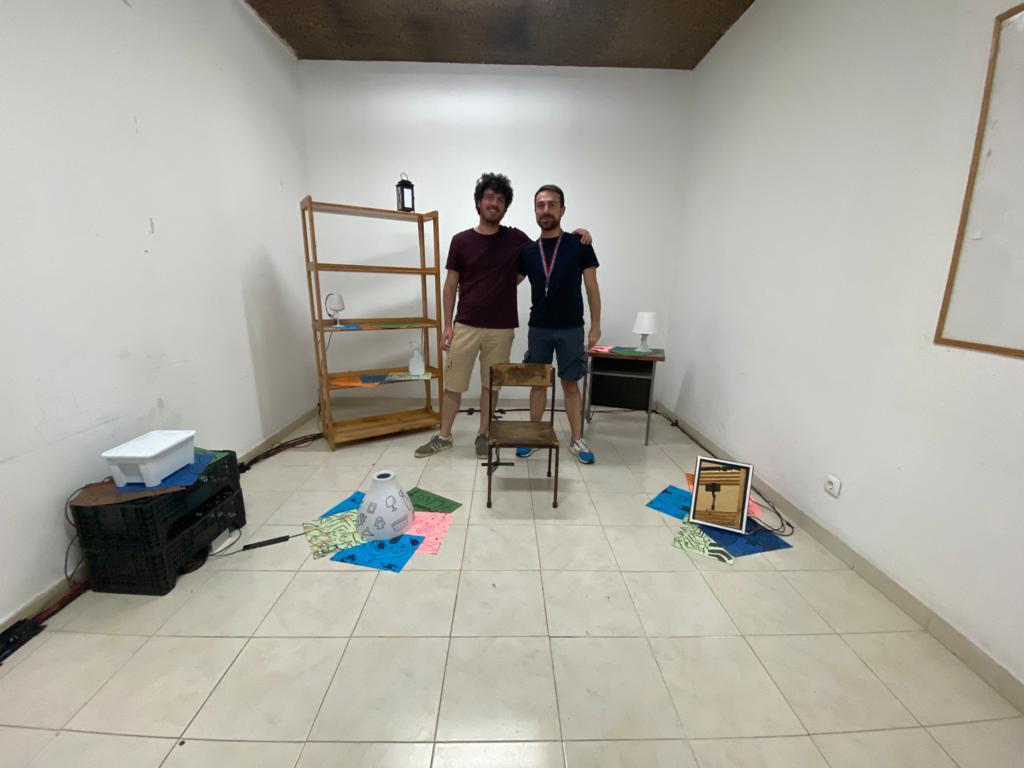







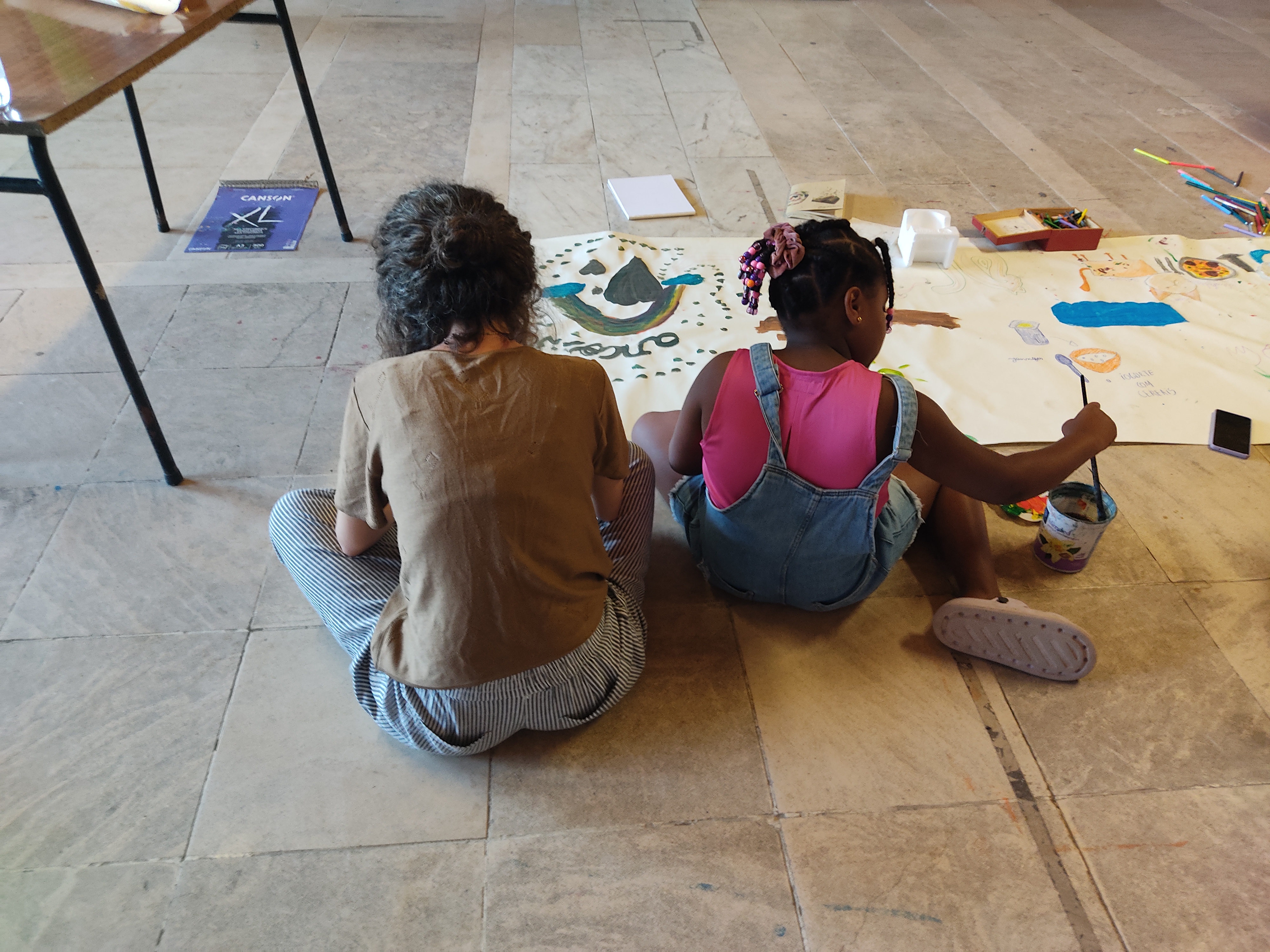
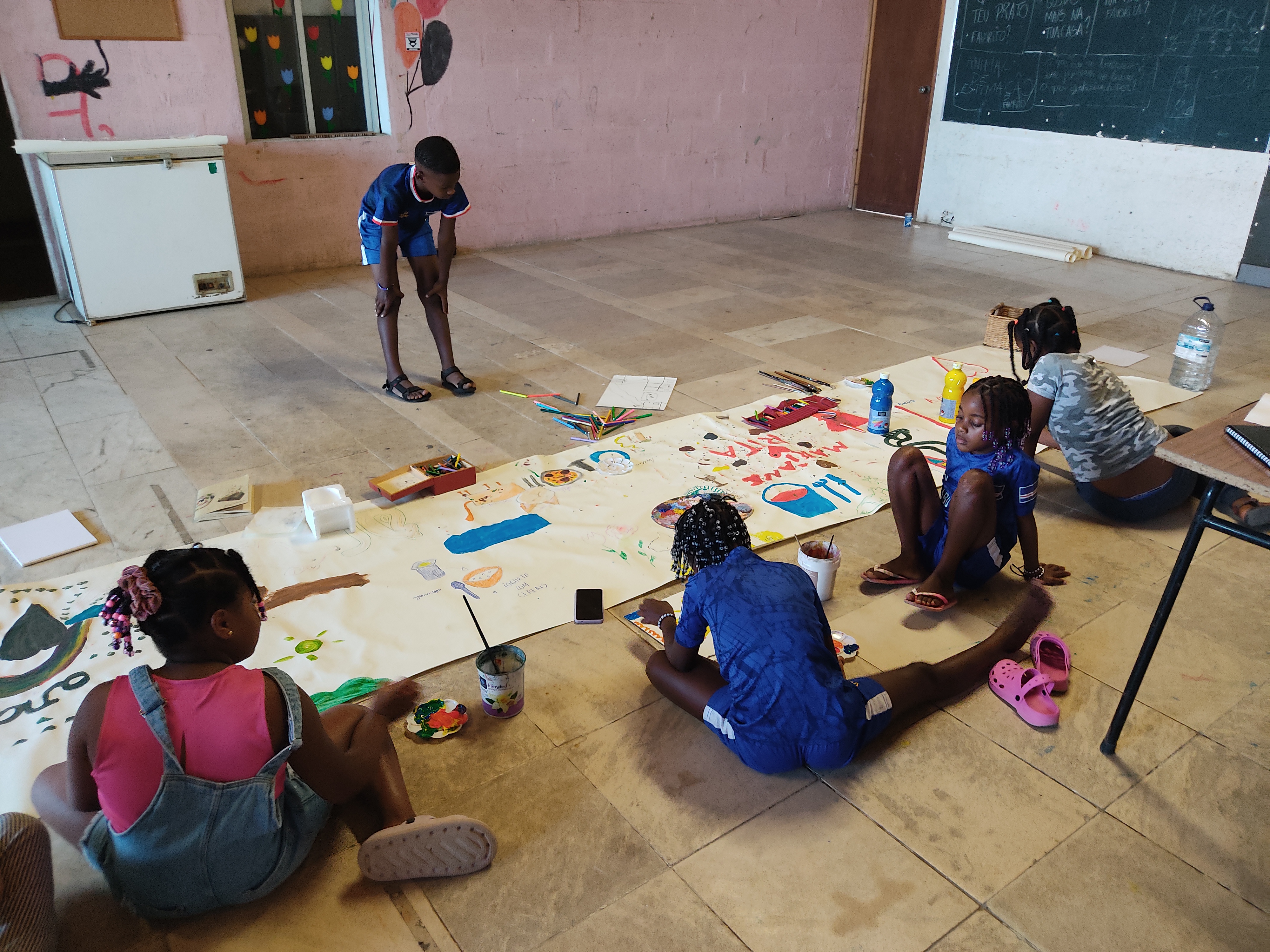
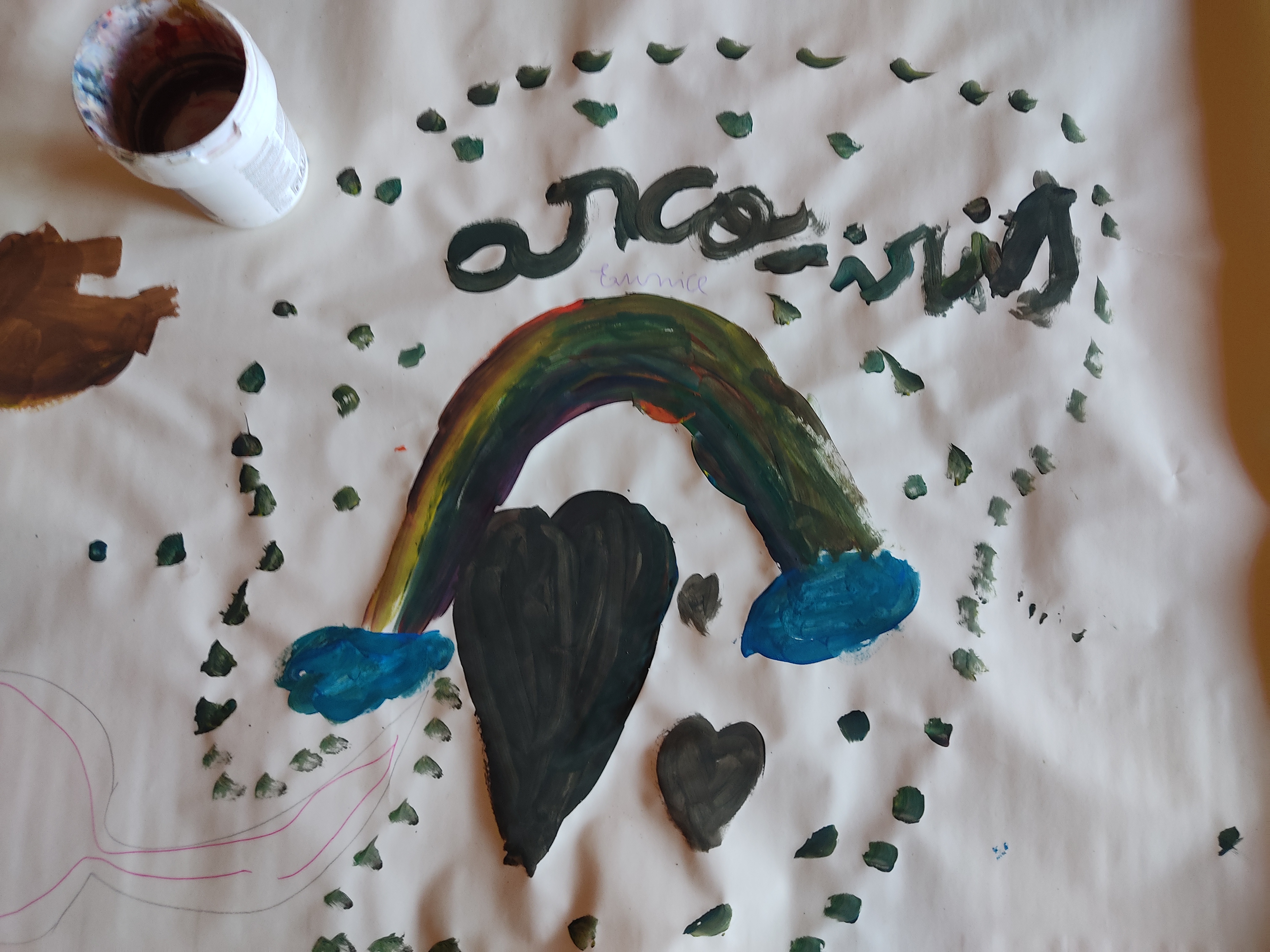










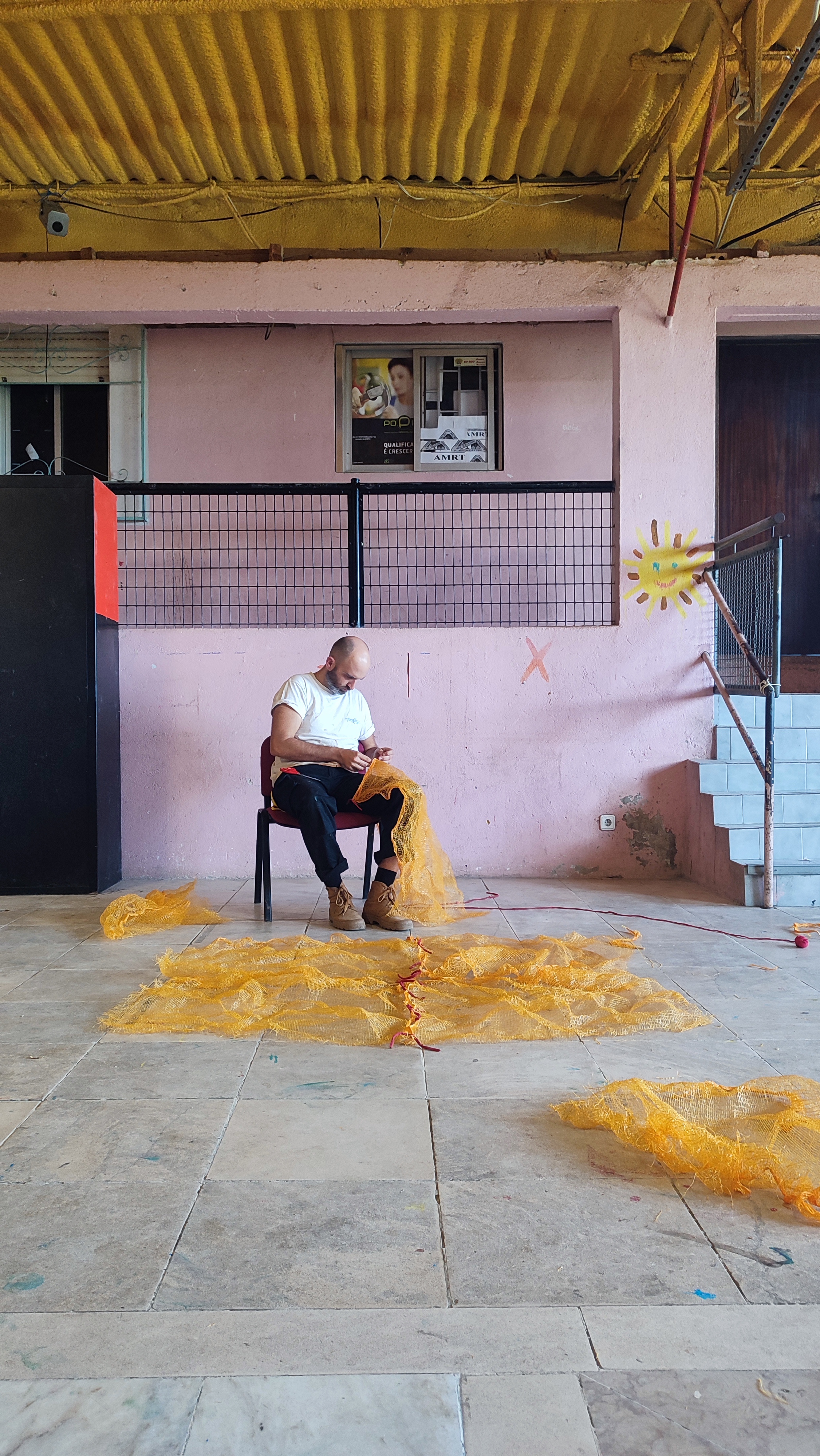






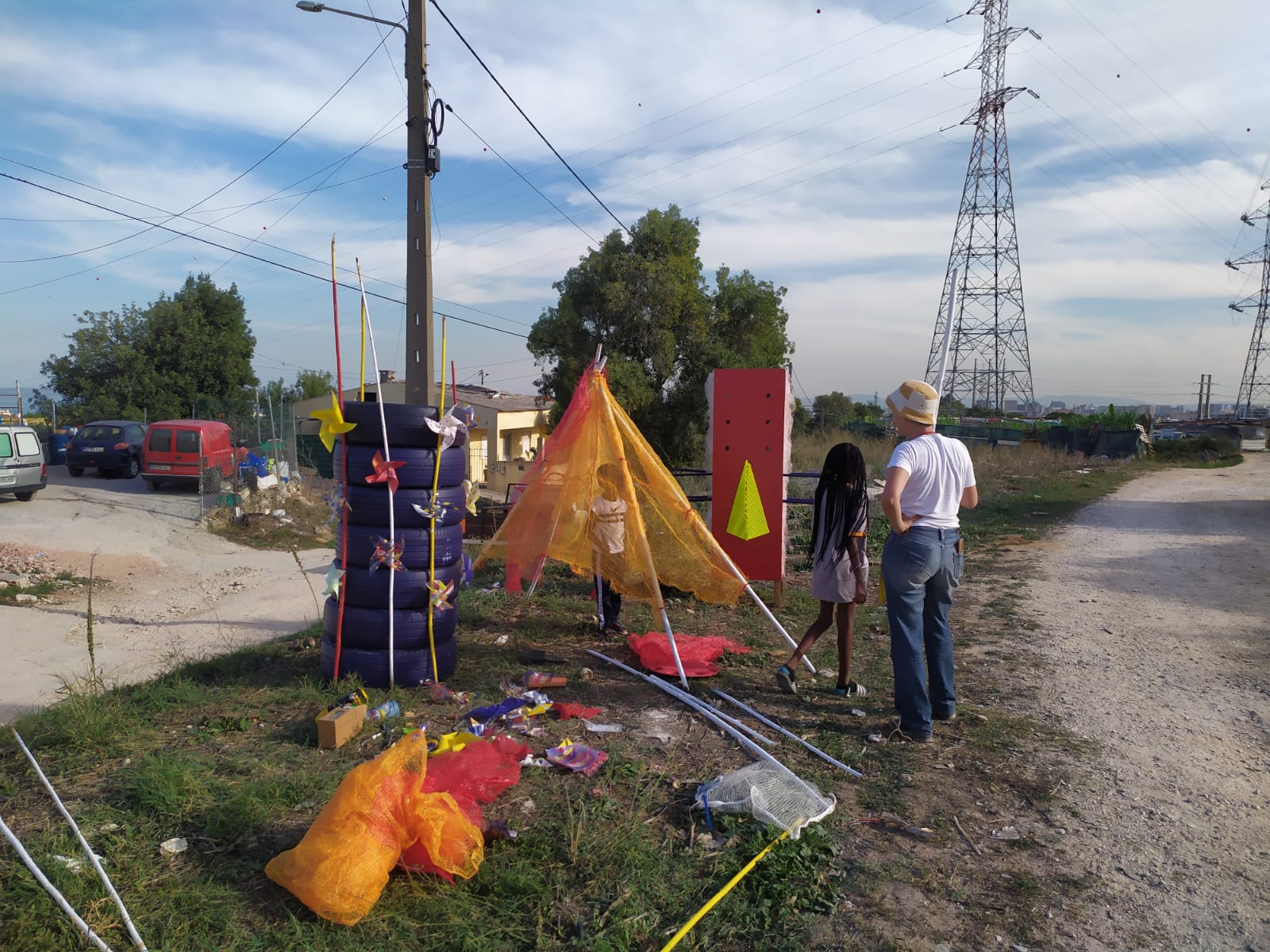
Our collective was founded on the basis of artist runned spaces, and since 2021 our goal has been to find a place where we could put in to practice this.
Throughout 2022, our project-space was located in Largo do Intendente in a small shop owned at the time by Largo Residências. This was the first try out of the space we envition to have. In there we hosted artists and curated an exhibition. Due to its closure, we remainned a few years without an alternative space.
Until 2024, where a partnership with METROCOM (lisbon’s metro company that manages all commercial spaces inside the metro galleries) allowed us to have a rent-free space and provide a project space for artists and cultural projects to showcase and/or work in a public acessible space with only a daily fee to cover costs of the store.
Dive in to each space to find out about the diversity of works and artists that have been showcasing in our spaces since 2022.
Throughout 2022, our project-space was located in Largo do Intendente in a small shop owned at the time by Largo Residências. This was the first try out of the space we envition to have. In there we hosted artists and curated an exhibition. Due to its closure, we remainned a few years without an alternative space.
Until 2024, where a partnership with METROCOM (lisbon’s metro company that manages all commercial spaces inside the metro galleries) allowed us to have a rent-free space and provide a project space for artists and cultural projects to showcase and/or work in a public acessible space with only a daily fee to cover costs of the store.
Dive in to each space to find out about the diversity of works and artists that have been showcasing in our spaces since 2022.
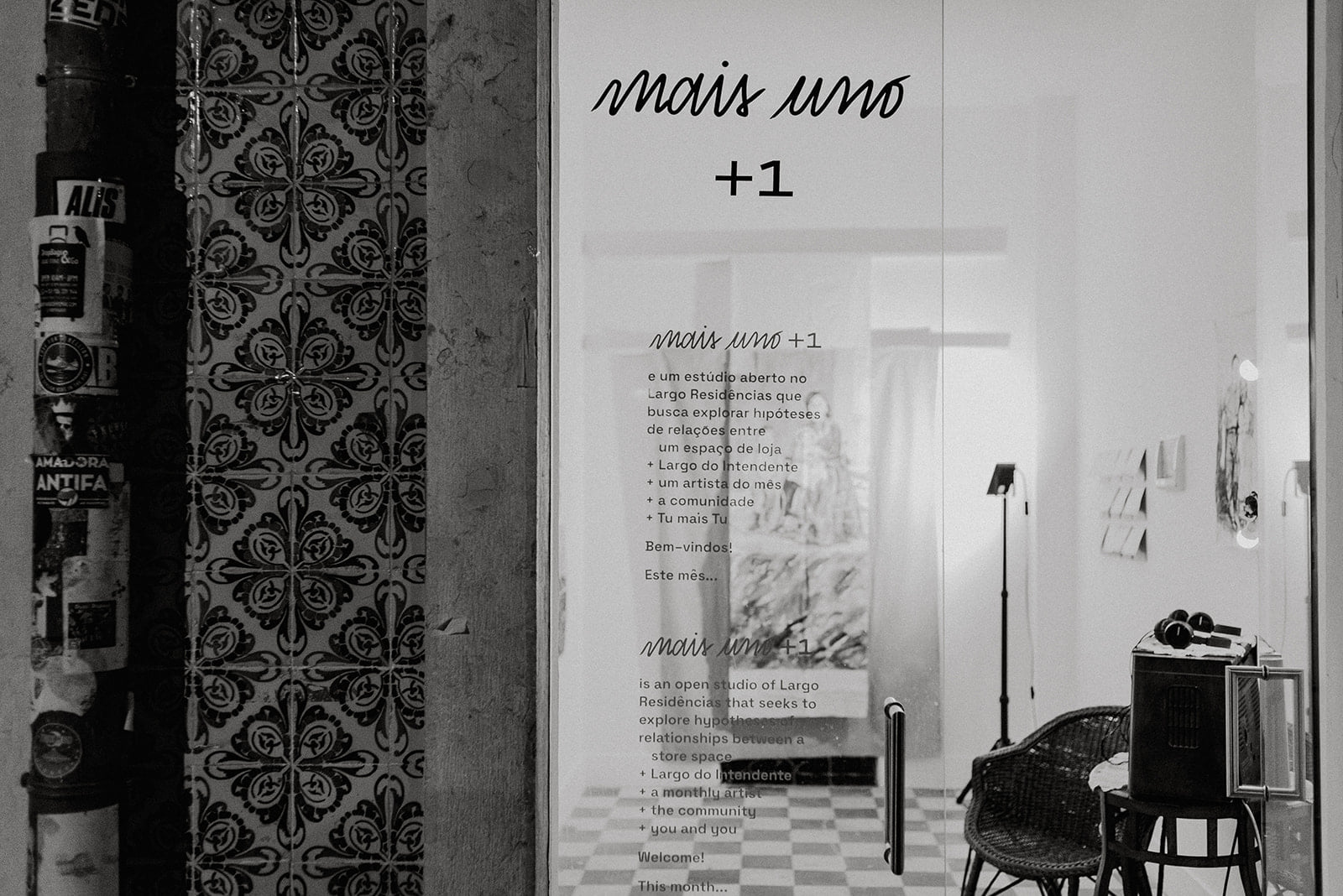
Intendente project space
mais uno +1 is a project-space at Largo Residências that seeks to explore hypothesis of relationships between
a space
+ Largo do Intendente
+ artist of the month
+ the community
+ you
—
project duration
2021 - 2022
2021 - 2022
— project location
Largo do Intendente (Lisbon)
Largo do Intendente (Lisbon)
—
curators
Angela Fellowes
Inês Nêves
Angela Fellowes
Inês Nêves
— partners
LARGO Residências
LARGO Residências
— artists
Angela Fellowes (Nov 2021)
Lígia Fernandes (Jan 2022)
Nicole Sánchez (Fev 2022)
mais uno +1 (Mar 2022)
Angela Fellowes (Nov 2021)
Lígia Fernandes (Jan 2022)
Nicole Sánchez (Fev 2022)
mais uno +1 (Mar 2022)
The project mais uno +1 contemplates the definition and management of an exhibition space, stemming from the interpretation of the curatorial exercise's as:
Through this perspectice, the construction of the space’s rationale, identity, communication and operation becomes an act of common creation that functions as a territory for reunion and mediation. Thus, the exhibition space adopts the nature of project-space. In a project-space the artistic practice is process-based: comented, presented, considered, tried and co-produced, seeking collaborative and/or participatory, and interdisciplinary processes.
With emphasis on the exploration of the involved actors’ different dynamics and energies, and considering that the collective is comprised of ones (1+1+1+1+...), which is on its own one as well, the the project-space mais uno + 1 (in english, more united +1) operates in a relational and incremental way that seeks to activate its potential for social and urban restoration and local artistic revitalization one link at a time.
(project-space) = mais uno
mais uno + 1 (actor* A) = uno (united)
mais uno + 1 + 1 (actor* B) = uno (united)
mais uno + 1 + 1 + 1 (actor* C) = uno (united)
* Someone/something able to cause effect which ca be composed by one or more. Example: neighbors, artists, residents, workers from the institution, students, etc.
- A shared act that is generated or is executed by more than one person, a way of testing hypothesis of relationships;
- An artistic act that establishes a way of exploring and creating collective practices;
- An act of premeditated spontaneity that prepares and facilitates the necessary conditions to the occurrence of organic encounters and events through artistic expression.
Through this perspectice, the construction of the space’s rationale, identity, communication and operation becomes an act of common creation that functions as a territory for reunion and mediation. Thus, the exhibition space adopts the nature of project-space. In a project-space the artistic practice is process-based: comented, presented, considered, tried and co-produced, seeking collaborative and/or participatory, and interdisciplinary processes.
With emphasis on the exploration of the involved actors’ different dynamics and energies, and considering that the collective is comprised of ones (1+1+1+1+...), which is on its own one as well, the the project-space mais uno + 1 (in english, more united +1) operates in a relational and incremental way that seeks to activate its potential for social and urban restoration and local artistic revitalization one link at a time.
(project-space) = mais uno
mais uno + 1 (actor* A) = uno (united)
mais uno + 1 + 1 (actor* B) = uno (united)
mais uno + 1 + 1 + 1 (actor* C) = uno (united)
* Someone/something able to cause effect which ca be composed by one or more. Example: neighbors, artists, residents, workers from the institution, students, etc.
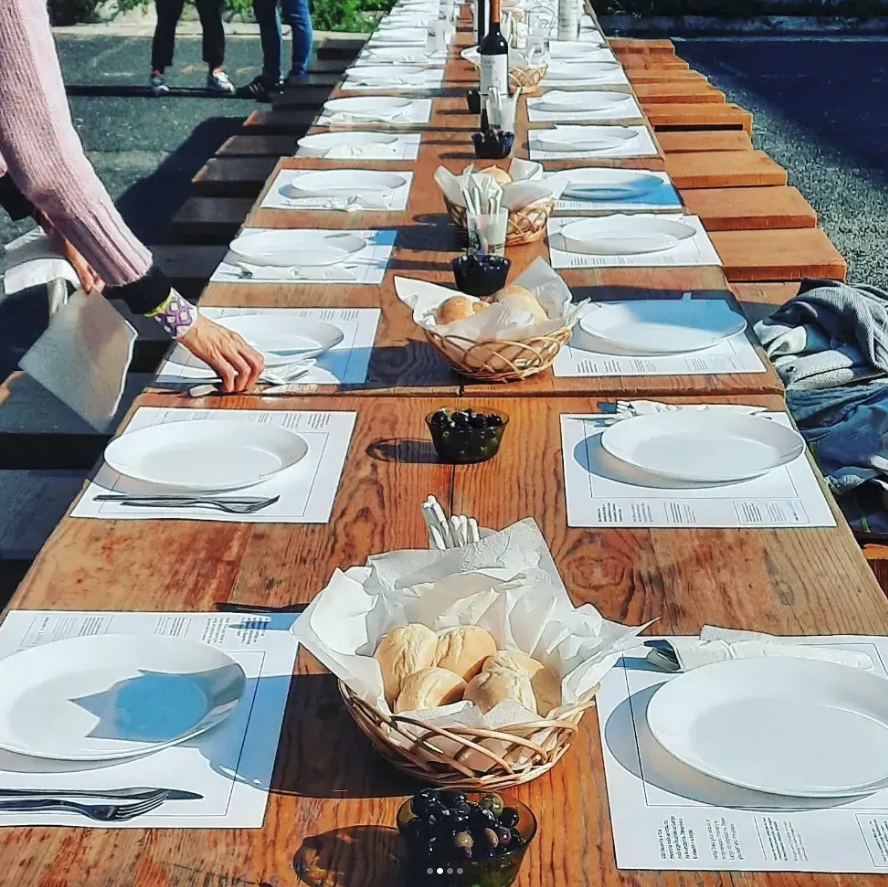
Angela Fellowes
"A Nossa Memória"
Uma coleção de memórias do Largo do Intendente desenhadas em individuais de café.








Lígia Fernandes
"avó não me contou"
"avó não me contou"
A avó não me contou sobre a sua infância, sobre como foi nascer e viver em Portugal.
A avó não me contou sobre a sua vida em Angola e Moçambique, nem sobre como teve que regressar.
A avó não me contou que guarda a fotografia do seu primeiro amor no álbum, mas não a mostra a ninguém.
A avó não me contou que fugiu da guerra com o dinheiro que conseguiu esconder dentro da vagina.
A avó não me contou sobre o dia em que deixou de tocar piano.
A avó não me contou nada sobre como o avô se foi embora e a deixou com a minha mãe.
A avó não me contou sobre a prostituição das artistas de cabaret e revista.
A avó não me contou sobre as vítimas negras da independência das ex-Colónias
A avó não me contou que as meninas ricas não podiam ir à escola.
A avó não me contou sobre a sua viagem pelo continente africano.
A avó não me contou sobre o seu trabalho de infância.
A avó não me contou sobre a sua carreira de cançonetista e artista da rádio
A avó não me contou sobre as amantes do avô.
A avó não me contou sobre o trisavô, que era de São Tomé e Príncipe e poderia ter sido traficante de escravos.
A avó não me contou sobre a sua paixão impossível por um homem de outra classe social.
A avó não me contou sobre o bisavô, que era músico de jazz e que só conheceu enquanto este dormia.
A avó não me contou porque mandou a mãe para o colégio interno.
A avó não me contou sobre o 25 de Abril.
A avó não me contou sobre a sua infância no teatro Tivoli.
A avó não me contou sobre esta Lisboa que é feita de tantas camadas.
A avó não me contou que eu fui a primeira mulher da família a nascer em Liberdade.
Isso descobri eu, depois de a ouvir.
Texto: Lígia Fernandes, baseado em depoimentos reais recolhidos com as utentes do centro de dia da N. Sra. dos Anjos entre Maio e Setembro de 2020.


Desde março de 2020 com o despoletar da pandemia de COVID-19, foram encerrados em Portugal a maioria dos espaços comunitários — entre eles o do centro de dia da Nossa Senhora dos Anjos, em Lisboa. Para muitos dos seus utentes as atividades do centro de dia eram os únicos momentos de interação social do seu quotidiano. A pandemia revelou-se especialmente difícil para a geração mais idosa, que se viu confinada em casa, em situações de solidão extrema. Foi neste contexto que recebi um convite urgente do LARGO Residências para desenvolver uma iniciativa artística com os utentes do centro de dia da N. Sra. do a Anjos.
O projeto “retratos de família” fez parte dessa iniciativa. Foi o primeiro que realizei depois da ocorrência da pandemia. Foram várias semanas de recolha das imagens e histórias de vida das diferentes utentes. A recolha consistia em visitas às suas casas e a uma conversa que decorria ao ritmo da viragem das páginas dos seus álbuns de família. Estórias de vida com muitas pausas e recomeços.
Desta iniciativa nasce o projeto a "avó não me contou": uma recolha-em-progresso das histórias e imagens de vida da geração mais antiga de mulheres em diferentes partes do mundo. Re-construo, através do desenho, uma narrativa feminina da história que ficou por escrever. Em Janeiro de 2022, regresso às imagens recolhidas no espaço mais uno +1.
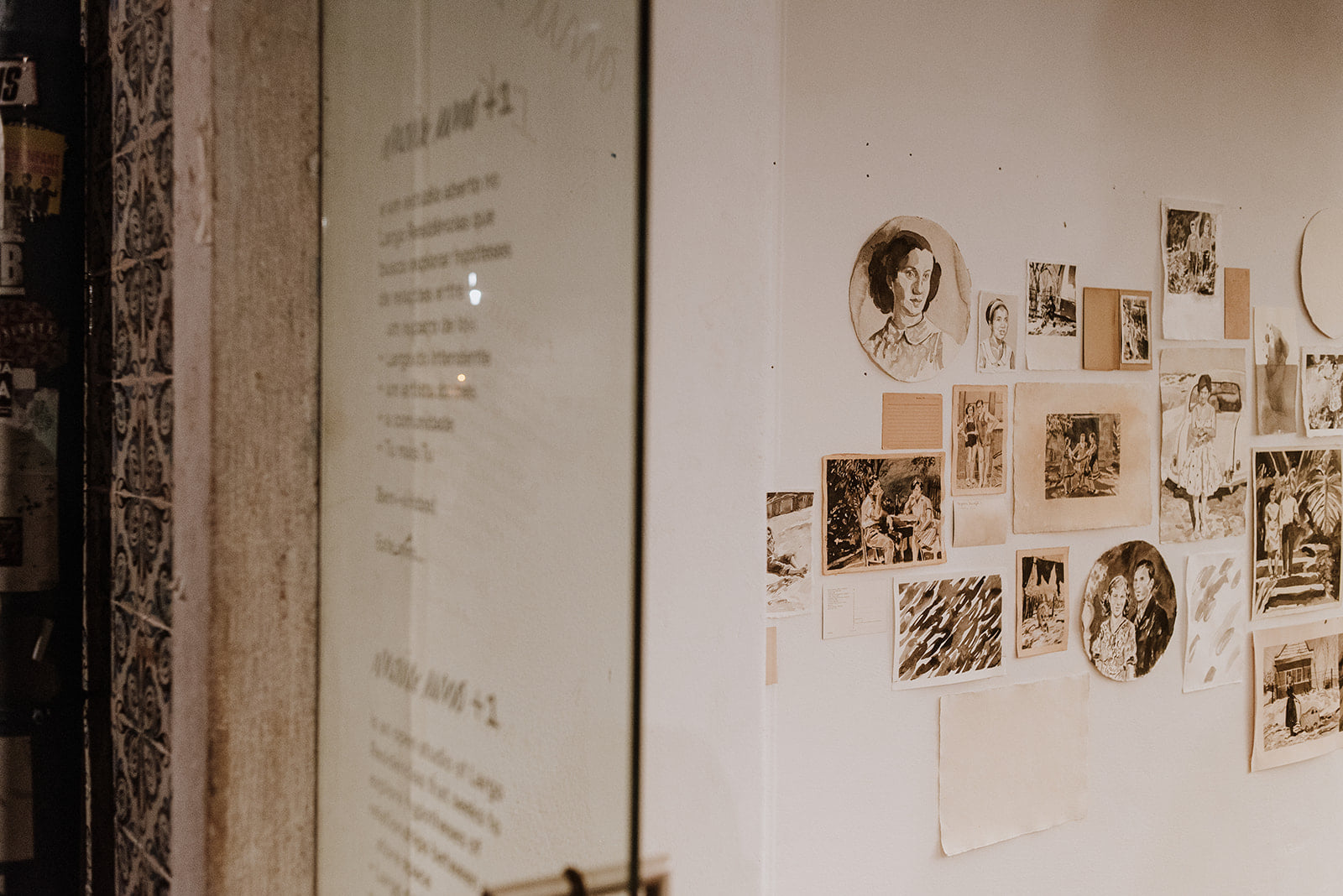

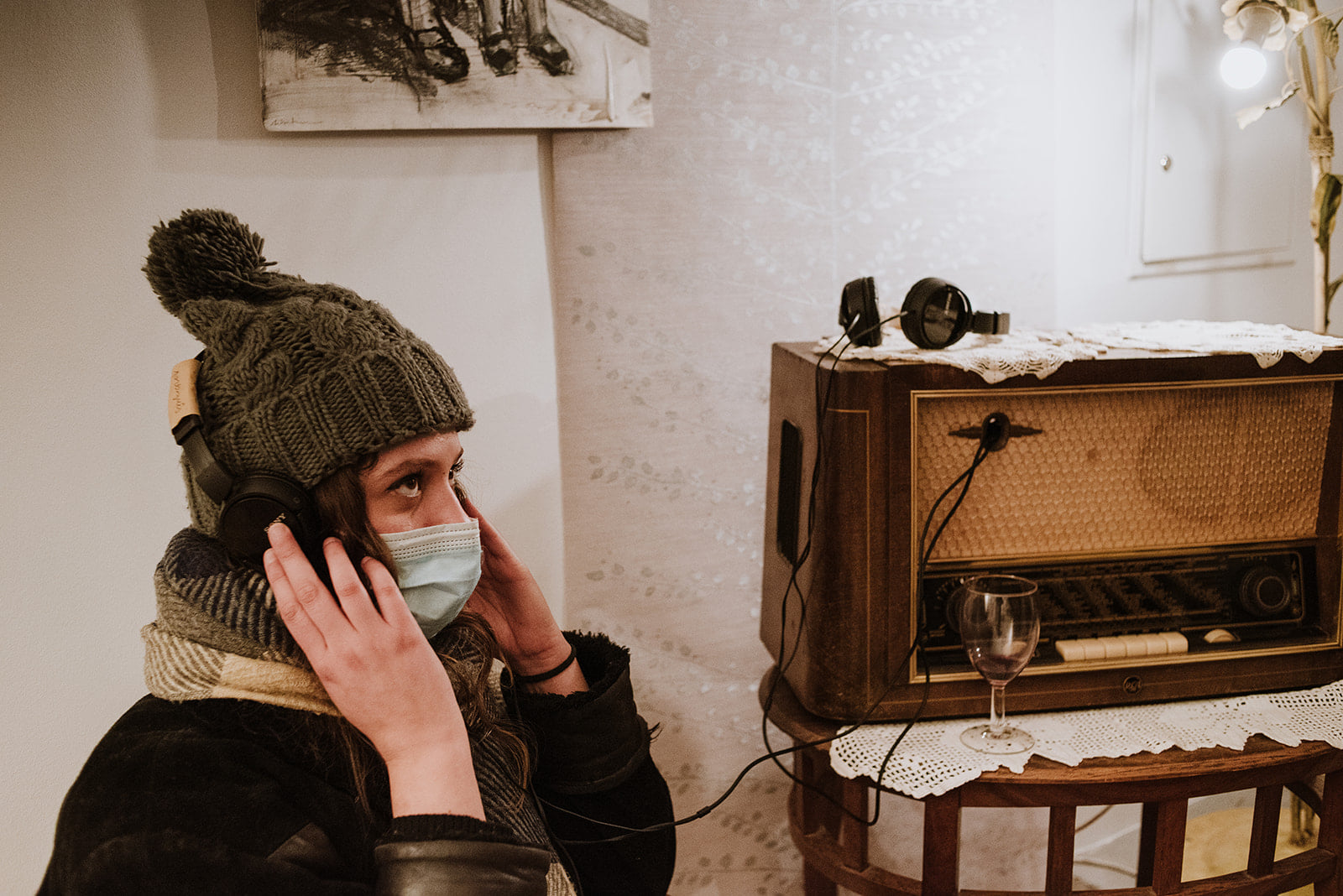
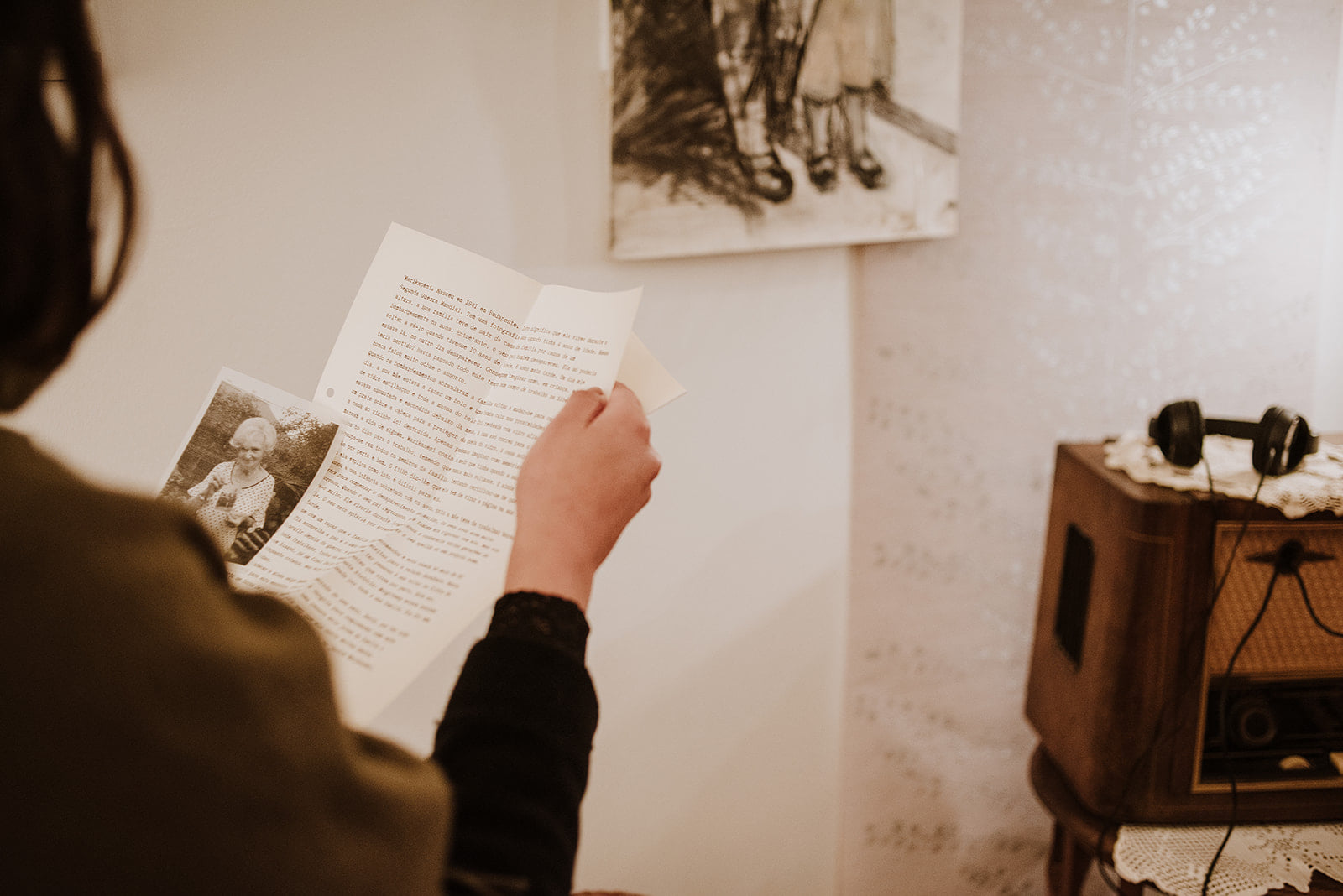
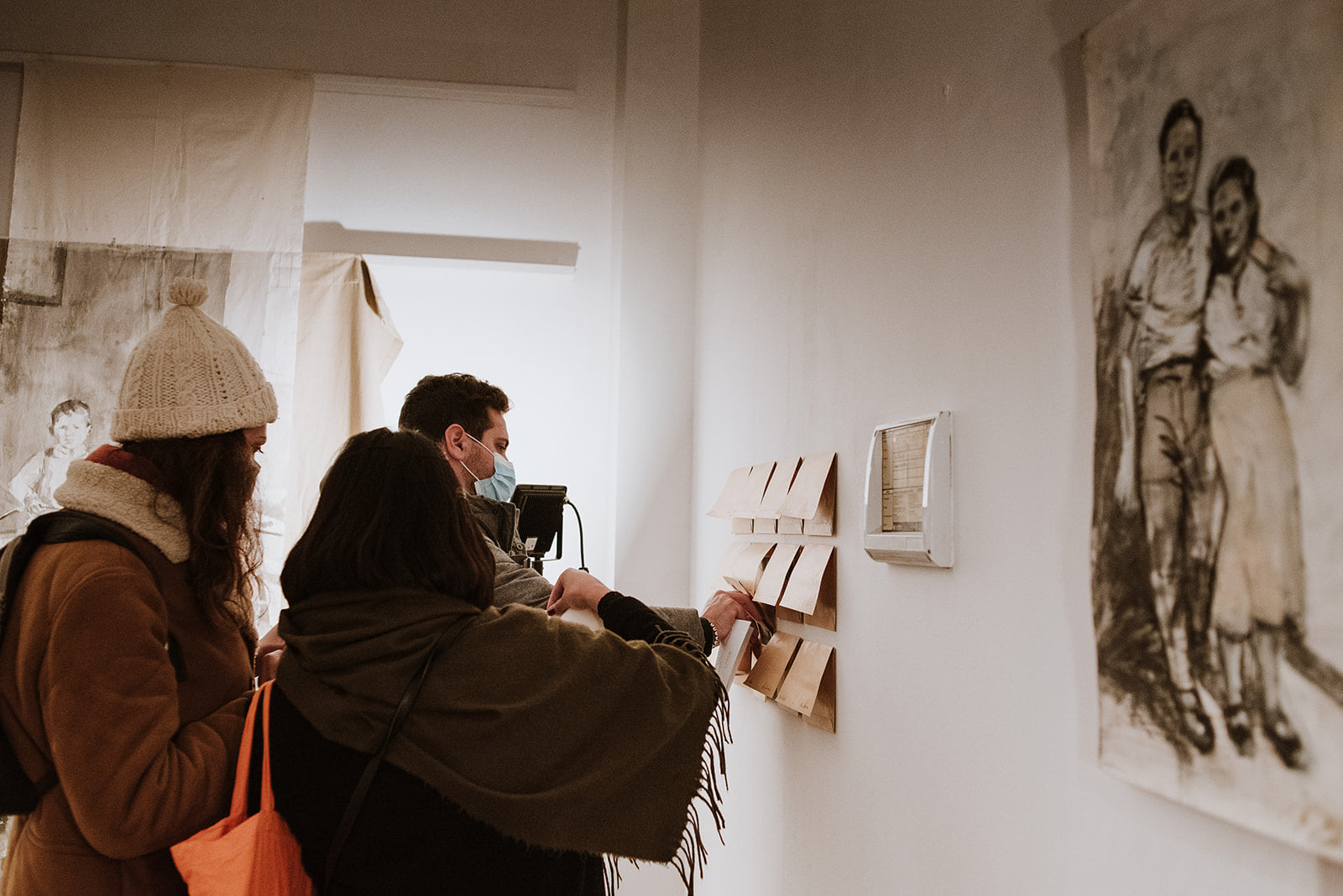



Fotografia: Nicole Sánchez
Os estúdios fotográficos de rua representaram durante décadas um lugar de celebração, de reunião, de ritual, onde pessoas, amigos e famílias se juntavam em ocasiões especiais (e não só), enfeitando-se com o seu vestido mais bonito ou mais brilhantina no cabelo do que era habitual. Ao mesmo tempo, estes estúdios tornavam-se também um local de arquivo: nas suas montras agregavam-se os rostos aperaltados da vizinhança, as fotografias de passe, os retratos de família, ou as imagens do bebé que acabava de nascer. Via-se espelhado cada rosto que construía esse bairro, essa comunidade, essa família extensa.
Ao reconstruir no espaço-projecto mais uno +1 este “estúdio do bairro”, Nicole procura confortar a nostalgia por um lugar de encontro consumido pelo tempo. Durante um mês, os vizinhos poderão de novo colocar a sua melhor gravata, usar o seu verniz mais brilhante, e unirem-se para uma foto. Uma foto que podem levar para casa, emoldurar, e colocar na parede da sala, para relembrar que, afinal, pertencem a algo mais uno. Como uma montra, o Largo Café Estúdio apresenta os resultados do "Estúdio de Bairro" que foi montado em Dezembro de 2021

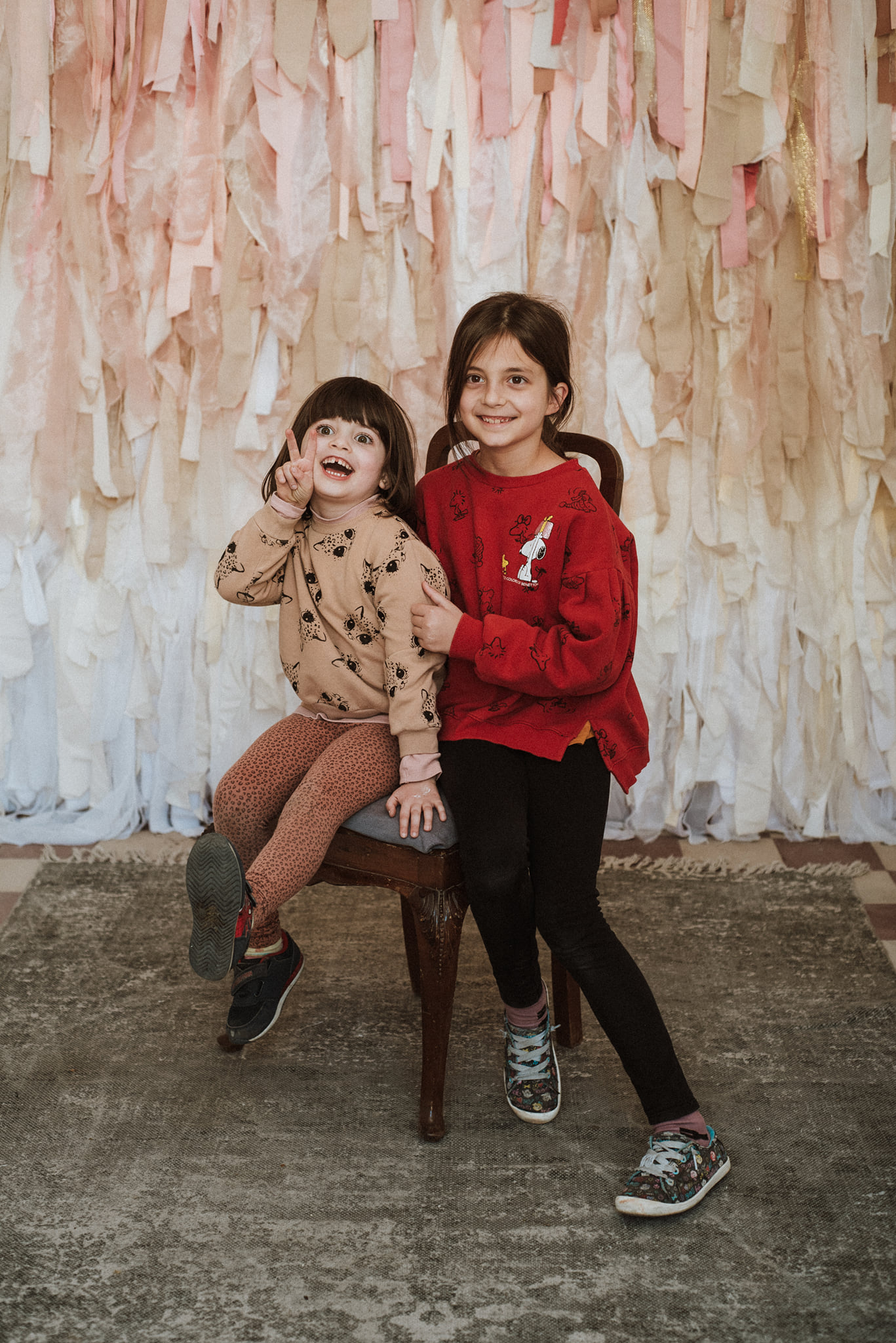
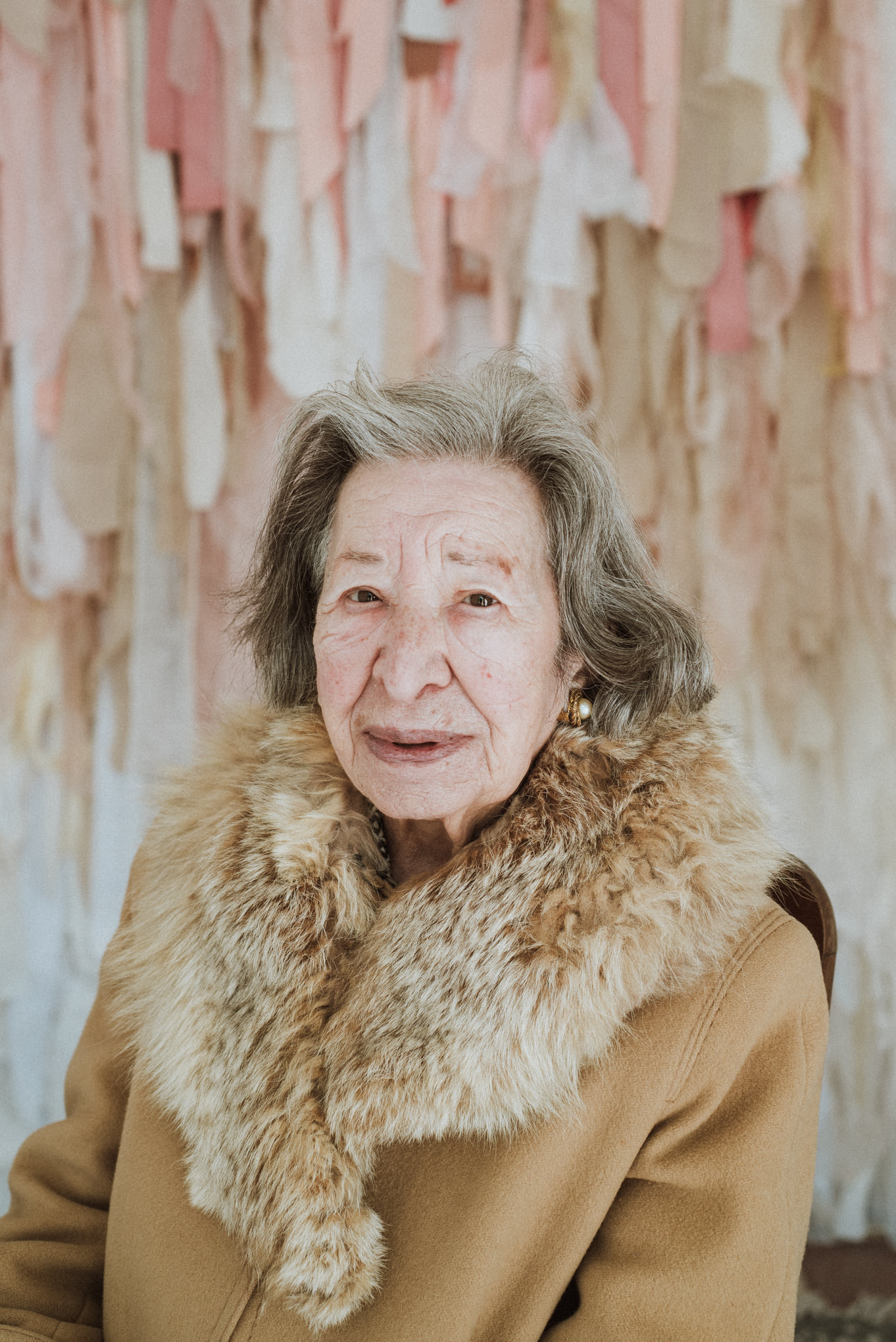
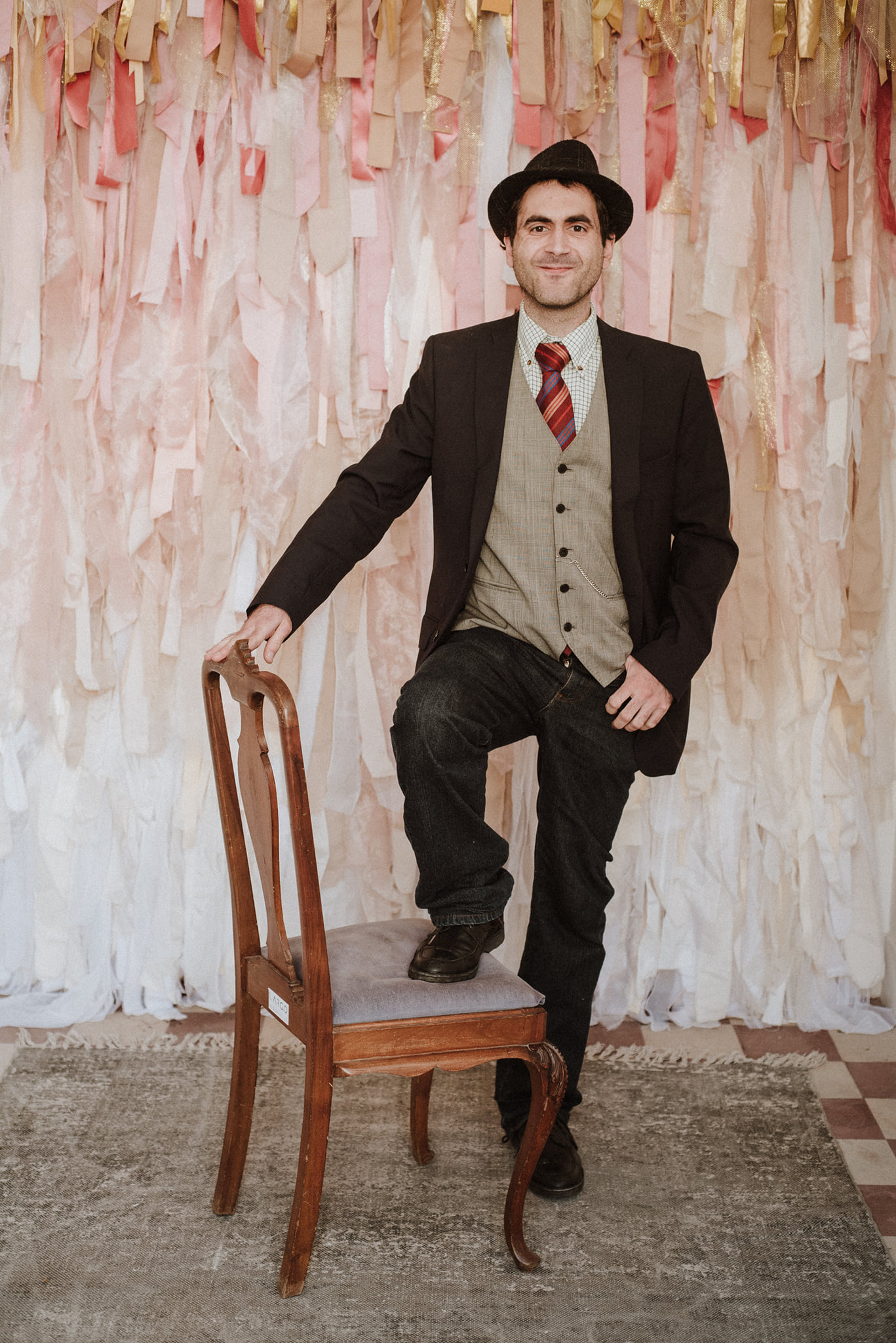
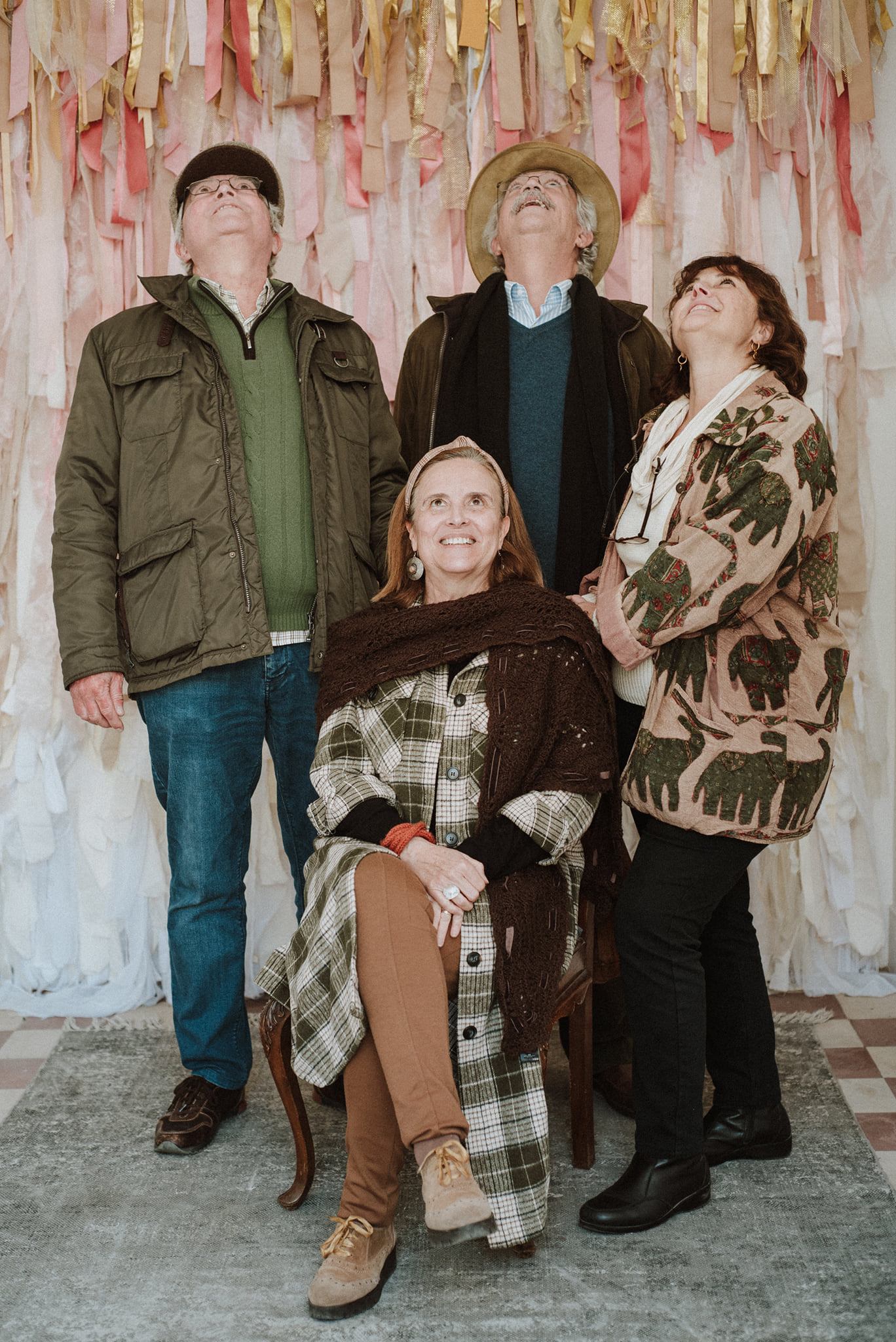
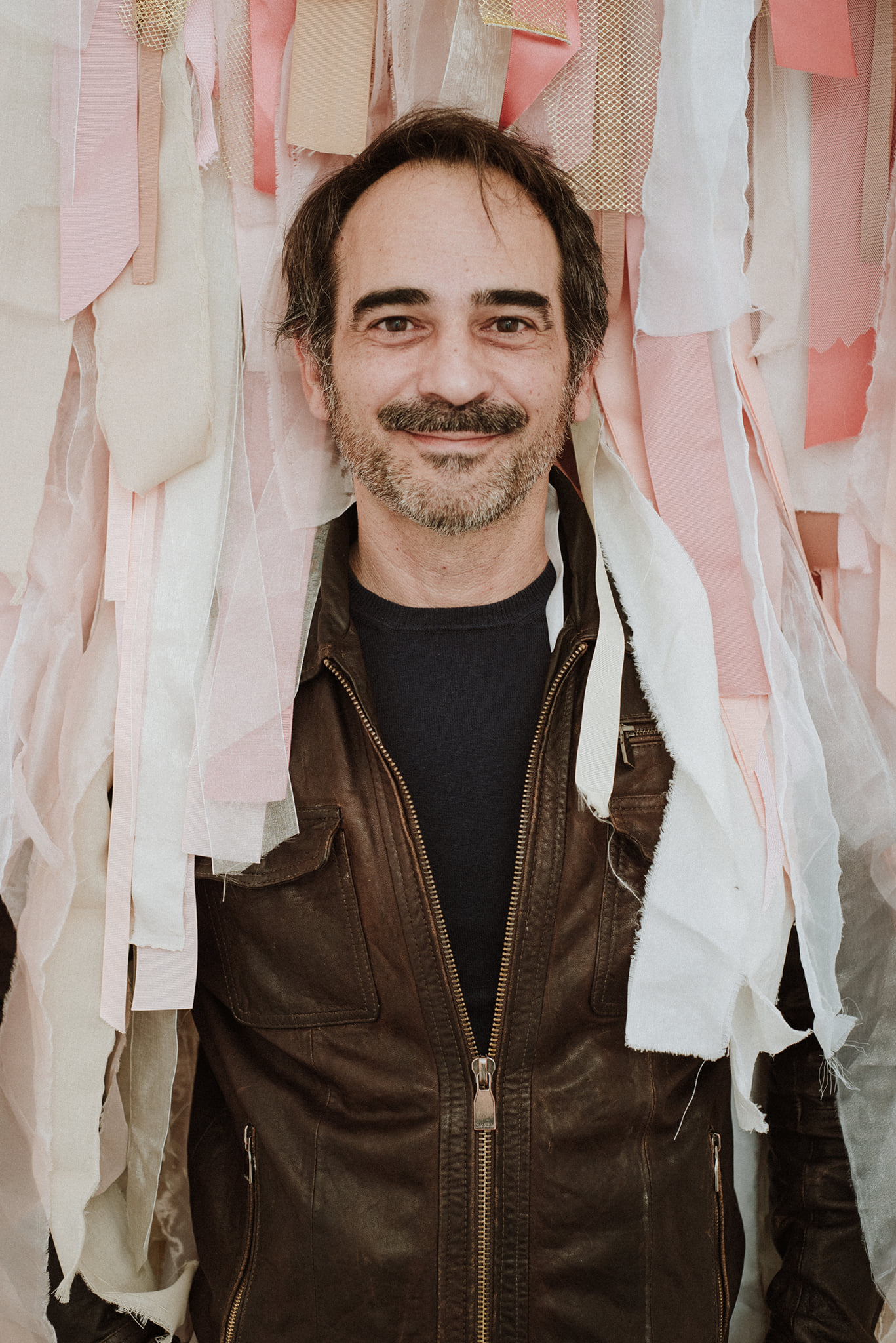

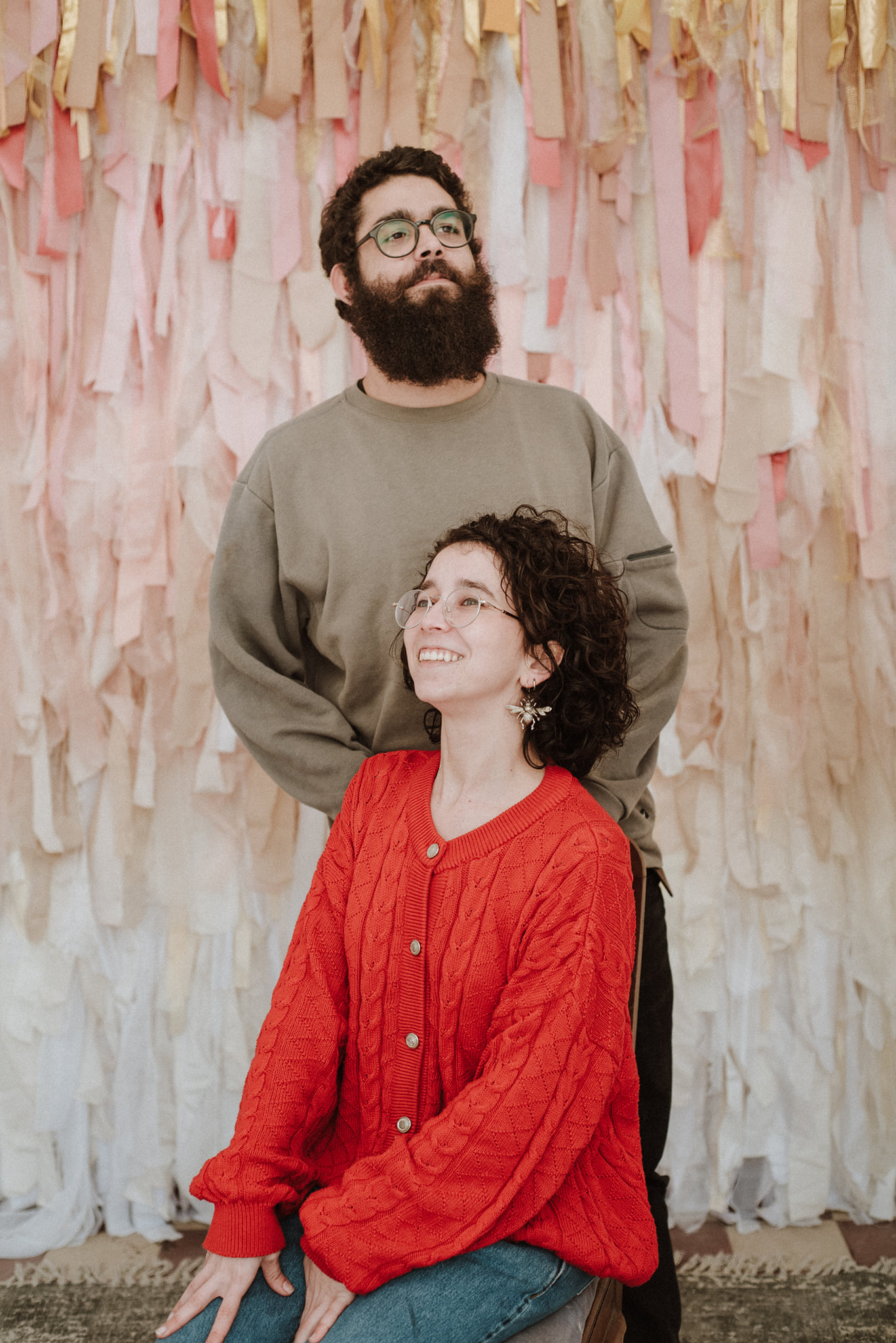
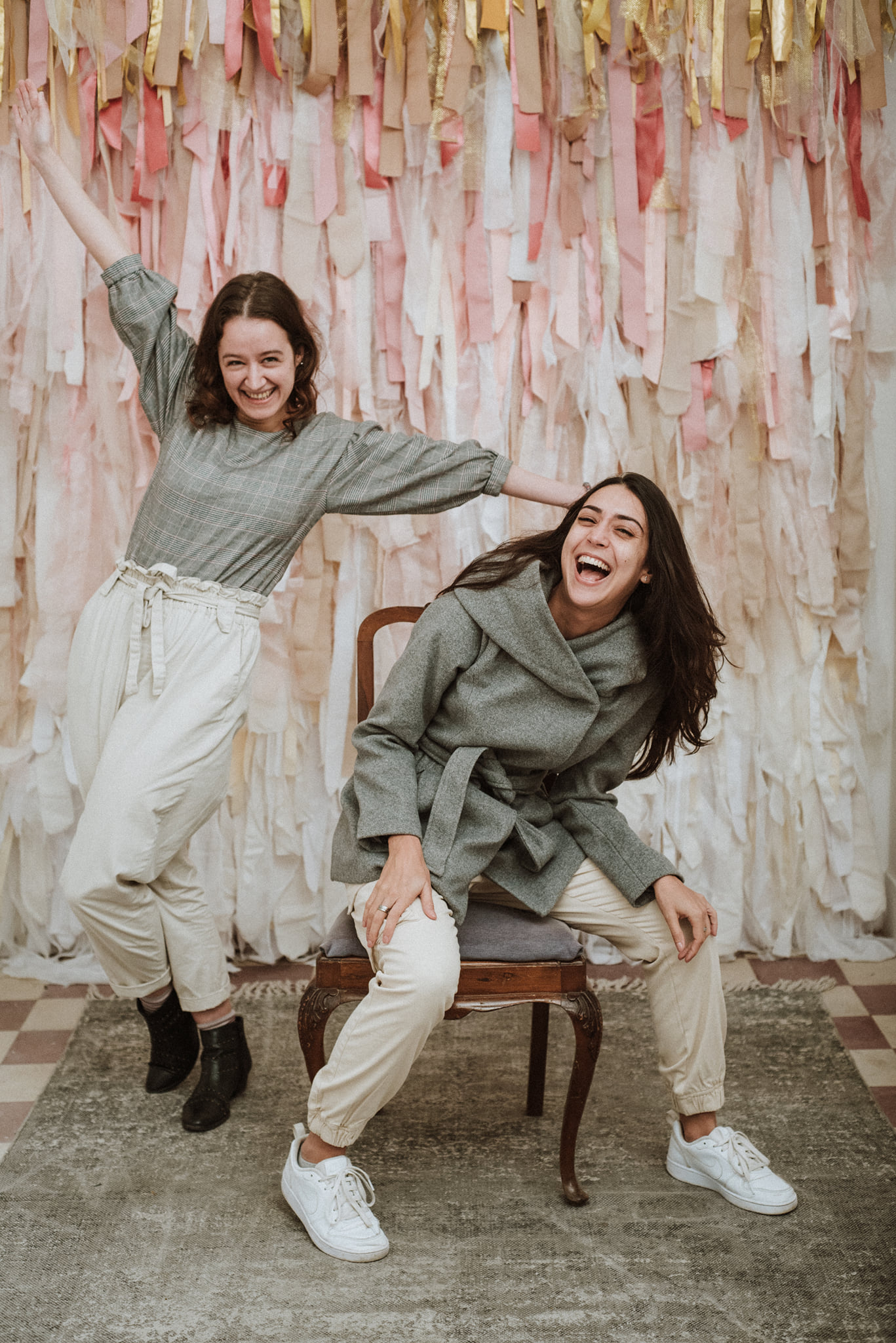
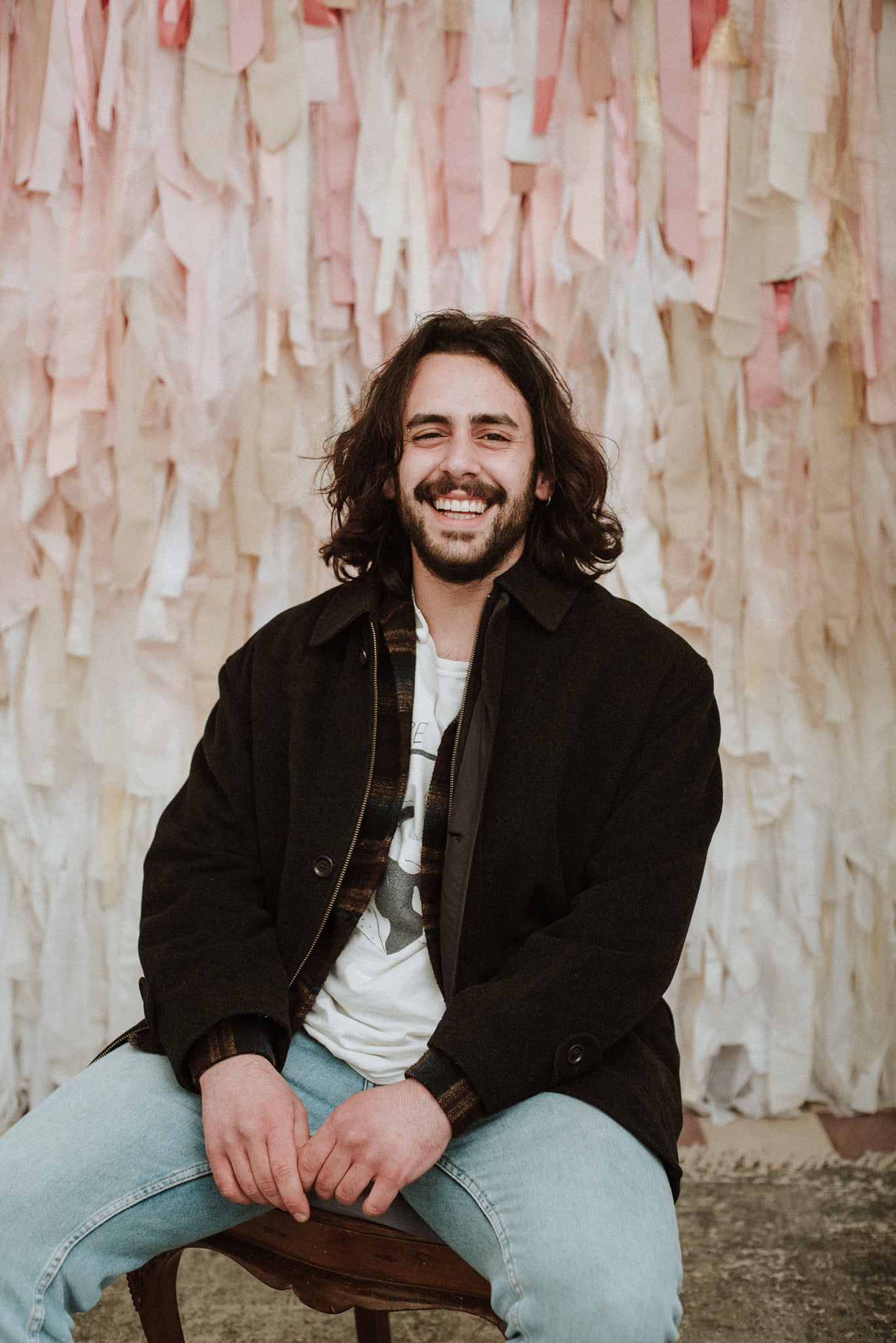
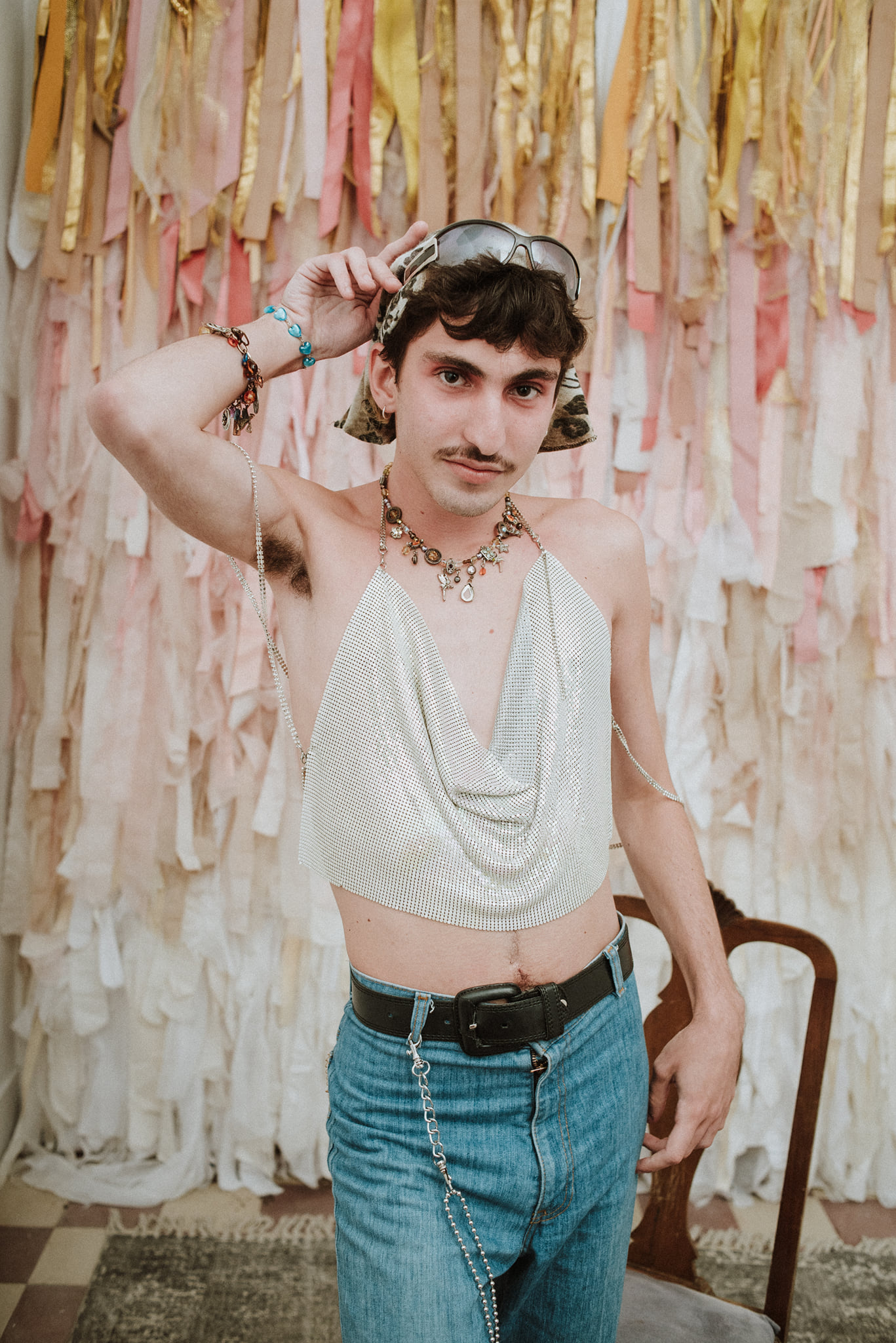

Fotografia: Nicole Sánchez

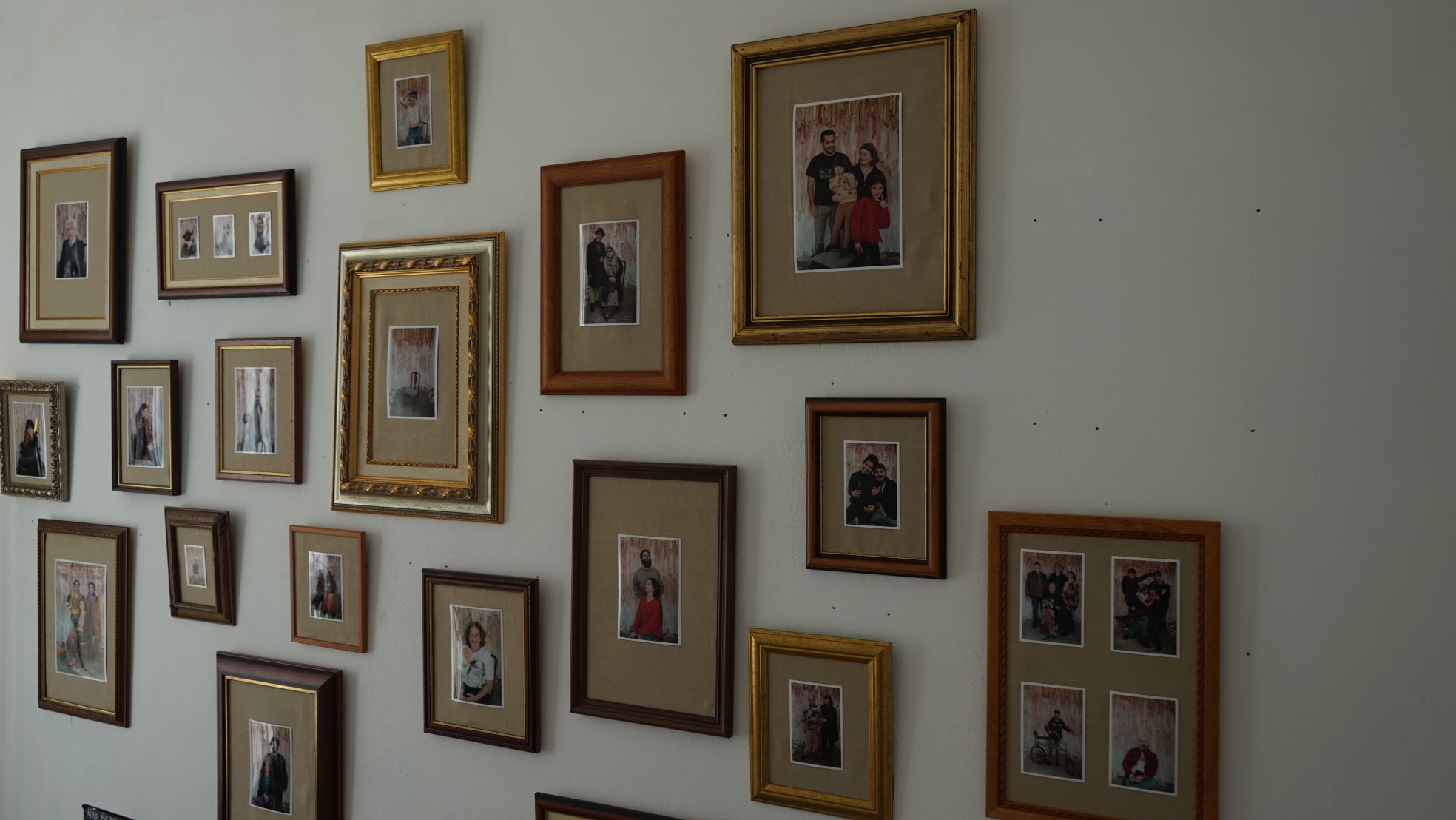
Fotografia: Inês Gil Silva (Sounds Like a Plan Photography)

mais uno +1
"Domingos de Criação"
Em plena ditadura militar no Brasil — e três anos antes do seu fim em Portugal — aconteceram em 1971, no Museu de Arte Moderna do Rio de Janeiro, os “Domingos de Criação”. Pela iniciativa de Frederico Morais, e pela ação e imaginação das centenas de pessoas que se foram reunindo, a cada domingo sucedeu-se um acto de criação, diálogo e celebração colectiva. Esta acção assumiu-se como um verdadeiro rasgo político numa altura em que a liberdade não era uma possibilidade.
Em Março de 2022, no Largo do Intendente, em Lisboa, relembrámos os “Domingos de Criação” no Largo Café Estúdio. Como parte da Cooperativa Cultural LARGO Residências, também aqui foram acontecendo muitos Domingos dedicados à cultura e à arte. Ao longo dos últimos 10 anos, o Café tem pulsado neste LARGO como centro de encontro e diálogo do Bairro Intendente.
Nestas últimas acções do Largo Café Estúdio no Largo do Intendente, convidámos a sua comunidade a criar connosco. Cada Domingo desse mês foi dedicado a uma forma de expressão — palavras, imagens, linhas, movimentos — em homenagem a todas as pessoas, artistas e trocas que por aqui passaram, e os diversos tipos de linguagem utilizados. Assim convidámos todos a despedirem-se do Café Estúdio, agradecer-lhe e dizerem que lhe pertencem, que vive em nós e continuará a perdurar no tempo.
Em simultâneo, no adjacente mais uno +1, acumulámos os afectos e expressões trocados ao longo destes Domingos num projecto de fanzine. A fanzine tornou-se um ateliê aberto, um projecto artístico, um processo participativo e uma exposição arquivo, onde as palavras ditas, as imagens capturadas, as linhas desenhadas e os movimentos realizados foram unidos e imortalizados em cada das suas páginas.
Em Março de 2022, no Largo do Intendente, em Lisboa, relembrámos os “Domingos de Criação” no Largo Café Estúdio. Como parte da Cooperativa Cultural LARGO Residências, também aqui foram acontecendo muitos Domingos dedicados à cultura e à arte. Ao longo dos últimos 10 anos, o Café tem pulsado neste LARGO como centro de encontro e diálogo do Bairro Intendente.
Nestas últimas acções do Largo Café Estúdio no Largo do Intendente, convidámos a sua comunidade a criar connosco. Cada Domingo desse mês foi dedicado a uma forma de expressão — palavras, imagens, linhas, movimentos — em homenagem a todas as pessoas, artistas e trocas que por aqui passaram, e os diversos tipos de linguagem utilizados. Assim convidámos todos a despedirem-se do Café Estúdio, agradecer-lhe e dizerem que lhe pertencem, que vive em nós e continuará a perdurar no tempo.
Em simultâneo, no adjacente mais uno +1, acumulámos os afectos e expressões trocados ao longo destes Domingos num projecto de fanzine. A fanzine tornou-se um ateliê aberto, um projecto artístico, um processo participativo e uma exposição arquivo, onde as palavras ditas, as imagens capturadas, as linhas desenhadas e os movimentos realizados foram unidos e imortalizados em cada das suas páginas.



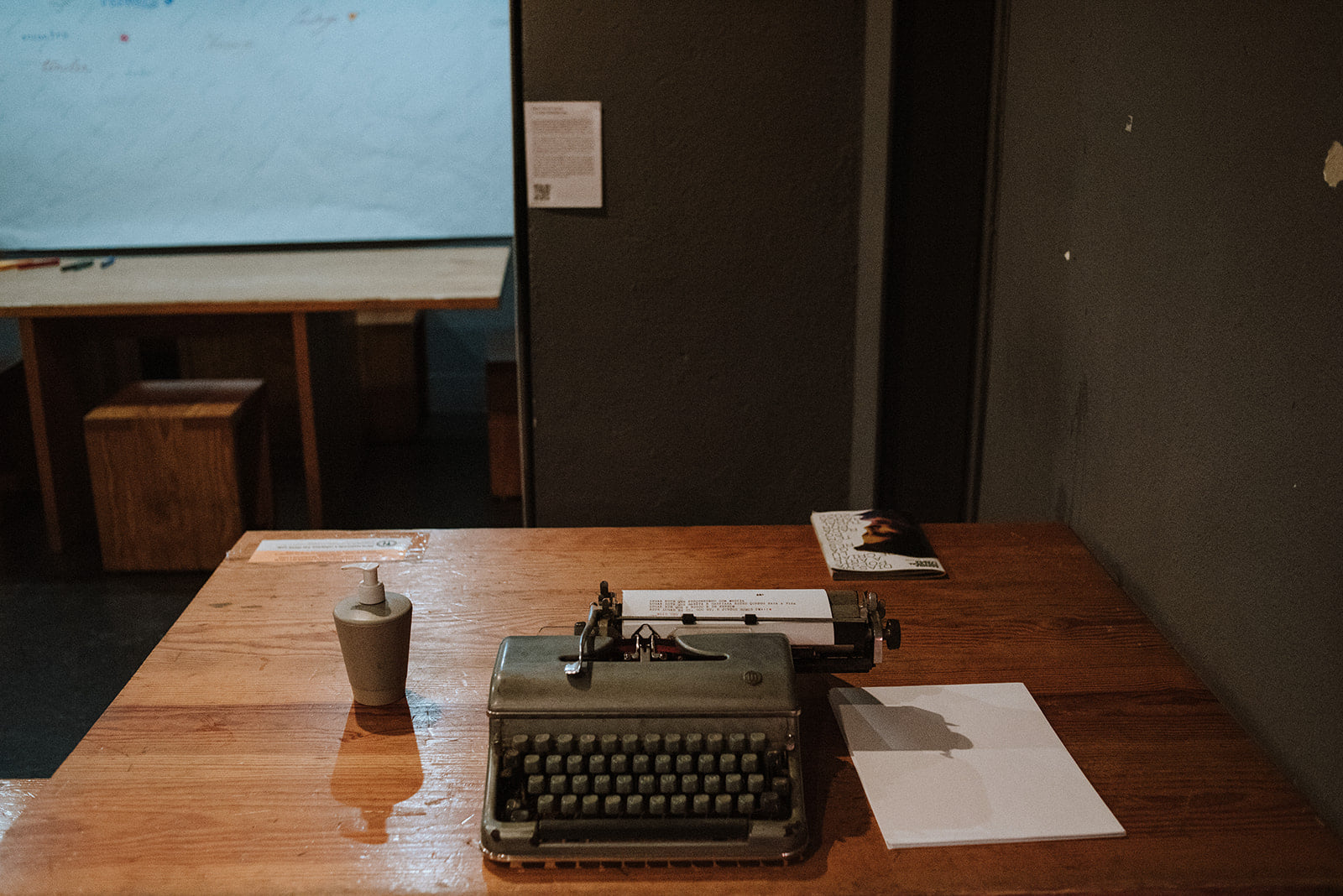
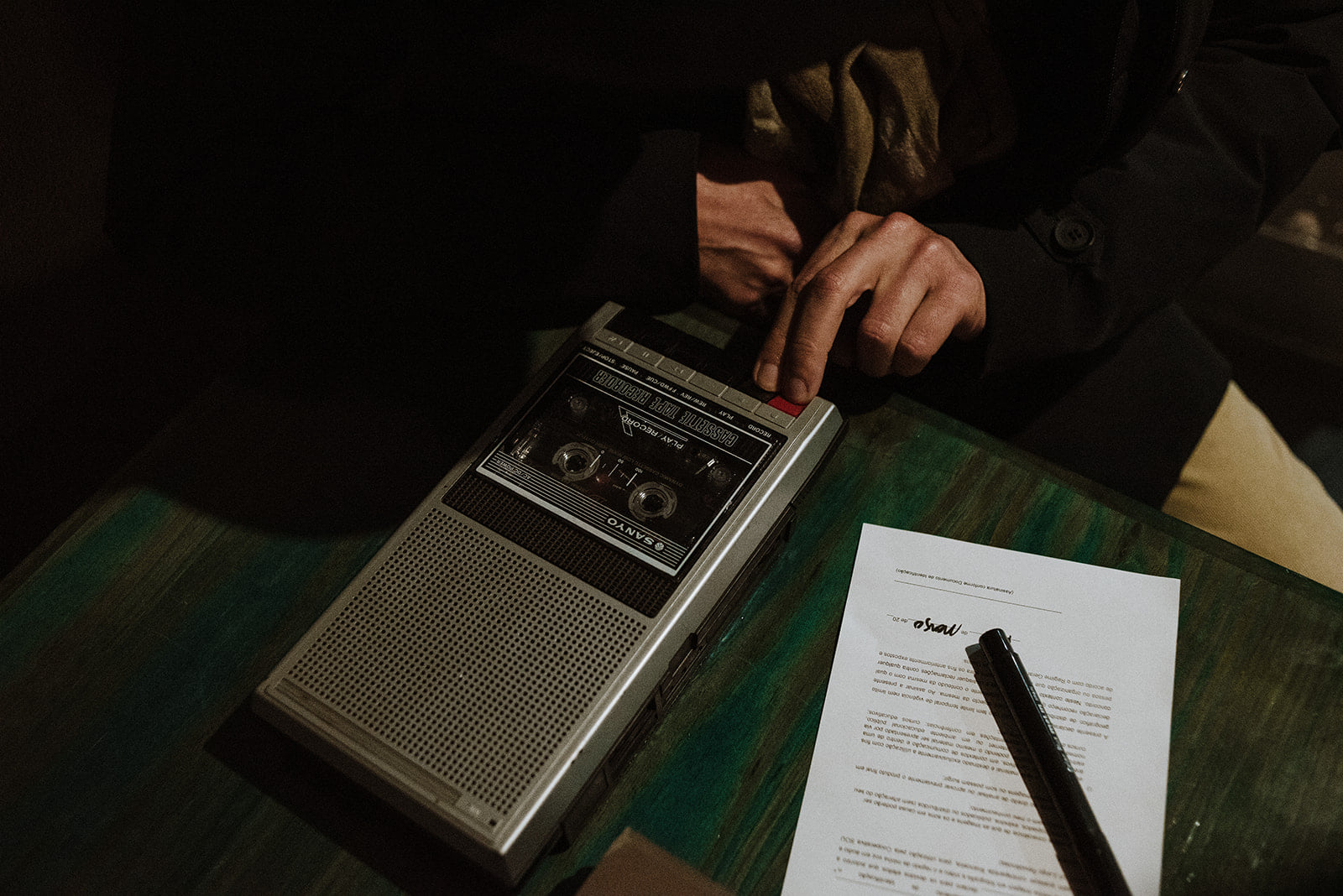
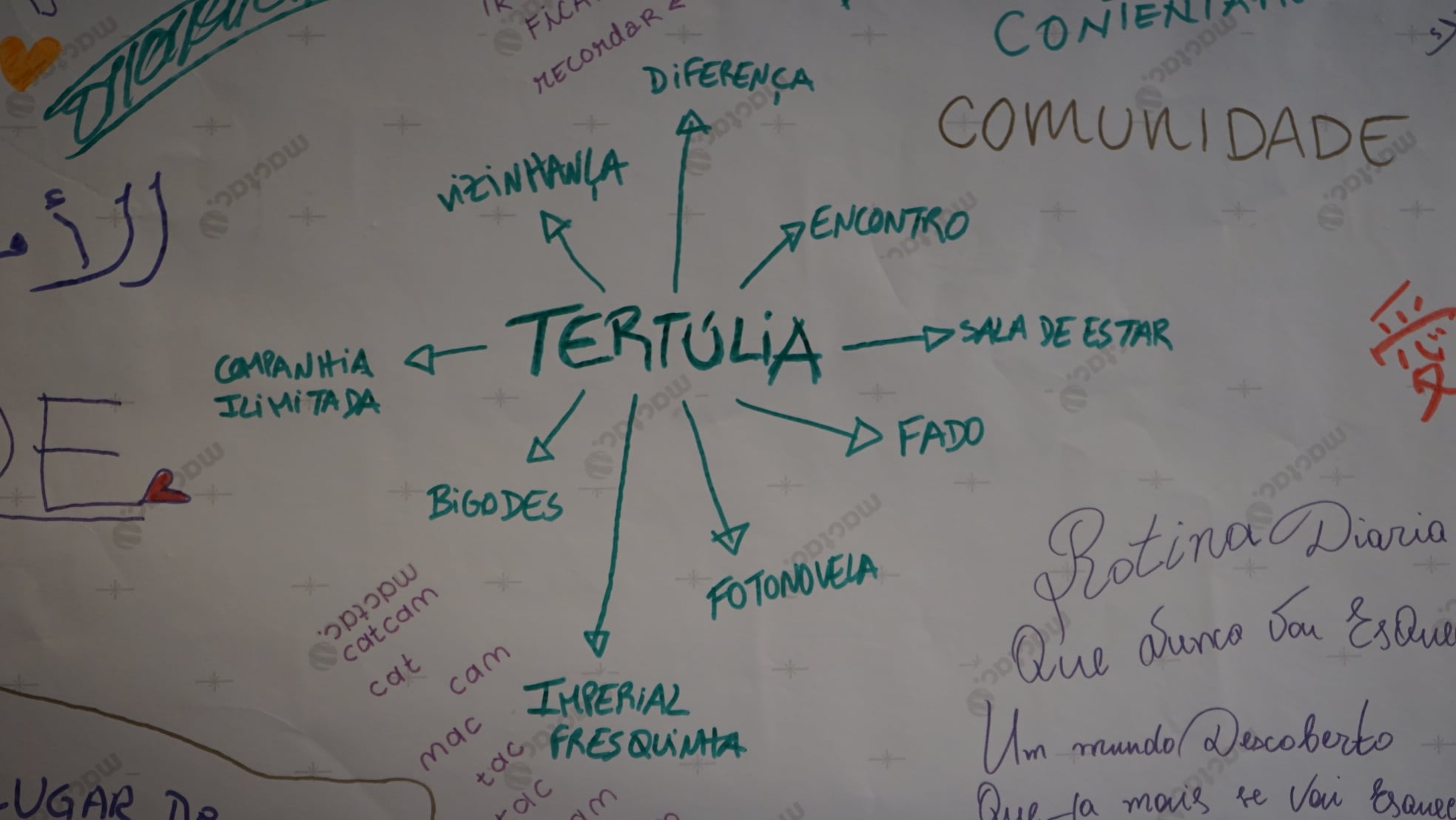

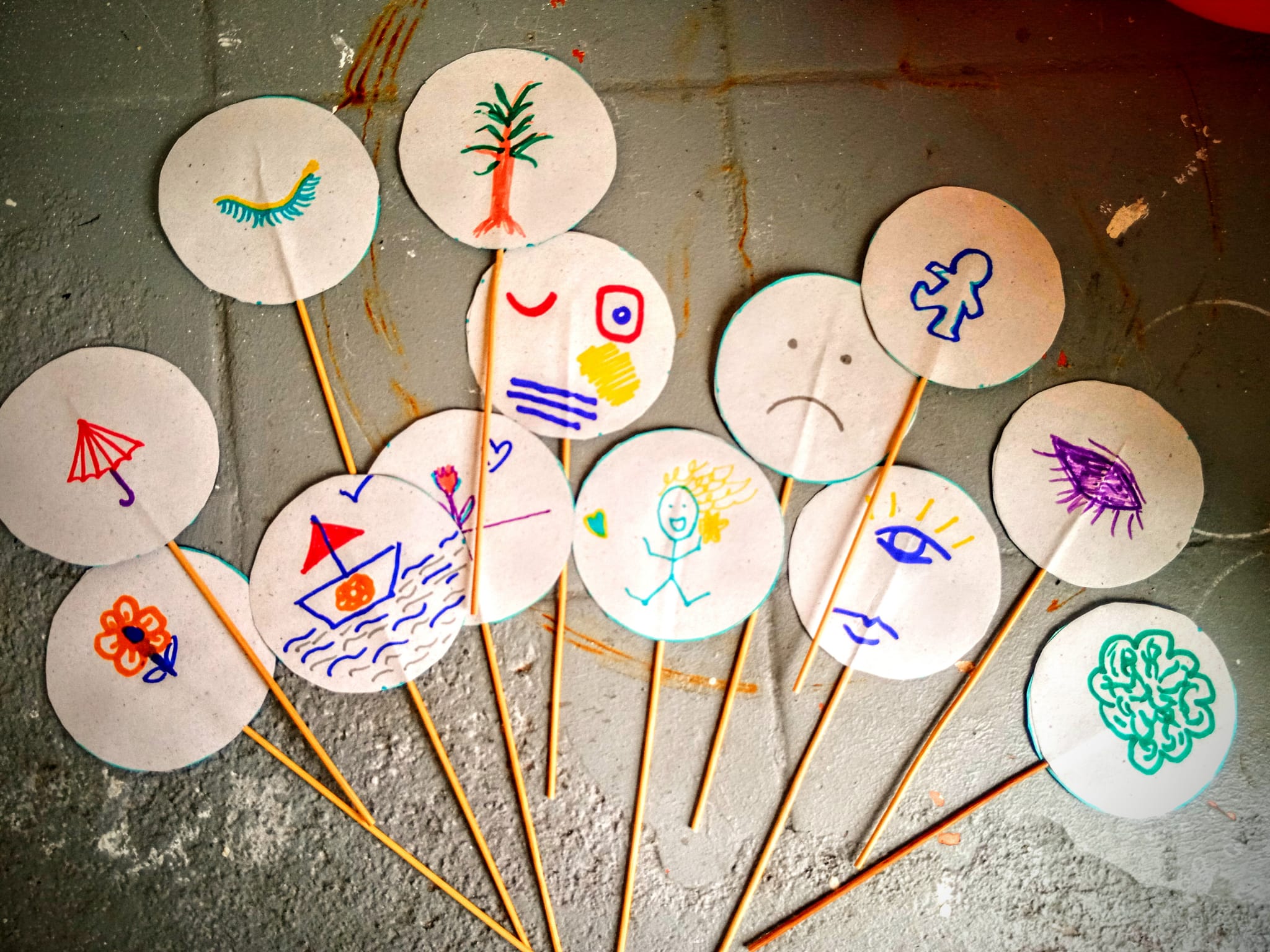


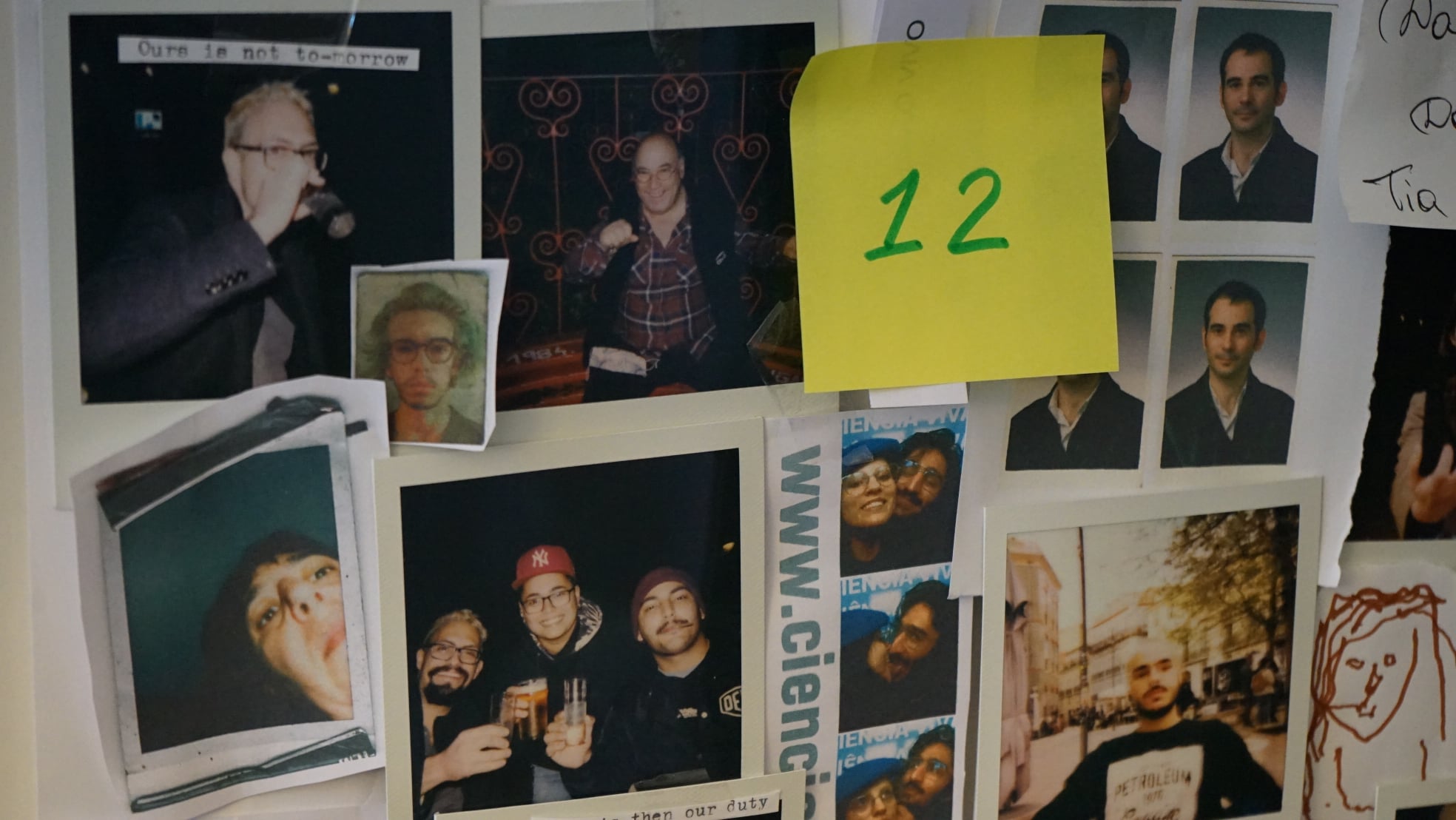
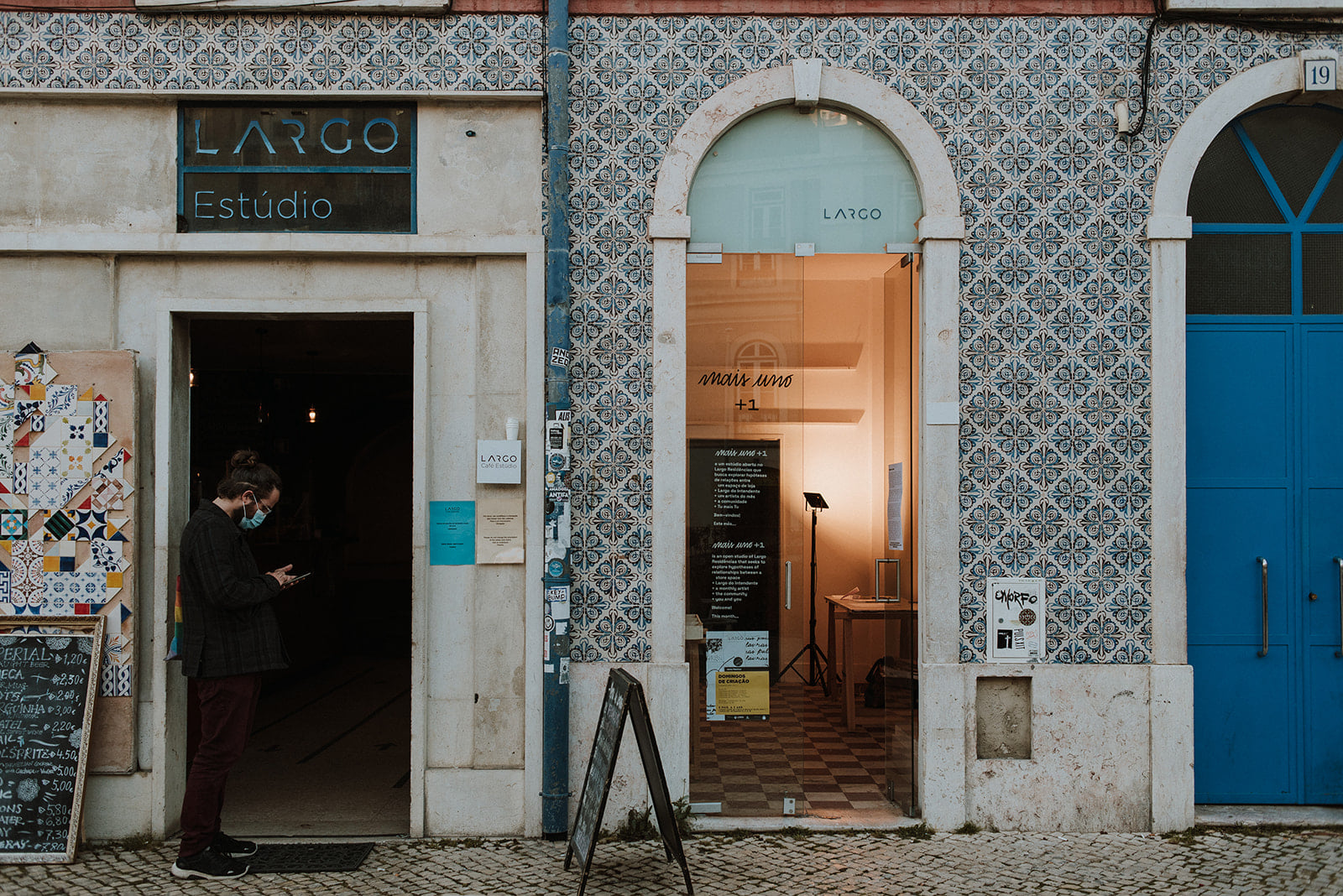
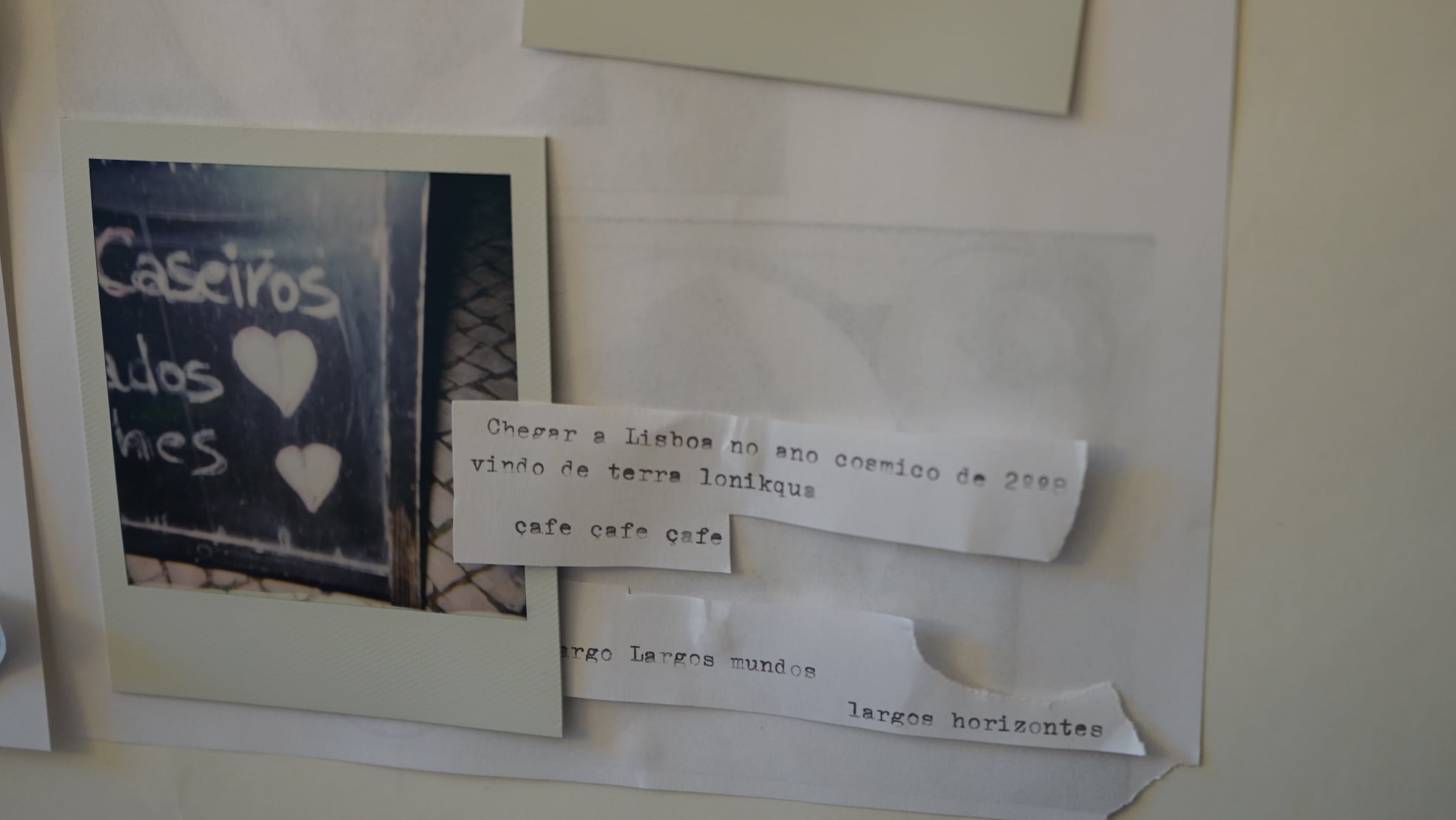
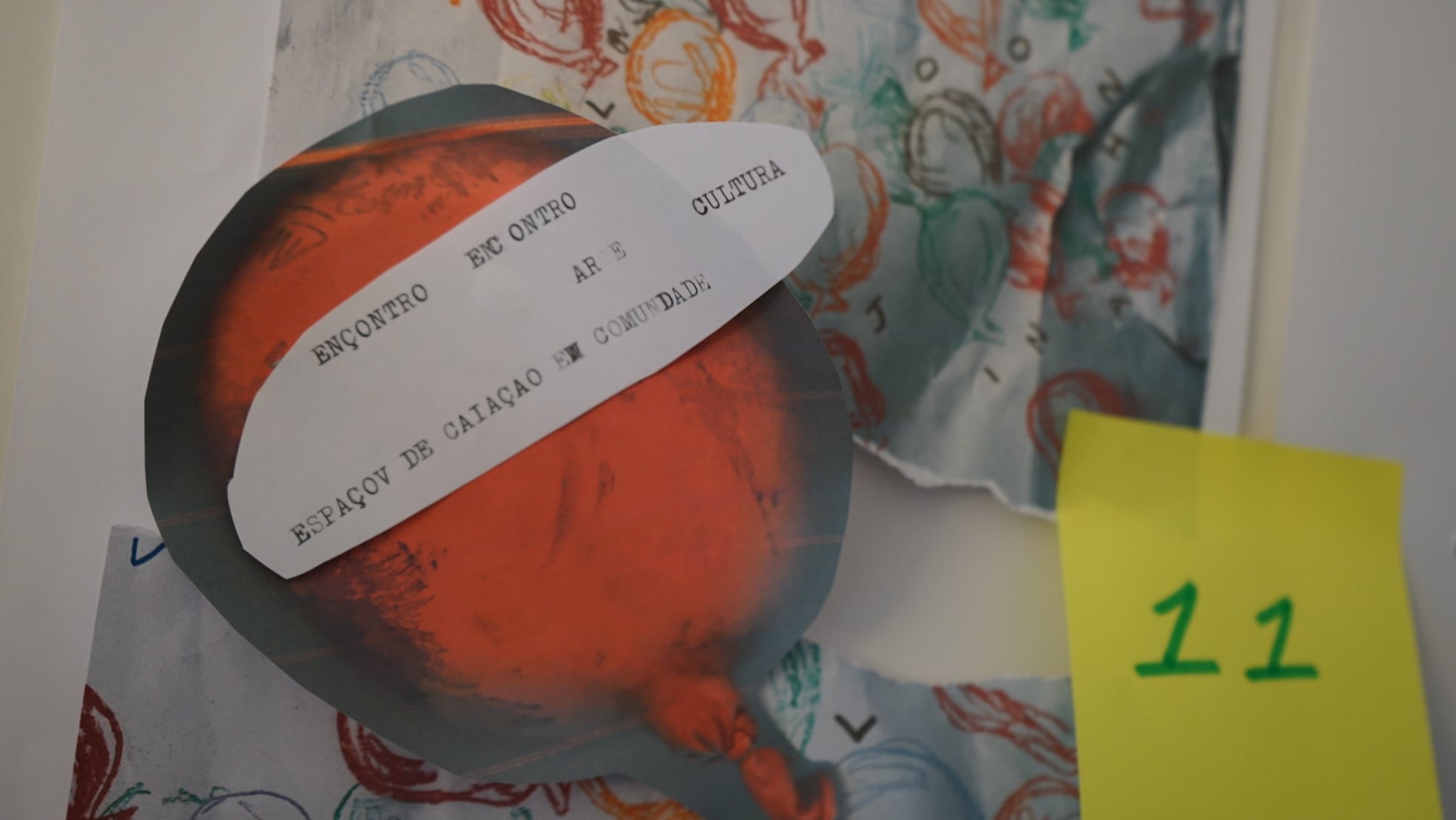
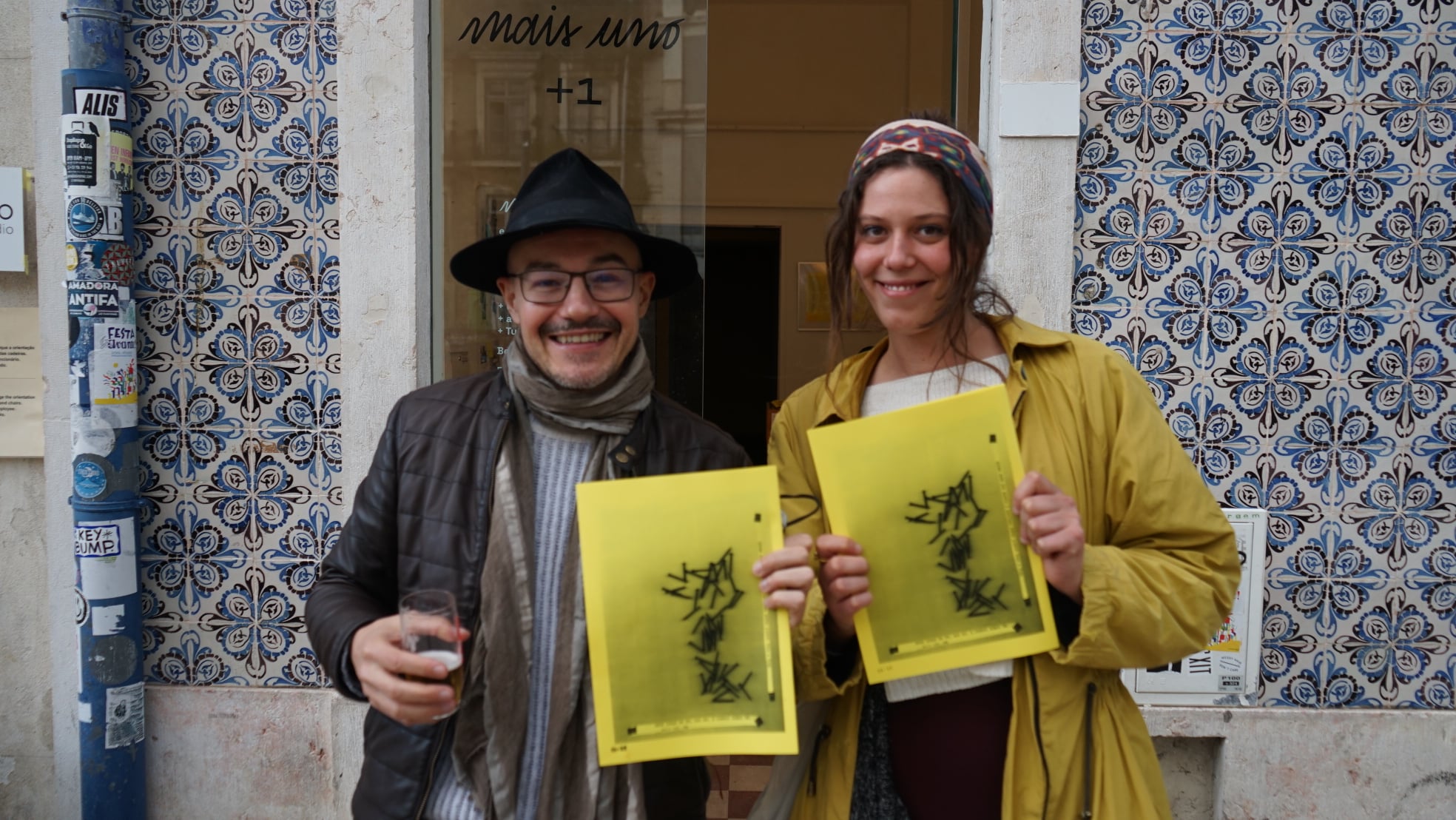
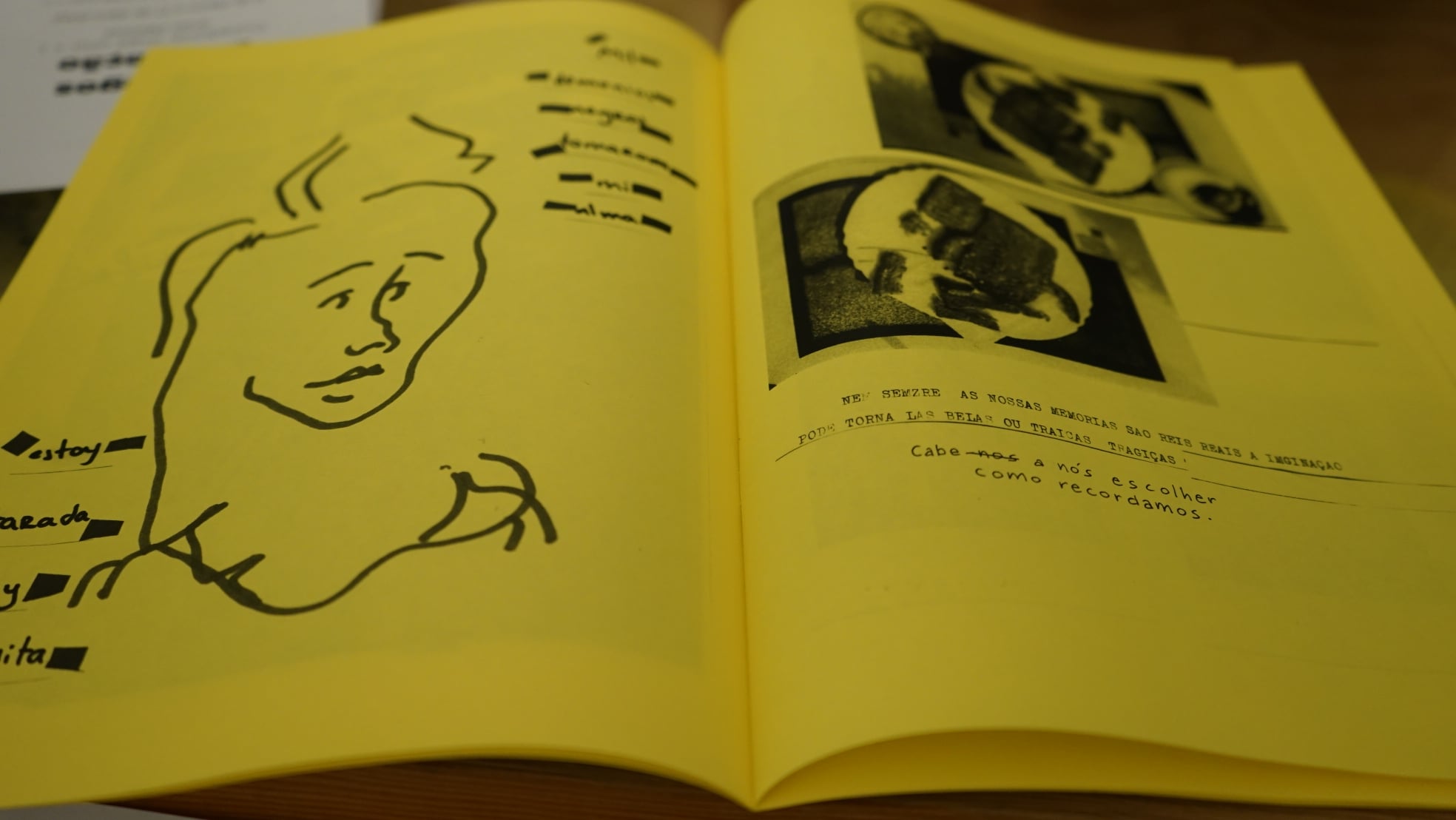
Fotografia: Nicole Sánchez, LARGO Residências, e Zé Luís C.
Picoas project space
Located inside Picoas Metro Station in Lisbon since march 2024, this spaces offers a unique possibility of showcasing artitst’s works while being publicly acessible to anyone. It revolves around artist’s studio creating a new dynamic of cultural offers inside central urban area.
This space is a partnership with METROCOM which provides spaces rent-free for cultural and artistic initiatives. While we keep the space this way, occupiers have a daily payment towards expenses such as light consumption and insurance. We offer curatorial assistance and a white canva for you to work on.
We are looking forward to get your proposal. Check the OPEN CALL here.
— project duration
2024 - ongoing
2024 - ongoing
— project location
Metro station PICOAS
Metro station PICOAS
— partners and sponsors
METROCOM
ASTRATEC
LIZ MELCHOIR
METROCOM
ASTRATEC
LIZ MELCHOIR
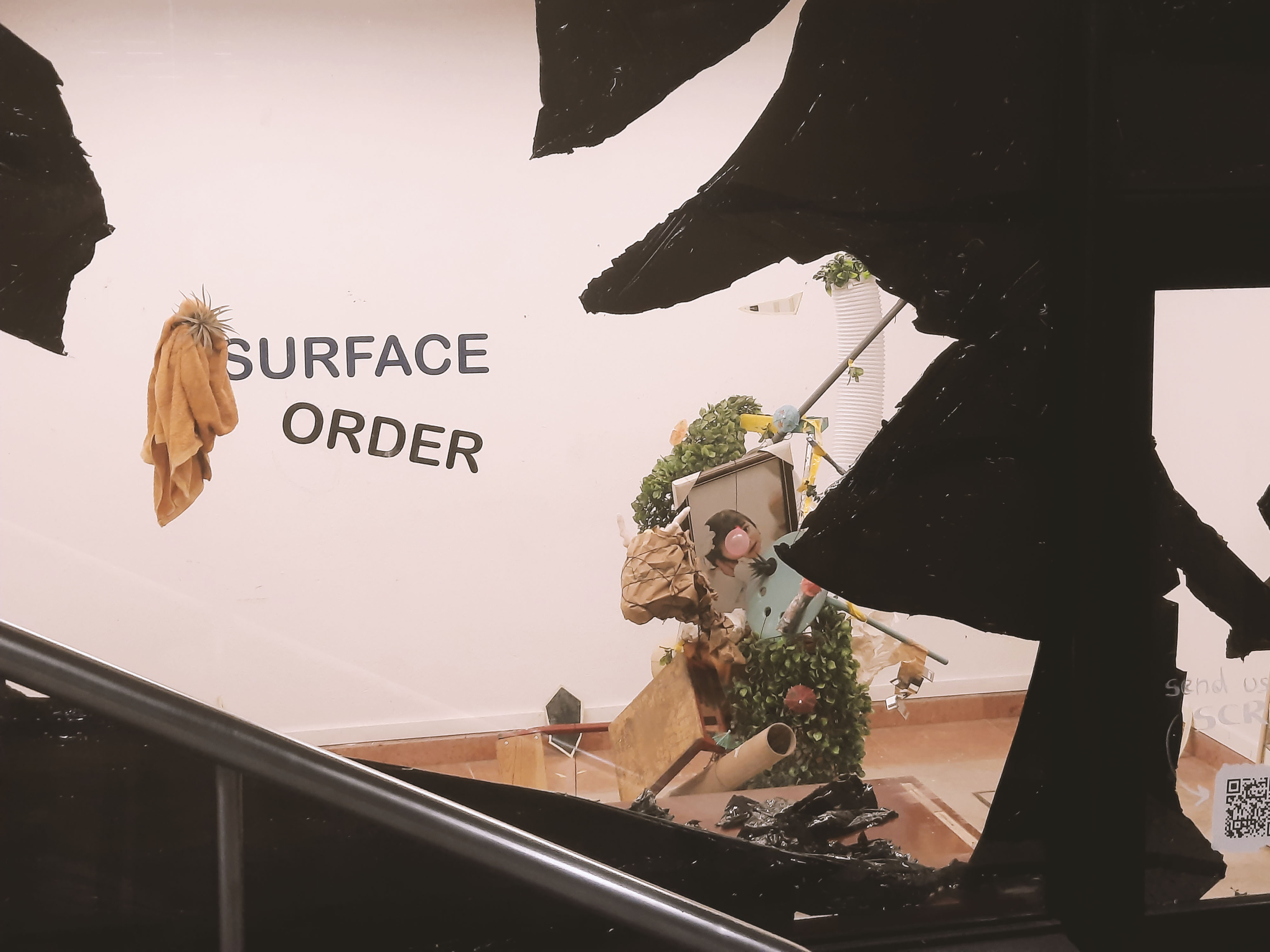
Vitrine
Over 6 weeks we developed different installations in our project space at Picoas Metro station. The shop was used as a space and site for creative exploration and ephemeral displays.
— project duration
30.07.2024 - 13.09.2024
30.07.2024 - 13.09.2024
— curators
Aino Garcia Vainio | Joyce Ward | Sophia Niederkofler
Aino Garcia Vainio | Joyce Ward | Sophia Niederkofler
This vitrine sees displayed a series of half-objects or broken entities that stand individually in the room but also, depending on the stand point of the observer, in relation with one another. On the right side of the vitrine hangs an anthropomorphic carton-marionette figure, partly covered by shiny black matter, which stands in contrast with the white metro ghost almost at the same hight on the left side. Moreover groups of objects stand in the room, with broken skateboards with a piece of street, oddly positioned broken vintage children’s toys, destroyed floppy discs and a light play hanging, made with a collage of the inside of the floppy discs (by Aino Garcia Vainio). On the back right corner there is the Afromerica globe by MoMO gallery that interacts with the background shaped by irregular stripes (by Joyce Ward and Sophia Nieder…). On the one hand a long black shiny stripe that makes a whole round in the room, and on the other hand with segments of colourful wrap paper, partly featuring Popota. On the “display surface” three objects lay equidistant from each other: a vase with brushed made by Clem, a head of a dog with a blonde wig and a muffin.
This vitrine aims at challenging the perception transmitted by a showcase in the context of both the “museum effect” as well as the consumption culture. The physical distance imposed by the materiality of the glas transmits the conception of being showed something valuable. The observer is challenged by the habit of perceiving something precious when actually confronted with half-objects, broken entities and chaos. Moreover the isolation of an object while reinforcing its value also pushes the observer to admire its aesthetic quality. In this context, when watching the #1 vitrine, while objects can be standing as individual groups, depending on the stand point, they will always also stand in relation to one or more groups of objects. This way not only it is impossible to admire singular objects or groups as isolated entities, but the crossing of them is out of the control of the observer. This vitrine is placed in a metro station: people watch it by walking. There is therefore an almost instant new constellation of the display by every step the observer takes, while going where they are headed. Both of these distorted perceptions culminate on the “display surface” where the observer is challenged by non-valuable, silly and senseless self-standing objects.
The framework for this project was both a challenge and a guiding principle: to create engaging installations with no additional costs, minimal waste, and maximum ingenuity. Each week, we developed a new idea collaboratively, coming together on the day to brainstorm and transform the “vitrine” with different installations. The vitrine, traditionally associated with the presentation of valuable or fragile objects in museums and retail environments, has long been a symbol of preservation and curation. In its essence, the vitrine frames objects within a transparent barrier, creating a space where viewers engage with what is displayed while remaining physically separate. This separation invites contemplation, imbuing everyday or found objects with an aura of significance. By isolating items in a controlled environment, the vitrine recontextualizes them, transforming the mundane into the extraordinary.
For the installations and displays we utilized materials from our storage, objects found on the streets, and items lent to us by friends, we prioritized sustainability and emphasized the reuse of discarded or forgotten materials. Our process was inherently collaborative, relying on the synergy of collective effort and hands-on experimentation. The result was a series of dynamic, ever-changing installations that evolved weekly. By stepping away from traditional exhibition models, we aimed to reimagine the role of a space in transition and the transformative potential of shared creativity.
Here you can have a look at the 5 different topics and see photos and read the artistic statements:
For the installations and displays we utilized materials from our storage, objects found on the streets, and items lent to us by friends, we prioritized sustainability and emphasized the reuse of discarded or forgotten materials. Our process was inherently collaborative, relying on the synergy of collective effort and hands-on experimentation. The result was a series of dynamic, ever-changing installations that evolved weekly. By stepping away from traditional exhibition models, we aimed to reimagine the role of a space in transition and the transformative potential of shared creativity.
Here you can have a look at the 5 different topics and see photos and read the artistic statements:
#1 DISPLAY SURFACE
This vitrine displays a series of half-objects or broken entities that stand individually in the room but also, depending on the standpoint of the observer, in relation with one another. On the right side of the vitrine hangs an anthropomorphic cartoon-marionette figure, partly covered by shiny black matter, which stands in contrast with the white metro ghost almost at the same height on the left side. Moreover groups of objects stand in the room, with broken skateboards with a piece of street, oddly positioned broken vintage children’s toys, destroyed floppy discs and a light play hanging, made with a collage of the inside of the floppy discs (by Aino Garcia Vainio). On the back right corner there is the Afromerica globe by MoMO gallery that interacts with the background shaped by irregular stripes (by Joyce Ward and Sophia Niederkofler). On the one hand a long black shiny stripe that makes a whole round in the room, and on the other hand with segments of colourful wrap paper, partly featuring Popota. On the “display surface” three objects lay equidistant from each other: a vase with brushes made by Clem, a head of a dog with a blonde wig and a muffin.
This vitrine aims at challenging the perception transmitted by a showcase in the context of both the “museum effect” as well as the consumption culture. The physical distance imposed by the materiality of the glass transmits the conception of being shown something valuable. The observer is challenged by the habit of perceiving something precious when actually confronted with half-objects, broken entities and chaos. Moreover the isolation of an object while reinforcing its value also pushes the observer to admire its aesthetic quality. In this context, when watching the #1 vitrine, while objects can be standing as individual groups, depending on the standpoint, they will always also stand in relation to one or more groups of objects. This way not only is it impossible to admire singular objects or groups as isolated entities, but the crossing of them is out of the control of the observer. This vitrine is placed in a metro station: people watch it by walking. There is therefore an almost instant new constellation of the display by every step the observer takes, while going where they are headed. Both of these distorted perceptions culminate on the “display surface” where the observer is challenged by non-valuable, silly and senseless self-standing objects.
Artists: Joyce Ward, Sophia Niederkofler, Aino Garcia Vainio, MoMO Gallery, Clem
Curators: Joyce Ward, Sophia Niederkofler, Aino Garcia Vainio
Text: Aino Garcia Vainio
This vitrine aims at challenging the perception transmitted by a showcase in the context of both the “museum effect” as well as the consumption culture. The physical distance imposed by the materiality of the glass transmits the conception of being shown something valuable. The observer is challenged by the habit of perceiving something precious when actually confronted with half-objects, broken entities and chaos. Moreover the isolation of an object while reinforcing its value also pushes the observer to admire its aesthetic quality. In this context, when watching the #1 vitrine, while objects can be standing as individual groups, depending on the standpoint, they will always also stand in relation to one or more groups of objects. This way not only is it impossible to admire singular objects or groups as isolated entities, but the crossing of them is out of the control of the observer. This vitrine is placed in a metro station: people watch it by walking. There is therefore an almost instant new constellation of the display by every step the observer takes, while going where they are headed. Both of these distorted perceptions culminate on the “display surface” where the observer is challenged by non-valuable, silly and senseless self-standing objects.
Artists: Joyce Ward, Sophia Niederkofler, Aino Garcia Vainio, MoMO Gallery, Clem
Curators: Joyce Ward, Sophia Niederkofler, Aino Garcia Vainio
Text: Aino Garcia Vainio
#2 SHADOW BORDERS
The #2 vitrine sees a spatial dialogue between shadows, floating entities and a long closed line on the floor, all of these entities being white. Perhaps the first element the viewer is confronted with, are the shadows of hands projected on a white background on the wall. Indeed, in order to see the rest of the composition, it is necessary to come closer to the vitrine, since the floating bubbles that look almost like clouds and the border-line are (almost) laying on the ground.
This vitrine aims at confronting the notions of reality, realism and borders. The shadows of the hands on the wall are projections of objects defined by a distorted shape. They are not the object itself while at the same time the glass surfaces dividing the space into an inside and an outside denies the viewer the access to know the reality behind the shadows. They are therefore indexes of a truth that could be, that is represented, but they are not the truth. As the vitrine starts with the representation of a possible reality made by indexes it brings the viewer to a state of perception of a possible reality that questions the reality itself, triggering their instinct of understanding the sight in a realistic way, therefore connecting the index to a known reality. This is highlighted by the central and sharpest shape: an index pointing down, or better an index of an index pointing down. The border-line on the ground also bears in this concept of an index to a constructed space defining one more time an inside and an outside. The index on the wall points down to this geometrical line that resembles something like the lines on sports camps, suggesting that this border-line is also just an index to an idea that has nevertheless found a materiality on the ground, in contrast to the shadows. This line is made of flour which, apart from being a very cheap source of nutrition, is also vulnerable to change by the wind, someone stepping on it or just a brush. Hide behind a vitrine however, it is protected by all of these changes. Lastly these concepts of reality, realism, border and untouchability of them is emphasised by the clouds or, as they originally were thought, pieces of the earth floating around, suggesting that the earth is immune to the borders, who claim to define it.
Artists: Joyce Ward, Sophia Niederkofler, Aino Garcia Vainio
Curators: Joyce Ward, Sophia Niederkofler, Aino Garcia Vainio
Text: Aino Garcia Vainio
Artists: Joyce Ward, Sophia Niederkofler, Aino Garcia Vainio
Curators: Joyce Ward, Sophia Niederkofler, Aino Garcia Vainio
Text: Aino Garcia Vainio
#3 SCREAM ROOM
The "Scream Room" is a conceptual installation which locks screams as human emotions in a glass vitrine inside Picoas Metrostation. In the first phase of the project we invite passerbys, and others to think about a scream as an explosion of emotions in a raw form, which is often suppressed in society. We are looking for screams of fear, happiness, anger, stress-ventil, …
When was the last time you screamed at the top of your lungs?
Upon first approach, the installation appears as an unassuming site of construction, the room obscured by an black wrapping. From the metro stop, it mimics the ongoing urban metamorphoses surrounding it. But as soon as you ascend the stairs in front of its window something different happens. Here, the illusion ruptures: a shattered mirror reveals fragmented reflections of the passerby. One hole in the mirror is precisely aligned with where your face might appear.
You look inside and a large typographic declaration—Scream Room—anchors the opposite wall, its letters looming over shards of mirror scattered across the floor. The space is both disorienting and clarifying. The black wrap itself defies expectations; with light, it transforms from opaque to translucent, dissolving the boundary between the viewer and the hidden world within.
The interplay of mirror and black surfaces reflects not only the external environment but also the viewer's own form, transposing the flatness of reflection into a multidimensional invitation. The hole in the mirror, perfectly calibrated to frame your face, situates the participant at the center of a transformative moment. Beyond it lies a visual and acoustic escape: a space for the unfiltered release of a scream.
As a continuation of this concept and to the until now silent scream a shape we invited passersby and friends to send us voice messages with screams of different everyday emotions.
All the collected SCREAM-recordings will be part of an evolving auditory collage of the #5 vitrine. Each scream, representing a unique expression of the human condition, contributes to a collective soundscape.
In the second phase installation challenges societal norms around emotional restraint, offering a cathartic release and a powerful reminder of our shared humanity. It transforms personal pain into communal art, allowing visitors to experience the transformative power of expressing and sharing their most intense emotions.
Artists: Joyce Ward, Sophia Niederkofler, Aino Garcia Vainio, MoMO Gallery, Clem
Curators: Joyce Ward, Sophia Niederkofler, Aino Garcia Vainio
Text: Sophia Niederkofler
Upon first approach, the installation appears as an unassuming site of construction, the room obscured by an black wrapping. From the metro stop, it mimics the ongoing urban metamorphoses surrounding it. But as soon as you ascend the stairs in front of its window something different happens. Here, the illusion ruptures: a shattered mirror reveals fragmented reflections of the passerby. One hole in the mirror is precisely aligned with where your face might appear.
You look inside and a large typographic declaration—Scream Room—anchors the opposite wall, its letters looming over shards of mirror scattered across the floor. The space is both disorienting and clarifying. The black wrap itself defies expectations; with light, it transforms from opaque to translucent, dissolving the boundary between the viewer and the hidden world within.
The interplay of mirror and black surfaces reflects not only the external environment but also the viewer's own form, transposing the flatness of reflection into a multidimensional invitation. The hole in the mirror, perfectly calibrated to frame your face, situates the participant at the center of a transformative moment. Beyond it lies a visual and acoustic escape: a space for the unfiltered release of a scream.
As a continuation of this concept and to the until now silent scream a shape we invited passersby and friends to send us voice messages with screams of different everyday emotions.
All the collected SCREAM-recordings will be part of an evolving auditory collage of the #5 vitrine. Each scream, representing a unique expression of the human condition, contributes to a collective soundscape.
In the second phase installation challenges societal norms around emotional restraint, offering a cathartic release and a powerful reminder of our shared humanity. It transforms personal pain into communal art, allowing visitors to experience the transformative power of expressing and sharing their most intense emotions.
Artists: Joyce Ward, Sophia Niederkofler, Aino Garcia Vainio, MoMO Gallery, Clem
Curators: Joyce Ward, Sophia Niederkofler, Aino Garcia Vainio
Text: Sophia Niederkofler
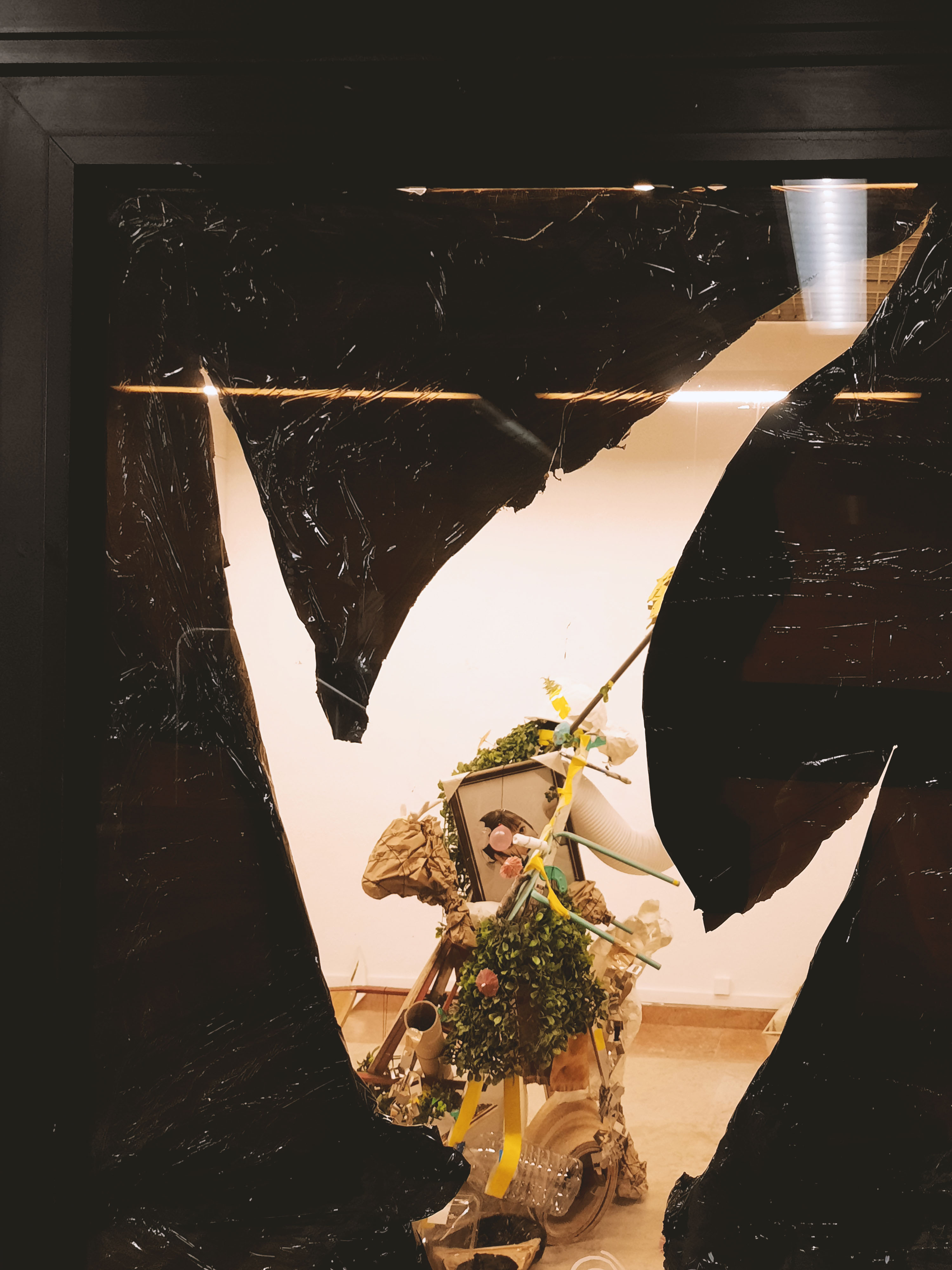
#4 SURFACE ORDER
In this vitrine there are three quite isolated elements standing on three layers. The first layer is a black wrap on the glass that has been ripped in order to give the impression of a broken mirror that opens the door to a distorted reality. On the second layer there is a self standing installation constructed by random real or reality-resembling objects that develop vertically, from the roots to the top. On the wall in the background there is a writing “SURFACE ORDER”, an art statement by MoMO Gallery.
Surface Order, two words that together do not have a given meaning, standing alone and coupled play with the perception of the viewer. Influenced by the personal experience as well as from the installation standing in front of it, the viewer will perceive the association of these words in a personal unique way. The order is also challenged by the installation in the middle of the room. The vertical assemblage of random half-real objects chaotically put together to achieve a form looks like it is growing by itself, almost as if it was immune to artificial imagination. Lastly, the surface of the vitrine is reigned by a strong black outline, most of it being covered by a leather-resembling material. The setting looks like a broken mirror, which apart from being eye-catchy, is both threatening and gives hope at the same time, being a portal to an immaculate word or representing a surface order.
Artists: Sophia Niederkofler, Aino Garcia Vainio
Curators: Sophia Niederkofler, Aino Garcia Vainio
Text: Aino Garcia Vainio
Artists: Sophia Niederkofler, Aino Garcia Vainio
Curators: Sophia Niederkofler, Aino Garcia Vainio
Text: Aino Garcia Vainio
#5 SCREAM-SCAPE
Building upon the concept of the #3 Scream Room installation, this continuation transforms the vitrine into an archive and embodiment of human emotions. In the aftermath of the initial call for screams 22 screams were collected. Each of them is an auditory imprint of a distinct emotional state in different situations. From stress to joy, fear to amusement, these screams compose a raw, vocal landscape of emotions, reflecting the breadth of human experience through the unfiltered act of release.
At the heart of the installation lies the Box of Origin, a container both literal and symbolic. It houses the collection of screams and serves as a reminder of their shared humanity: an assemblage of singular expressions, yet universally resonant. This central object offers visitors a contemplative point of focus amidst the fragmented chaos of strings coming out of the inside of the box. Each black string is attached to one starting point of a contour line forming a landscape on the glass.These threads create a visual dialogue between human emotion and the natural world, forging a poetic connection between the inner landscapes of feeling and the physical terrain of the earth. It is a catalyst for an exploration of one's own emotional topography.
Artists: Joyce Ward, Sophia Niederkofler, Aino Garcia Vainio
Curators: Joyce Ward, Sophia Niederkofler, Aino Garcia Vainio
Text: Sophia Niederkofler

Ministry of Strange Affairs x MAISUNO +1 | Berry the sun
Ministry of Strange Affairs x MAISUNO +1 | Berry the sun
— project duration
01.06.2024 - 07.06.2024
01.06.2024 - 07.06.2024
curators
Aurelie D’incau | Eugenia Bianchessi | Ioanna Kaloudioti | Kalle Hübel | Léa Heudes | Sophia Niederkofler
Aurelie D’incau | Eugenia Bianchessi | Ioanna Kaloudioti | Kalle Hübel | Léa Heudes | Sophia Niederkofler
Travel agencies sell experiences in beautiful places. They sell sun and sand, beautiful views, local food and happiness. They make it look like the experience is effortless, affordable and unforgettable. At Berry the sun, we also sell sand and sunshine but everything is slightly off or rather inside out, the travels are extremely cheap, the guided tours not quite factful and the unforgettable memories we try to create are in very very very hidden places. In fact, the travel experience we are selling are the most hidden, not even the sun, our eternal guide to happiness, can reach it: in the metro.
The metro is a public space, a neutral place, a non space and a place of transition. It is one of the rare spaces where we briefly share our living space with all kinds of social strata, backgrounds and interests. The reason for this is that in its very essence, the metro is never our destination, it is the most mundane activity one can do and yet it has a democratic performative aesthetic of its own. It is the symbol of movement and interconnectedness.
At Berry the sun, we therefore use humour to twist the meaning of the travel destination and propose to the audience, as an antithesis of sightseeing, to experience the metro and the travel therein as the most unique of all travel experiences.
The metro is a public space, a neutral place, a non space and a place of transition. It is one of the rare spaces where we briefly share our living space with all kinds of social strata, backgrounds and interests. The reason for this is that in its very essence, the metro is never our destination, it is the most mundane activity one can do and yet it has a democratic performative aesthetic of its own. It is the symbol of movement and interconnectedness.
At Berry the sun, we therefore use humour to twist the meaning of the travel destination and propose to the audience, as an antithesis of sightseeing, to experience the metro and the travel therein as the most unique of all travel experiences.




















Photos by: Nicole Sánchez
During the week, the Agency offered different services like guided tours,experiences and selling of very peculiar gadgets.
The guided tours offered were:
Sunsetive tour:
In this guided tour we take Berry the sun to places it has never seen. Join to experience the metro in a new light and come to (all of) your senses as we go underground!
The guided tours offered were:
Sunsetive tour:
In this guided tour we take Berry the sun to places it has never seen. Join to experience the metro in a new light and come to (all of) your senses as we go underground!





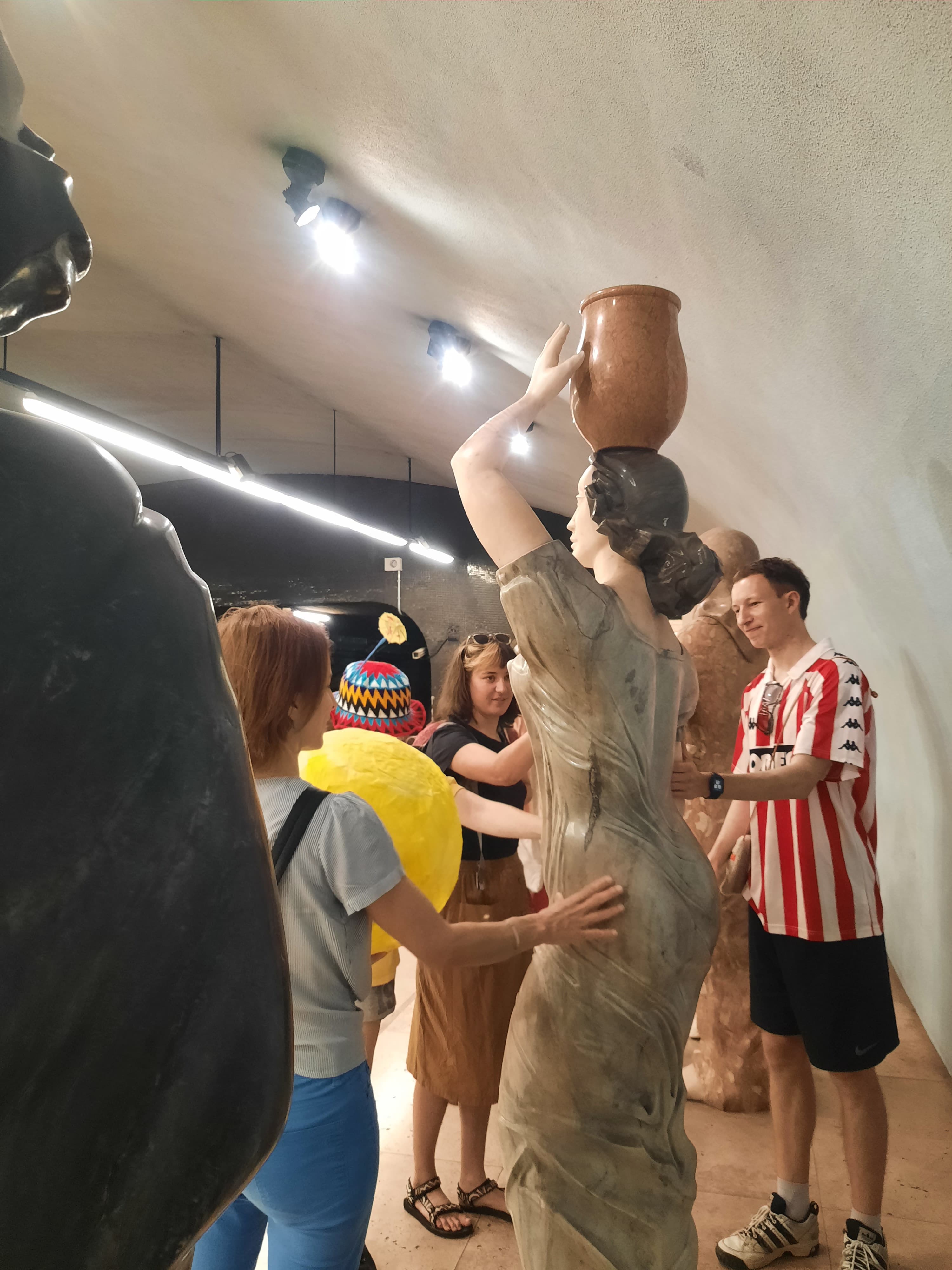



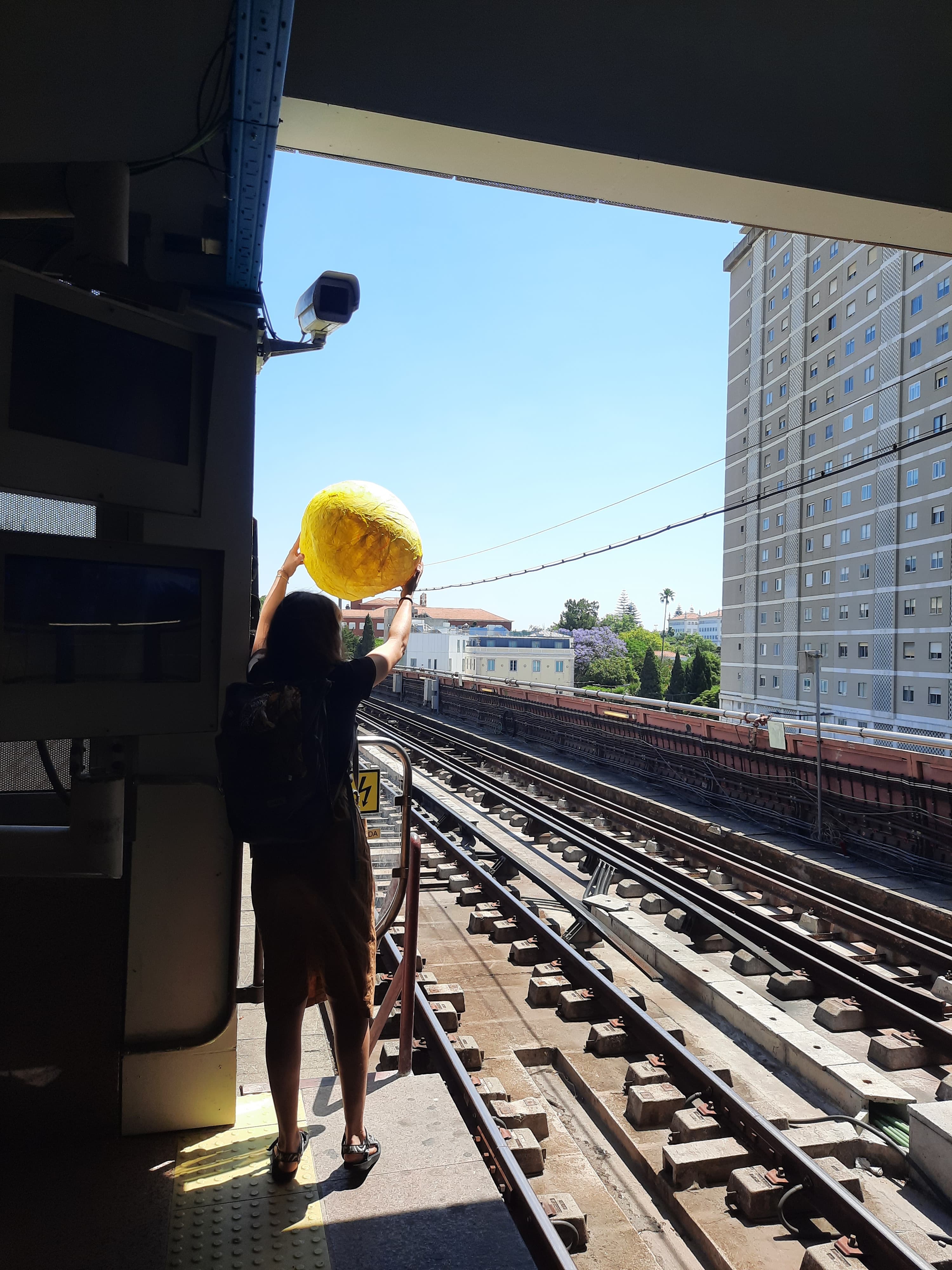


Tracing a way:
Straight metro lines begin to bend as we draw our path through the tunnels under Lisbon. In this guided tour we’ll map the metro with experimental sketching techniques.
Costumers could also join various experiences, such as:
Follow the sun:
We are all attracted to the sun - so chase it! A simple game in which you follow all (metaphorical) suns throughout the metro.
Come and get your instructions at our bureau in Picoas.
Commute for a day:
You want a truly authentic Lisbon experience?
We enable you to accompany someone on their daily way to work.
Find out what it means to live in the city and search for excitement in the mundane.
The project is meant to be developed in the future with different events and surprises.
We can't wait to find out where Berry will take us!
Straight metro lines begin to bend as we draw our path through the tunnels under Lisbon. In this guided tour we’ll map the metro with experimental sketching techniques.
Costumers could also join various experiences, such as:
Follow the sun:
We are all attracted to the sun - so chase it! A simple game in which you follow all (metaphorical) suns throughout the metro.
Come and get your instructions at our bureau in Picoas.
Commute for a day:
You want a truly authentic Lisbon experience?
We enable you to accompany someone on their daily way to work.
Find out what it means to live in the city and search for excitement in the mundane.
The project is meant to be developed in the future with different events and surprises.
We can't wait to find out where Berry will take us!
FOLLOW @BERRYTHESUN__ON INSTAGRAM TO STAY UPDATED!

Play(The Under)ground
MaisUno +1 presents the Play(The Under)ground project, which provides a creative space for anyone who wants to show their own art in a space that has direct contact with the city's public.
project duration
march - december 2024
march - december 2024
project site
Metro Picoas
Metro Picoas
partner entities
METROCOM | ASTRATEC | LIZ MELCHOR (Curious Monkey)
METROCOM | ASTRATEC | LIZ MELCHOR (Curious Monkey)
curators 2024
Aino Garcia Vainio | Eugenia Bianchessi | Ioanna Kaloudioti | Joyce Ward | Kalle Hübel | Karina Zelonka | Léa Heudes | Sophia Niederkofler
artists
Mais Uno +1 | Malibu Ninjas | Argelia Bravo | Max Provenzano | Sandra Viva | Juan Carlos Urrutia | Eliseo Solís Mor | Muu Blanco Carlo | Salazar-Lermont | Ignacio Pérez Pére | Macjob Parabavis | Dixon Calvetti | Flix | Ana Andrè | Greg Hannan | Aurelie D’incau
The goal of the project space is bringing art in the underground, in order to explore the unique dynamics and challenges of working in unconventional spaces like metro stations.
This is an ongoing open call and projects will be selected according to space availability and relevance of the proposal. You can apply individually or collectively.
For more details and to submit your application
CLICK HERE
— Events
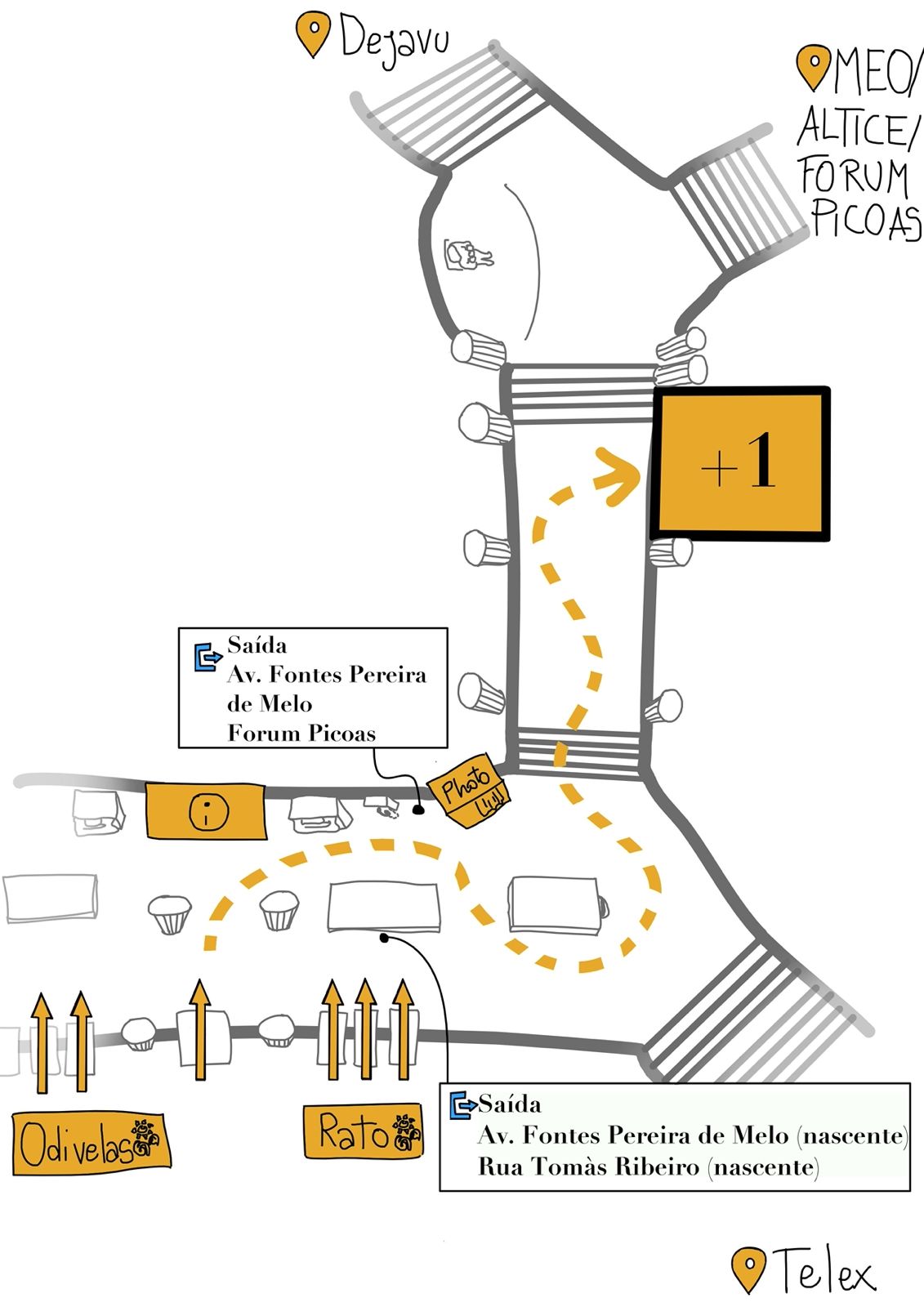
Play(The Under)ground
project-space is an open studio which seeks to explore incremental relationships between a shop at Picoas Metro station
+ the territory
+ artist(s) in process
+ the community
+ you
Welcome!
︎ the mais uno project space over the past months
project duration
2025 - ongoing
2025 - ongoing
project site
Metro Picoas
Metro Picoas
partner entities
METROCOM | ASTRATEC | LIZ MELCHOR (Curious Monkey)
METROCOM | ASTRATEC | LIZ MELCHOR (Curious Monkey)
curators 2025
Anika Borko | Frederike Antonia Ohnewald | Lyuba Hrisimova| Natalia Bošković | Sophia Niederkofler |
Anika Borko | Frederike Antonia Ohnewald | Lyuba Hrisimova| Natalia Bošković | Sophia Niederkofler |
artists
mais uno +1 | Runa Marie Dubrow | Anna Rebecca Unterholzne | Lobby Teatro | Alfonso Gorostiag | Ludmila Nawrotzki | Kiki and Aurélie d’Incau | Trying to get under the surface - reading session | Micaela Guedes and Carina Prazeres | Hanna Sander | Sibel Koschinski | Loop tube | Constança Villaverde Rosad | João Malato Correia | Maria Shargátova |
Pedro Feio and Francisco Damascêno dos Santos | XIX collective | Bernardo Soare | Marana Barros | Courtney Askey | Mihaela Rašica
mais uno +1 | Runa Marie Dubrow | Anna Rebecca Unterholzne | Lobby Teatro | Alfonso Gorostiag | Ludmila Nawrotzki | Kiki and Aurélie d’Incau | Trying to get under the surface - reading session | Micaela Guedes and Carina Prazeres | Hanna Sander | Sibel Koschinski | Loop tube | Constança Villaverde Rosad | João Malato Correia | Maria Shargátova |
Pedro Feio and Francisco Damascêno dos Santos | XIX collective | Bernardo Soare | Marana Barros | Courtney Askey | Mihaela Rašica
As a continuity of 2024, we are up and running a cultural space in lisbon’s underground station of Picoas.Together with artists from different fields, we will fill a 20m2 room with a diverse range of projects, ideas, workshops, exhibitions, performances, theatre, performance, video art.
The goal of the project space is narrow the space between pblic and artists by having a public space on a public transport system, in order to explore the unique dynamics and challenges of working in unconventional spaces like metro stations.
We have an ongoing open call and projects will be selected according to space availability and relevance of the proposal. You can apply individually or collectively.
For more details and to submit your application. CLICK HERE
The goal of the project space is narrow the space between pblic and artists by having a public space on a public transport system, in order to explore the unique dynamics and challenges of working in unconventional spaces like metro stations.
We have an ongoing open call and projects will be selected according to space availability and relevance of the proposal. You can apply individually or collectively.
For more details and to submit your application. CLICK HERE
— Events
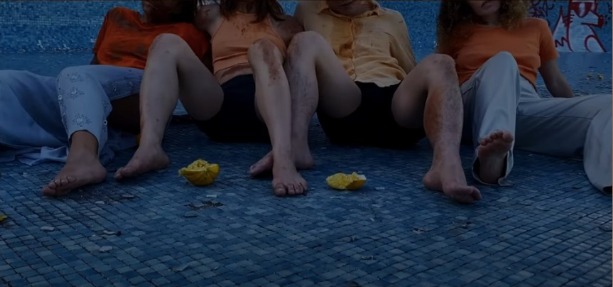
RUNA MARIE DUBROW
The future is dry

ANNA REBECCA UNTERHOLZNE
Connecting with our inner feelings (womb

LOBBY TEATRO
The film Dixney never made

Trying to get under the surface - reading session
MICAELA GUEDES AND CARINA PRAZERES
Time for the Oniric
HANNA SANDER
Very first exhibition

LOOP TUBE
Em movimento

CONSTANÇA VILLAVERDE ROSADO
Meio Cheio
Meio Cheio

JOÃO MALATO CORREIA
Resquícios de tempos conturbados
MARIA SHARGÁTOVA
“I don’t have time, but”
“I don’t have time, but”
PEDRO FEIO AND FRANCISCO DOS SANTOS
Farelos de Giões
XIX COLLECTIVE
XIX meeting ground
BERNARDO SOARES Sinestético Open Week
MARANA BARROS
Céu de Dentro

COURTNEY ASKEY
Heart Throb

MIHAELA RAIŠCA
Hora do sol
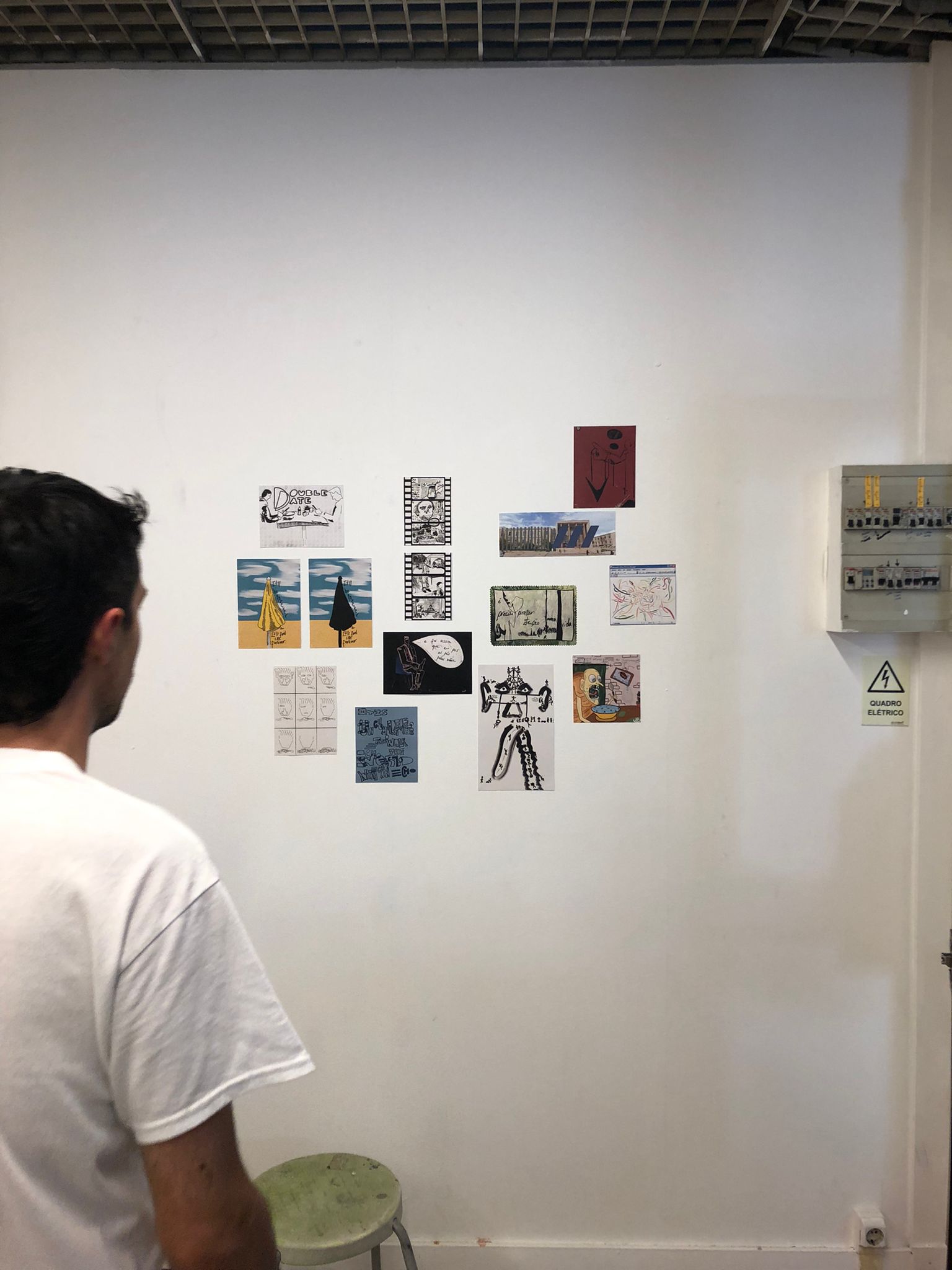
DUALGO
Processo de Algo Em Curso
dualgo is a creature bred out of the necessity for creation. Intimate friend of Duarte Gil Ferreira, dualgo is the search for something which it finds repeatedly at the tip of its pencil. Working primarily through drawing, dualgo explores different outlets to express the same old something he can’t ever put a finger on – algo – making its way through photography work, illustrations and animation. Basquiat painted ‘Samo esta en algo’; dualgo says ‘algo esta en samo’.
PROJECT
The space of a subway store becomes the artist’s open studio for 3 days, where the variety of works dualgo has accumulated over the years are displayed on the walls, inviting a closer look to all the things something can be.
PROJECT
The space of a subway store becomes the artist’s open studio for 3 days, where the variety of works dualgo has accumulated over the years are displayed on the walls, inviting a closer look to all the things something can be.
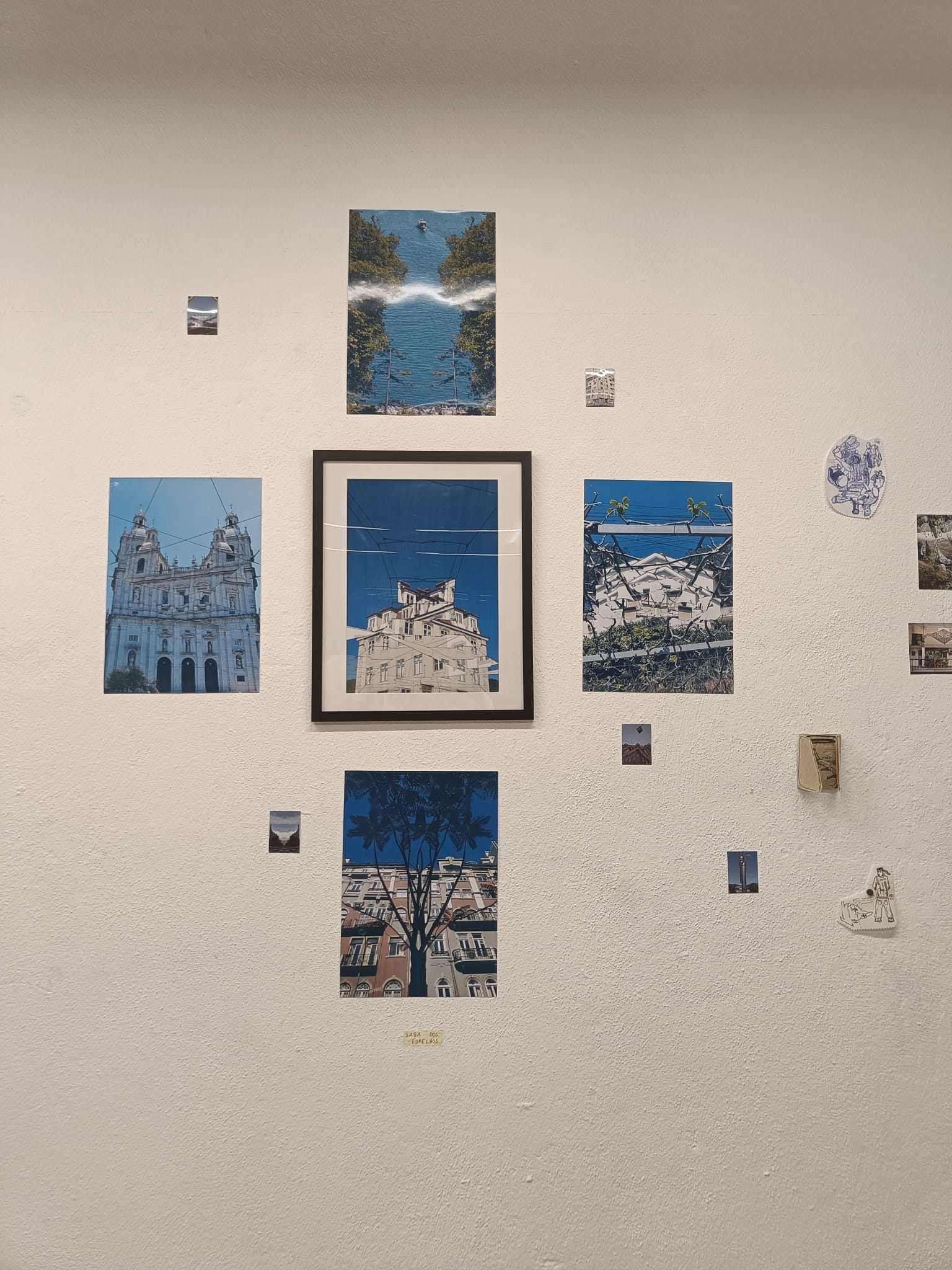
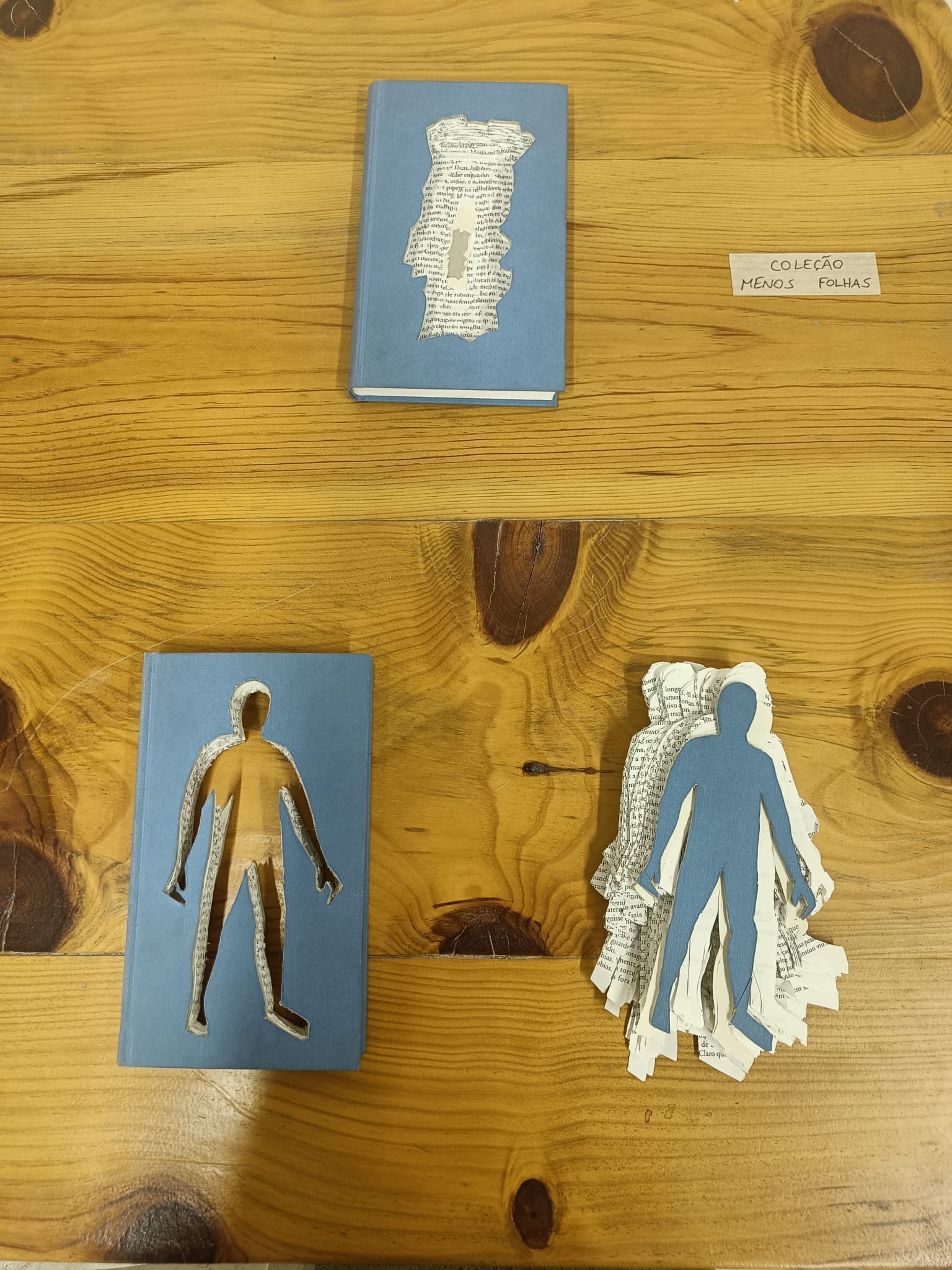
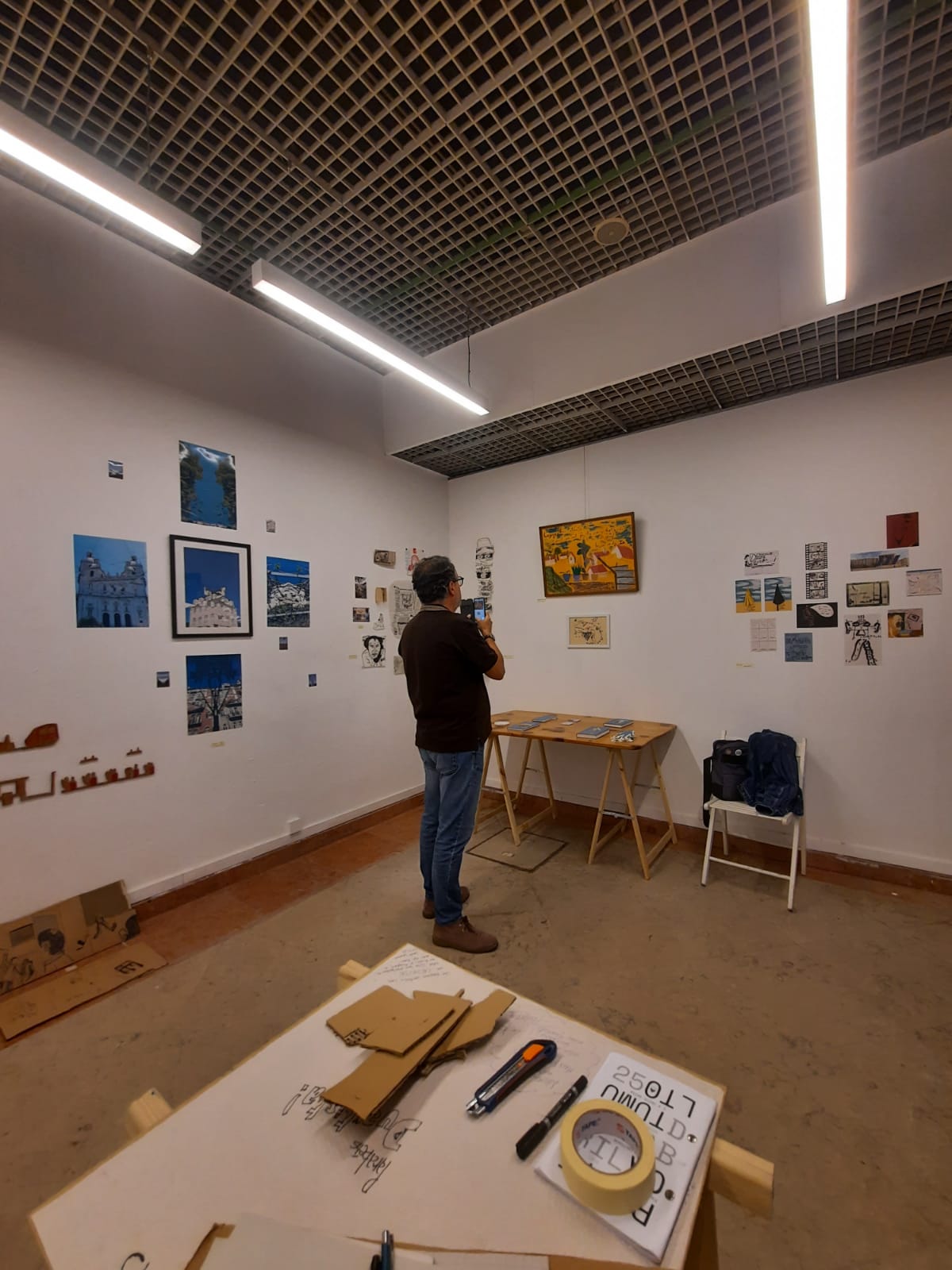

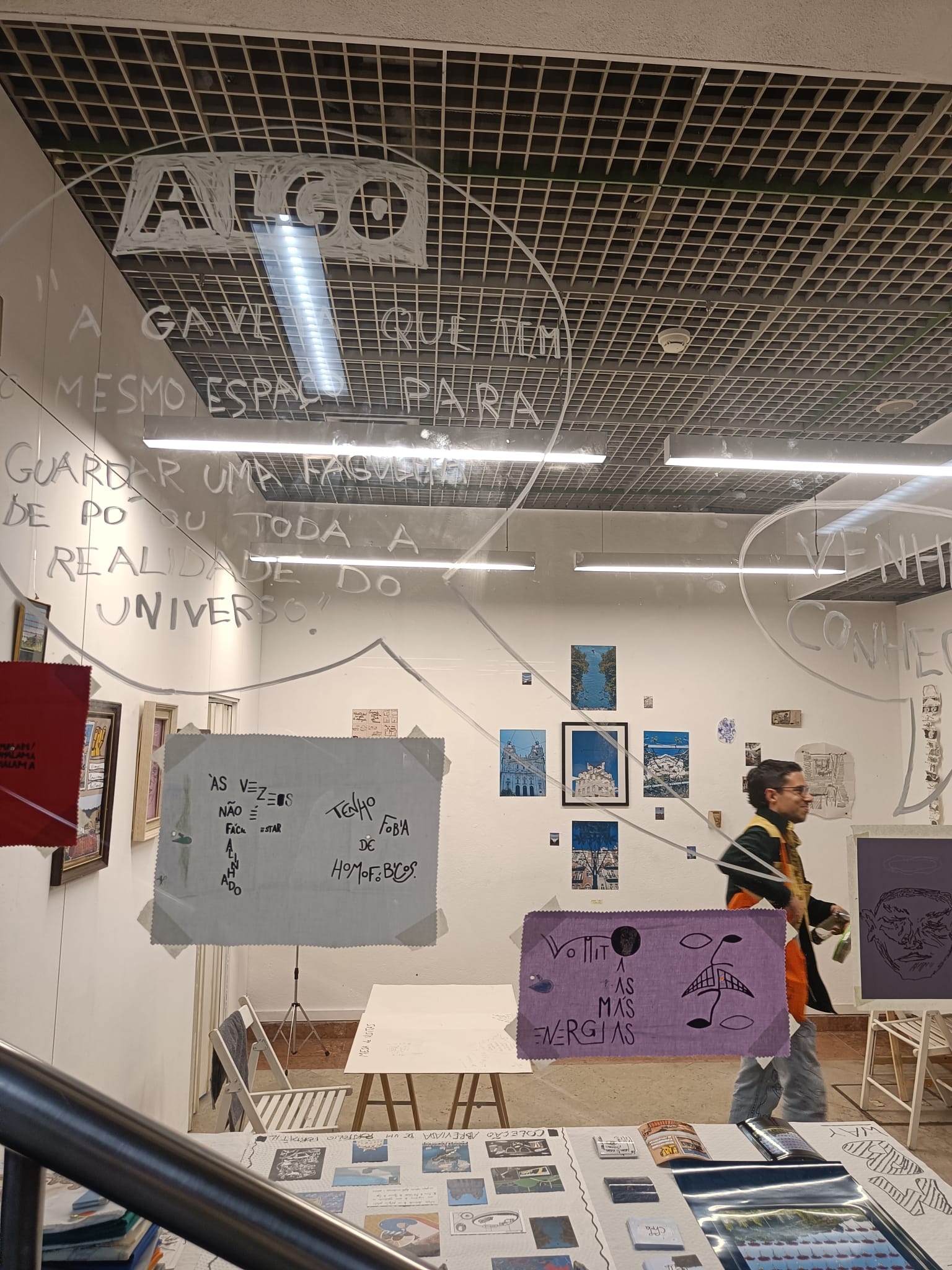

MALIBU NINJA
"Bazar Bizarro"
"Bazar Bizarro"
The Malibu Ninjas are a group of multi-disciplinary artists from Lisbon. The collective was created in 2017 with the aim of applying the art of the Ninjas to various types of media. Their fascination with pop culture, psychedelism and surrealism unfolds in the Malibu universe in the form of satires on issues and conflicts, both personal and collective, that we are confronted with on a daily basis as individuals and as a society. In a humorous tone, the Ninjas invoke in their work a celebration of life and a challenge to the human condition, with the intention of dematerialising our conceptions of worldly forms and beings.



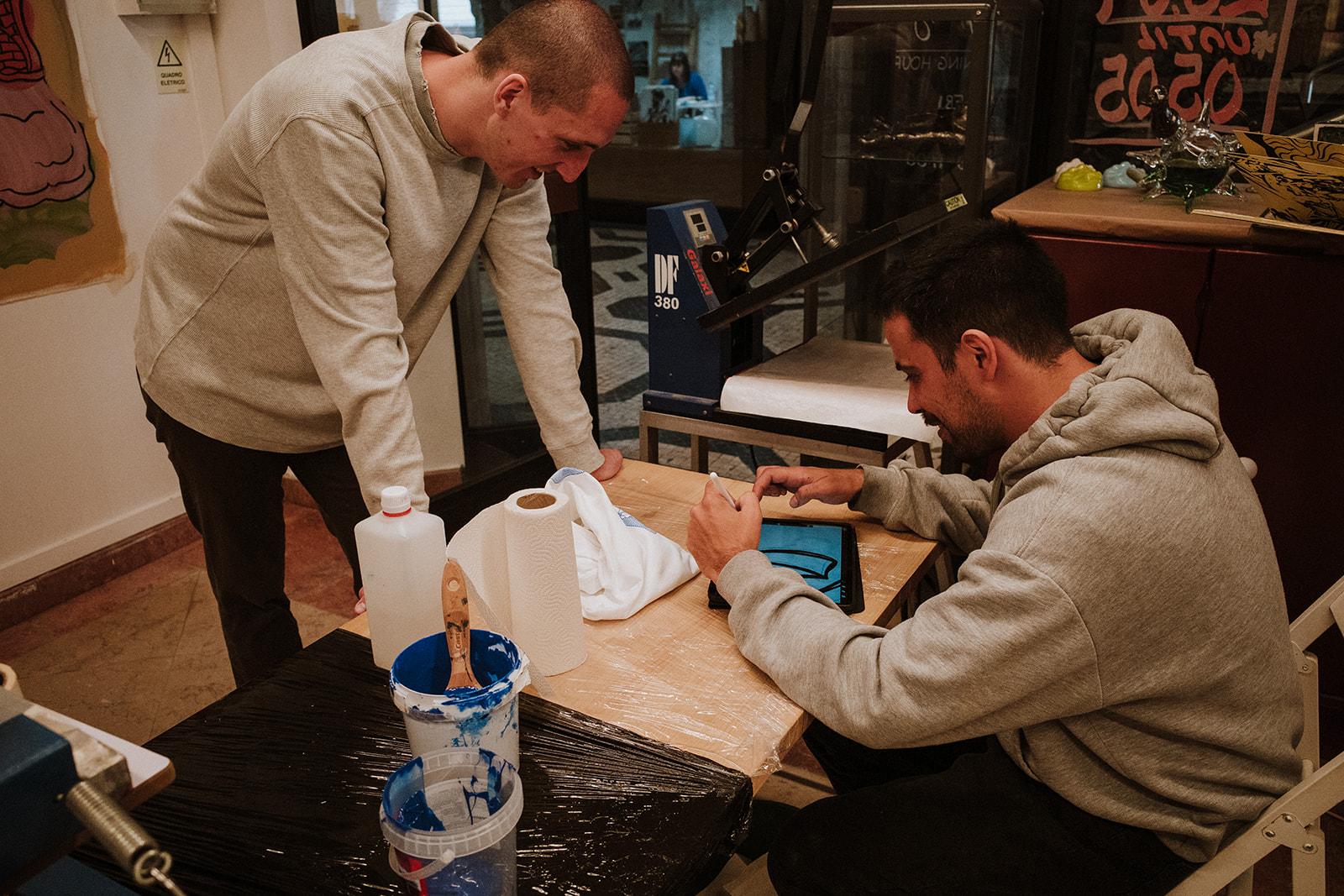


Photos by: Nicole Sánchez
ANA ANDRÈ
"Bem te vi"
"Bem te vi"
Ana André LusoBrasileira was born in Lisbon and emigrated to Brazil at the age of 16, where she has lived since 1975. A multimedia artist whose work is a dialogue that reveals (dis)connections between nature and the urban, she graduated in Architecture from USP in 1983. Her career as a visual artist began in 1984, and since then she has exhibited her work in various exhibitions, winning several awards.




From ‘Poetic Encounters’ Casa das Rosas, 2005 Assemblage / Poetry, incorporates poetry and the word in plastic productions. The work is a dialogue that reveals (dis)Connections between Nature and the Urban, 2024 participates in the exhibition ‘Lines that weave Poetic Landscapes’ at UMAPAZ, São Paulo. Inspired by the daily experience of walking, being in the world and being aware of its existence. This sensitivity manifests itself in her works in the relationships between line, body, nature, light and shadow.





MaisUno +1
“Poets Passing By”
“Poets Passing By”
Part 1
From the 6th to the 19th of April 2024, we embarked on a creative journey by collecting poems, thoughts, and texts from people passing by our space in the metro station. We invited them to express themselves by writing on post-its or contributing to the large paper displayed on our wall.
On the last day of the project, we hosted an inspiring poetry slam, featuring many talented writers who captivated the audience with their poems.
Building on the success and enthusiasm generated by this initiative, we decided to continue our project with an exhibition. From the 18th to the 20th of May, the collective poem created from the contributions we received will be showcased along the works presented on the poetry slam event.
Moreover, our mission to infuse the city with the magic of poetry, will become a reality thanks to the spread of the poems exhibited throughout the city of Lisbon.
From the 6th to the 19th of April 2024, we embarked on a creative journey by collecting poems, thoughts, and texts from people passing by our space in the metro station. We invited them to express themselves by writing on post-its or contributing to the large paper displayed on our wall.
On the last day of the project, we hosted an inspiring poetry slam, featuring many talented writers who captivated the audience with their poems.
Building on the success and enthusiasm generated by this initiative, we decided to continue our project with an exhibition. From the 18th to the 20th of May, the collective poem created from the contributions we received will be showcased along the works presented on the poetry slam event.
Moreover, our mission to infuse the city with the magic of poetry, will become a reality thanks to the spread of the poems exhibited throughout the city of Lisbon.


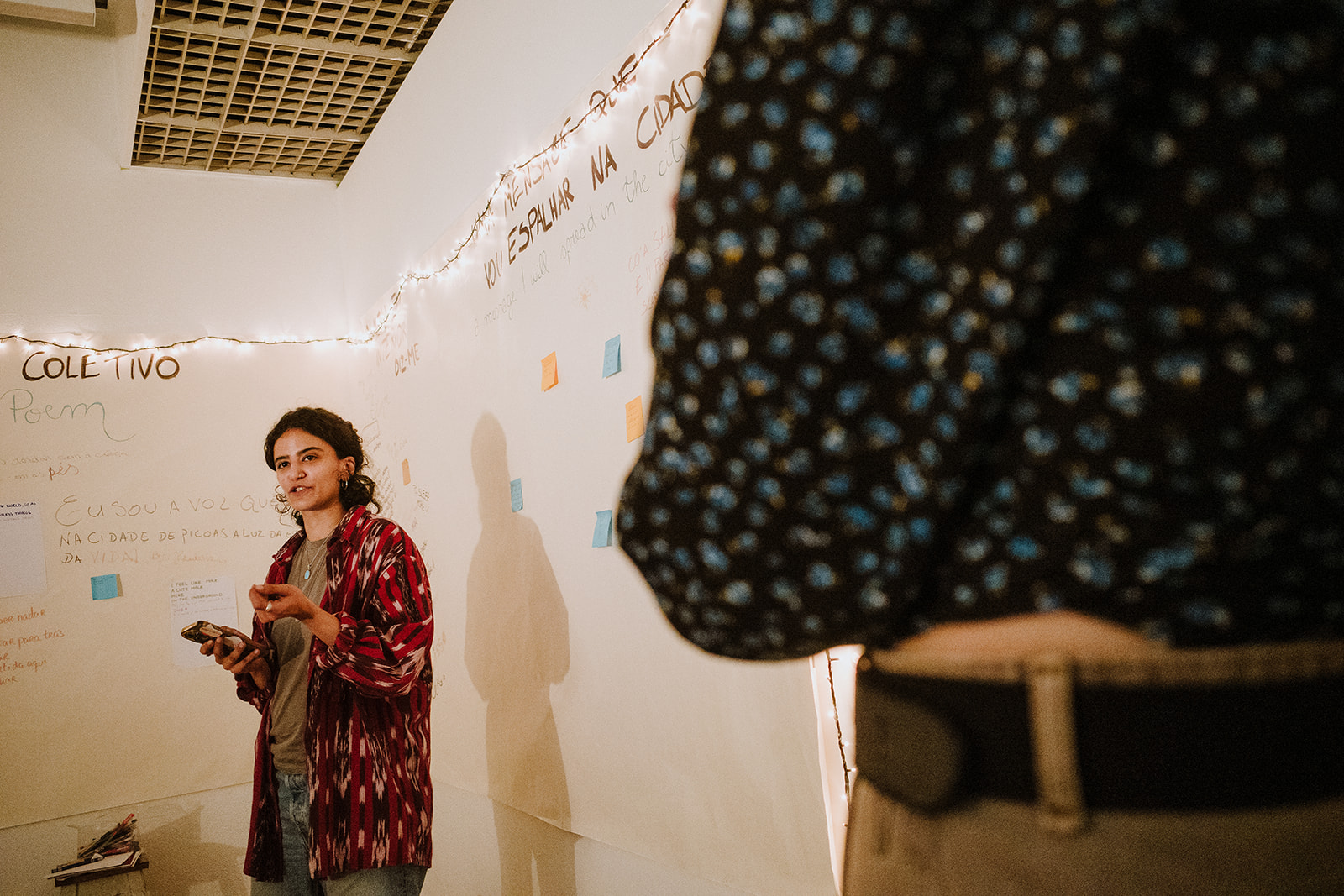


Photos by: Nicole Sánchez

“Poets Passing By” - the exhibition
Part 2
After the event, the poems collected were exhibited in the Picoas metro space, where people could come and read them.
The various poems were also spread around the city. A map would lead the visitors of the exhibition to discover which corner of the city might’ve hold a poem for them!
After the event, the poems collected were exhibited in the Picoas metro space, where people could come and read them.
The various poems were also spread around the city. A map would lead the visitors of the exhibition to discover which corner of the city might’ve hold a poem for them!





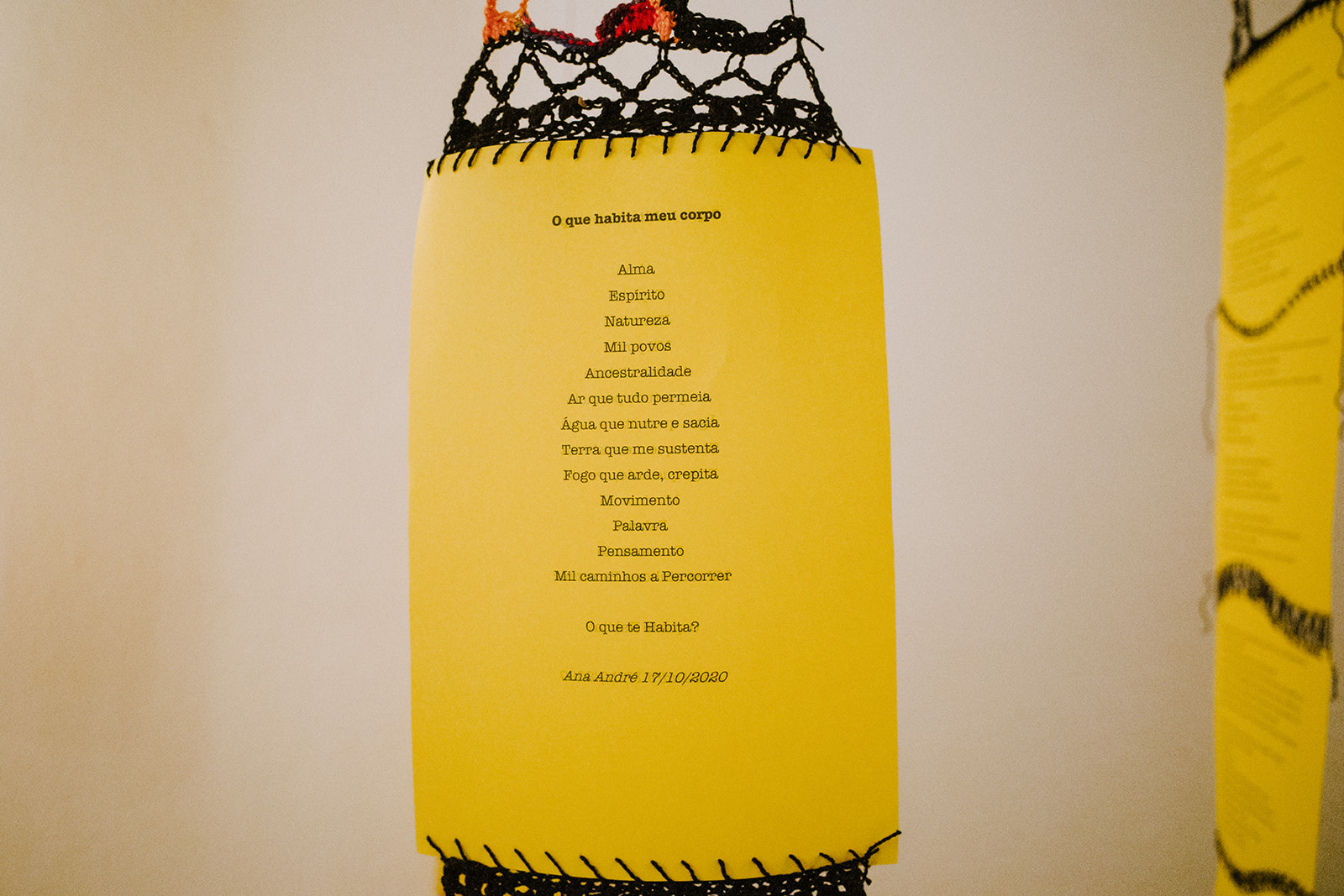

Photos by: Nicole Sánchez
satelite project
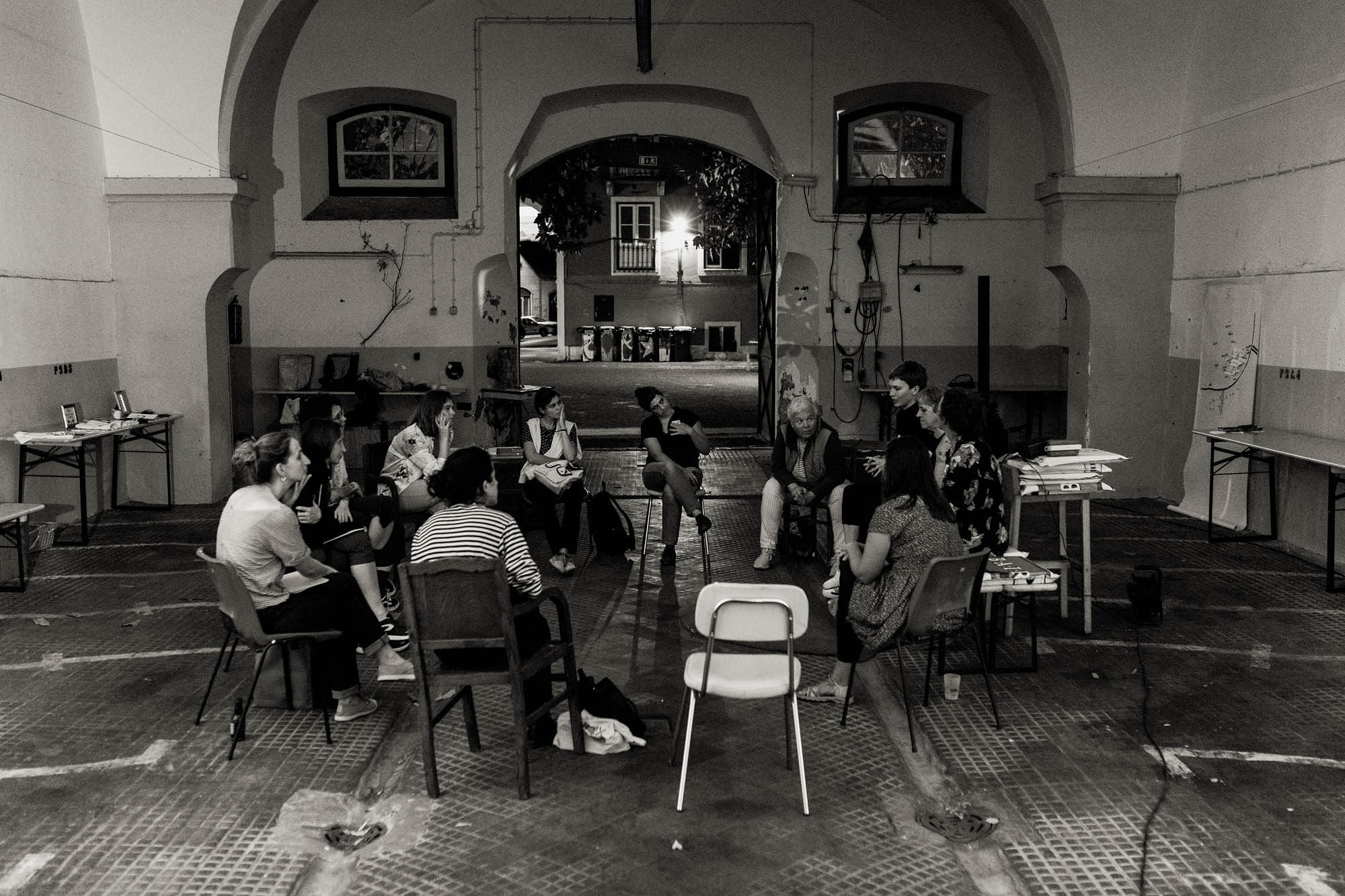
aRTISTAS aNÓNIMOS
aRTISTAS aNÓNIMOS is a community of people who share their experience, strength, and hope to resolve their common problems and help each other to continue making art in an inspired, healthy and sustained way. The only requirement for becoming a member is the wish to continue making art.
— project duration
2021 > 2023
— project location/logistic partn
Largo Residências (Lisbon)
Galeria Monumental (Lisbon)
Goethe-Institut (Lisbon)
Espaço Q QuadraSoltas (Porto)
— communication and image partners
Inês Gil Silva (Sounds Like a Plan Photography)
Filipa Leite Rosa (Framers Studio)
Marco Teixeira (Tripé)
Gonçalo Nuno Souza (Souza Filmes)
— support
Cerveja Barona
Curious Monkey (Lisbon)
Bempostinha 22 (Lisbon)
2021 > 2023
— project location/logistic partn
Largo Residências (Lisbon)
Galeria Monumental (Lisbon)
Goethe-Institut (Lisbon)
Espaço Q QuadraSoltas (Porto)
— communication and image partners
Inês Gil Silva (Sounds Like a Plan Photography)
Filipa Leite Rosa (Framers Studio)
Marco Teixeira (Tripé)
Gonçalo Nuno Souza (Souza Filmes)
— support
Cerveja Barona
Curious Monkey (Lisbon)
Bempostinha 22 (Lisbon)
The development of a career in the arts is one of the hardest challenges to structure and describe. Due to the characteristics of this professional field, the art worker becomes divided between two worlds and ways of thinking. On one hand, they develop work methods connected with a liberal, flexible profession with open answers, free creation, and innovation; on the other hand, they should fit their professional practice in a system with institutions, scholarships, job offers, and art markets. Thus, the art worker is simultaneously a researcher, educator, creator, businessperson, independent, and dependent employee.
Additionally, the events that occurred in 2020 and 2021 weakened even further the cultural sector. However, in parallel, associations, discussion groups, and new practices started to emerge, with the aim to answer the new-found difficulties. Artistic practice can be a lonely place. For that reason, once a month, we gather in a group for mutual support, focused in particular on the practice of visual arts.
Additionally, the events that occurred in 2020 and 2021 weakened even further the cultural sector. However, in parallel, associations, discussion groups, and new practices started to emerge, with the aim to answer the new-found difficulties. Artistic practice can be a lonely place. For that reason, once a month, we gather in a group for mutual support, focused in particular on the practice of visual arts.
— target group
Art workers: plastic artists (ceramics, drawing, sculpture, design, crafts, photography, video), educators, curators, or programmers, preferably located partially or fully in the city of Lisbon or Porto.
Art workers: plastic artists (ceramics, drawing, sculpture, design, crafts, photography, video), educators, curators, or programmers, preferably located partially or fully in the city of Lisbon or Porto.
— team

Nicole Sánchez
photographer, visual artist
LISBON / PORTO

Lígia Fernandes
visual artist
LISBON

Matilde Fernandes
student
PORTO

Beatriz Silva
student
PORTO
student
PORTO
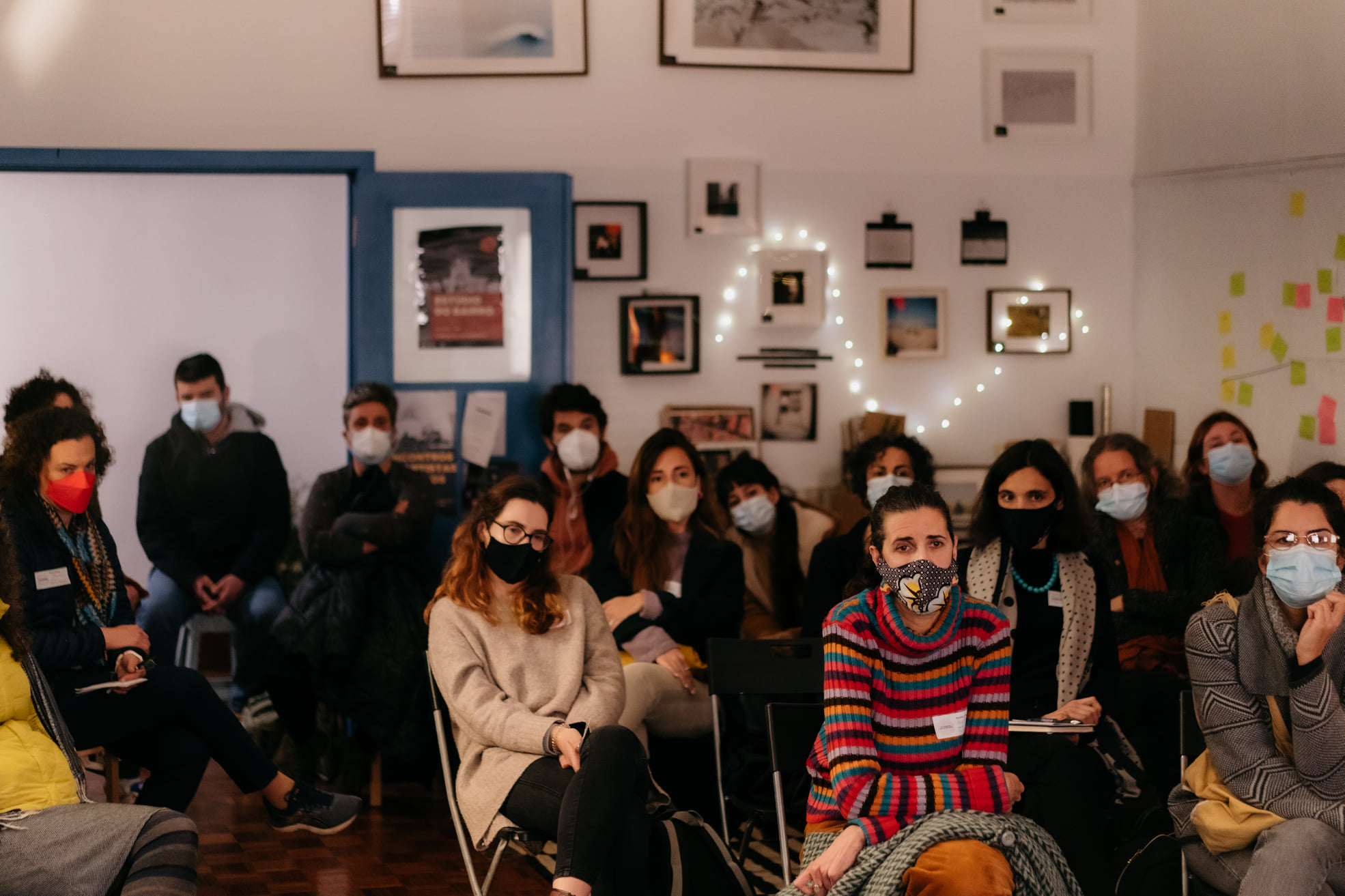

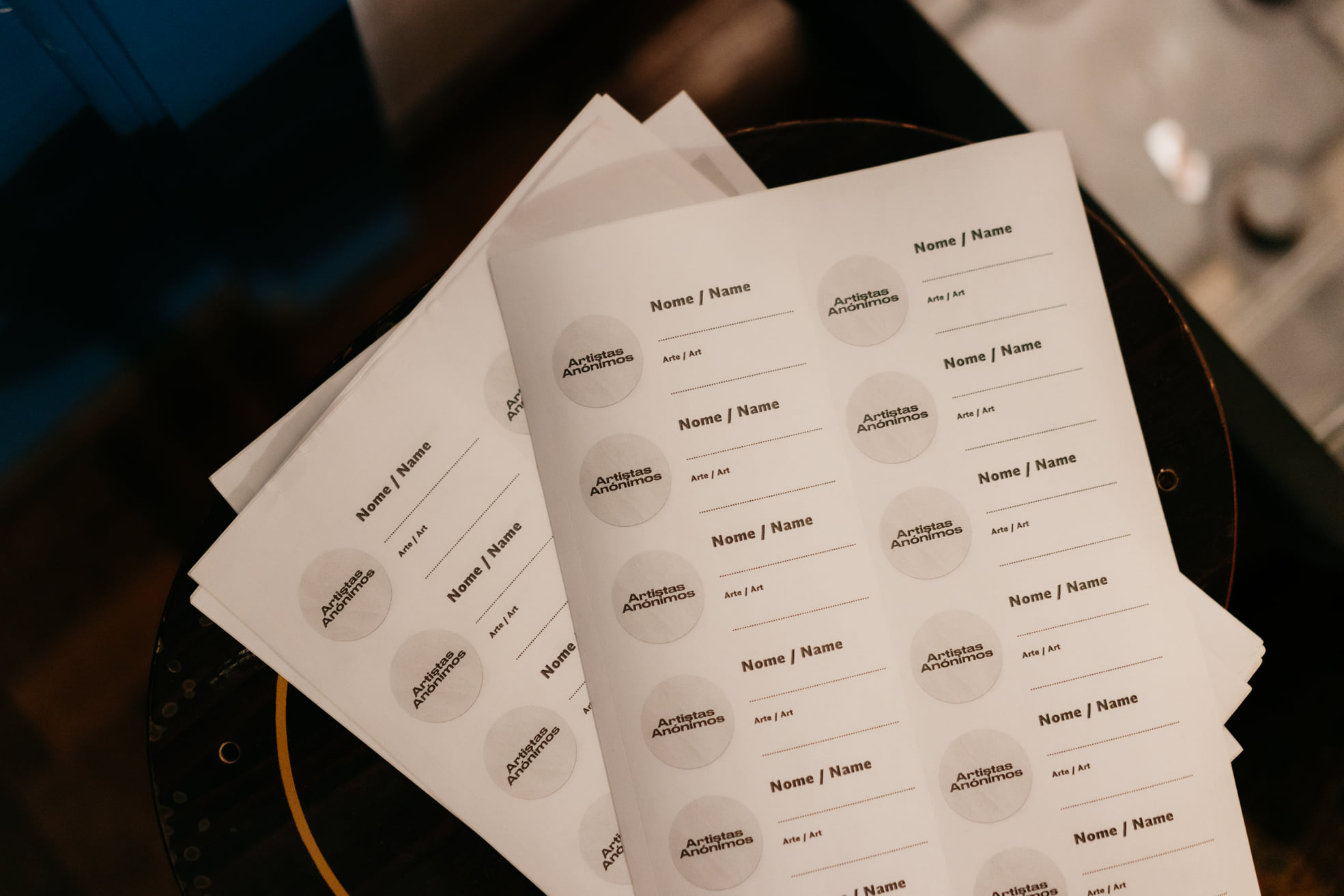
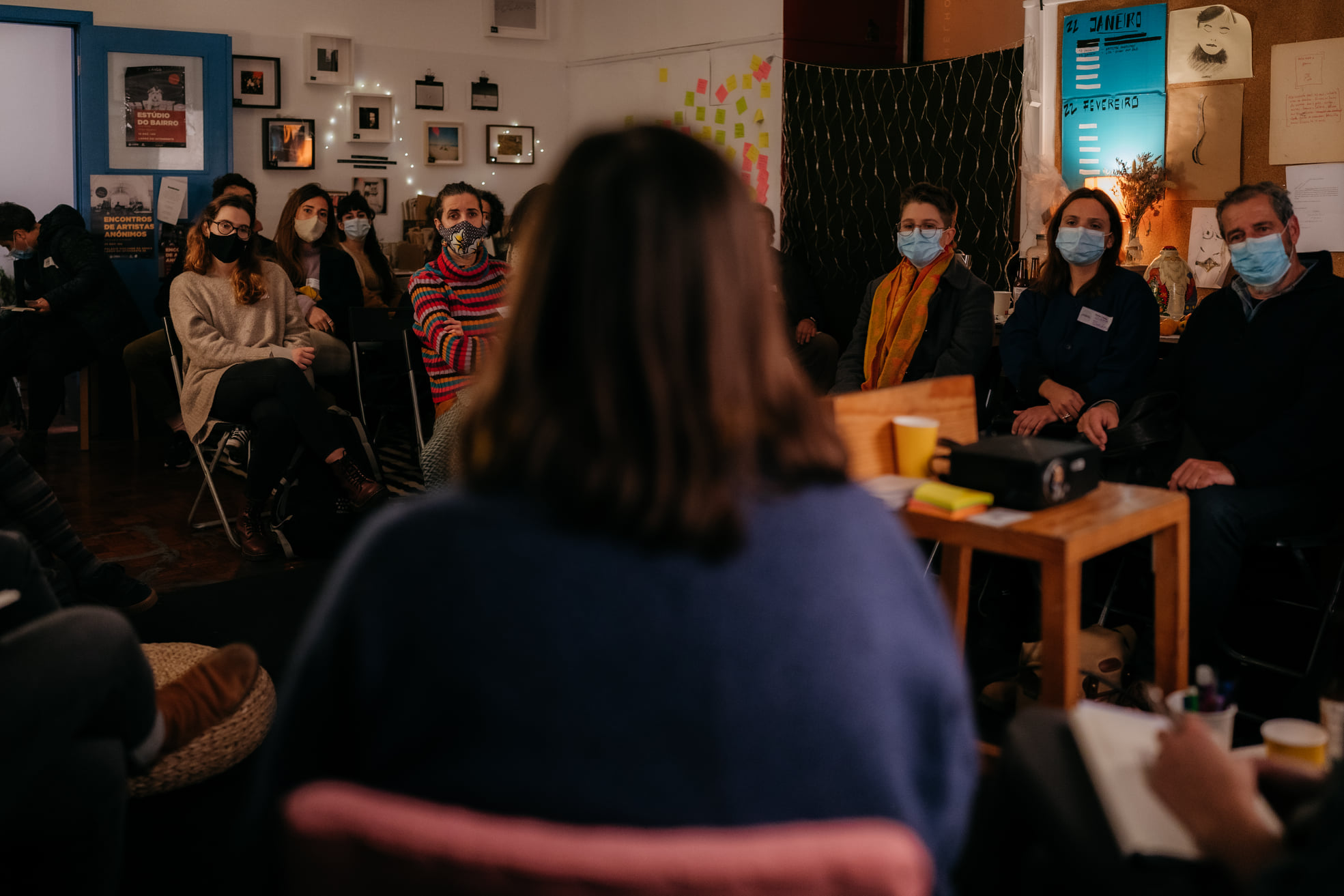
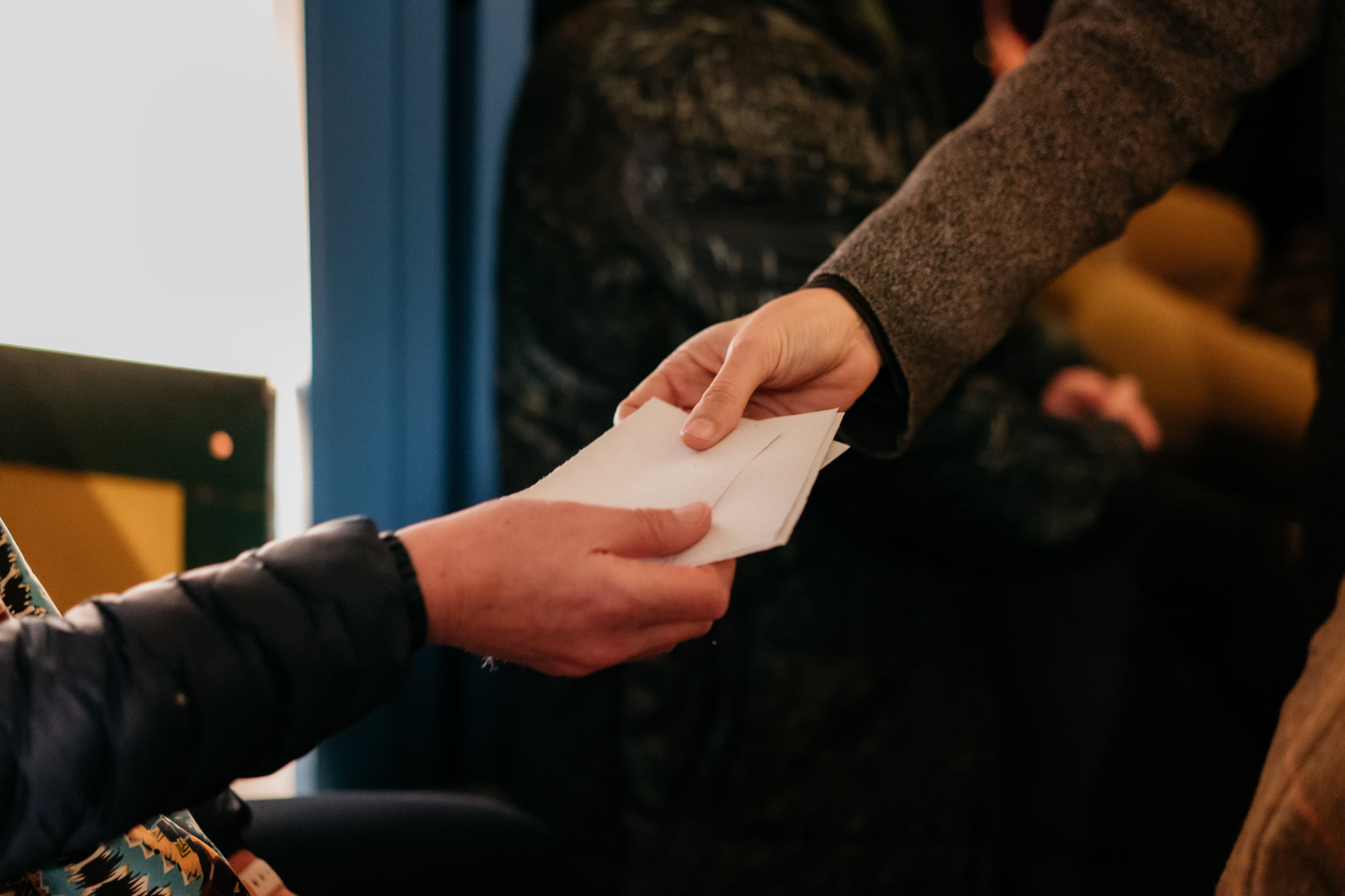
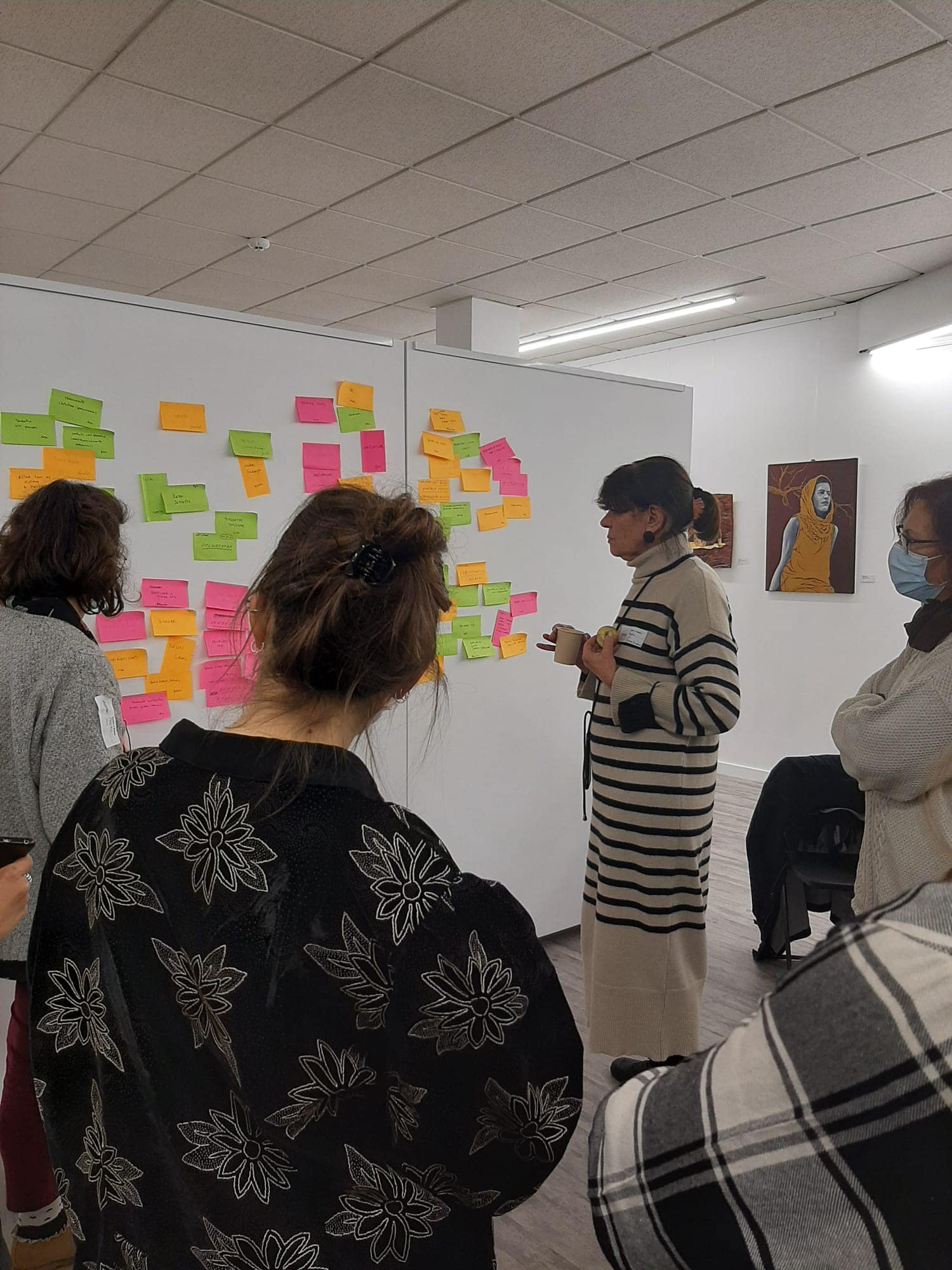

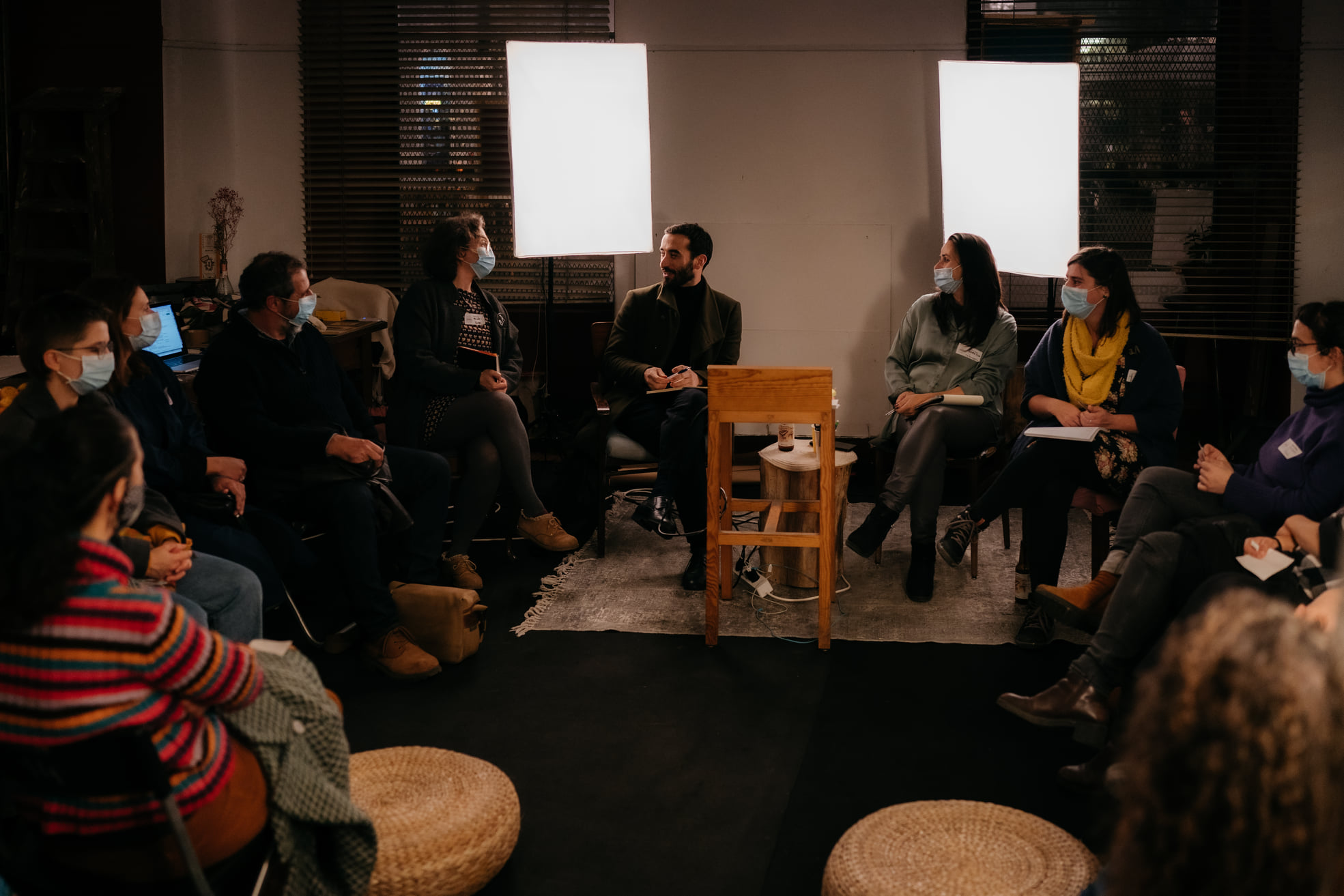
Photography: Filipa Leite Rosa (Framers Studio), and Espaço Q QuadraSoltas
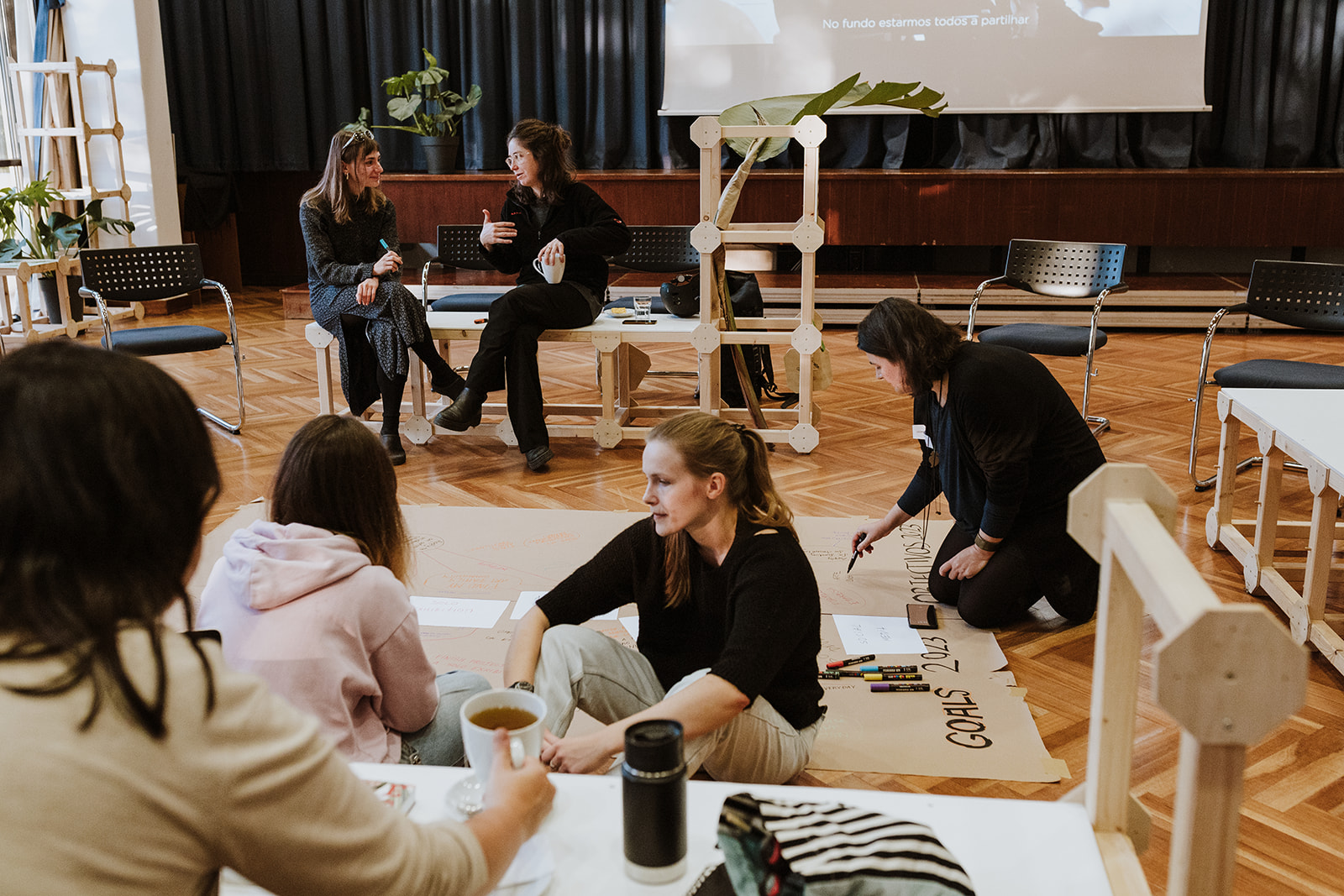
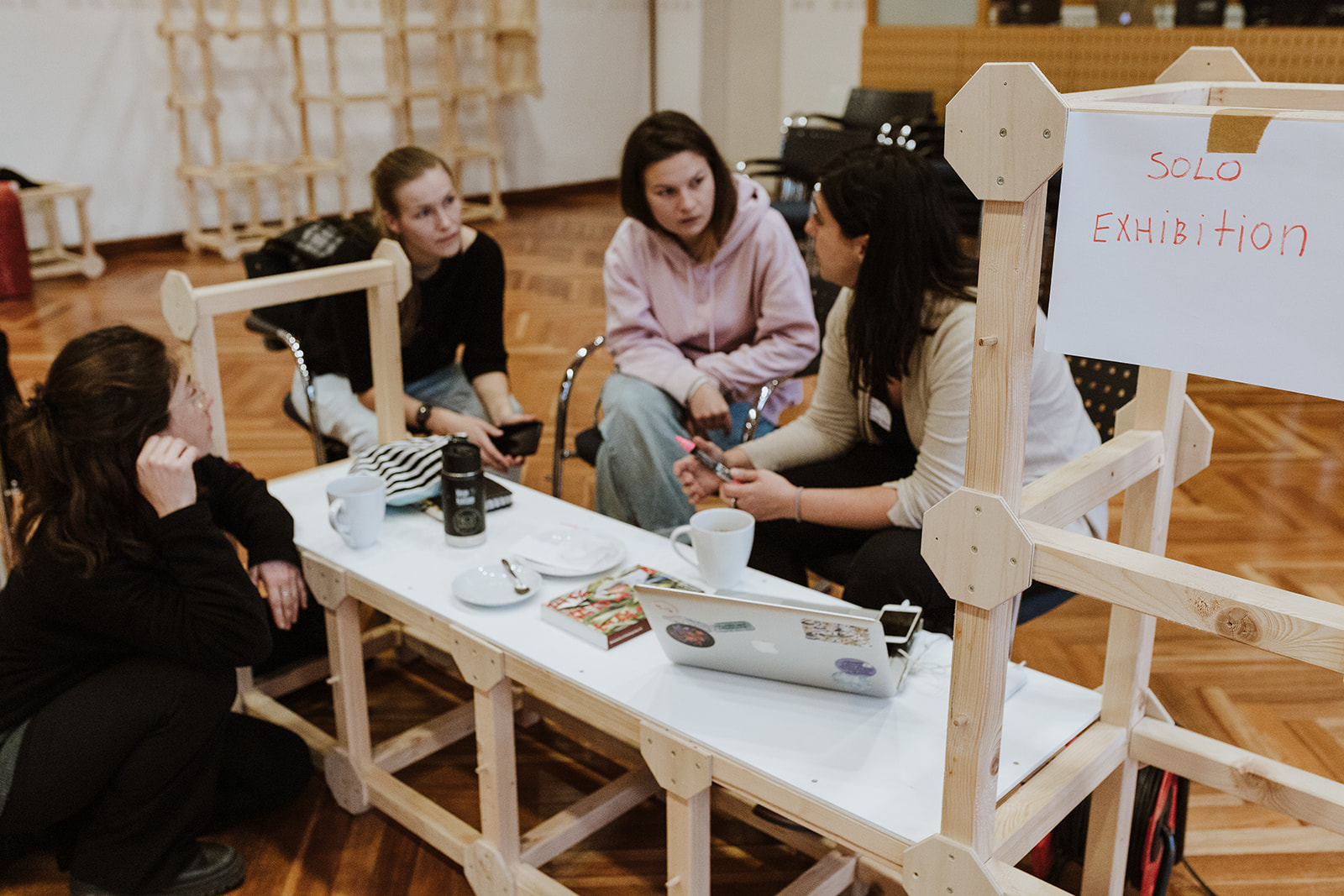


Photography: Inês Gil Silva (Sounds Like a Plan Photography)

Lisbon drawing club
Lisbon Drawing Club is a community of live model drawing lovers who meet regularly to draw and share a good time.
— project duration
2021 > ongoing
— project location/logistic partners
Safra
Galeria Monumental
LARGO Residências
Curious Monkey
Queer Art Lab/Trumps
Goethe-Institut
NOVA - school of business economics
Hindu Temple
Ávila Spaces
Oriq
Dual
Atelier Artéria
Útero
Praça
Casa Regional Castro de Aire
MUSEX
PLA’arte artists studios
Palácio Baldaya
Museu do Aljube e Resistência
Quinta das Relvas
Hospital Psiquiátrico de Lisboa
Centro de Dia Nossa Sª dos Anjos
Museu do Teatro Romano
Livraria Buchholz
Locke
FABLAB
2021 > ongoing
— project location/logistic partners
Safra
Galeria Monumental
LARGO Residências
Curious Monkey
Queer Art Lab/Trumps
Goethe-Institut
NOVA - school of business economics
Hindu Temple
Ávila Spaces
Oriq
Dual
Atelier Artéria
Útero
Praça
Casa Regional Castro de Aire
MUSEX
PLA’arte artists studios
Palácio Baldaya
Museu do Aljube e Resistência
Quinta das Relvas
Hospital Psiquiátrico de Lisboa
Centro de Dia Nossa Sª dos Anjos
Museu do Teatro Romano
Livraria Buchholz
Locke
FABLAB
— communication and image partners
Nicole Sánchez - NIMAGENS
Based on the principles of Community, Inclusion, Practice and Fun, we organize weekly meetings in different cultural/social places in Lisbon since May 2021. We believe that drawing together is a great way to get to know each other better and also to get to know ourselves. Drawing can be a vehicle for emancipation, belonging and awareness.
Lisbon Drawing Club is interested in working with a diversity of models that reflect the richness of our social heritage and stimulate a practice of empathy, working with a plurality of bodies, gestures and identities represented by professional models, artists, folk groups, migrants, seniors, inhabitants of different neighborhoods, etc. Once a month, sessions are dedicated to trans and non-binary models in cooperation with Queer Art Lab. Drawing classes (Masterclasses) with guest artists are also organized on a monthly basis.
Lisbon Drawing Club is interested in working with a diversity of models that reflect the richness of our social heritage and stimulate a practice of empathy, working with a plurality of bodies, gestures and identities represented by professional models, artists, folk groups, migrants, seniors, inhabitants of different neighborhoods, etc. Once a month, sessions are dedicated to trans and non-binary models in cooperation with Queer Art Lab. Drawing classes (Masterclasses) with guest artists are also organized on a monthly basis.
— support
VIARCO
— target group
Lisbon Drawing Club has collaborated with more than 25 cultural and social places, such as SAFRA, Galeria Monumental, Curious Monkey, Queer Art Lab/Trumps, Casa de Castro Daire, Musex, P.R.A.Ç.A, Goethe-Institut, Dual, Lisbon's Psychiatric Hospital, Day Care Centre of N. Sra dos Anjos, AMRT Transcultural, Dual Lisboa, Viarco, Quinta das Relvas, Museu do Aljube e Resistência, NOVA SBE amongst other cultural spaces.
Lisbon Drawing Club has collaborated with more than 25 cultural and social places, such as SAFRA, Galeria Monumental, Curious Monkey, Queer Art Lab/Trumps, Casa de Castro Daire, Musex, P.R.A.Ç.A, Goethe-Institut, Dual, Lisbon's Psychiatric Hospital, Day Care Centre of N. Sra dos Anjos, AMRT Transcultural, Dual Lisboa, Viarco, Quinta das Relvas, Museu do Aljube e Resistência, NOVA SBE amongst other cultural spaces.
— team

Marianne Maina
(FR)

Nicole Sánchez
(PT)

Lígia Fernandes
(PT)
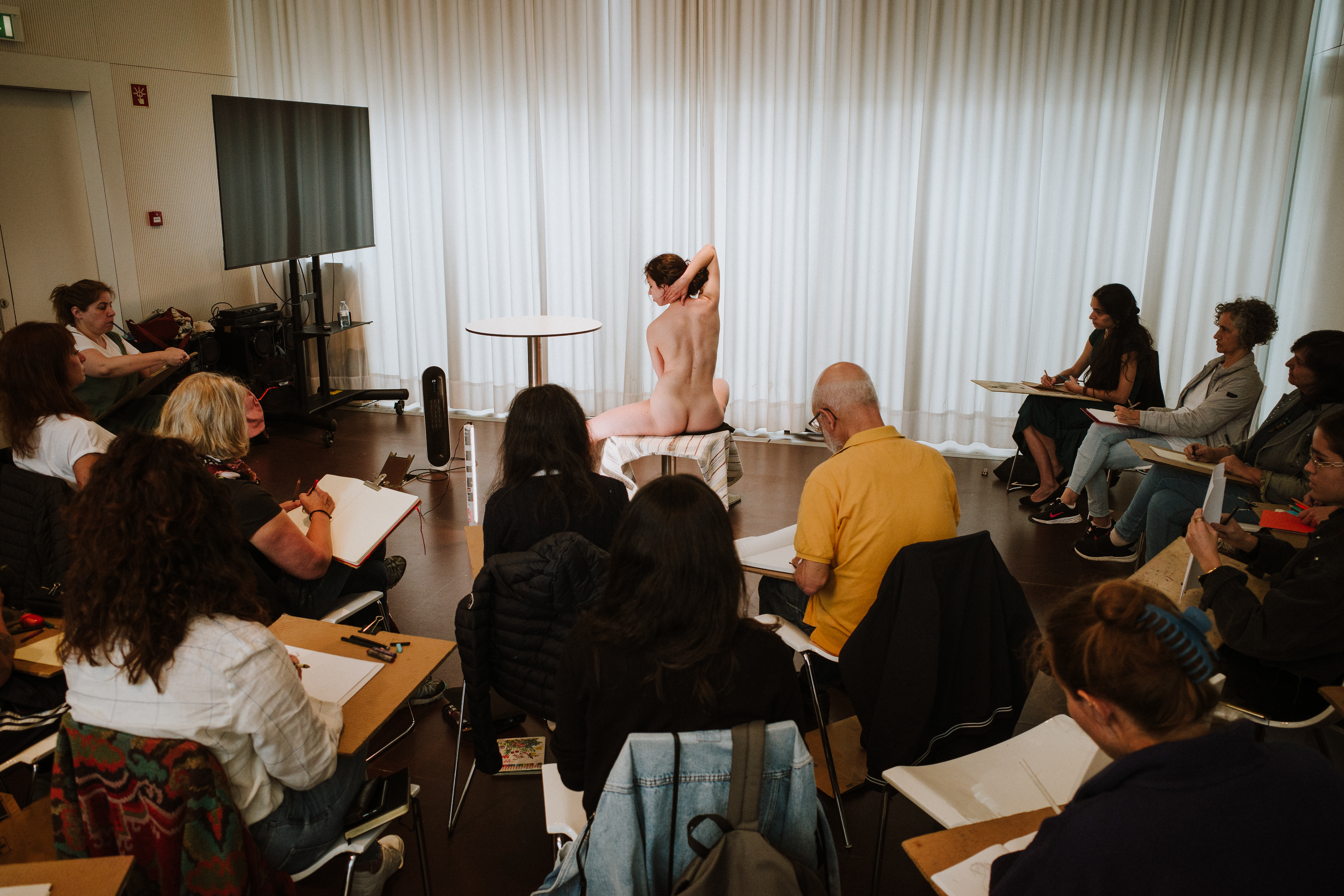
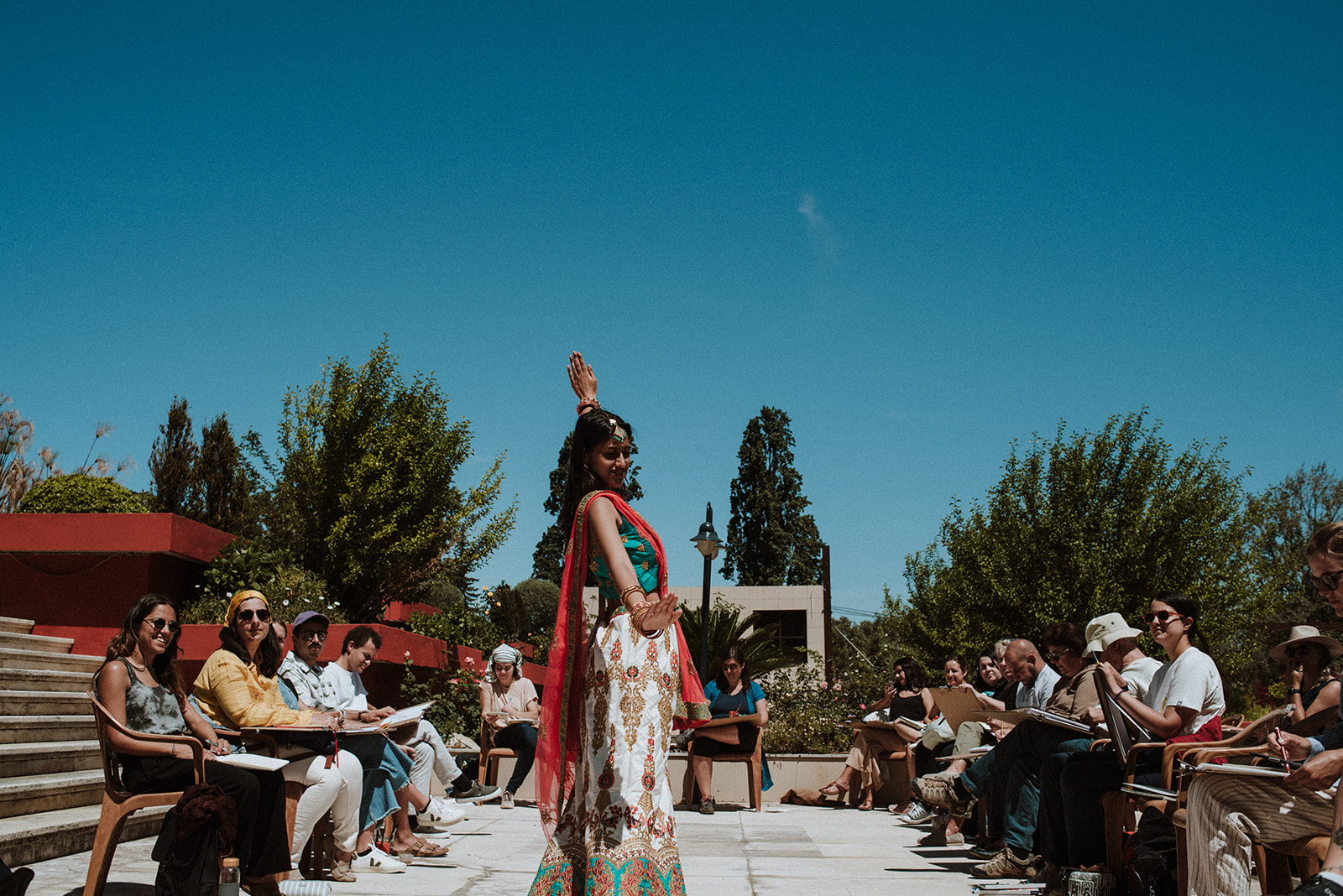


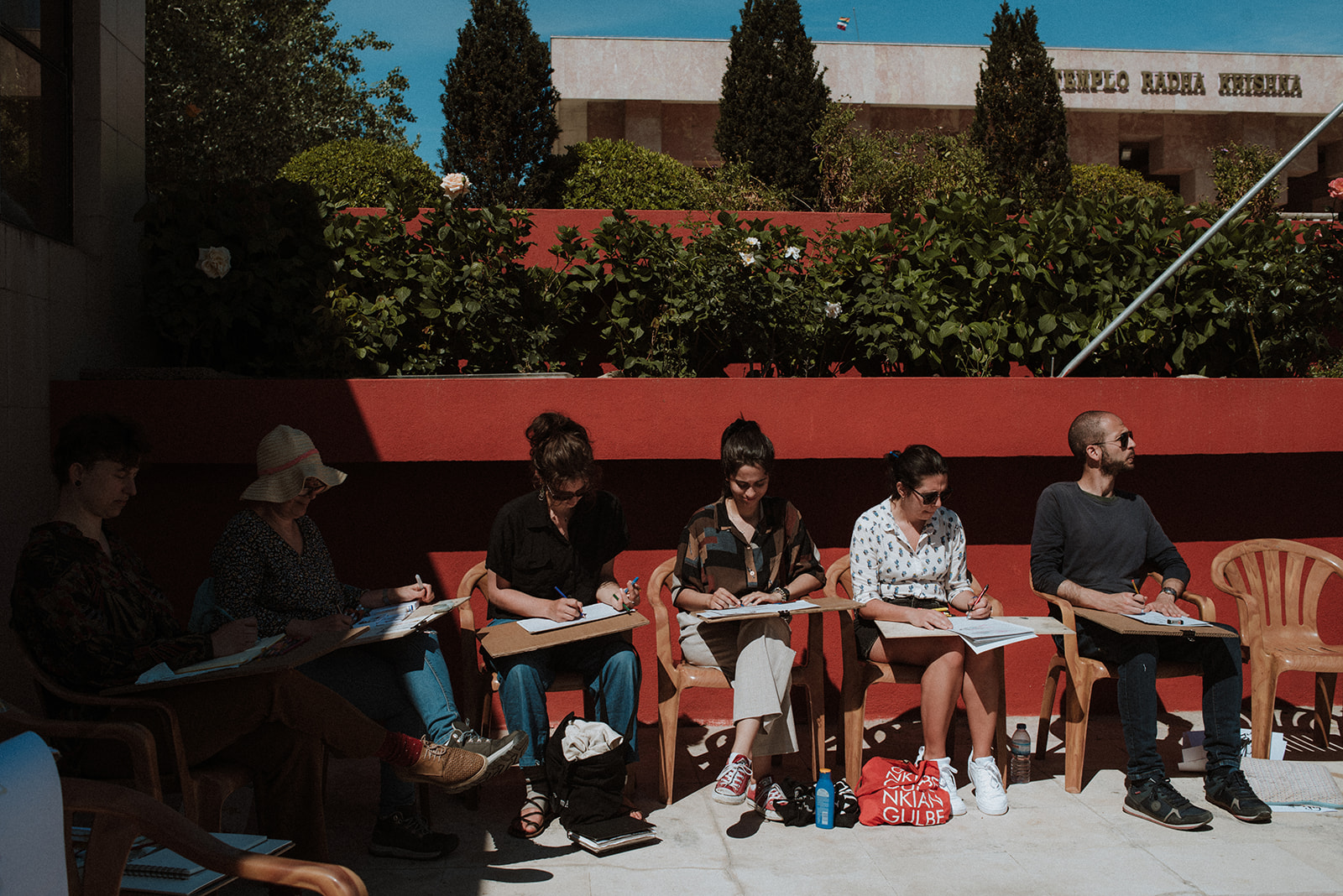
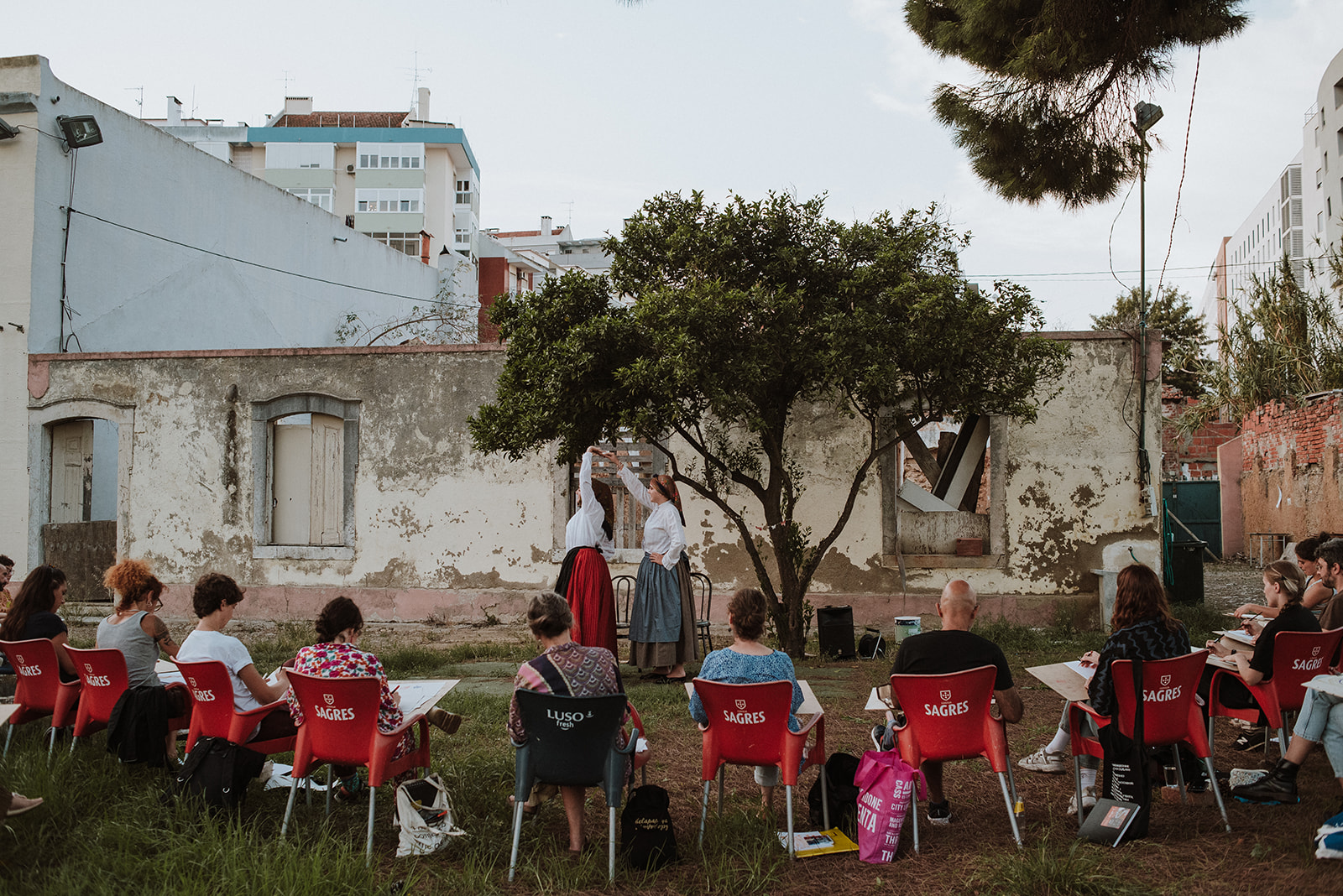



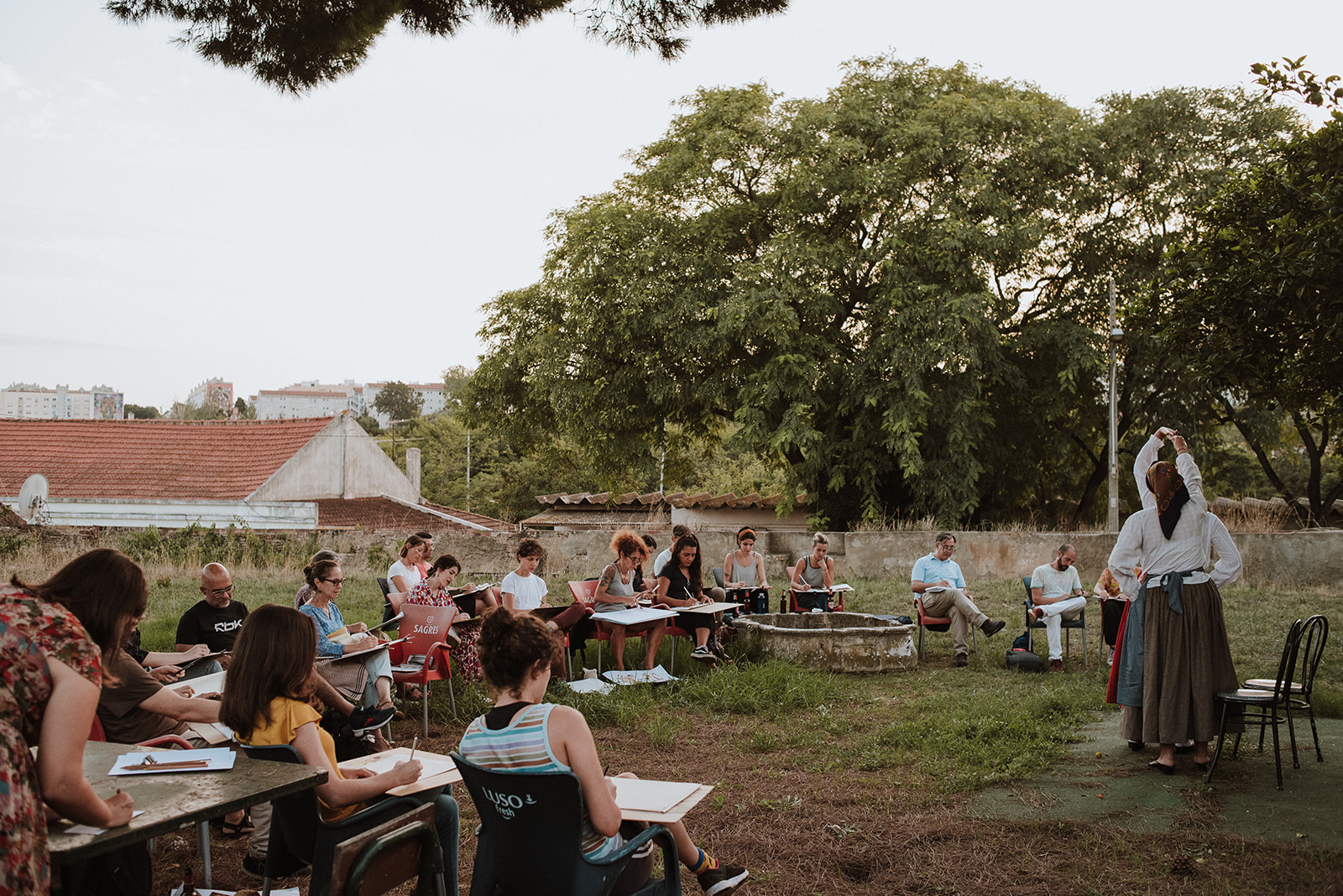




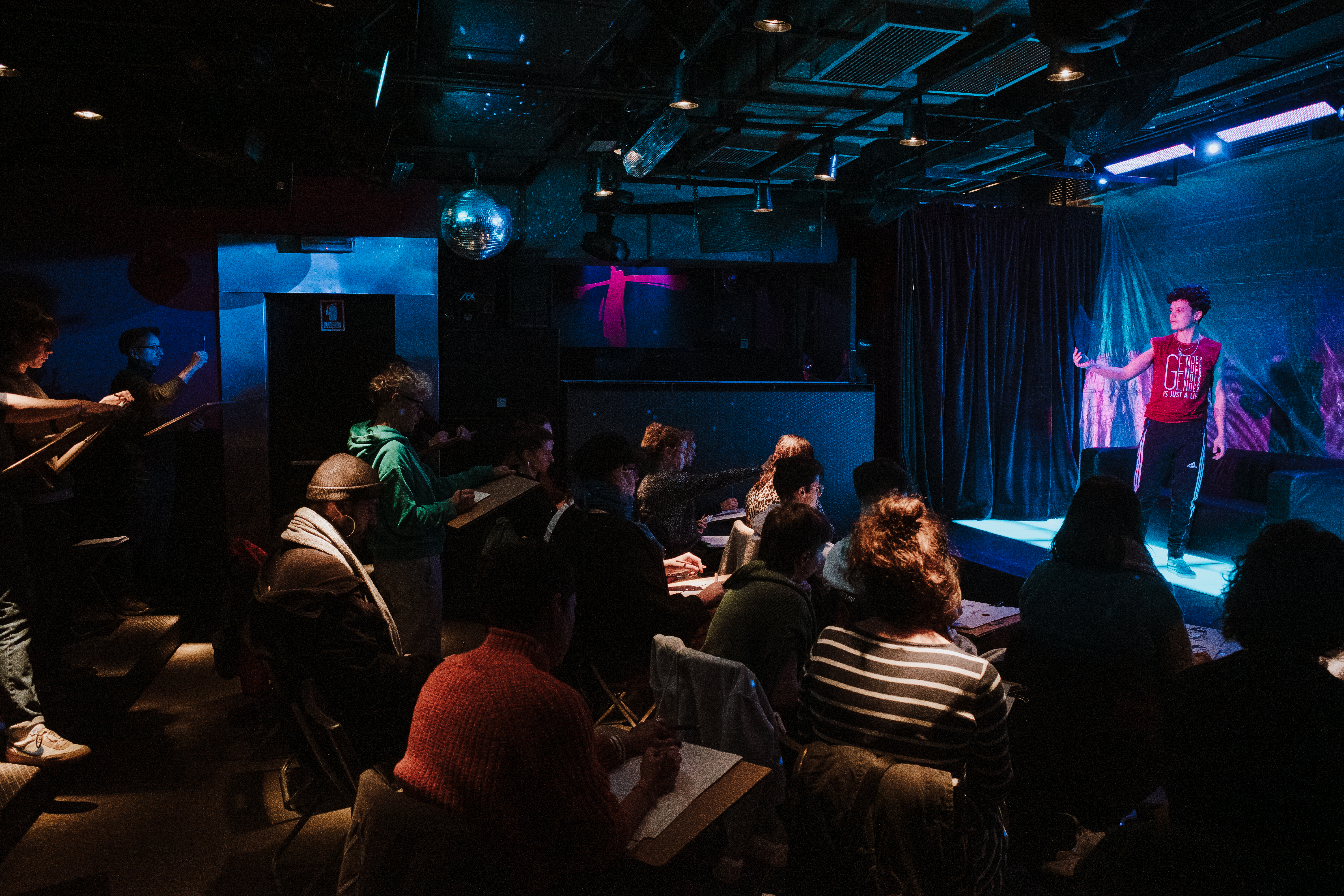





Photography: Nicole Sánchez
Podcast em conversa
In episode 5 we are talking with Diana Ferro about her artistic residency in the territory of Trafaria and 2.º Torrão. When she would describe the topic of the residency in two words it would be Confianca e Medo - trust and fear in the city. We talk about feeling comfortable and finding the boundaries between artistic practices and life, about movement and finding places of exchange.
In episode 4 we are talking with Sarah, an artist and photographer based in Lisbon. She was the first artist coming to the neighborhood of Trafaria but more precisely in Cova de Vapor and Segundo Torrao. We will hear about her special method to connect to the local residents through her dog Fred and all the fun she had building sand castles and creating water sculptures with the kids of the neighbourhood.
In this episode we are talking with Alexandra, an artist with a background in UX design, about her experiences in the neighborhood of Talude. We talk about identity and ownership, about preserving cultural heritage in a digital format and the challenges as well as the beauty of working with children. We had the interview with her right before she went back to the Netherlands, and it was a reflection of her time in the neighborhood and a starting point of processing her research for a digital archive for Talude.
We are talking with Michele who was resident in Zambujal (Alfragide) about the political realm of infrastructure, how architecture imposes itself on its inhabitants and how it can be re-appropriated. He spent 3 weeks living and working in the neighborhood, connected to the inhabitants and explored the space through photography, maps and conversations.
In this episode you can listen to his experience in Zambujal and how he perceived the neighborhood through the lens of an architect and photographer.
Riikka was the first resident of this year in Quinta da Fonte, where her project aimed to empower the children and youth of the community to discover their inner artists—often without even realising it. She initiated a storytelling project, introducing storytelling as a powerful medium for self-expression. These stories served as a foundation, evolving into diverse forms of artistic creation.
< IN PORTUGESE>
In the last session of the first series EM CONVERSA we talked to the collective Left Hand Rotation. @lefthandrotation.colectivo
"A turn in the opposite direction that can happen at any time, a screw that has to be tightened just the opposite of what is expected."
Ligia Fernandes and Nicole Sanchez talked to members of the collective about their practice, the use of public space and the relationship of art and activism.
"Un giro en la dirección contraria que puede producirse en cualquier momento, un tornillo que hay que apretar justo al contrario de lo esperado."
https://www.lefthandrotation.com/
< IN ENGLISH >
Nicole Sánchez and Ricarda Oldekop from mais uno +1 were able to talk with Emanuele Braga and Marco Baravalle from the Institute of Radical Imagination about their work. The Institute of Radical Imagination is a network of curators, activists, scholars and cultural producers with a shared interest in co-producing research, knowledge, artistic and political research-interventions, aimed at implementing post-capitalist forms of life. In 2022, they published the book ‘Art for UBI (manifesto)’ in which they make a claim for the importance of Universal Basic Income as a measure to not only counteract exploitive and discriminatory structures in the art system but also to open up new subjective spaces, alternative to the dominating entrepreneurial individualism.
On the 29th of June 2023, Emanuele Braga and Marco Baravalle were invited to present the manifesto in a conference format at Teatro do Bairro Alto in Lisbon. After attending the conference, we had the opportunity to talk in more detail with them about the visions of their activism. Questions that concerned us: How do they organize the work in their network? What is the goal of the publication ‘Art for UBI (manifesto)’? Wherein does the potential of (artistic) activist resistance against neoliberal capitalist logics lie and how can the occupation of space help activist struggles?
About the interviewees: Emanuele Braga is a theorist, activist and artist in Milan. His research focuses on models of cultural production, processes of social transformation, political economy, labor rights and the institution of the commons. Marco Baravalle is a researcher and curator based in Venice. His fields of research include the relationship between art, theatre and activism, creative labor, gentrification, and the positioning of art within neoliberal economics. Both are founding members of the network and co-editor of the publication ‘Art for UBI (manifesto)’ (2022).
Topics under discussion: art-based communing, art & activism, collaborative projects, art collectives, occupied spaces
> IN ENGLISH <
In June, we are returning with a new EM CONVERSA session!
We decided to carry out an experiment, taking the visit of Janila Castañeda's to Lisbon from Mexico, where we will wander around the city for 4 days recording small conversation capsules mixed with the sounds of the place to talk about geography, space, movement, maps, landscape, and everything that happens in between.
Janila is a writer and independent editor based in Mexico. Since 2019, she has been conducting research focused on spatial awareness through sound and art. She is the founder and editor of BLOQUE , an editorial initiative focused on new ways of thinking and writing about sculpture. Enjoy!
In celebration of EM CONVERSA #10, we are publishing a Bonus Episode: Roundtable on Curatorial Practices in Portugal. This episode is a recording of a roundtable session led by maisuno's members: Alexia Alexandropoulou, Ligia Fernandes, Inês Nêves, and Nicole Sánchez. In December, Artpool invited our collective to lead a roundtable as part of their Xmas Art Market. The 10-day event included the exhibition and sale of affordable digital art editions in a non-art-cube space, accompanied by a public program including talks, workshops, and a roundtable - mediated by us! We started with an open discussion on the current problems of curatorial practices in Portugal, ending up with some exercises about writing curatorial texts collectively.
Topics under discussion: Curatorial Practices in Portugal, Collectivity, NFT’s.
In EM CONVERSA #9, Inês Nêves (mais uno +1) and Dorottya Ács (mais uno +1) invited Jaime Lobato (MX) for a discussion on transdisciplinary practices with a focus on Art & Science. We learned more about Jaime's journey working with Music, Performance, Plastic Arts and Bio-Technology, as well as the role pedagogy, audience participation, and creative commons take on his practice.
Topics under discussion: bio-art, art & science, pedagogy, creative commons, transdisciplinarity, audience participation, inter-species communication.
Welcome to EM CONVERSA #8 with Alexia Alexandropoulou (mais uno +1), Elham Khattab (EG) and Salma Kossemtini (TN). In this episode, Alexia Alexandropoulou invited Elham Khattab from Cairo and Salma Kossemtini from Tunis to discuss Curatorial practices in North Africa. They talk about the conditions of the contemporary art scene in Egypt and Tunisia and the challenges that artists and curators from the region experience today.
Topics under discussion: curatorial practices in North Africa.
In our latest EM CONVERSA #7,Dorottya Ács (mais uno +1) invited Sofia Pancada (PT) who is part of the communication team of Space Festival. Sofia is a young professional working in the field of communication in the cutural sector / creative industries. Being part of the production processes of Space Festival as well as Space Ensemble, this conversation explores her insights from event management and communication strategies to the mission of contemporary and experimental music and its connection to territories.
Topics under discussion: experimental and improvised music, decentralization of culture, situated practices, event organization.
In CONVERSA #6, Nicole Sánchez (mais uno +1) invited Gabriella Riccio (IT), multidisciplinary artist, researcher and activitst based in Naples and Madrid. She is engaged in prefigurative practices such as the movement for the commons and self-governed theatres and cultural spaces. In this episode we talk about art and activism, art as a way to alternative political scenarios, as well as topics such as common knowledge as an intersection between art, pedagogy and activism for a transition towards post capitalism.
Topics under discussion: "commoning", art & activism, collaborative projects, art collectives, occupied spaces.
For this CONVERSA #5, Alexia Alexandropoulou (mais uno +1) from mais uno +1 invited Pedro Lagoa (PT) and Sean Negus (US) to speak about Archival arts. In this conversation, both shared aspects of their individual transdisciplinary arts practices involving the Archive. As part of their respective creative inquiries, each formulates new considerations of the archives, bringing radical new meanings and possibilities to bear onto contemporary art-making. During the talk, Pedro and Sean explained how archives inform their artistic practices.
Topics under discussion: archival arts, transdisciplinary practices, contemporary art.
For our CONVERSA #4, Lígia Fernandes (mais uno +1) and Inês Nêves (mais uno +1) from mais uno +1 got together with Chiara Sgaramella (IT), an artist, researcher, educator, whose works explores the intersections between art, ecosocial issues and collaborative practices. We heard about Chiara’s projects, developed mostly in several territories across Spain through the Colectivo Viridian, her most recent project Agroversitat, as well as the main findings from her research.
Topics under discussion: ecosocial art, collaborative practices, pedagogy.
> IN PORTUGUESE <
At the CONVERSA #3, Manu Ribeiro (mais uno +1) invited Fábio Delduque (BR), plastic artist, scenographer, cultural producer, and one of the main founders of the Arte Serrinha project, which has been realizing and fostering for over 20 years a group of initiatives in art and education that involve free creation, research and experimentation, content dissimination, and presenting experiences that prioritize human relations and reflection. It is a space for production and artistic experimentation, for encounters and exchanges between people and nature. It is also a concept, a movement, a community that shares dreams.
Topics under discussion: arte-natureza, arte-educação, espaços-projeto, festival de arte, curadoria, projetos geridos por artistas.
The CONVERSA #2 addressed Vent Space Project: Estonian Academy of Art (EKA)’s student-run space. Every year, Vent Space's organizational team changes, and alongside it, the curatorial program and operational structure transform. Seeking to explore how people can change the identity of a space, we invited Hanna-Liisa Lavonen (EE) — member from the 1st founding Vent Space team (2018-2019) — and Brit Kikas (EE) — constituent of the current team (2022-2023) — for a collective retrospective with Inês Nêves (mais uno +1) — member of the second team (2019-2020), and mais uno +1 — on what this space has been and meant for its local community, and speculate on its future and global framing.
Topics under discussion: artist-run projects, project-spaces, student galleries.
> IN PORTUGUESE <
The CONVERSA #1 touched upon UNIDEE, a program for intependent education and art residencies dedicated to art and social change, since 1999. Resulting from the participation of Lígia Fernandes (mais uno +1), and Nicole Sánchez (mais uno +1) — members of mais uno +1 — in the program, we spoke about their experiences and learning outcomes.
Topics under discussion: Art and society, embedded practices, socially-engaged art.

Project-space
mais uno +1 is a project-space at Largo Residências that seeks to explore hypothesis of relationships between
a space
+ Largo do Intendente
+ artist of the month
+ the community
+ you
— project duration
2021 - 2022
2021 - 2022
— project location
Largo do Intendente (Lisbon)
Largo do Intendente (Lisbon)
— curators
Angela Fellowes
Inês Nêves
Angela Fellowes
Inês Nêves
— partner
LARGO Residências
LARGO Residências
— artists
Angela Fellowes (Nov 2021)
Lígia Fernandes (Jan 2022)
Nicole Sánchez (Fev 2022)
mais uno +1 (Mar 2022)
Angela Fellowes (Nov 2021)
Lígia Fernandes (Jan 2022)
Nicole Sánchez (Fev 2022)
mais uno +1 (Mar 2022)
The project mais uno +1 contemplates the definition and management of an exhibition space, stemming from the interpretation of the curatorial exercise's as:
- A shared act that is generated or is executed by more than one person, a way of testing hypothesis of relationships;
- An artistic act that establishes a way of exploring and creating collective practices;
- An act of premeditated spontaneity that prepares and facilitates the necessary conditions to the occurrence of organic encounters and events through artistic expression.
Through this perspectice, the construction of the space’s rationale, identity, communication and operation becomes an act of common creation that functions as a territory for reunion and mediation. Thus, the exhibition space adopts the nature of project-space. In a project-space the artistic practice is process-based: comented, presented, considered, tried and co-produced, seeking collaborative and/or participatory, and interdisciplinary processes.
With emphasis on the exploration of the involved actors’ different dynamics and energies, and considering that the collective is comprised of ones (1+1+1+1+...), which is on its own one as well, the the project-space mais uno + 1 (in english, more united +1) operates in a relational and incremental way that seeks to activate its potential for social and urban restoration and local artistic revitalization one link at a time.
(project-space) = mais uno
mais uno + 1 (actor* A) = uno (united)
mais uno + 1 + 1 (actor* B) = uno (united)
mais uno + 1 + 1 + 1 (actor* C) = uno (united)
* Someone/something able to cause effect which can
be composed by one or more. Example: neighbors, artists,
residents, workers from the institution, students, etc.
— projects
Angela Fellowes
"Our Memory"
A collection of memories from Largo do Intendente in Lisbon drawn on the Café's placemats.

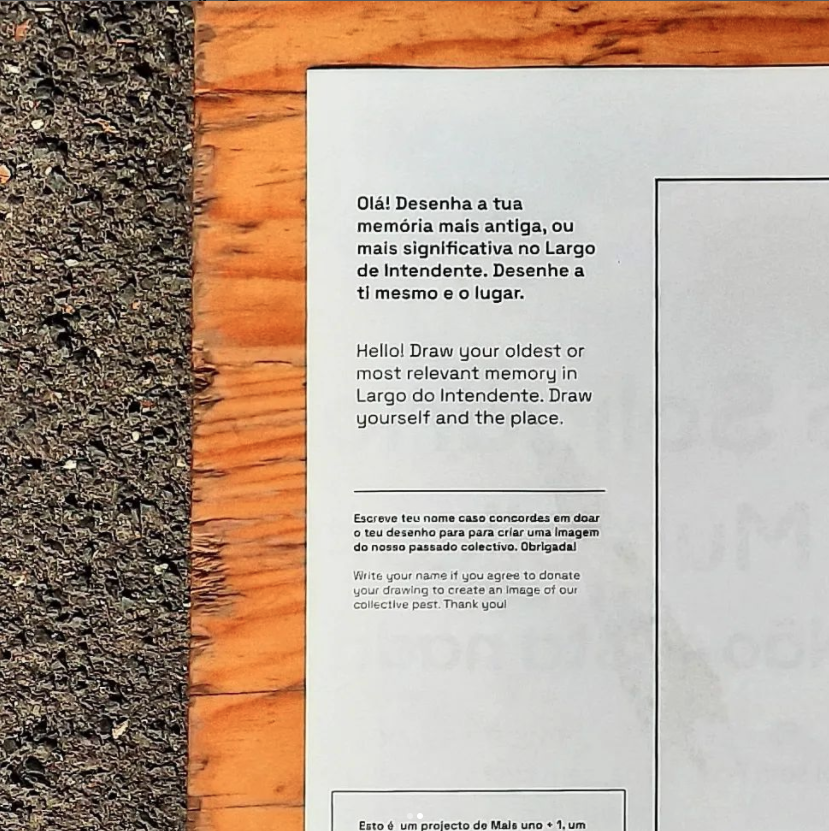







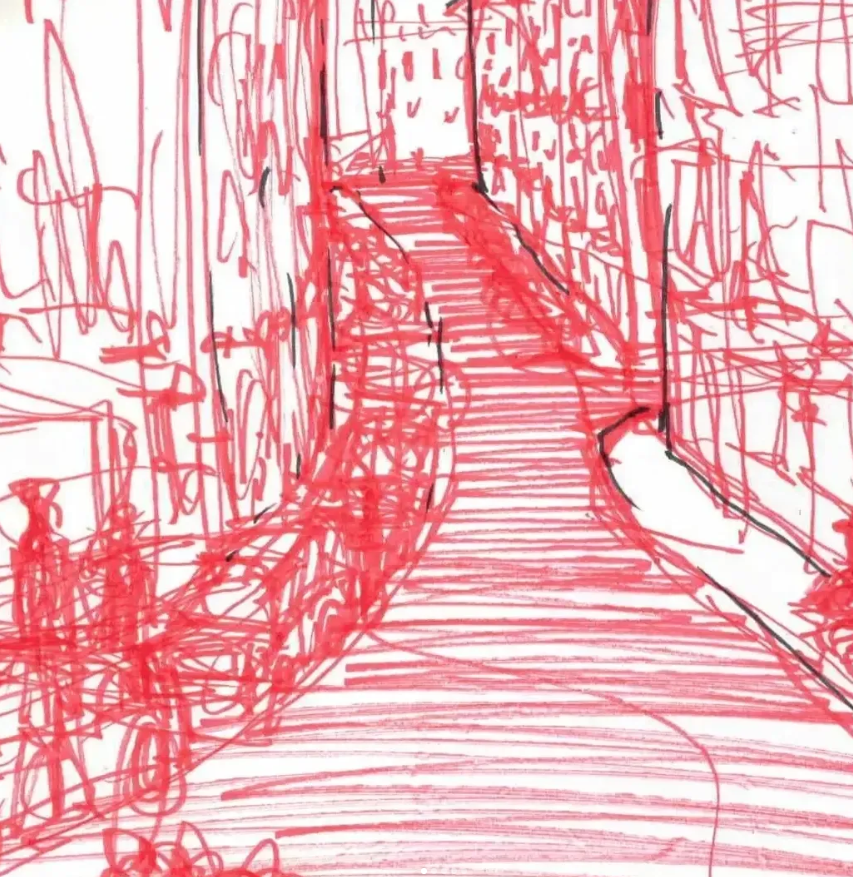
Lígia Fernandes "grandma did not tell me"
Granma did not tell me about her childhood, about what it was like to be born and live in Portugal.
Granma did not tell me that she saves her first love’s picture in an album, but does not show it to anyone.
Granma did not tell me she escaped from war with the money she could hide inside her vagina.
Granma did not tell me about the day she stopped playing the piano.
Granma did not tell me anything about how grandpa went away and left her with my mom.
Granma did not tell me about the prostitution of cabaret and magazine artists.
Granma did not tell me about the black victims from the ex-Colonies’ independency.
Granma did not tell me that rich girls could not go to school.
Granma did not tell me about her trip through the african continent.
Granma did not tell me about her childhood job.
Granma did not tell me about her career as a singer and radio artist.
Granma did not tell me about grandpa’s lovers.
Granma did not tell me about great–great-grandpa, who was from São Tomé e Príncipe and could have been a slave trafficker.
Granma did not tell me about her impossible passion for a man of another social class.
Granma did not tell me about great-grandpa, who was a jazz musician, and who she only met while he was asleep.
Granma did not tell me why she sent mom to boarding school.
Granma did not tell me about the 25th of April.
Granma did not tell me about her childhood at the Tivoli theatre.
Granma did not tell me about this Lisbon, which is made of so many layers.
Granma did not tell me that I was the first woman of the family to be born in Freedom.
That I discovered, after I listened to her.
Text: Lígia Fernandes, based in true testimonies collected with the users of the N. Sra. dos Anjos day center between May and September 2020.
Granma did not tell me that she saves her first love’s picture in an album, but does not show it to anyone.
Granma did not tell me she escaped from war with the money she could hide inside her vagina.
Granma did not tell me about the day she stopped playing the piano.
Granma did not tell me anything about how grandpa went away and left her with my mom.
Granma did not tell me about the prostitution of cabaret and magazine artists.
Granma did not tell me about the black victims from the ex-Colonies’ independency.
Granma did not tell me that rich girls could not go to school.
Granma did not tell me about her trip through the african continent.
Granma did not tell me about her childhood job.
Granma did not tell me about her career as a singer and radio artist.
Granma did not tell me about grandpa’s lovers.
Granma did not tell me about great–great-grandpa, who was from São Tomé e Príncipe and could have been a slave trafficker.
Granma did not tell me about her impossible passion for a man of another social class.
Granma did not tell me about great-grandpa, who was a jazz musician, and who she only met while he was asleep.
Granma did not tell me why she sent mom to boarding school.
Granma did not tell me about the 25th of April.
Granma did not tell me about her childhood at the Tivoli theatre.
Granma did not tell me about this Lisbon, which is made of so many layers.
Granma did not tell me that I was the first woman of the family to be born in Freedom.
That I discovered, after I listened to her.
Text: Lígia Fernandes, based in true testimonies collected with the users of the N. Sra. dos Anjos day center between May and September 2020.
Since March 2020 with the triggering of the COVID-19 pandemic, most community spaces in Lisbon closed down — between them, the Nossa Senhora dos Anjos day center. For many of their users, the day center activities were the only moments of social interaction in their quotidian. The pandemic revealed itself especially difficult for the elder generation, which found itself confined at home in situations of extreme solitude. It was in this context that I received an urgent invitation from LARGO Residências to develop an artistic initiative with the Nossa Senhora dos Anjos day center.
The project “family portraits” was part of that initiative. It was the first one I undertook after the occurrence of the pandemic. There were several weeks of collecting images and life stories from the different users. The collection consisted of visits to their houses and a conversation that ran to the rhythm of the family album’s pages being turned. Life stories with many pauses and resumptions. From this initiative, the project “grandma did not tell me” was born: a collection-in-progress from the stories and life’s images of the oldest generation of women in different parts of the world. I re-construct, through drawing, a feminine narrative of the story that remained unwritten. In January 2022, I return to the images collected at the space “mais uno +1.
The project “family portraits” was part of that initiative. It was the first one I undertook after the occurrence of the pandemic. There were several weeks of collecting images and life stories from the different users. The collection consisted of visits to their houses and a conversation that ran to the rhythm of the family album’s pages being turned. Life stories with many pauses and resumptions. From this initiative, the project “grandma did not tell me” was born: a collection-in-progress from the stories and life’s images of the oldest generation of women in different parts of the world. I re-construct, through drawing, a feminine narrative of the story that remained unwritten. In January 2022, I return to the images collected at the space “mais uno +1.

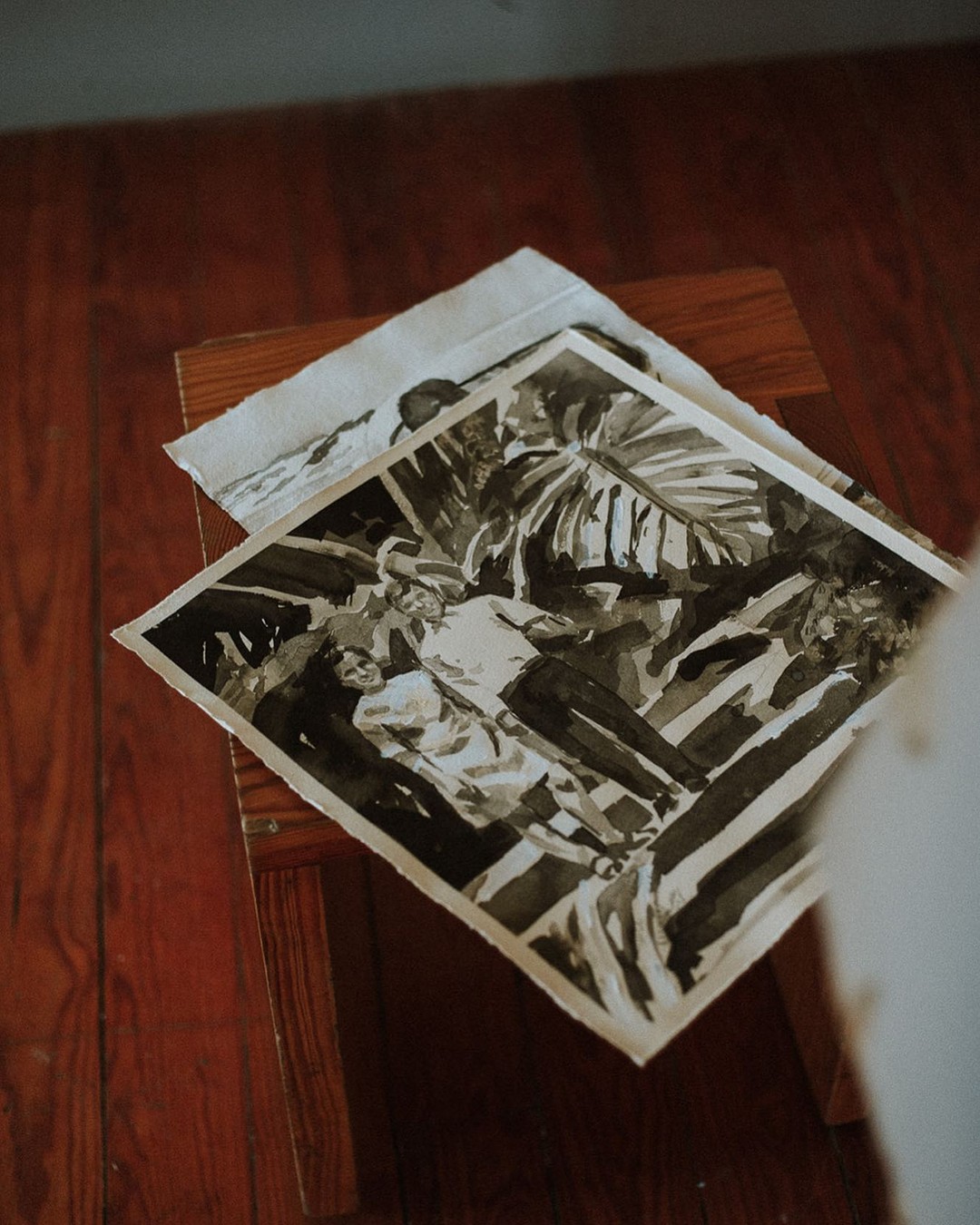








Photography: Nicole Sánchez
Nicole Sánchez
"Neighborhood Studio"
The month of February at Largo Café Estúdio and at the project-space mais uno +1 is dedicated to photography. The project "Neighborhood Studio" by Nicole Sánchez seeks to capture the essence of the Intendente community by reviving a tradition that — with the passing of time, the emergence of photomatons, compact digital cameras and smartphones — became extinct.
The neighbourhood's photography studios have represented for decades a place of celebration, reunion, rite, where people, friends and families would get together on special occasions (and not only), adorning themselves with their prettiest dress or more brilliantine in their hair than usual. At the same time, these studios also became a place of archive: in their windows were added the polished faces of the neighbourhood, the passport photographs, the family portraits, or the images of the baby that had just been born. Every face that built that neighborhood, that community, that extended family was mirrored.
By reconstructing this “neighborhood studio” in the project-space mais uno +1, Nicole seeks to comfort the nostalgia for a meeting place consumed by time. For a month, neighbors will again be able to put on their best tie, wear their brightest nail polish, and come together for a photo. A photo that they can take home, frame, and put on the living room wall, to remind them that, after all, they belong to something more united. As a showcase, Largo Café Estúdio presents the results of the "Neighborhood Studio" that was set up in December 2021.












Fotografia: Nicole Sánchez


Photography: Inês Gil Silva (Sounds Like a Plan Photography)
mais uno +1
"Sundays of Creation"
In the midst of the military dictatorship in Brazil — and three years before its end in Portugal — the “Sundays of Creation” took place in 1971 at the Museum of Modern Art in Rio de Janeiro. By the initiative of Frederico Morais, and through the action and imagination of the hundreds of people who gathered, every Sunday there was an act of creation, dialogue and collective celebration. This action was assumed as a true political rupture at a time when freedom was not a possibility.
In March 2022, at Largo do Intendente, in Lisbon, we remembered the “Sundays of Creation” at Largo Café Estúdio. As a part of the LARGO Residências Cultural Cooperative, many Sundays dedicated to culture and art also happened here. Over the last 10 years, the Café has been pulsating in this square as a meeting and dialogue center in the Intendente Neighborhood.
During these latest actions by Largo Café Estúdio in Largo do Intendente, we invited its community to create with us. Each Sunday of this month was dedicated to a form of expression — words, images, lines, movements — in honor of all the people, artists and exchanges that have passed through here, and the different types of language used. Thus, we invited everybody to goodbye to the Café Estúdio, to thank it and tell it that it belongs to us, that it lives within us and it will continue to last in time.
Simultaneously, in the adjacent mais uno +1, we accumulated the affections and expressions exchanged throughout these Sundays in a fanzine project. The fanzine became an open studio, an artistic project, a participatory process and an archival exhibition, where the words spoken, the images captured, the lines drawn and the movements performed were united and immortalized each of its pages.
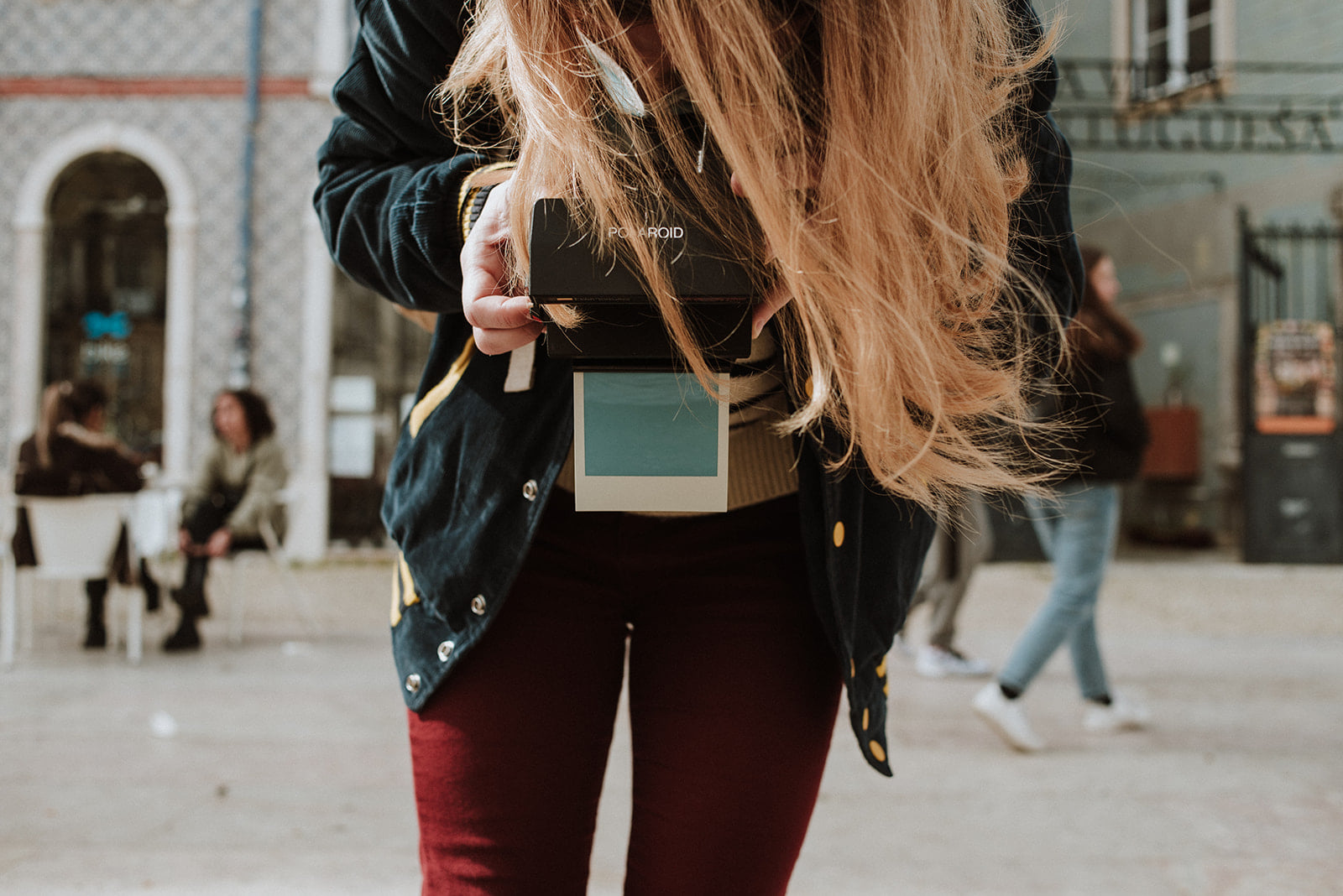
















Photography: Nicole Sánchez, LARGO Residências, and Zé Luís C.


